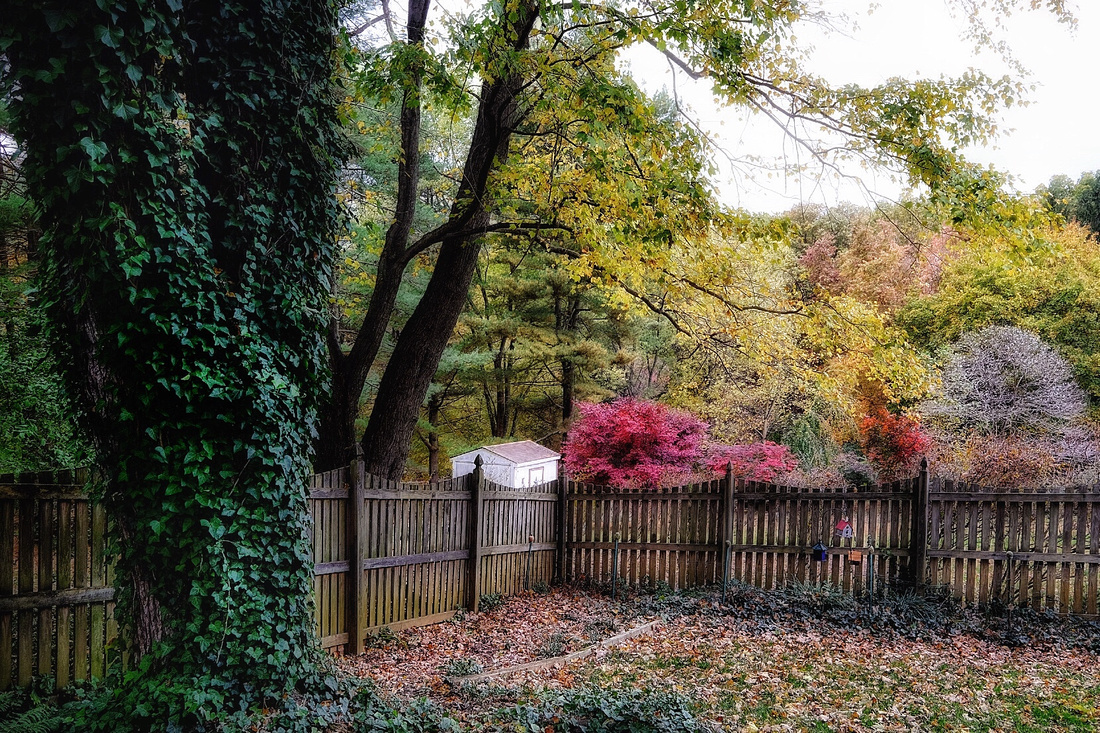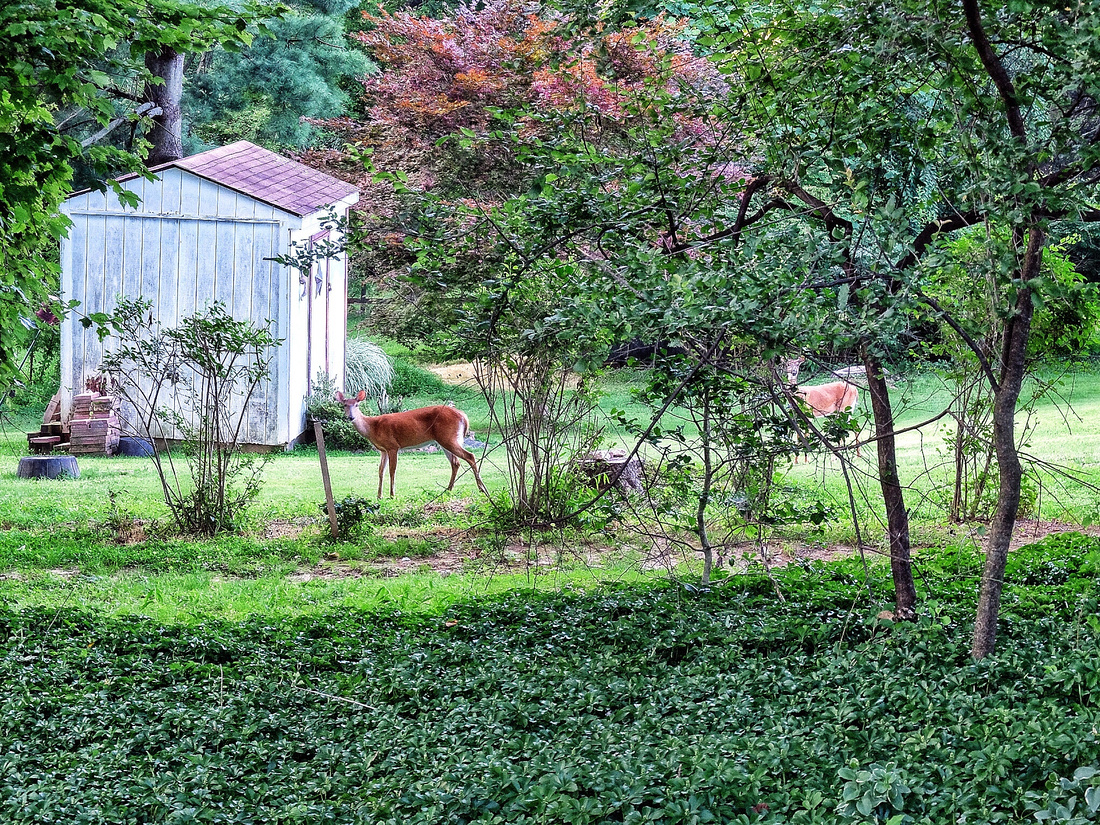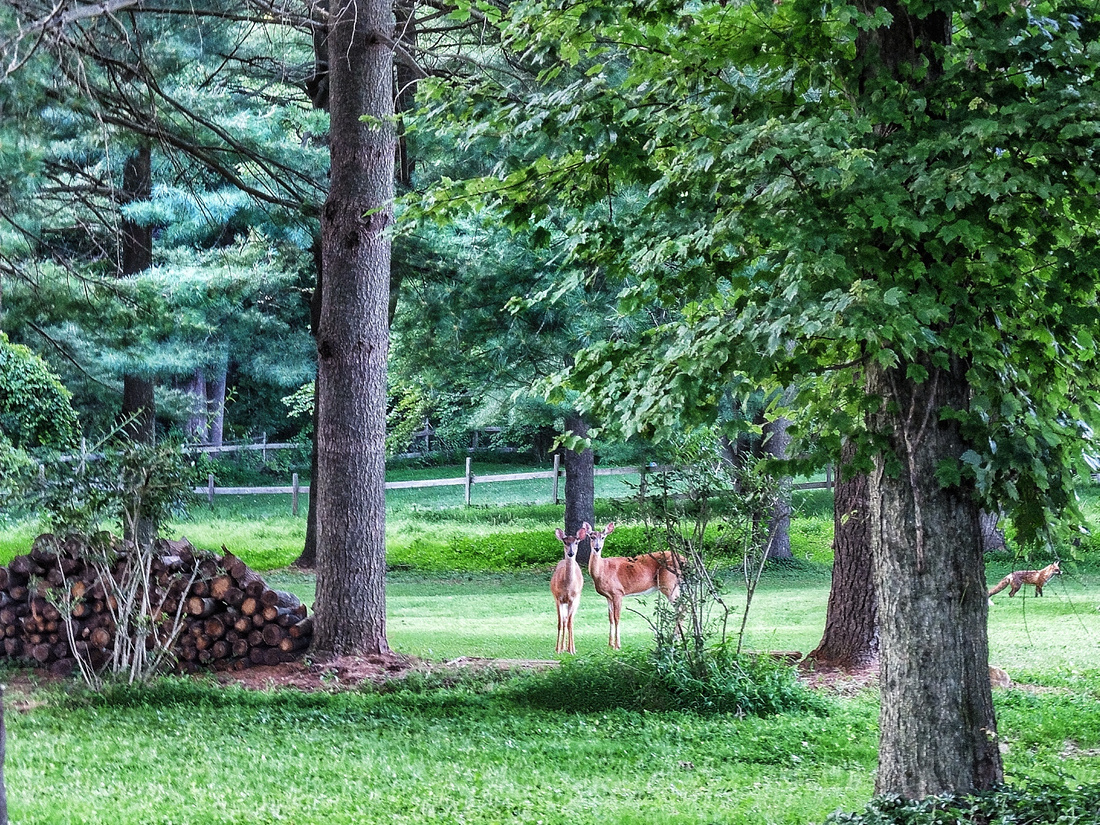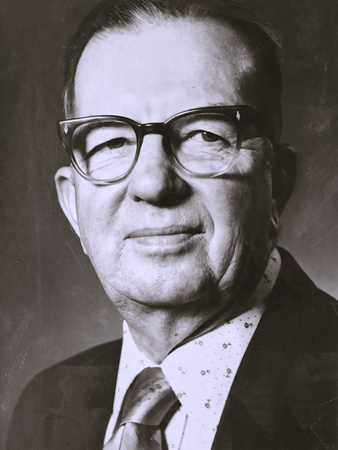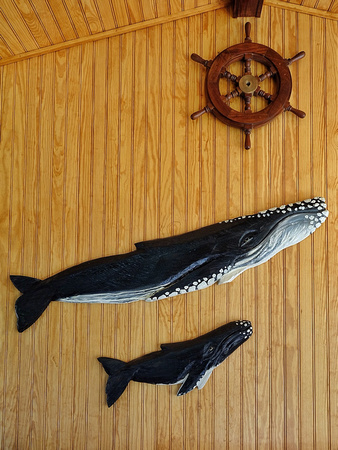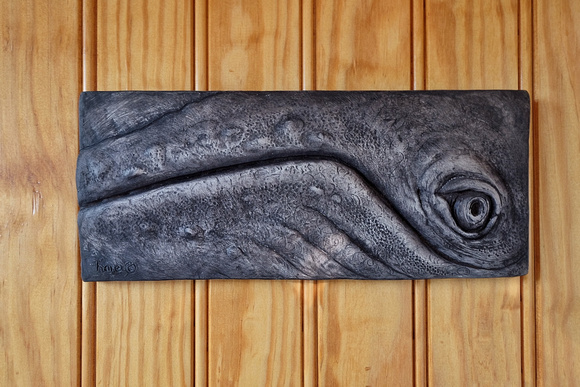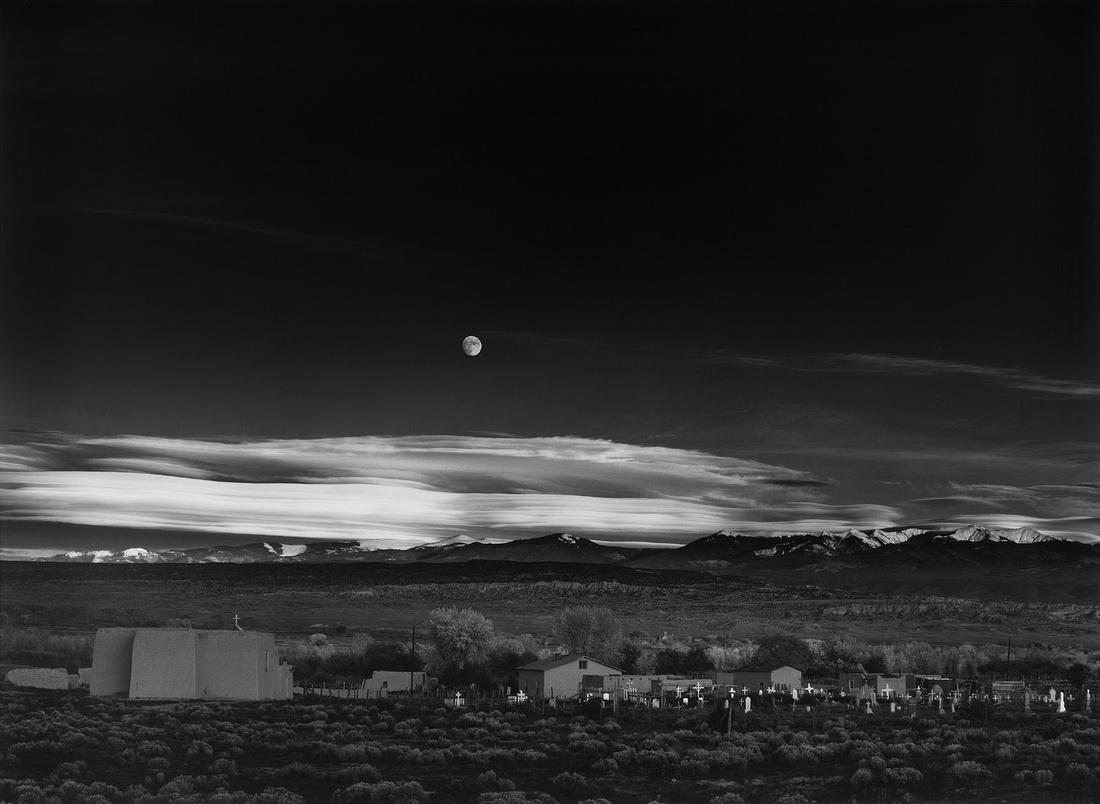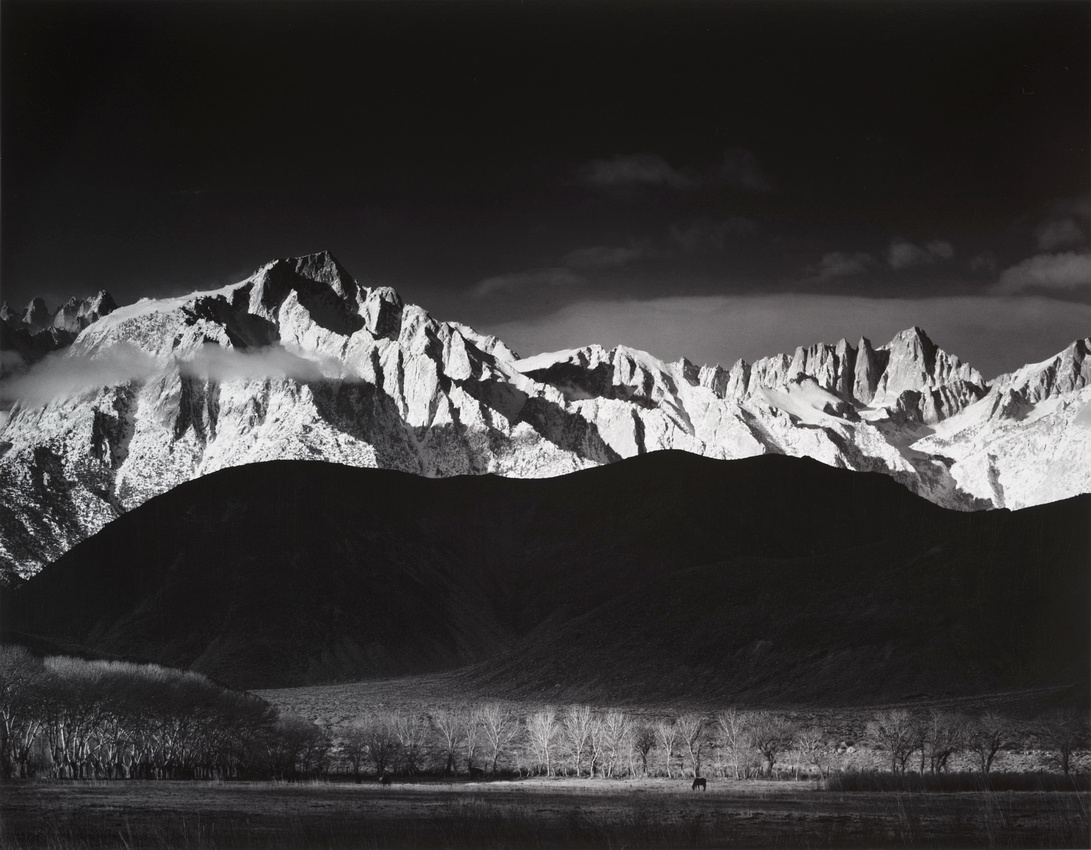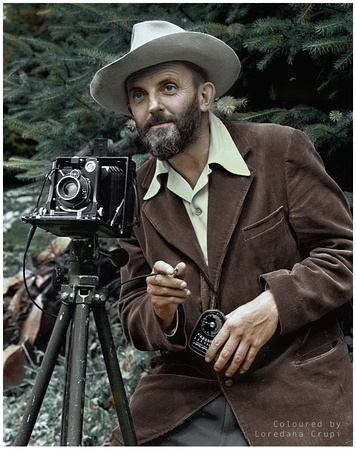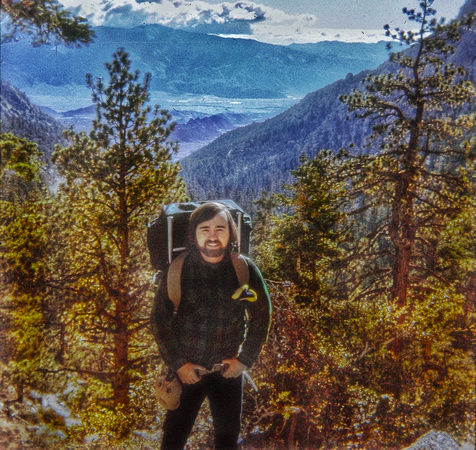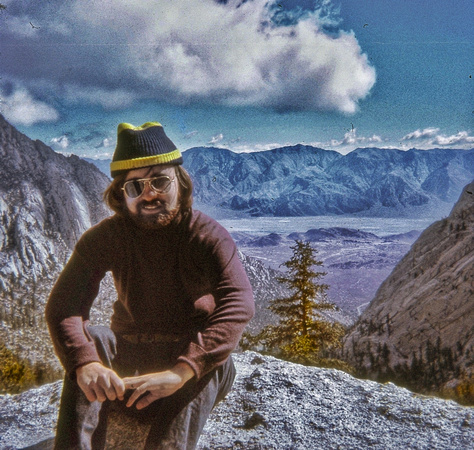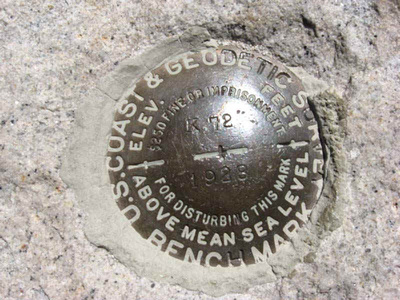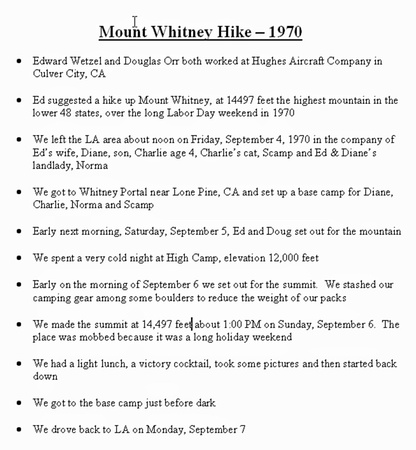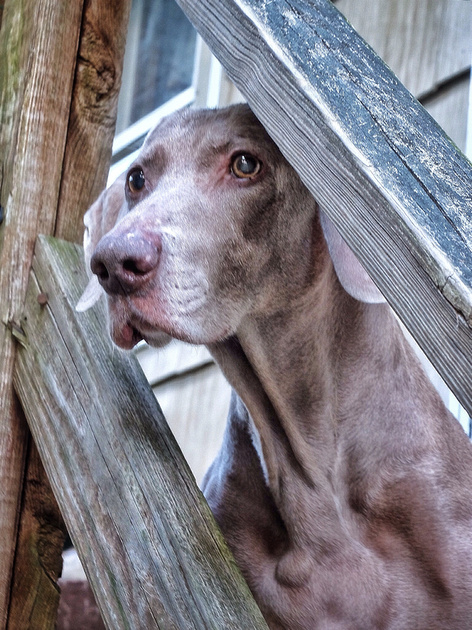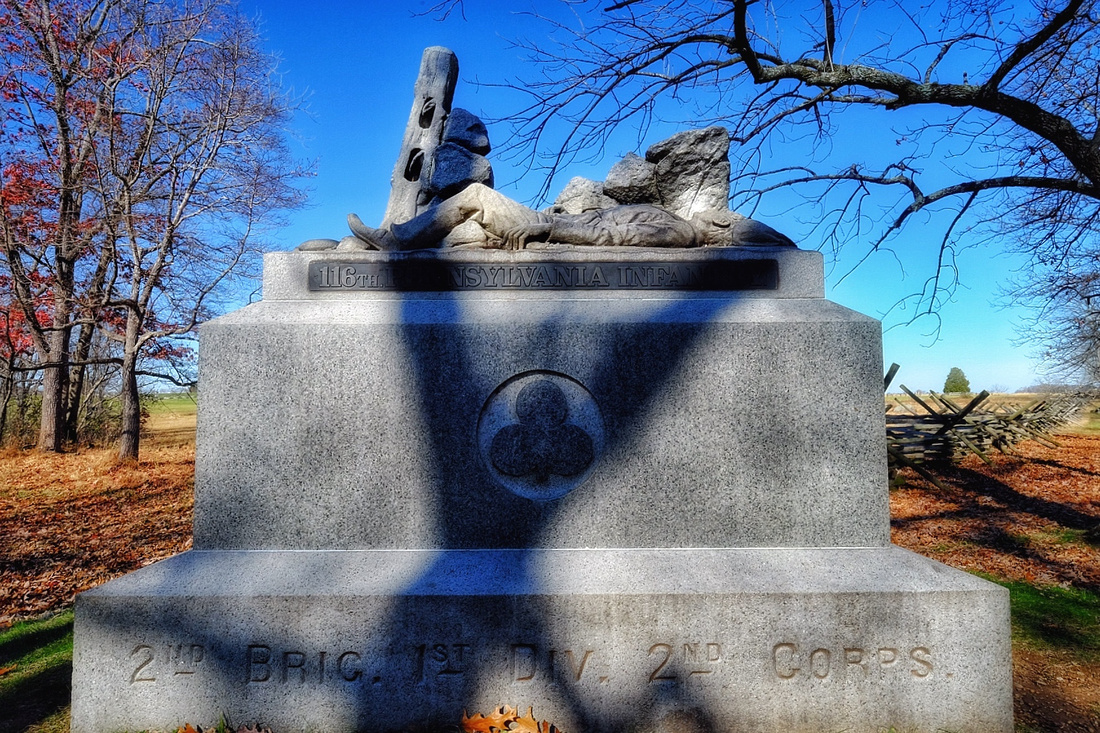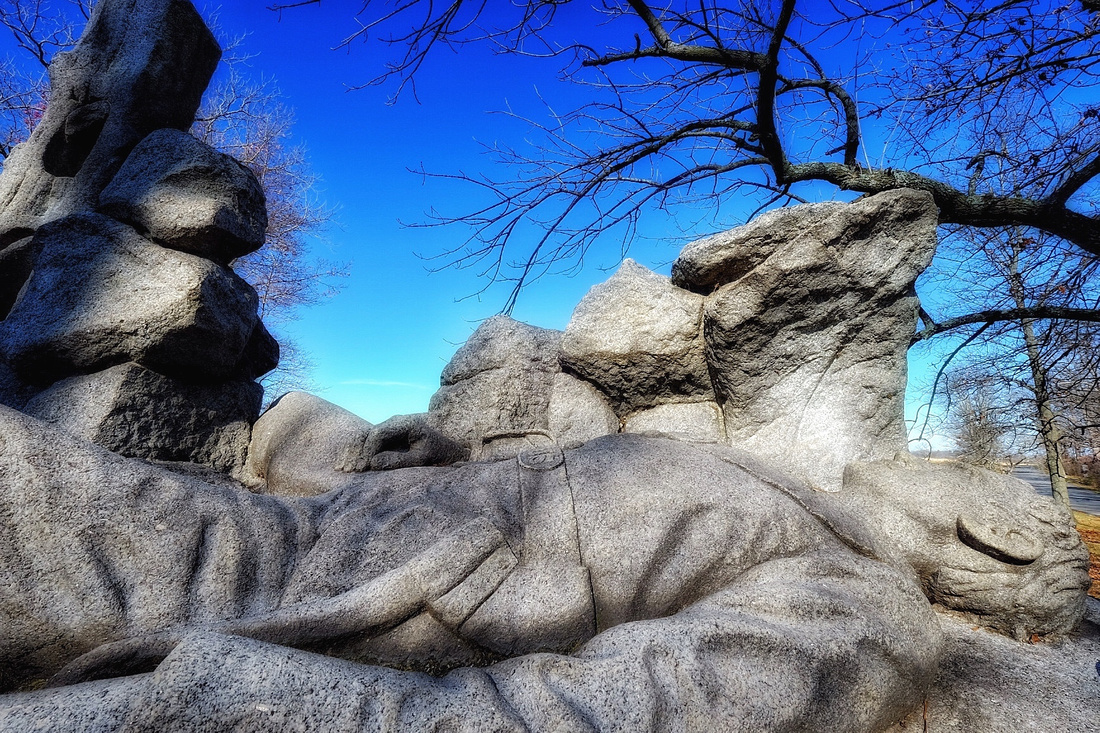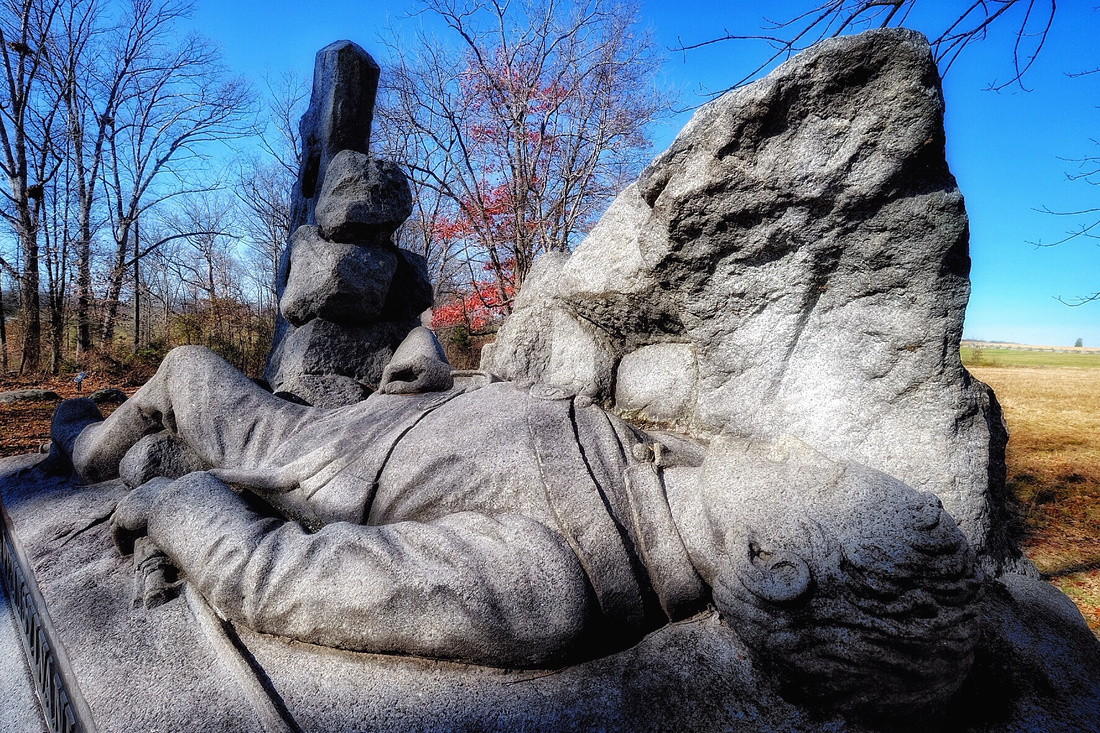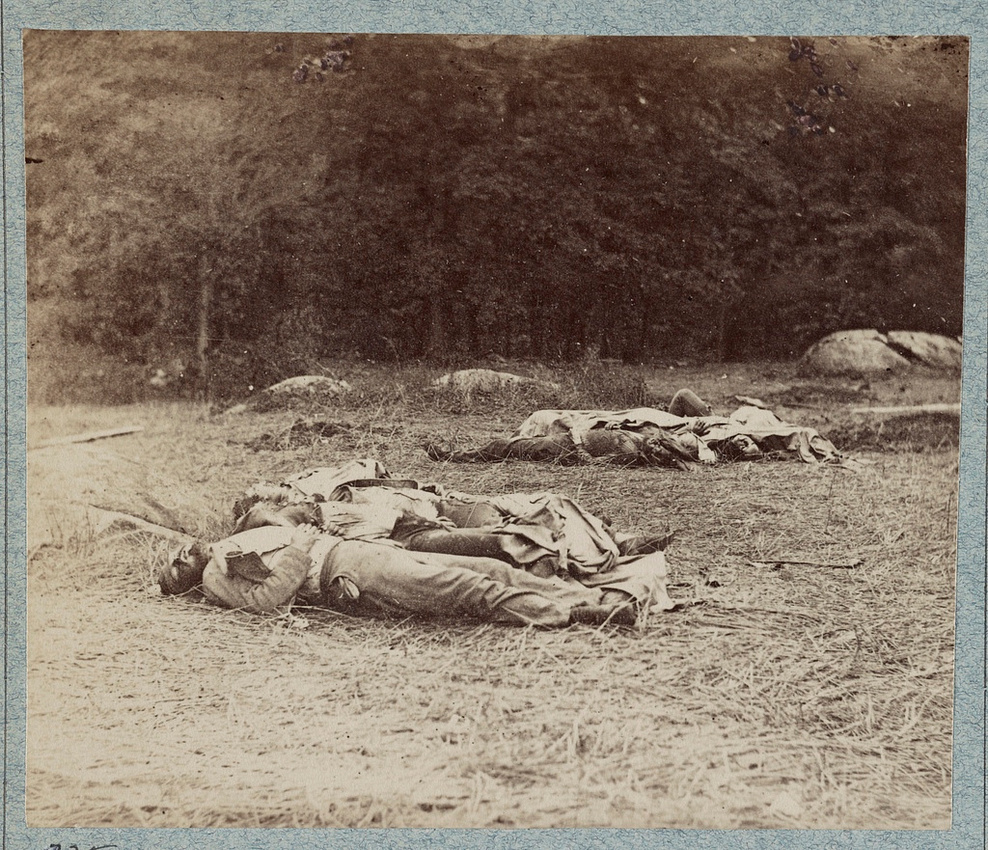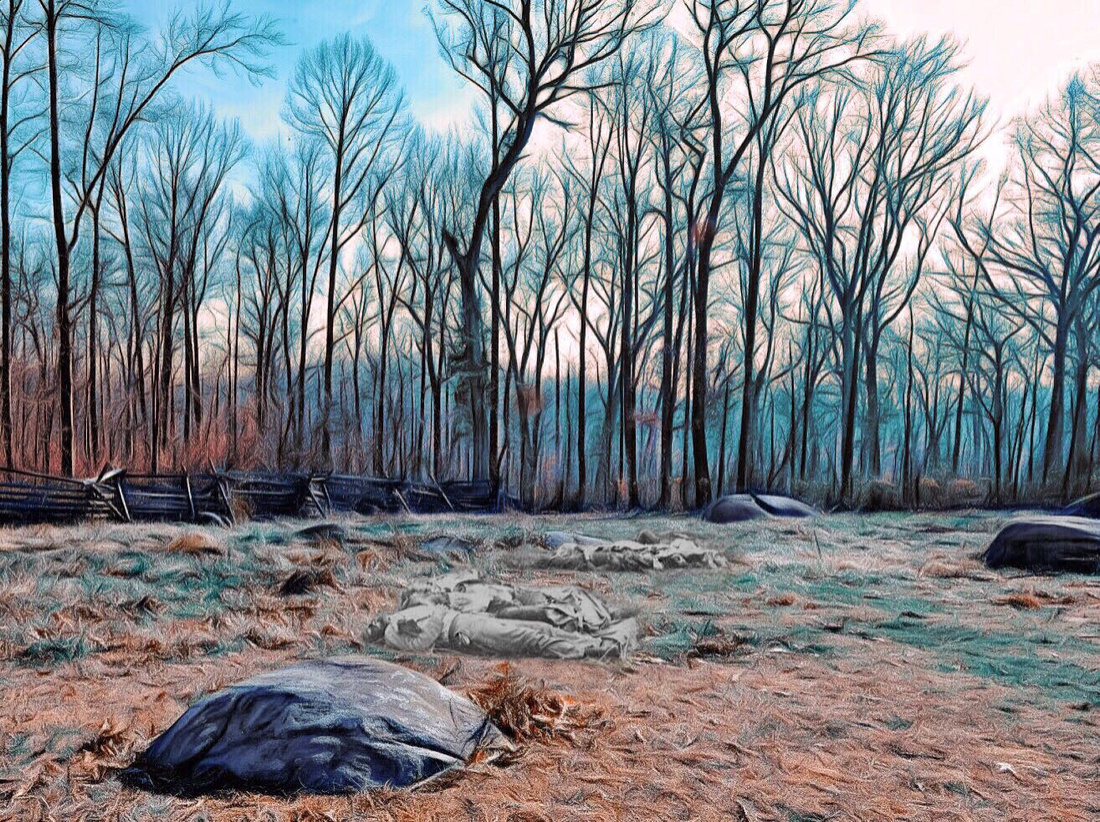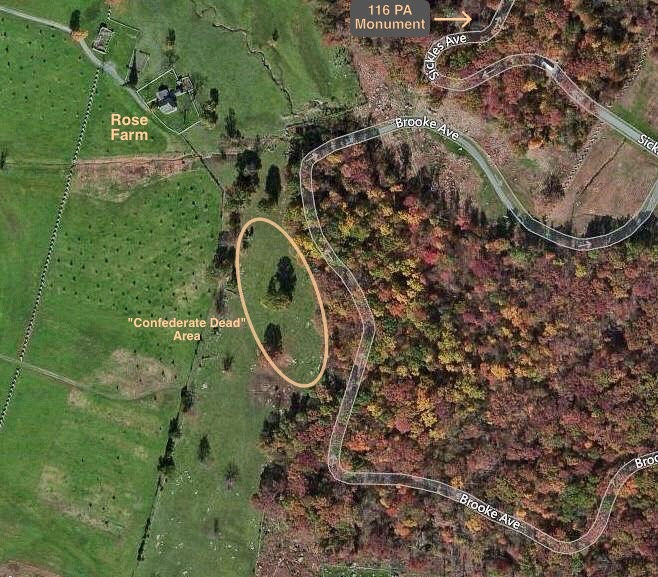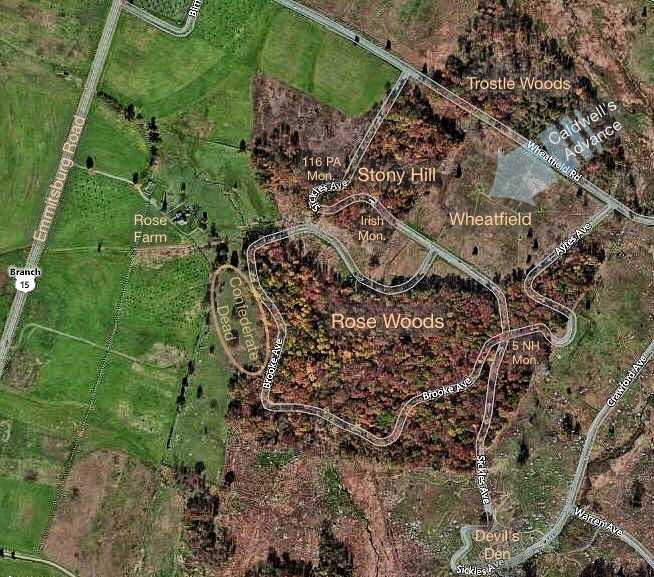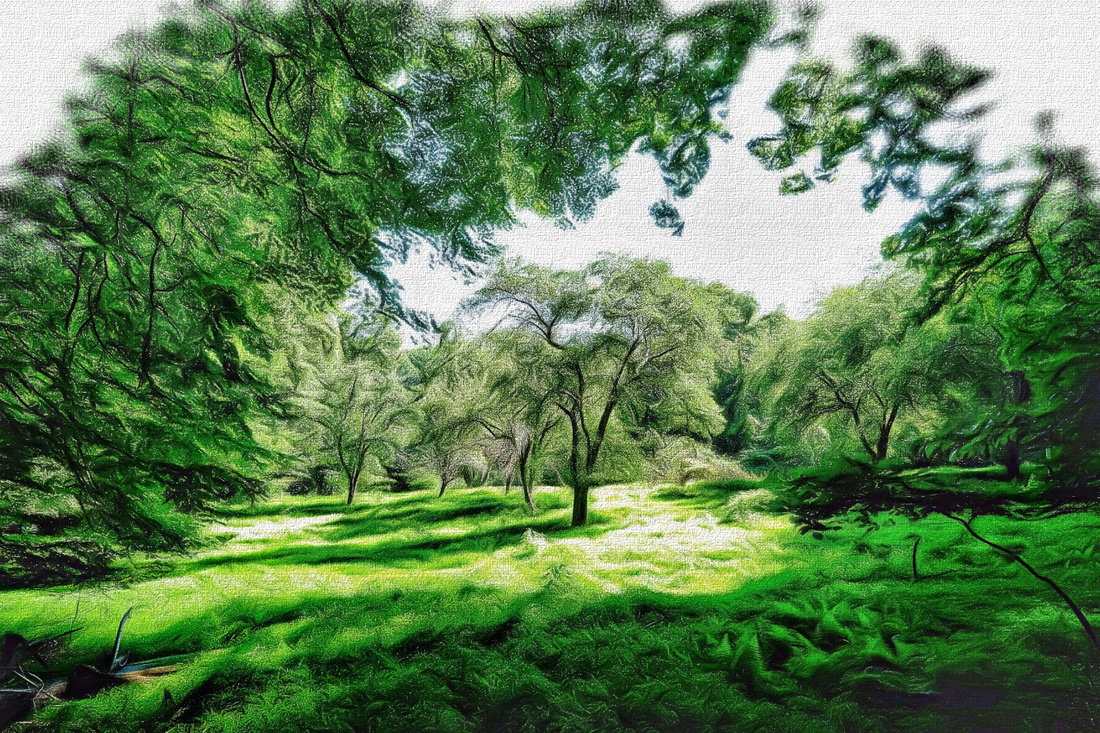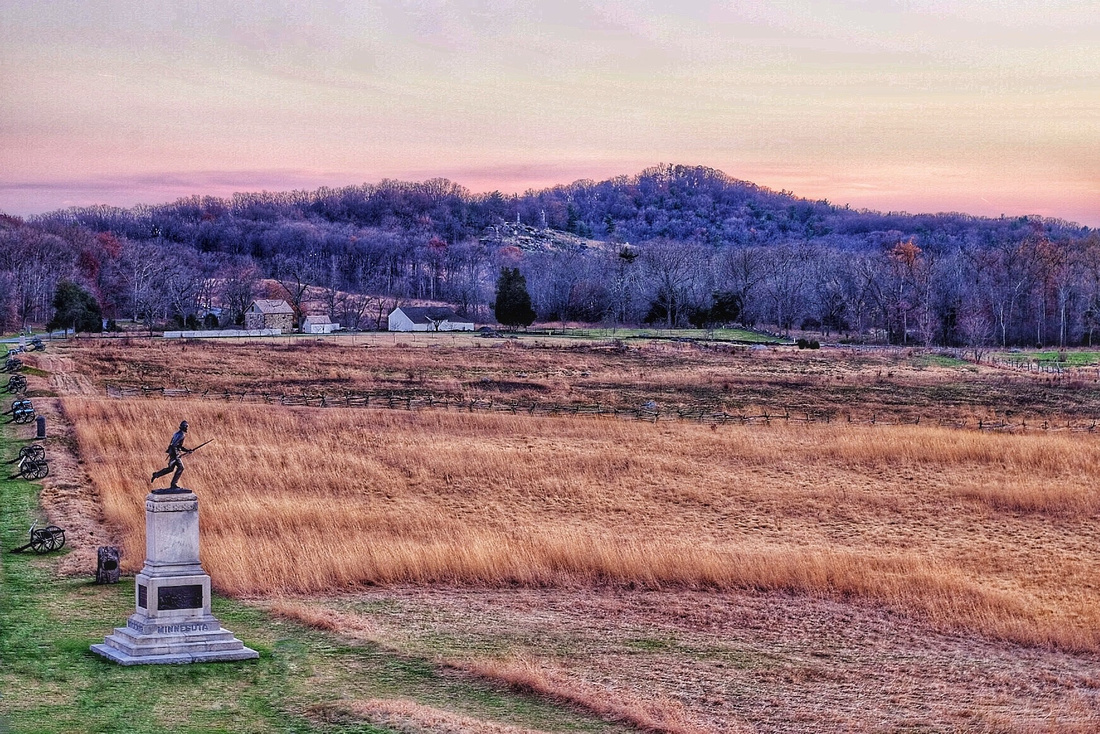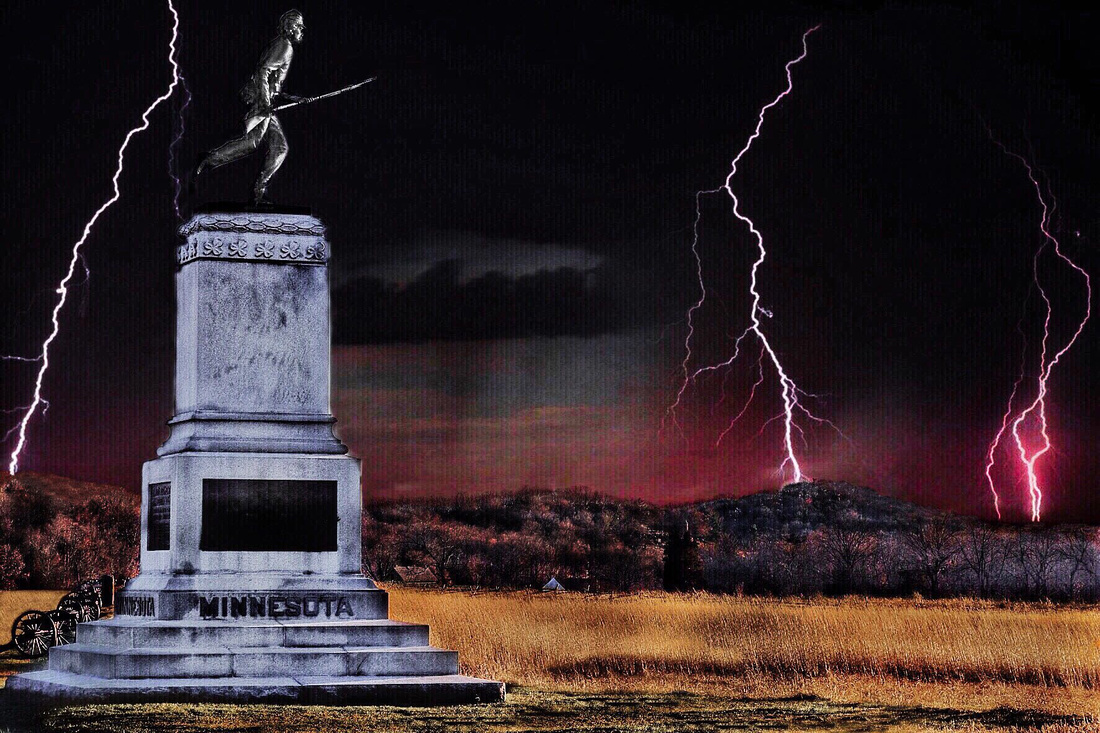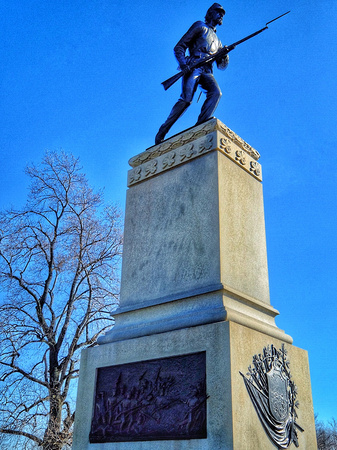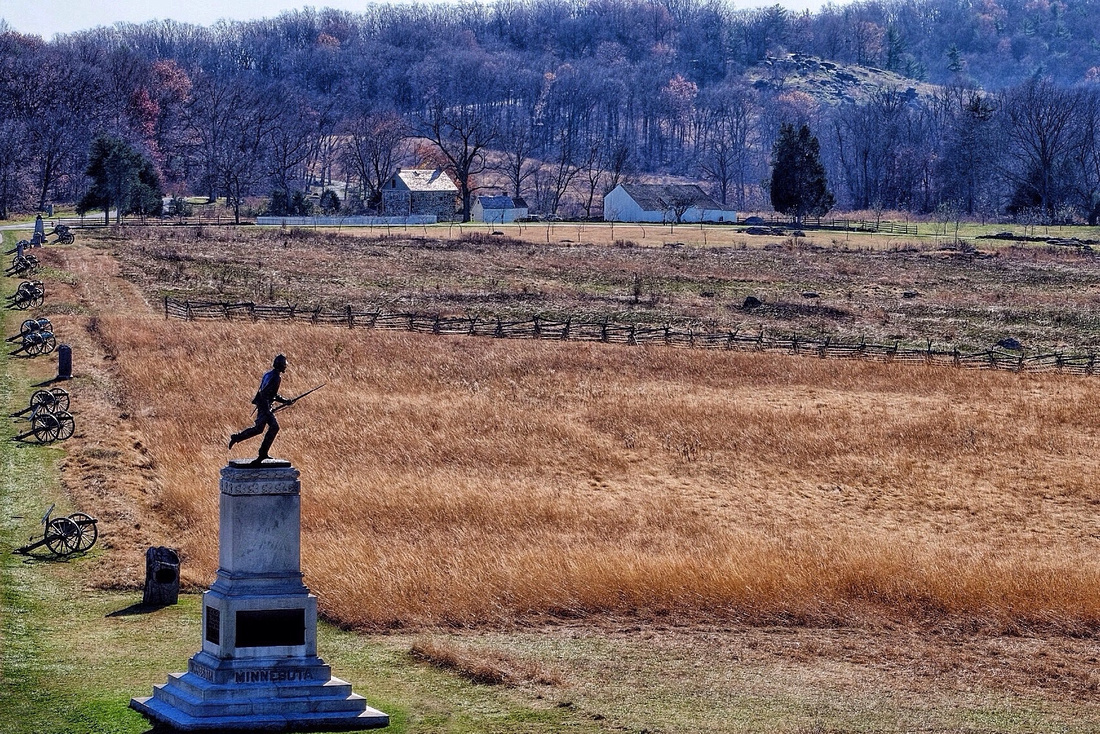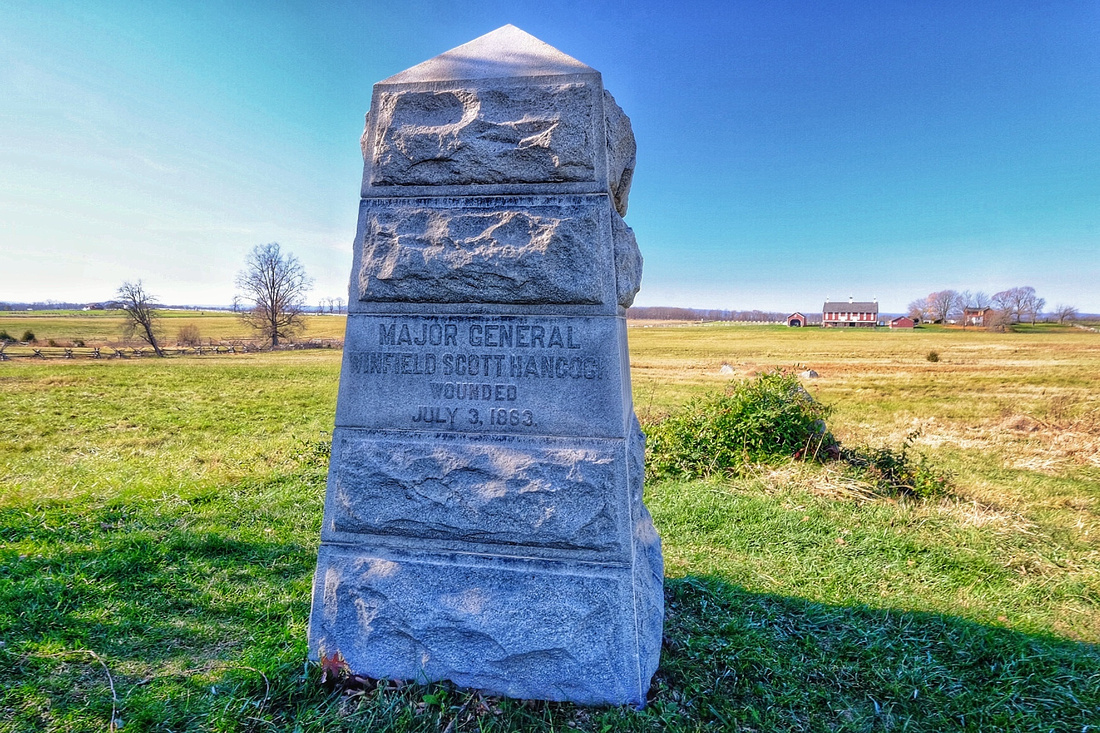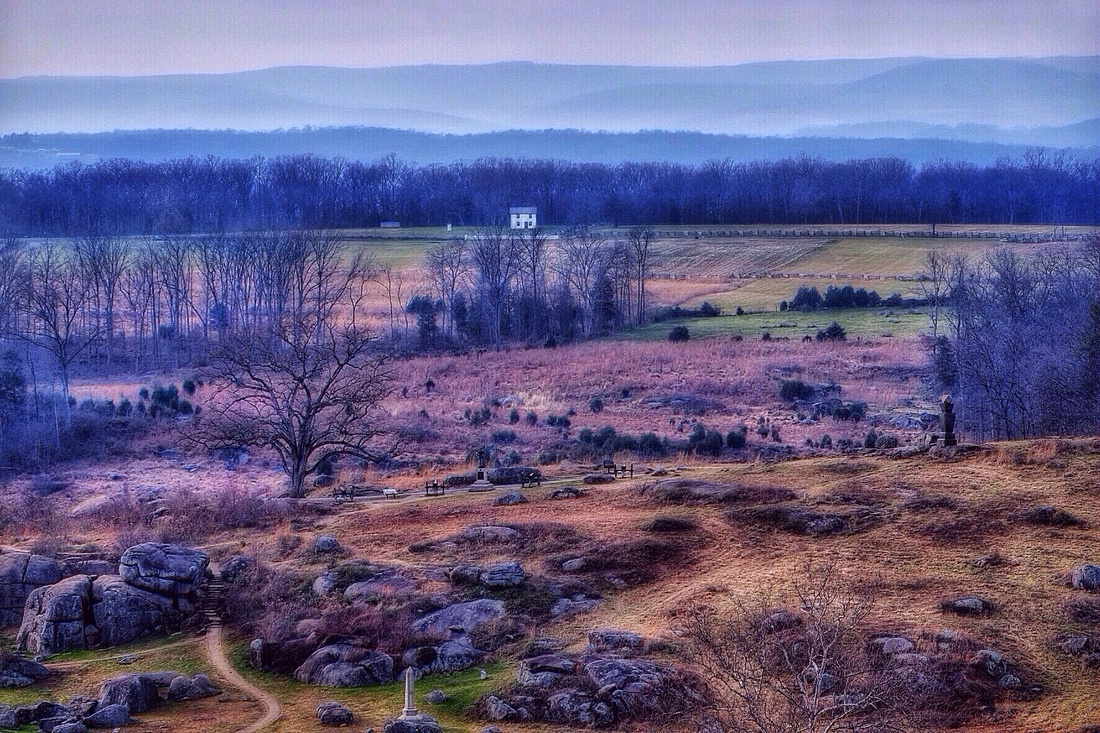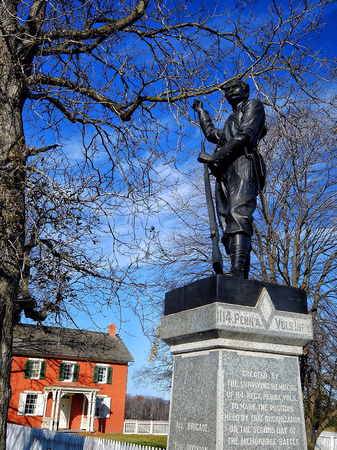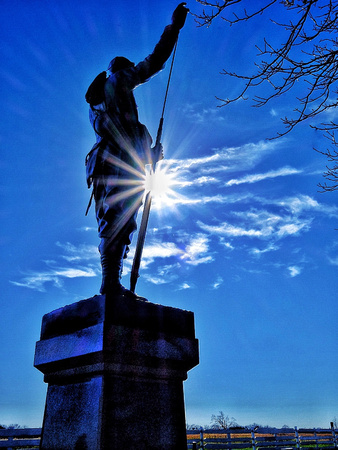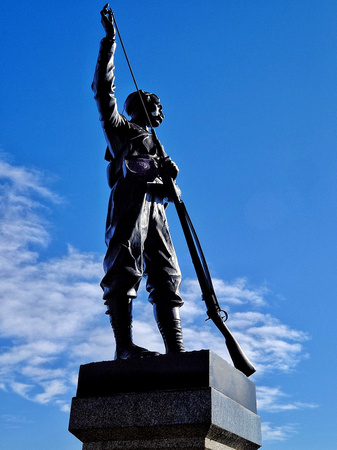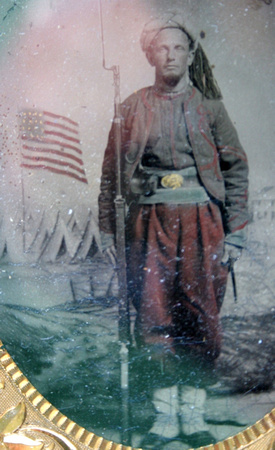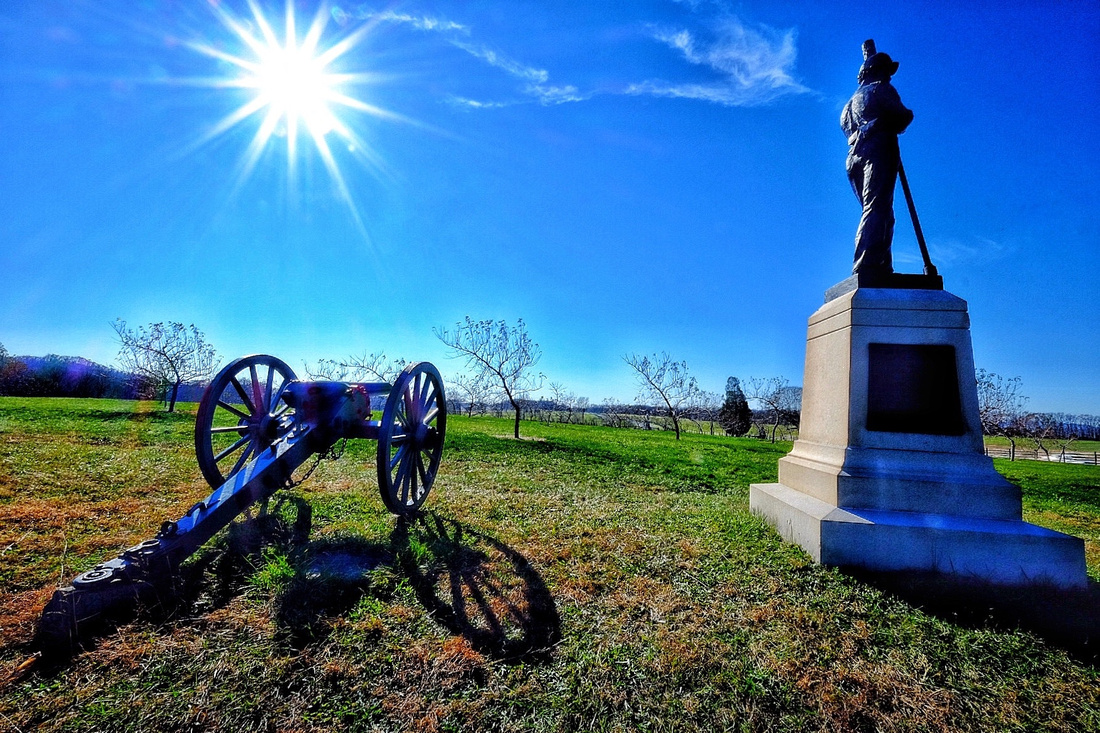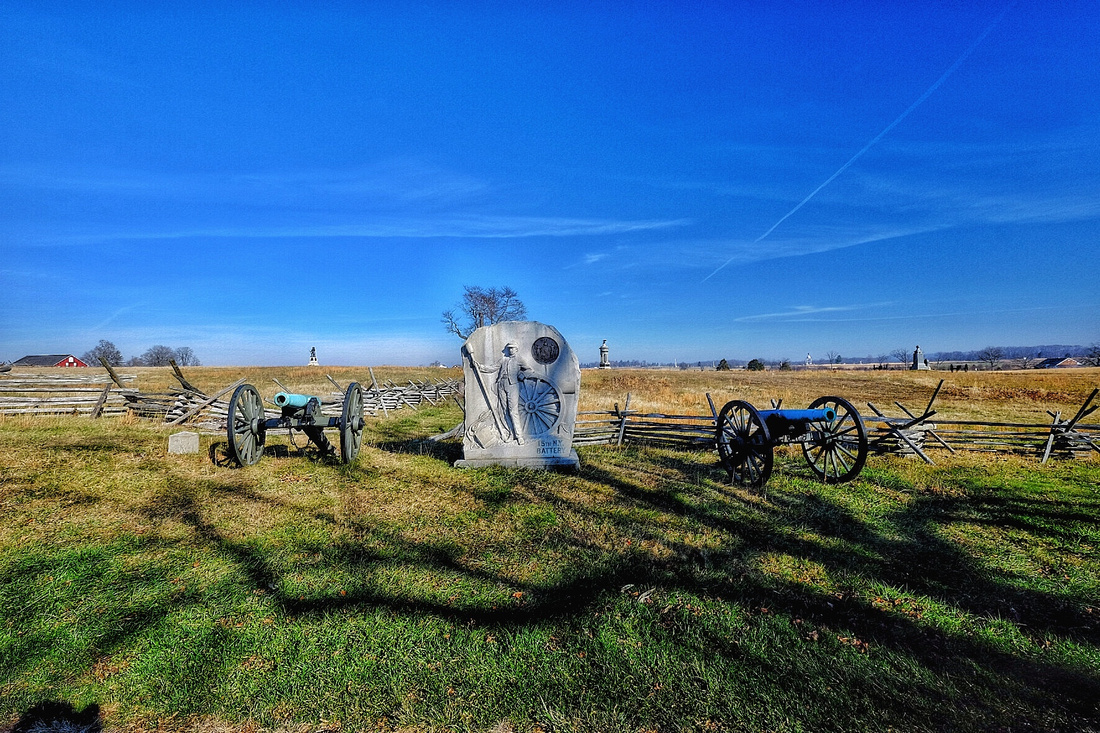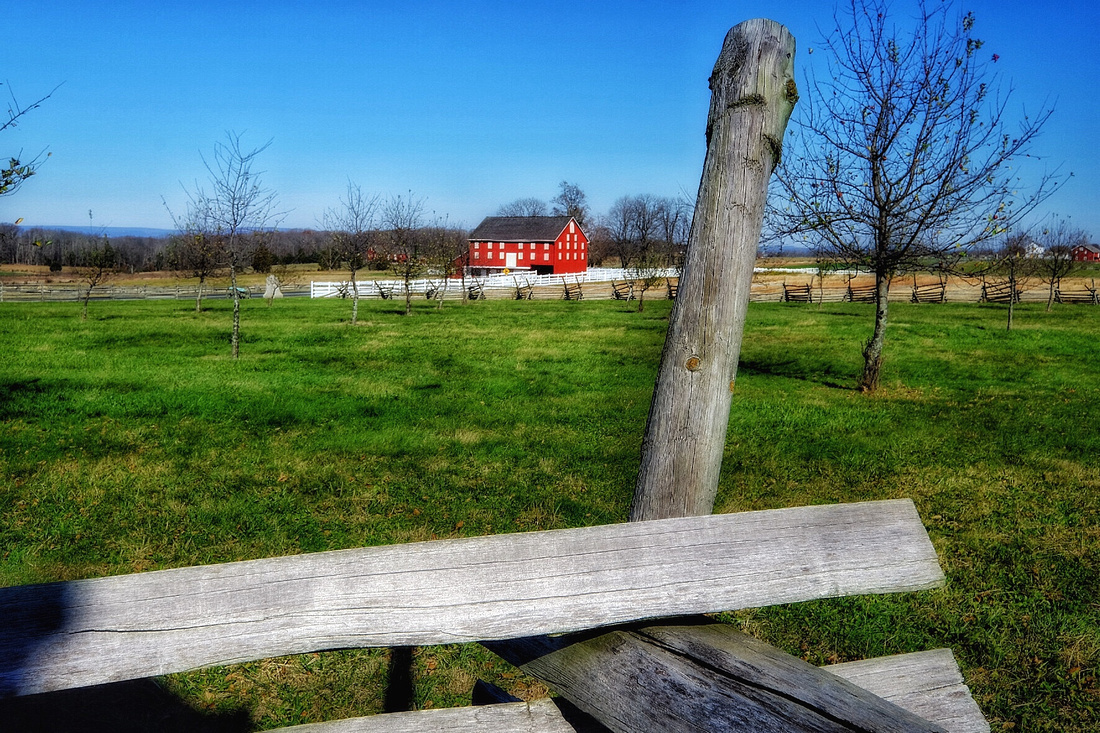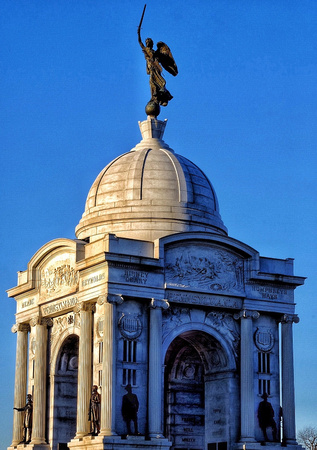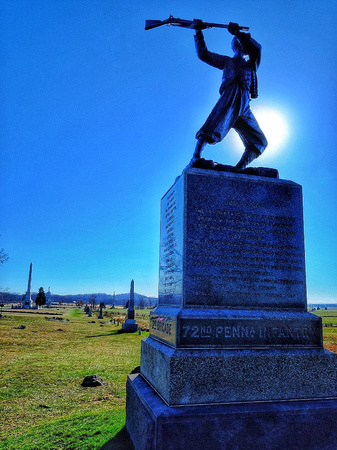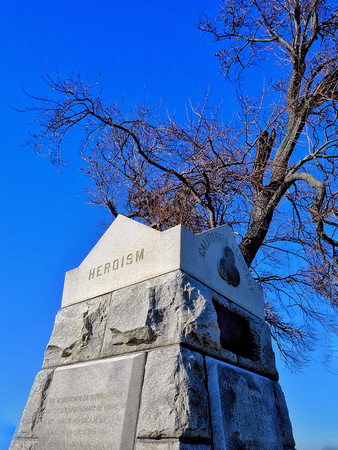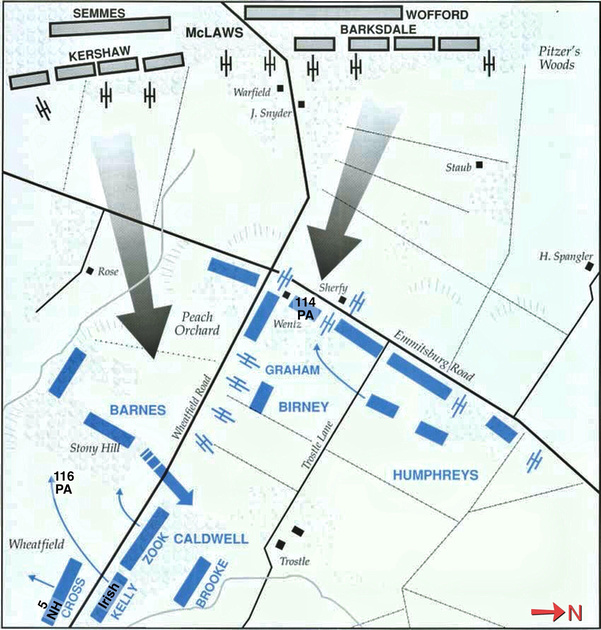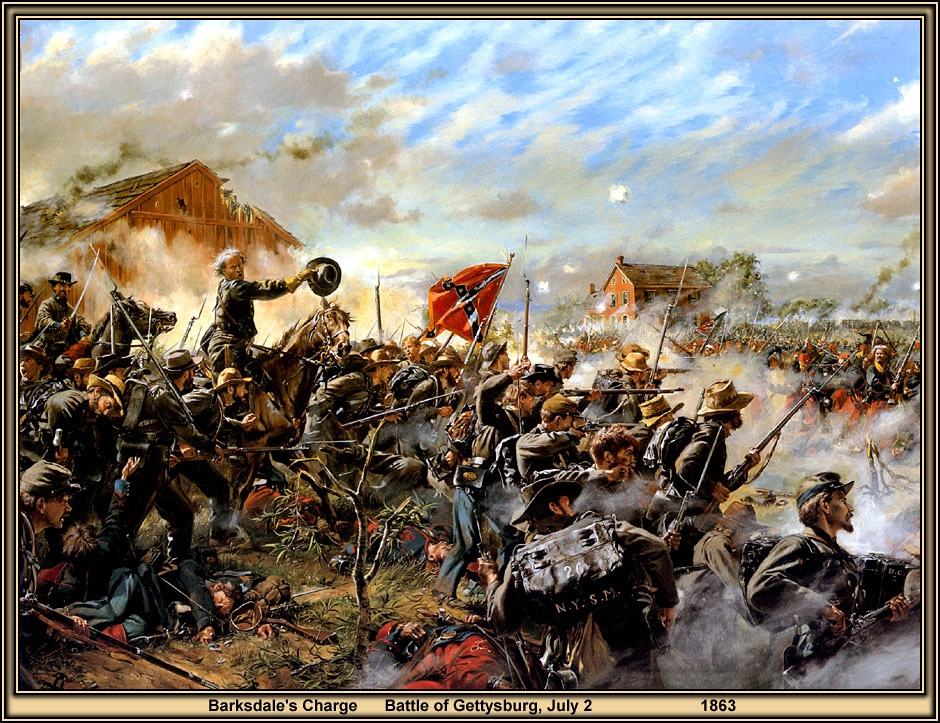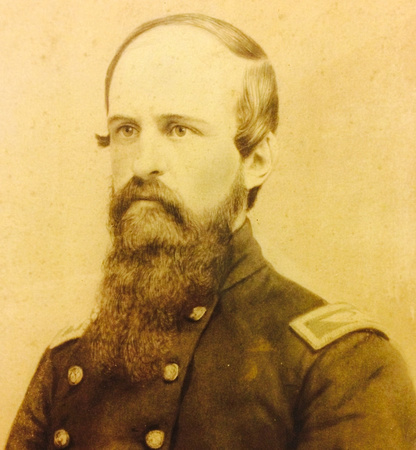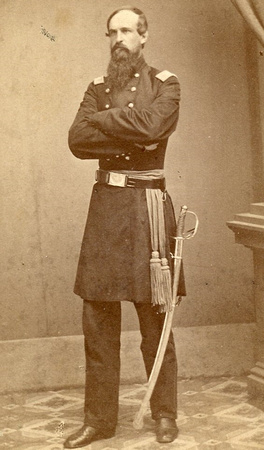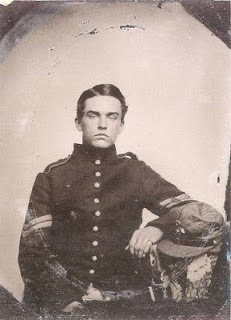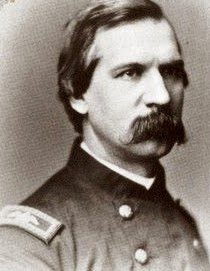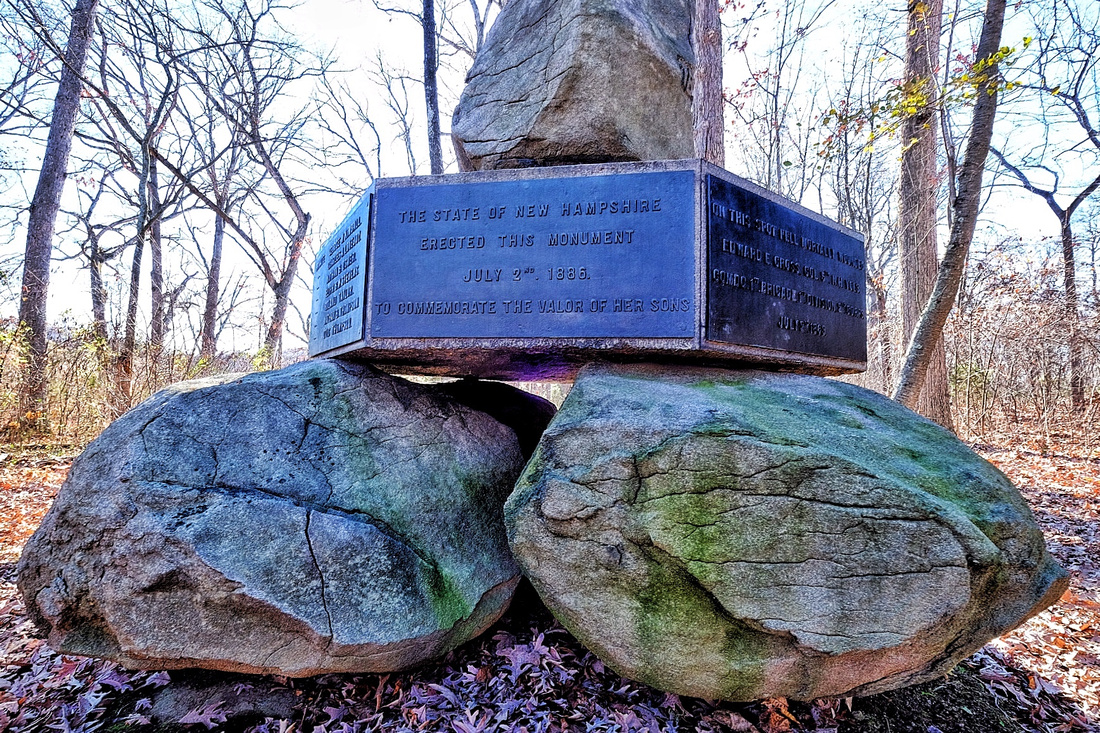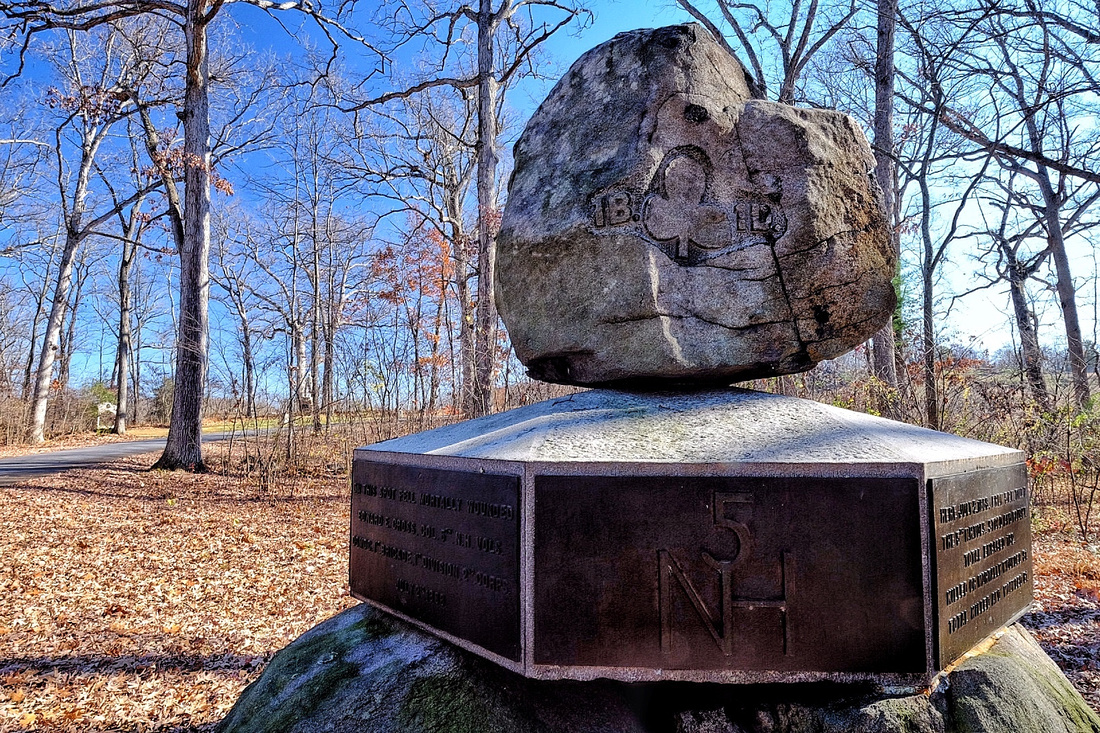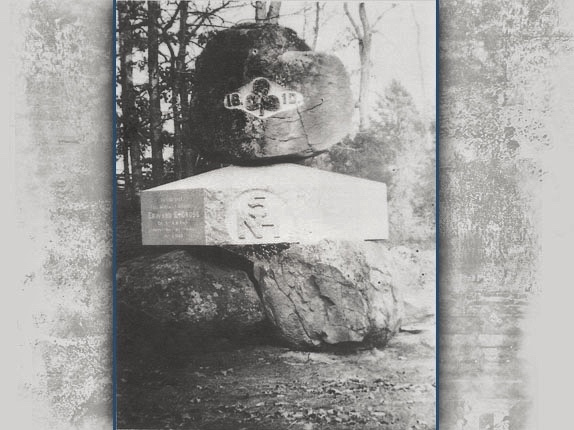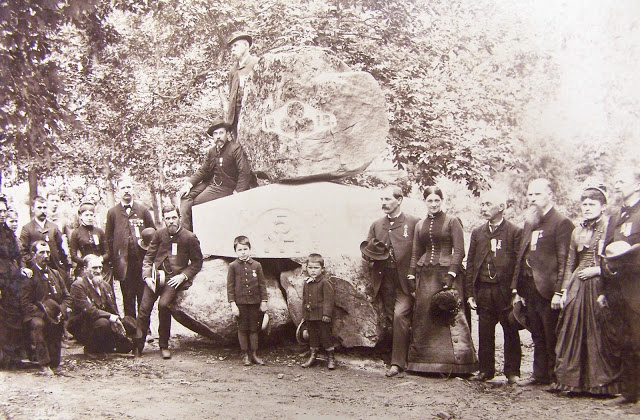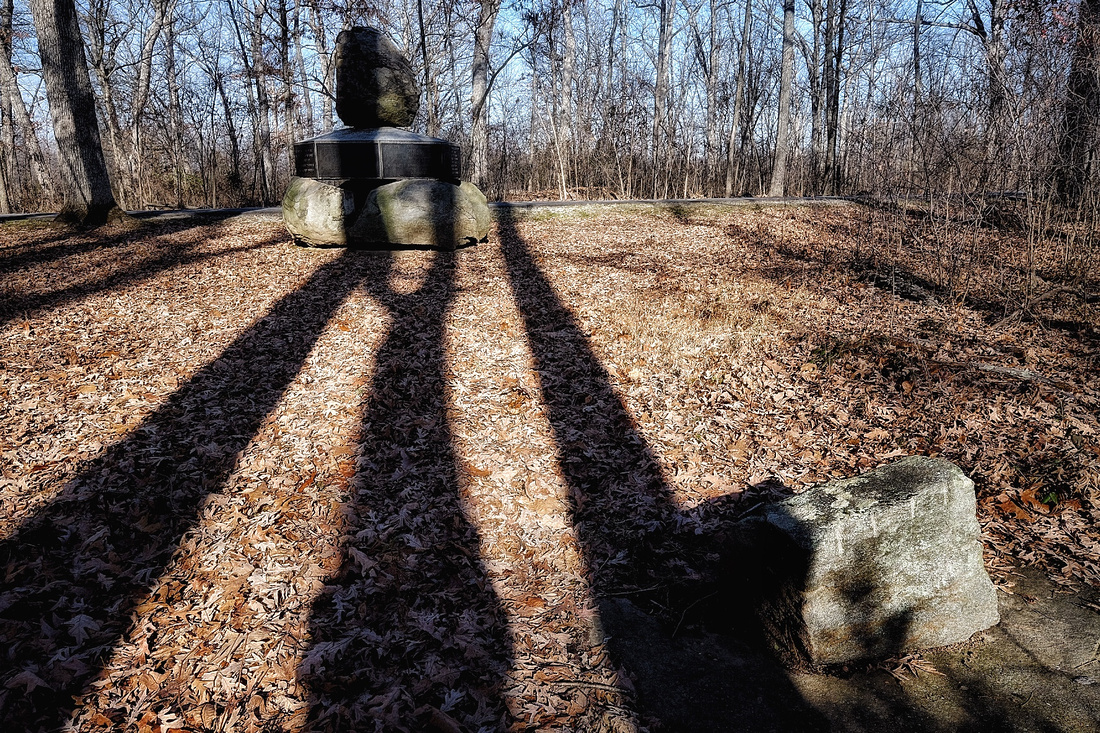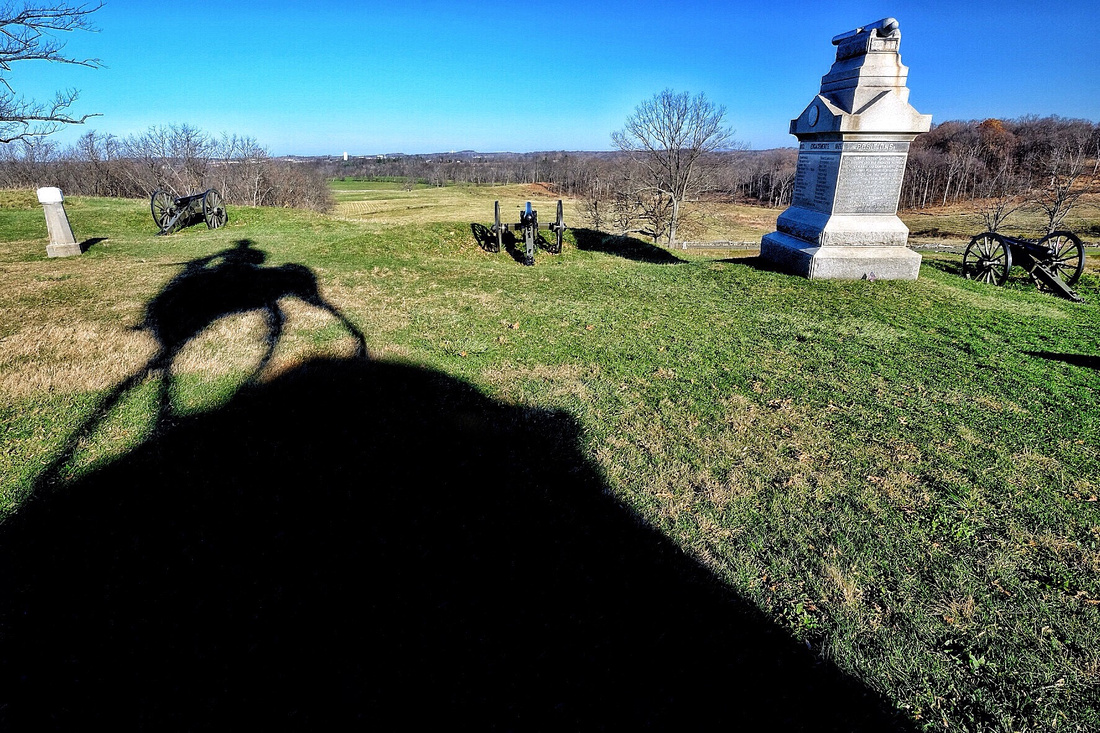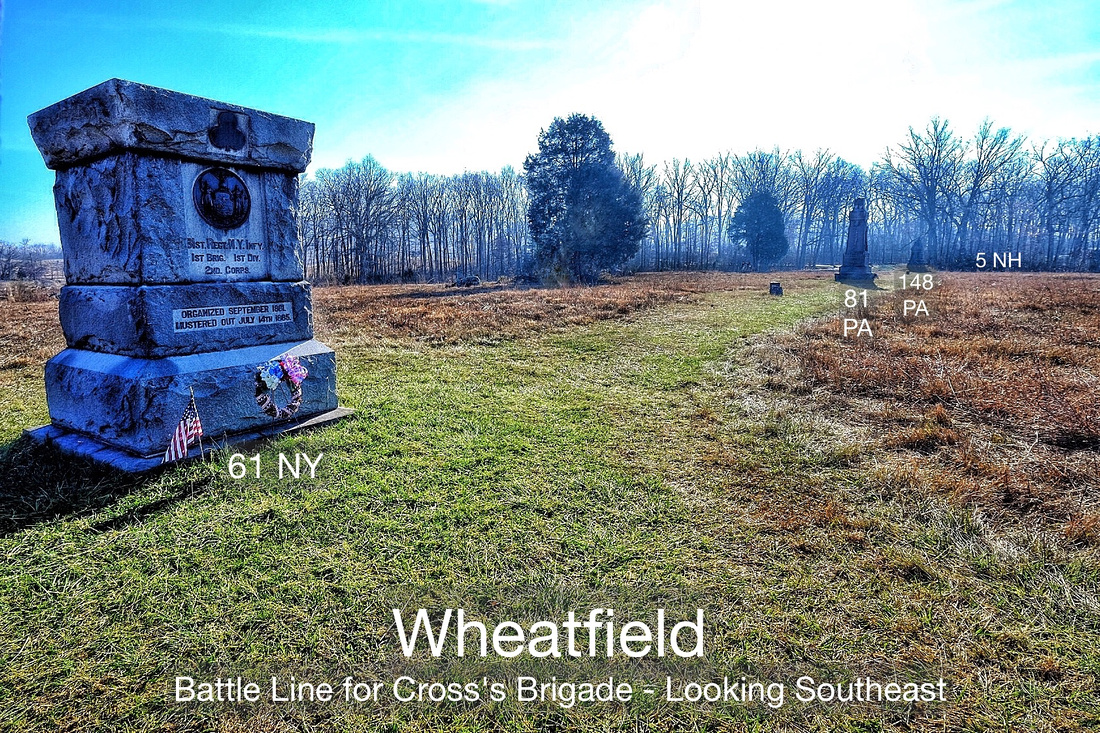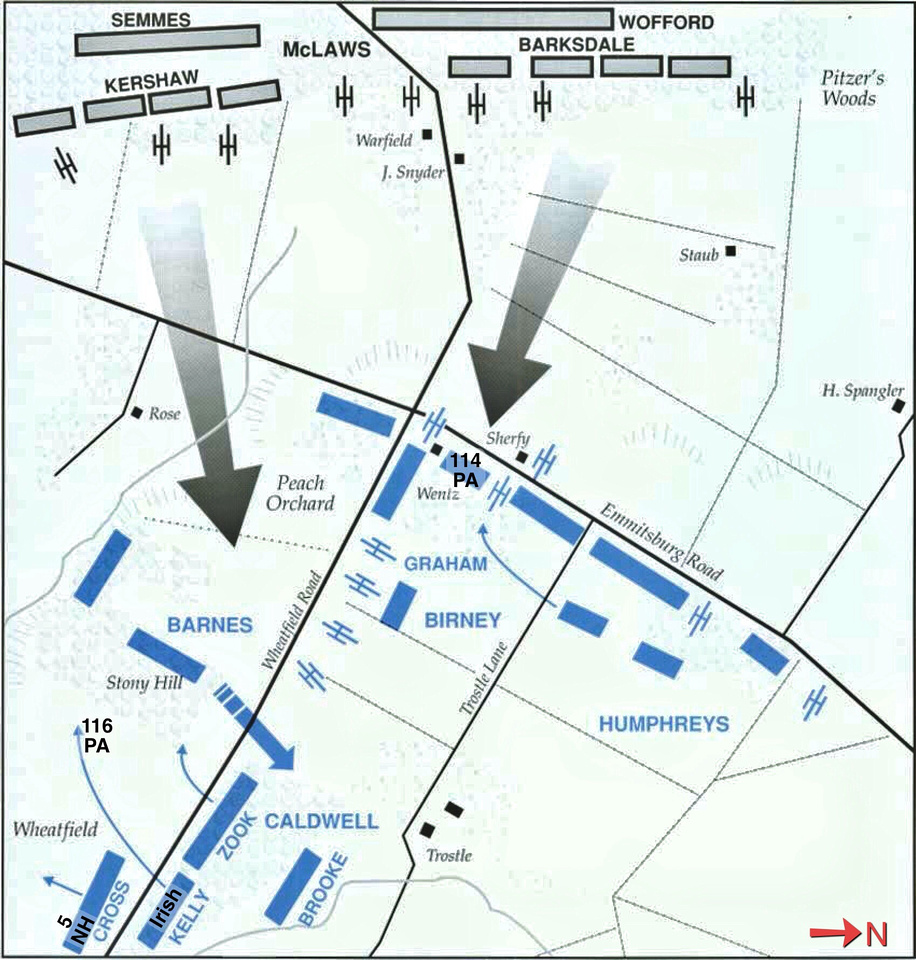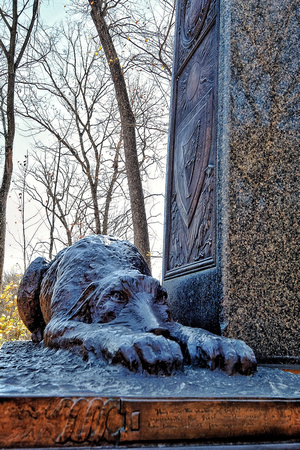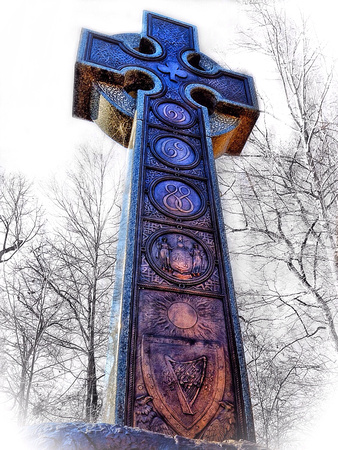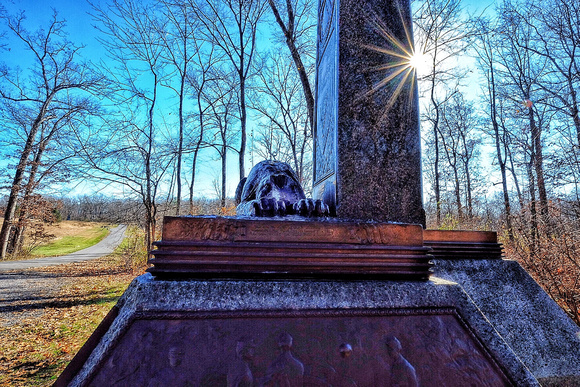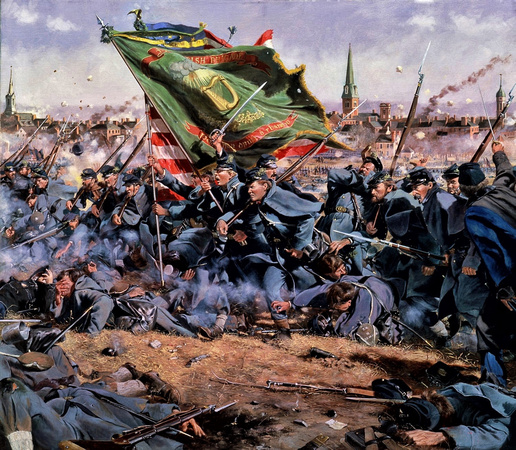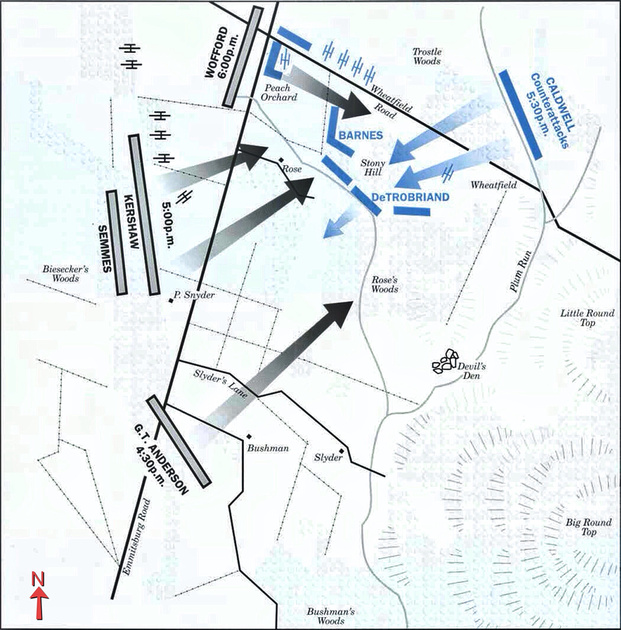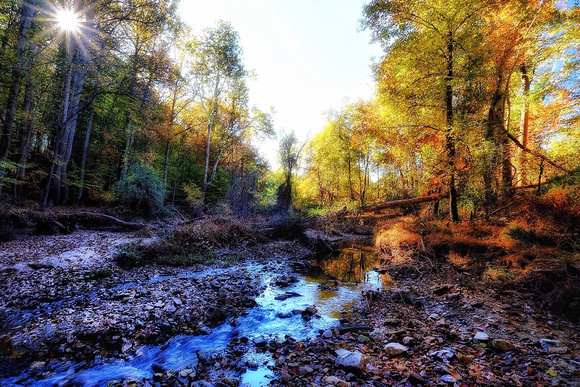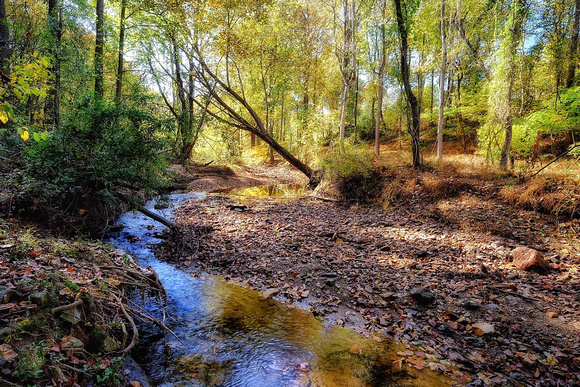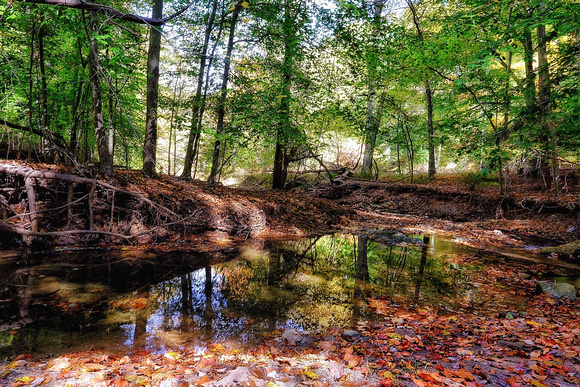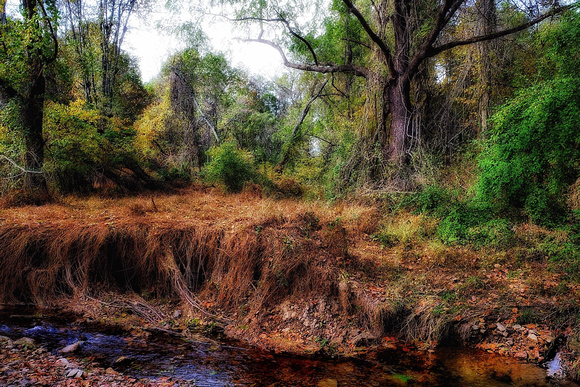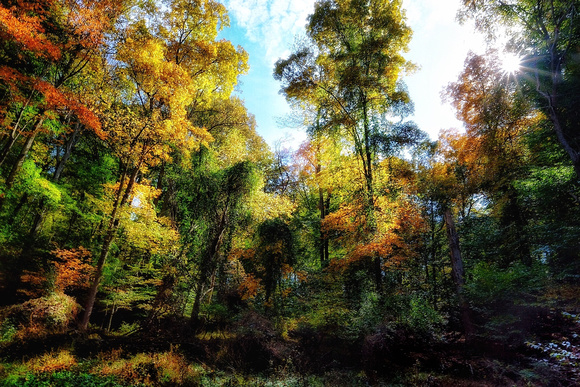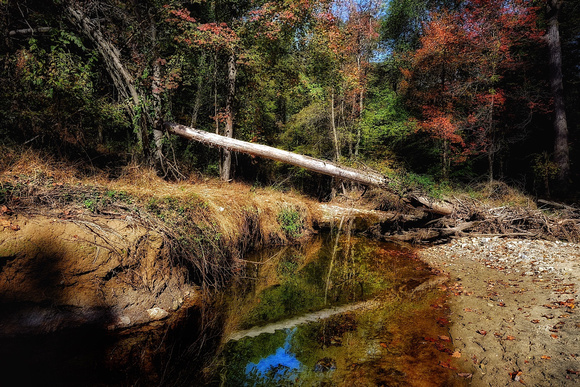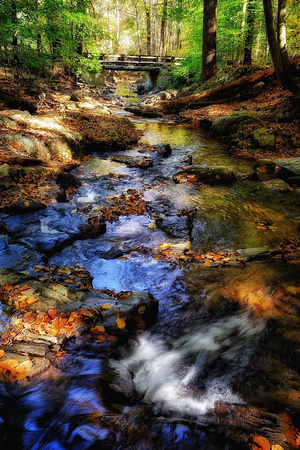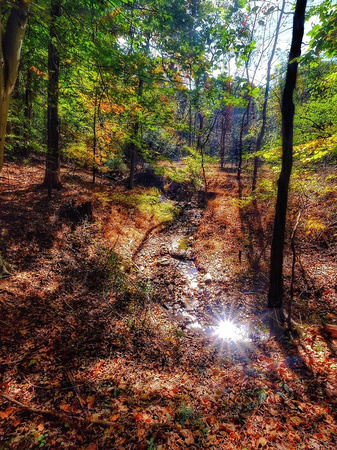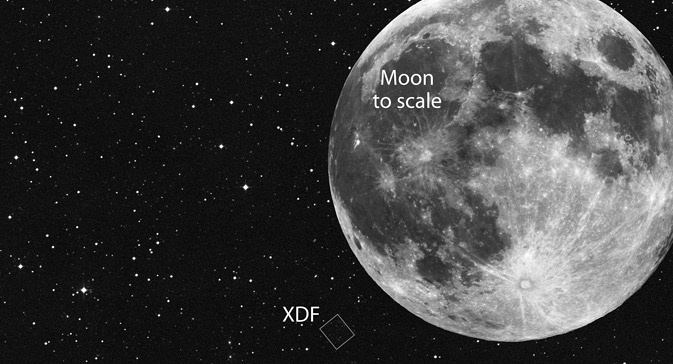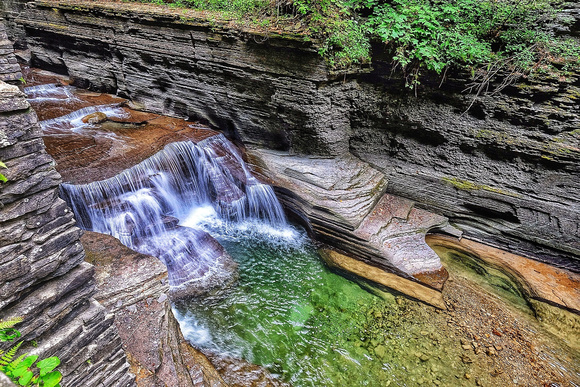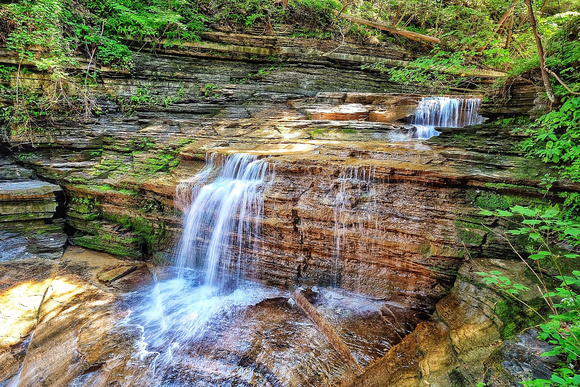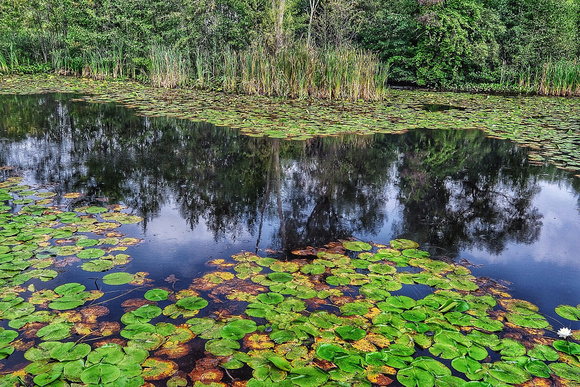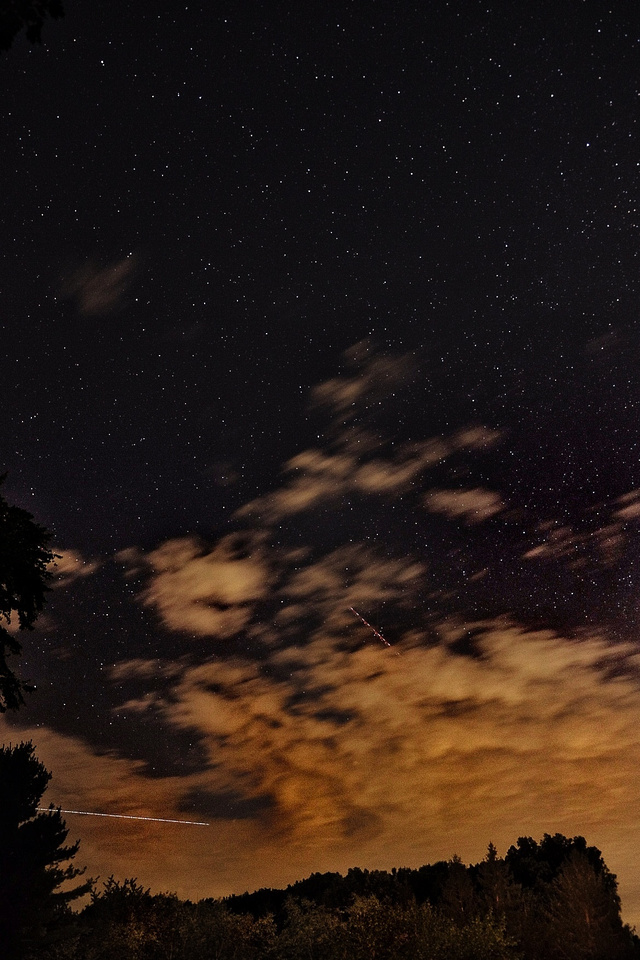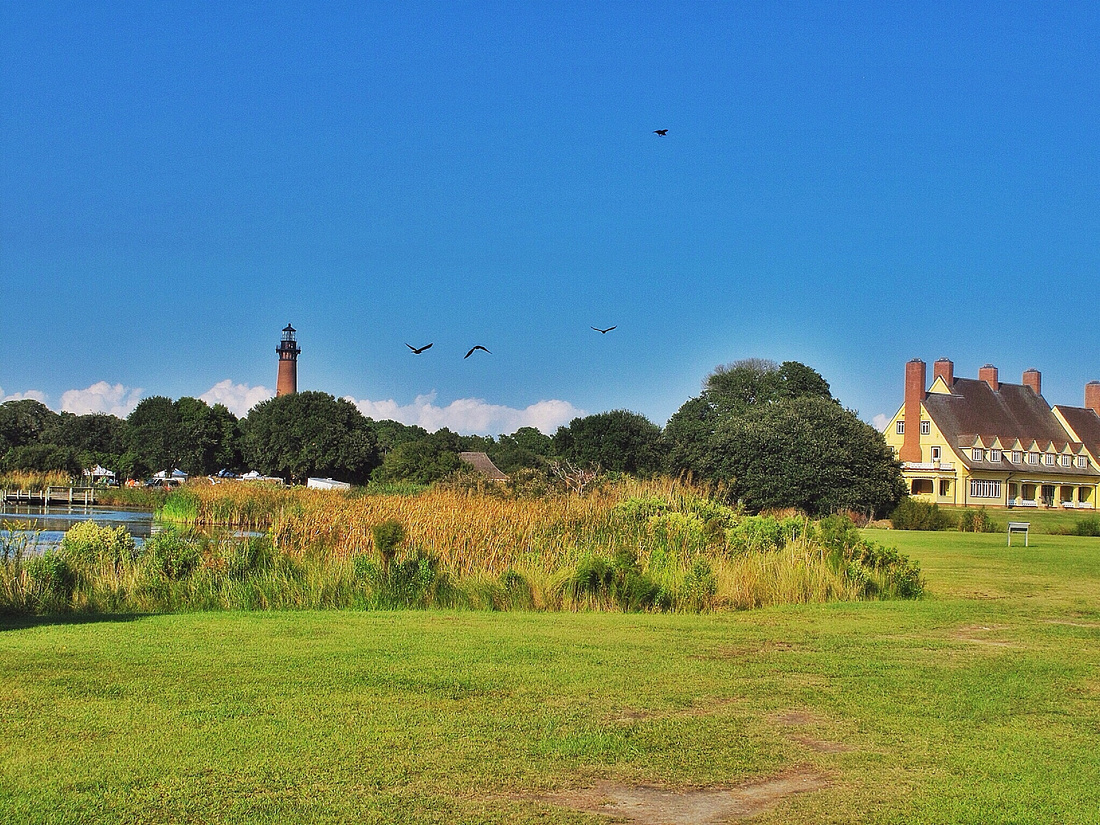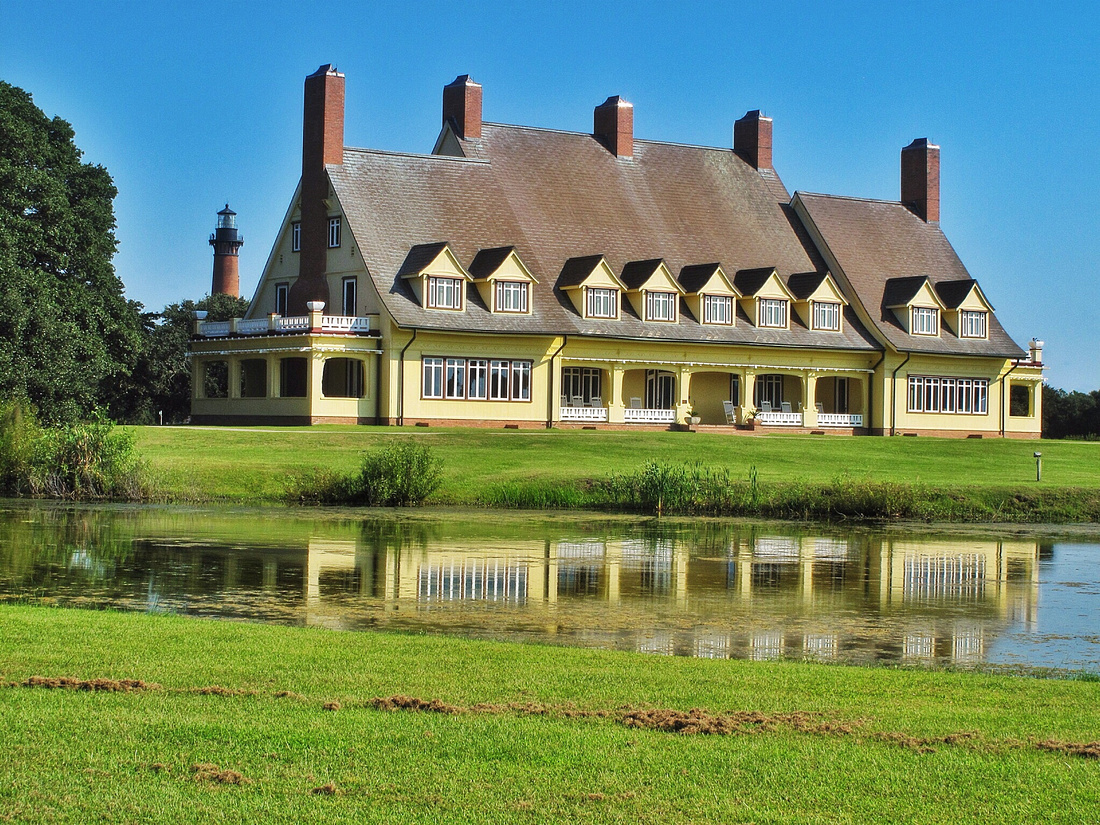Blessings, bestowed onto thee.
Grateful, to navigate through
Tribulations, cast before thee.
Tomorrow hides what it may bring,
Worry not, but be joyful, and sing.
Ah, ‘tis easy to say this very thing.
You preach to be merry with mirth,
Travel is treacherous on this earth.
Tread lightly, my friends, yes, Go Lightly.
Secured your destiny shall be — Quite Rightly.
___________________________________________________________________________________
D W Orr
Environmentalist, Weimaraner/Dachshund Companion, Photographer, and Poet-Provocateur
Harford County, Maryland,
Here, where it all began, 256 years ago, in the USA
December 21, 2025
___________________________________________________________________________________

"Go Lightly". Image credit unknown.
Projecting quiet wisdom - Unnoticed.
Seemingly knowing what the others did not.
But these party goers are carefree and blind.
They spend their lives in suppressed desperation,
With a myriad variety of insignificant distractions.
The world is burning to the west. Is dry and thirsty.
The coasts sink slowly under advancing shorelines.
Rule by Autocracy arises like a reanimated zombie.
All the chaos is happening over there, not here.
They dismiss and ask themselves - Why me worry?
His easy movements were like touch and go landings,
Feet never landing firmly on the floor, gliding
Effortlessly to the balcony for nighttime observation,
Seeking solitude amongst the beckoning starlight.
Peering northward was the Andromeda Constellation.
And there amongst the glimmering stars,
Floated a dim smudge of light - our sister galaxy M31,
Pulling with gravitational force on our own galaxy for the
Great Merge of starry night wonder in 4.5 billion years.
During character maturation, two force streams
Pulled imperceptibly on the night sky observer:
One, the dominate customs of man,
One, the natural laws of the universe.
Random acts upon him had molded his outlook,
Almost breaking him.
But he had the courage to RESIST and say NO.
NO to the drunken loved ones wrestling downstairs.
NO to his first friendship clique pushing him to conform.
NO to a land destined for severe wildfires and drought.
NO to the bosses wanting to exploit his services.
NO to doctors who violate their hippocratic oath.
NO to deceitful takers ungrateful for devout caregiving.
Now, he had understood these powerful forces,
Feeling liberated and unbounded to conventions,
Confident to step aside from the
Dominating force field stream of mankind.
To hover suspended, above it all.
To become someone to be trusted with
Writing the Truth, to shine the Light,
Pulling others to see the way of living with
Vision, Dignity, Integrity, and Courage.
~ May You Forever Float in the Stream of Eternity ~
_____________________________________________________________________________________________________
D W Orr
Environmentalist, Weimaraner/Dachshund Companion, Photographer, and Poet-Provocateur
Harford County, Maryland,
Here, where it all began, 256 years ago, in the USA
September 21, 2025
************ In Memory of Dr. Donald A. Orr, Sept. 1941 - Sept. 1997 ************
_____________________________________________________________________________________________________

The Andromeda Galaxy
Fire, war, and pestilence sweep over the land,
Causing great cries of anguish, for all in its path.
Why me? They ask. Because it is, my dear — it is.
Misfortune, with its companion Melancholy,
Pass their way down through the ages,
Mysteriously, onto the next generation.
Hidden, unknowingly in each descendent,
It swarms about them, ready to strike,
Consume their very soul, and take them
Through that dark passage of bleakness,
Ending sadly, in final surrender.
Even the Best and the Brightest,
Yield to mind numbing chemicals,
To stumble their way forward.
They, with analytical, scientific minds,
Easily dismiss proper medical care,
To hasten their - Destiny of Despair.
A long established lumber merchant proprietor,
Surveys the vast, leveled plain of smoldering
February embers of the Great Baltimore Fire.
Thankful, that his cooperage business yard,
Fell blocks short of the creeping burn-line.
But his thoughts drift like smoke to his fire
Ravaged customers and raw material suppliers.
Anticipated financial losses were unbearable.
Body stress soon gave way to foreboding anxiety.
Thirty years of hard dedication, decimated by
Collateral damage from a pernicious inferno.
Four months of brooding and spreading cancer
Are too much for the ex-West Virginian, as he is
Laid to rest on a peaceful summer June day.
Leaving behind a wife and son, each destined
For sudden death, within a 24-hour period.
A Great-Grandson walks the once bloody ground,
Whereby an ancestral warrior fought to preserve a Union.
Suddenly, a presence bloomed in the tramper’s soul.
His steps, are now that of the intrepid soldier’s steps,
Whose forced night march filed past torchlit corpses,
Bodies of once brave young men who that morning,
Had charged an impenetrable salient, earthen wall,
Defended by armed men clothed in dusty gray.
That traumatic vision for the 19-year-old soldier,
Would stay with him for his remaining 64 years,
Soul-etched, like his stone carved gravestone,
— “A Civil War Veteran” —
A loving mother of three, watches with concern,
As family members are each struck down with
A deadly, indiscriminate, influenza outbreak.
A dear husband of twelve years passes first,
The next day, her husband’s mother, then,
Eleven days later, a darling daughter of five years.
She survives with an irreparable broken heart,
Carries on for 32 more years to kiss her grandson
Goodbye, who will walk in her father’s footsteps.
Thus begat genetic memory links of trauma,
Genome embedded, part of a collective
Unconscious of feelings, absent of direct
Sensory experience in the receiver, lasting
Across multiple generations of descendants.
But someone, in that genetic chain of humanity,
Must standup, as a resurrected Warrior All Mighty,
To fight back, that viral madness of Forlorn
Hopelessness — Stop it in its tracks, from
Inexorably marching onward, well past,
The faded memory, of his dauntless deeds.
To YOU, the last one standing:
Oh my, my - how hard it is, to watch tired faces,
Hear the craggy voices, of old acquaintances,
Weathered down, worn thin, and so soon forgot,
Drift silently away, into that long, lonely, dark night.
___________________________________________________________________________________
D W Orr
Environmentalist, Weimaraner/Dachshund Companion, Photographer, and Poet-Provocateur
Harford County, Maryland,
Here, where it all began, 256 years ago, in the USA
June 22, 2025
____________________________________________________________________________________________________
To learn more about epigenetics:
Scientific American, July 2022
The Guardian, June 2024

Nathan E. Alexander

“An Ancestral Warrior” at age 73

“A Civil War Veteran”
1st Sergeant
Co. B, 4th MD Infantry, 3rd Brigade, 2nd Division, 5th Corps
Major Battles: Wilderness, Laurel Hill, Spotsylvania, Harris Farm, North Anna, Totopotomy, Cold Harbor, Bethesda Church, Petersburg, Hatcher's Run, Weldon Railroad, Five Forks.

Spotsylvania battlefield area in April 1866. Confederate earthworks with abatis.

Battle of Spotsylvania by Thure de Thulstrup.
Mule Shoe Salient known as the “Bloody Angle”.
Fighting, including Harris Farm, occurred on
and off from May 8 through May 21, 1864.

Part of area destroyed by the Great Baltimore Fire of 1904.
Maryland Casualty Tower in background (circa 1920).
 Map of Devastation - Great Baltimore Fire of 1904.
Map of Devastation - Great Baltimore Fire of 1904.
1 = Post Office, 2 = City Hall, 3 = Courthouse, 4 = Custom House, 5 = Board of Trade
With elegant grace and such natural poise,
Heads turned thy way, of many young boys.
That gold hip chain sway would mesmerize,
The fixed stare, of this boy’s enchanted eyes.
Who with courage to ask for a dinner date prize,
That was accepted by you to my gleeful surprise.
It was soon to the altar we were destined to go,
As time marched blissfully, 3 young ones to grow.
Now we are at twelve beloved years and two score,
To continue our blessed union for many years more.
_____________________________________________________________________________________________________
D W Orr
Environmentalist, Weimaraner/Dachshund Companion, Photographer, and Poet-Provocateur
Harford County, Maryland,
Here, where it all began, 256 years ago, in the USA
May 11, 2025
❤️52❤️
_____________________________________________________________________________________________________

A Harmony of Souls (1973)

Wedding Day

Emerald Eyes

At Loch Raven Reservoir

Hanging With Her German Companions

With Her Ever-Loyal Doxie

The Entire Canine Crew

Swimming Lessons For The Big Boy

Relaxing At Whalehead, Corolla, NC
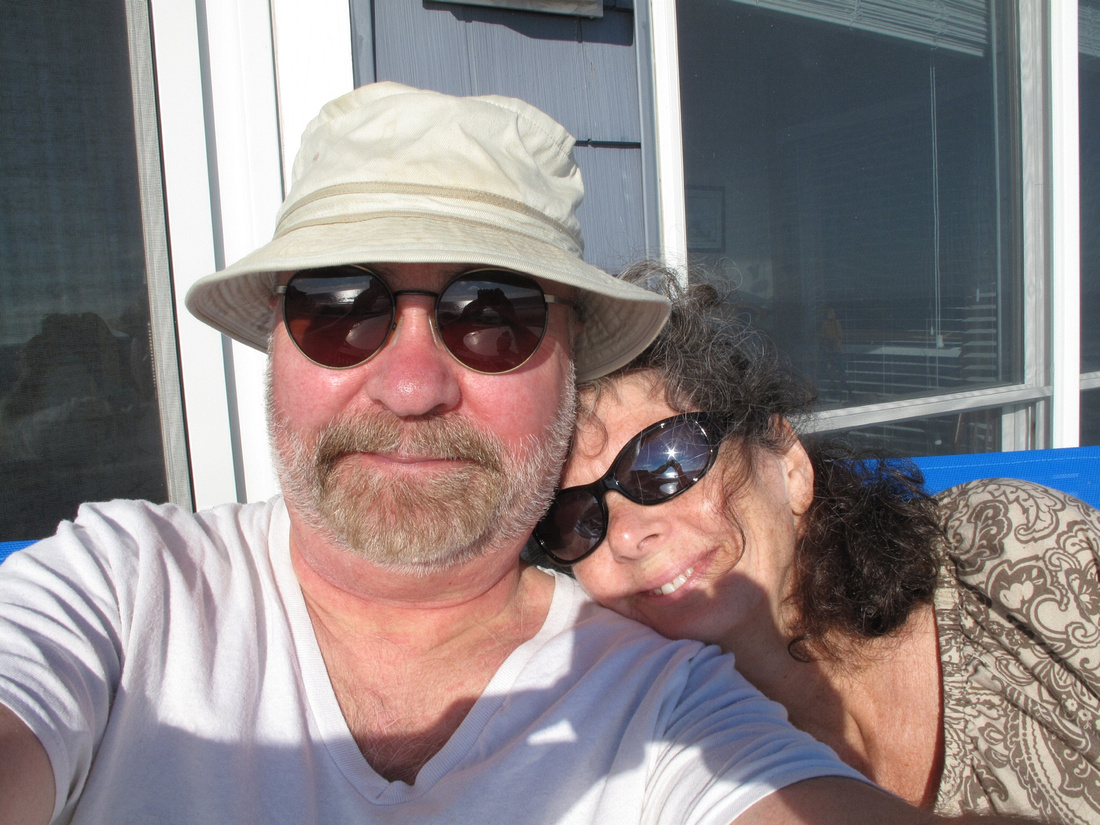
Our First Selfie At Corolla, NC

Remembrance Day, Gettysburg, PA
(I am wearing N. E. Alexander Tribute Hat - see blog entry for June 2025)

At Havre de Grace, MD
We must relentlessly push on, for fame, to succeed.
Time passes slowly but quickly, this we do not perceive.
Our fate is unsure, our gains so few, what do we leave?
Could we not pause ourselves, to stop a bit and wonder?
Or would we think that would be, an unforgivable blunder?
Ah, to be notable, and to move onward with grand flair,
Renowned by many, who remember us with fond care.
But that memory shall erase quickly, a generation or two.
So what was it all for, to this blooming flower that grew.
It was a special invite to you, a Truth and Beauty reveal,
Coming with an expiry date, to which you cannot Appeal.
_____________________________________________________________________________________________________
D W Orr
Environmentalist, Weimaraner/Dachshund Companion, Photographer, and Poet-Provocateur
Harford County, Maryland,
Here, where it all began, 256 years ago, in the USA
April 23, 2025
Happy Heavenly 461st Birthday to the “Bard of Avon”, William Shakespeare
_____________________________________________________________________________________________________
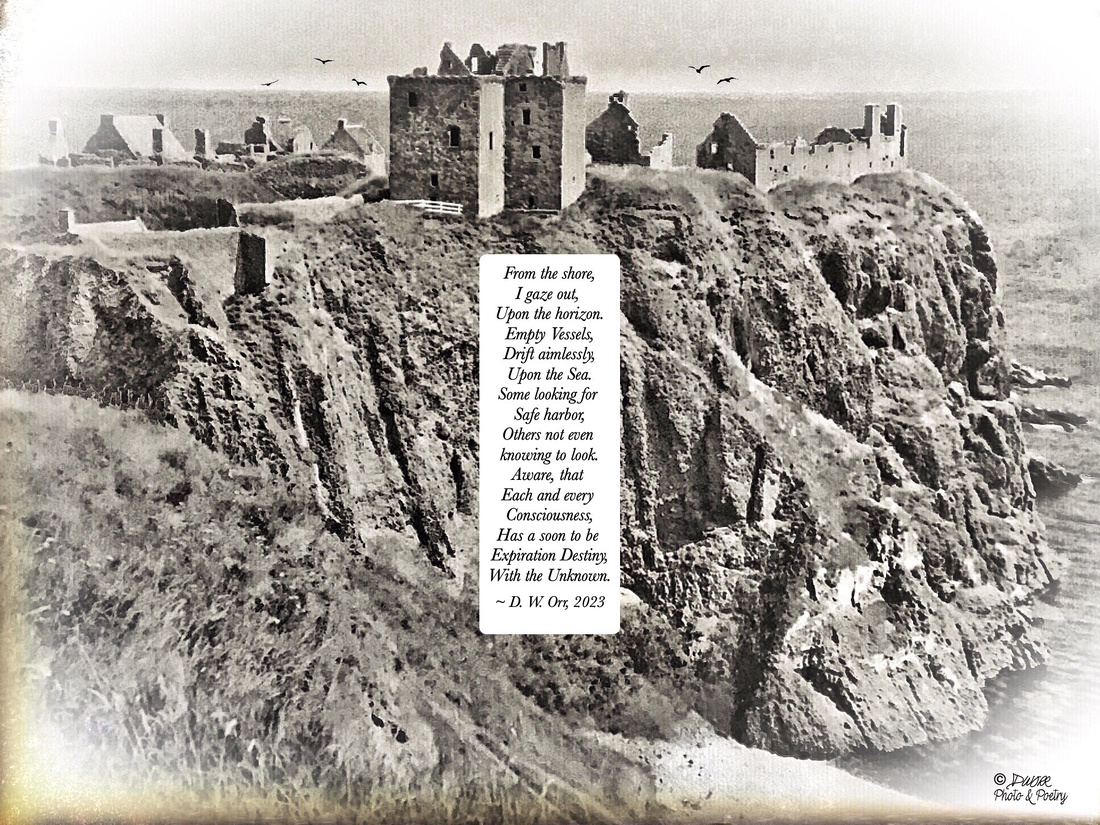
Dunnottar Castle Ruins, Scotland. By D. W. Orr Photo & Poetry.
Filled with nebulae nurseries of dust and gas,
Destined by gravitational force to collapse, and
Forge into stars of an ever expanding,
Protective Universe.
Rocky and gaseous planets emerge as companion
Spheres to special stars, with sufficient elements
To sustain advanced life forms,
That look back into the ancient darkness of
Interstellar space, and attempt to resolve the
Myriad Mysteries of Creation.
Suddenly, like a flash, a Vision appeared.
Red and green and blue balls bobbed,
Suspended, as they floated overhead,
Within touching range — arched like
A beautiful rainbow meant to attract,
A newly formed soul - finally awakened
From a deep slumber of dreams, filled with an
Incomprehensible kaleidoscope of wonders.
Rays of earth sunlight streamed into the room,
Its glow, landing warmly, upon a protective crib,
Filled with cuddly, soft stuffed, furry animals.
Embedded snugly in the center, blanket wrapped,
Laid a baby boy, feeling a full sensory awareness
of vision, for the first time in his young life.
Mesmerized by this multi-colored spectrum of
dancing globes, inducing him to touch, to feel,
the awe and magic, and the joy, of all the awaiting
splendors of a developing life of consciousness.
It was another, singular, big bang moment,
With a life expanding at an inflationary speed,
While a waltzing array of planets, revolved above.
This moment, the Miracle of all Miracles,
One of the many billions preceding him,
And the many billions more, succeeding him.
___________________________________________________________________________________
D W Orr
Environmentalist, Weimaraner/Dachshund Companion, Photographer, and Poet-Provocateur
Harford County, Maryland,
Here, where it all began, 256 years ago, in the USA
March 21, 2025
____________________________________________________________________________________________________
Deshil Holles Eamus. Deshil Holles Eamus. Deshil Holles Eamus.
Send us bright one, light one, Horhorn, quickening and wombfruit. Send us bright one, light one, Horhorn, quickening and wombfruit. Send us bright one, light one, Horhorn, quickening and wombfruit.
Hoopsa boyaboy hoopsa! Hoopsa boyaboy hoopsa! Hoopsa boyaboy hoopsa!
~ Opening lines of the episode, “Oxen of the Sun”, Ulysses, by James Joyce
____________________________________________________________________________________________________
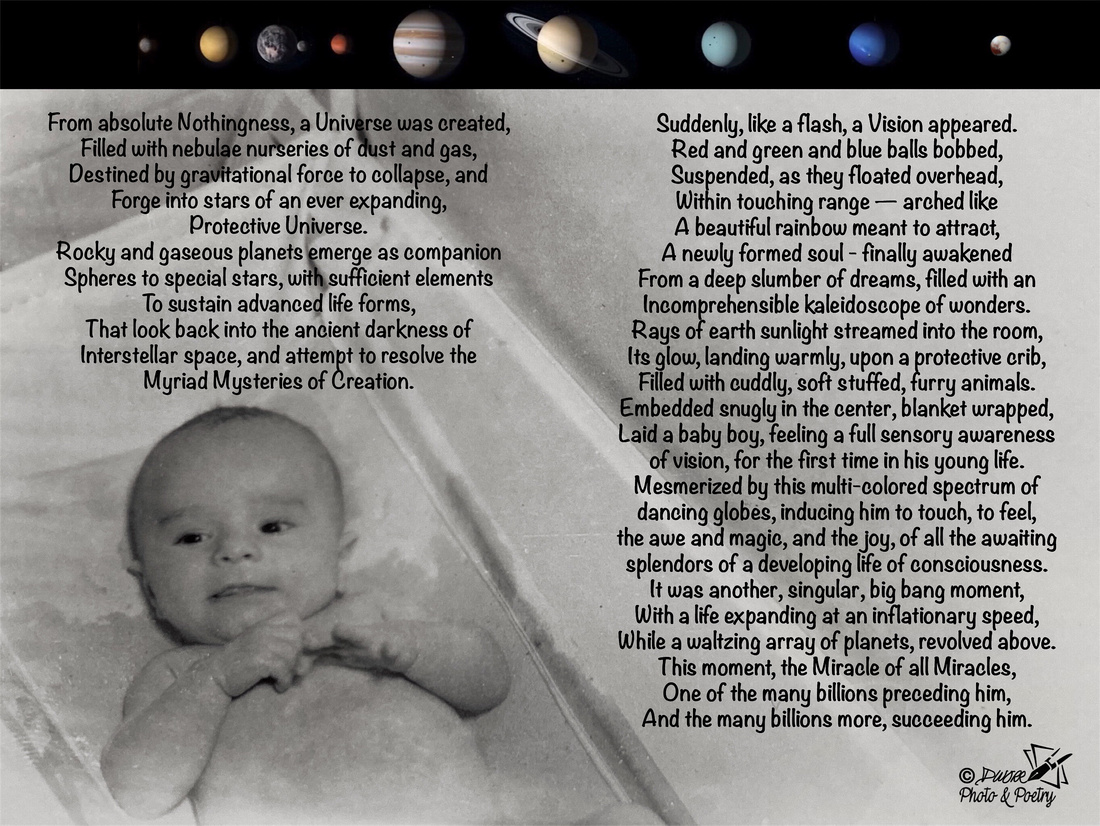
The Grand Awakening
Was a 2020 vote, that was stolen, for sure.
It was shouted all about — “Not on the level!”,
Four years ongoing, ‘til the next tallied
Vote yields, a doomed pact with the Devil.
So we enter that new year,
With dismay and valid fear.
Watch the tech oligarchy bend the knee,
Kiss the royal ring with sycophantic glee.
We the subjects, yell with spastic shouts and fits,
Upon the entrance, of a pair of Bolt-on, Bezos tits.
She, with a gauche top, and fake lips to pout,
That were surely meant for ass kissing,
One can say confidently, no doubt.
As a 2025 swear-in bears witness,
For an orange king with no proper fitness,
To serve country with dutiful pride,
Truthful, and with nothing to hide,
But with vengeance and grifted richness.
___________________________________________________________________________________
D W Orr
Environmentalist, Weimaraner/Dachshund Companion, Photographer, and Poet-Provocateur
Harford County, Maryland,
Here, where it all began, 256 years ago, in the USA
February 5, 2025
____________________________________________________________________________________________________

CEO’s: Mark Zuckerberg (Meta), Jeff Bezos (Amazon), Sundar Pichai (Google),
Elon Musk (Tesla, SpaceX, X). Image by Shaun Thew.
Hoping this long pathway leads us not astray.
We heedlessly listen and follow the Man,
Believing he has our best, in his vast plan.
But the hourglass of fate, does not lie,
As we look back with regret, sorrow, and cry.
So much was wasted on frivolous folly,
And entertaining, relentless, jovial jolly.
We did not look deep into the beauty of being,
Wandering without wonder, and not really seeing.
Building and crafting, for a nation, its tools of war,
Leading to fear, strife, and the oozing flow of gore.
For now, I am the creator, to purge out greed and hate,
Grateful for the haves, just before a beckoning gate.
Yes, I am the one, known as, “A Poet Too Late”.
___________________________________________________________________________________________________
* This poem was published in the book, Eastern Sea Bards Poetry Anthology *
D W Orr
Environmentalist, Weimaraner/Dachshund Companion, Photographer, and Poet-Provocateur
Harford County, Maryland,
Here, where it all began, 256 years ago, in the USA
February 2, 2025
 “A Poet Too Late”. Original image by Kaoru Yamada.
“A Poet Too Late”. Original image by Kaoru Yamada.
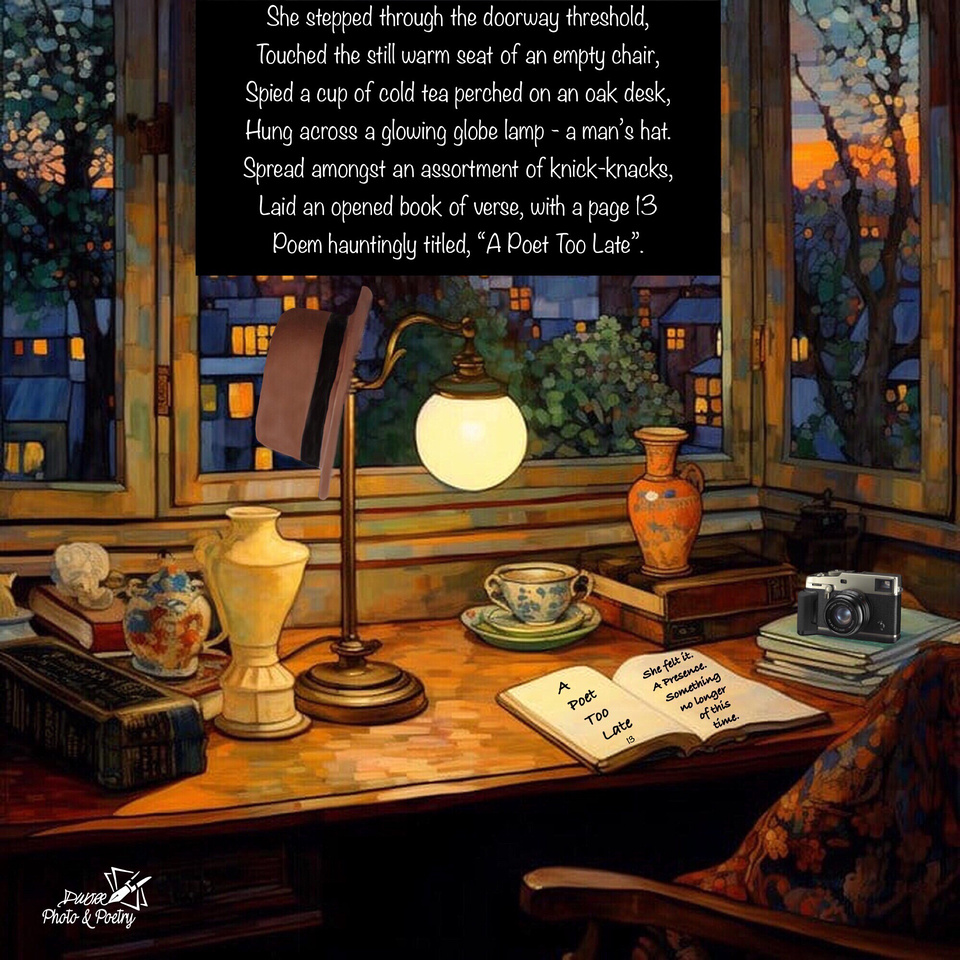 “She Felt A Presence”. Original image by Kaoru Yamada.
“She Felt A Presence”. Original image by Kaoru Yamada.
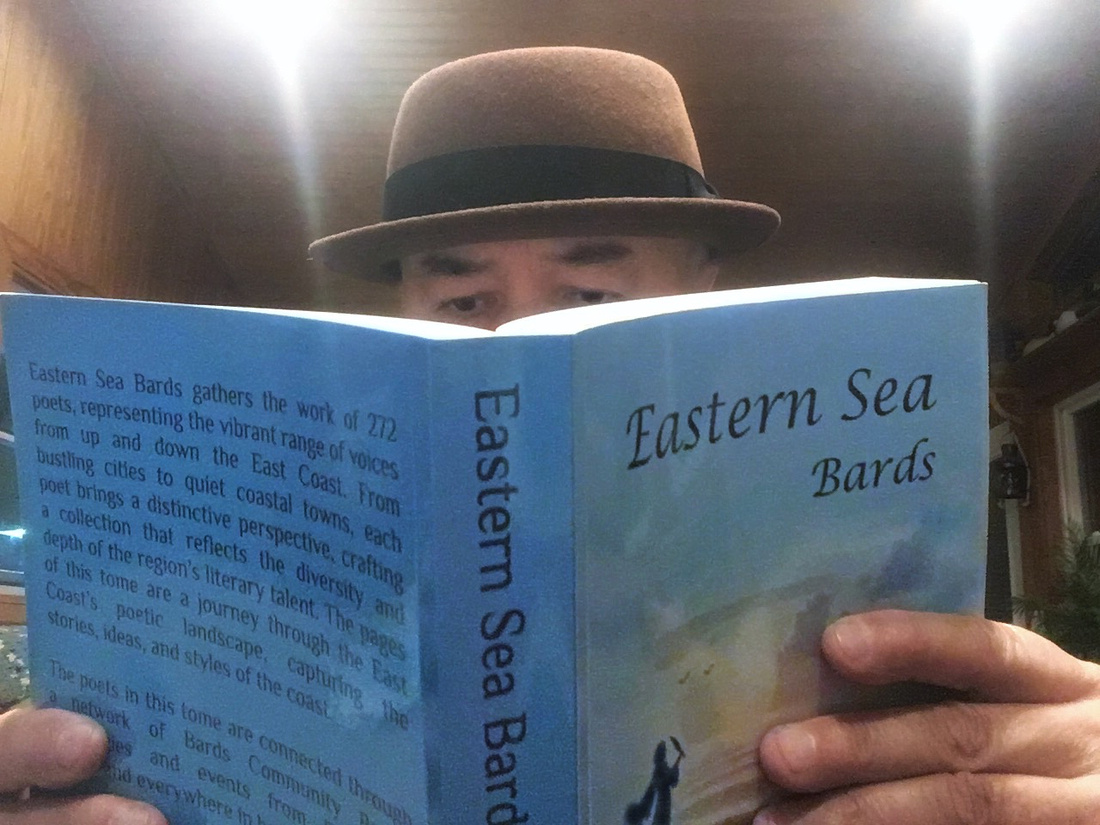 Too late a poet reading, “A Poet Too Late” (Page 315).
Too late a poet reading, “A Poet Too Late” (Page 315).
Social unrest is fervidly fomenting,
Across this land of spacious skies,
From California to the New York Island,
Just as it was three score years earlier,
When the Answer was Blowing in the Wind.
The Democratic norm has been broken.
A Supreme Court adjudicates to coronate,
Lies and misinformation permeate,
Conspiracy theories propagate,
Hate groups congregate,
Retributions vindicate,
Authoritarians subjugate.
The air reeks with fiery smoke,
A Whirlpool of Destruction escalating
Onward, without abatement.
Teeming anger swaths through the Land,
With great weeping and gnashing of teeth.
Emotion rules.
Rational, reasoned
Thought withers.
Justice wanes,
As a Rule of Law refrain,
Begins to stir with the wind and rain.
An icy question blows in hard with a
Gale force that lingers over 200 years:
“A Republic or Monarchy?”
A chilling, cautionary,
‘Dr. Ben wind’ whispers in reply:
“A republic . . . if you can keep it.”
___________________________________________________________________________________________________
Notice to All: Let this poem published herewith be a cautionary tale, that the fall of democracy is a matter not to be taken lightly. The replacement of democracy by authoritarianism in the world of today will not occur through sudden brute force (coup d’état), but through a slow and deliberate escalation of lies, deception, and the mangling of language.
“War is peace.
Freedom is slavery.
Ignorance is strength.”
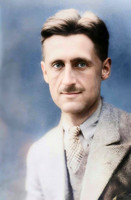
~ George Orwell, “1984”
Stay vigilant my friends.
___________________________________________________________________________________________________
D W Orr
Environmentalist, Weimaraner/Dachshund Companion, Photographer, and Poet-Provocateur
Harford County, Maryland,
Here, where it all began, 255 years ago, in the USA
November 6, 2024

“A republic … if you can keep it.”, by D. W. Orr Photography & Poetry
Stands an unassuming witness tree,
Stately and straight at 70 feet tall,
Providing annual summer shade
Across many years past,
For a family of five.
Casting the sad shade of the
Final moments, of a beloved
Spaniel, seized by a brain spasm.
But glad shade was there too,
When two forest fawns nuzzle,
And gray squirrels tread a picket puzzle,
As they balance and flitter their way
From fence post to fence post with gay.
This grand Poplar, periodically
Caressed a setting gibbous moon,
In all her splendid, morning glory.
Welcomed the banded, turbulent Jupiter,
With its own floating quad of Galilean moons,
Arising on a cold, dark February evening.
Seduced a sun-lit August day,
With crystal clear rain
Showering the fresh air, as
Hot shed-steam arose like chimney smoke.
The tough old hardwood remembered,
Years before, as dark storm clouds
Gathered and gusted in from the west,
The air tinged with electricity,
Roared with rolling thunder.
Fortuitously it dodged
A sudden, dry-sky bolt of crackling
Lightening that struck and split
Bark 12’ down its neighboring tree.
Watching with relief, as a duo of dogs,
With Lady Cynthia, their pack leader,
Scampering away to safety.
But have no fear my friend,
None shall pass,
Nor strike again,
For now a pair of fearless
Teutonic Teckels stand
At the ready, as Sentries,
Behind the golden gates of
Entry to the Castle of Orr.
High among the crowned branches,
Granted a Pileated Woodpecker,
His right to drill, drill, drill.
Proudly perched a turkey vulture,
Sun drying its soaring wings
In a shield-like posture.
Ensconced in place, high above,
On a lofty January branch,
A Red-tailed Hawk defiantly roosts,
As a murder of nearby Crows
Squawk incessantly to "Go Away".
The lattice of arched limbs peered over a
Classic Currier and Ives Christmas moment,
As softly falling flakes of snow,
Drifted downward, landing on a
Frisky Fräulein Doxie-Dog,
Tail feathered high,
Grasping her favorite outdoor ball,
While a fellow Deutschland canine,
A galloping female Weimaraner,
Kicked up balls of newly fallen tufted fluffs.
As a darkening dusk settles over
A gray-clouded western sky,
The commanding senior tree
Provides a silhouetted mood,
Framed by a cathedral high window,
Highlighted by a Celtic Cross,
Bearing the name of a
German-blooded family, with a
Deeply infused ancestry of Irish Souls.
A blue March night descends,
Clear and heavy upon the Land.
Through the naked winter
Arms of the Silent Sentinel,
Solar System Eyes peer back
At Us, the Infinitesimal Beings.
Keenly aware, that We, are
Part of a vast Cosmos,
That awaits our Return.
At the base of the giant tree,
Between deep penetrating roots,
The ghost of a young raccoon,
Lies with its body tightly curled,
Shivering through the end of
Another long, cold, starry night -
Struggling, waiting, waiting …
For the Rescue that will
End it All.
__________________________________________________________________________
D W Orr
Environmentalist, Weimaraner/Dachshund Companion, Photographer, and Poet-Provocateur
Harford County, Maryland,
Here, where it all began, 255 years ago, in the USA
August 4, 2024
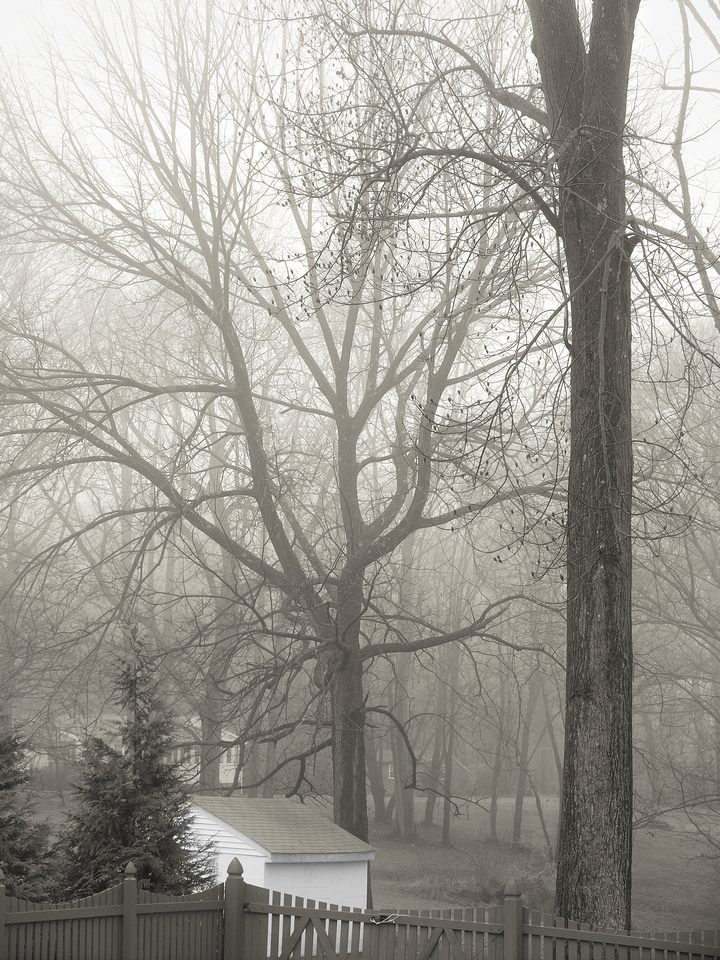
"Stands an unassuming witness tree, stately and straight at 70 feet tall" (foreground tree).
Note: A majestic Black Walnut tree ranges in the background (smote down by man on 1/14/22).
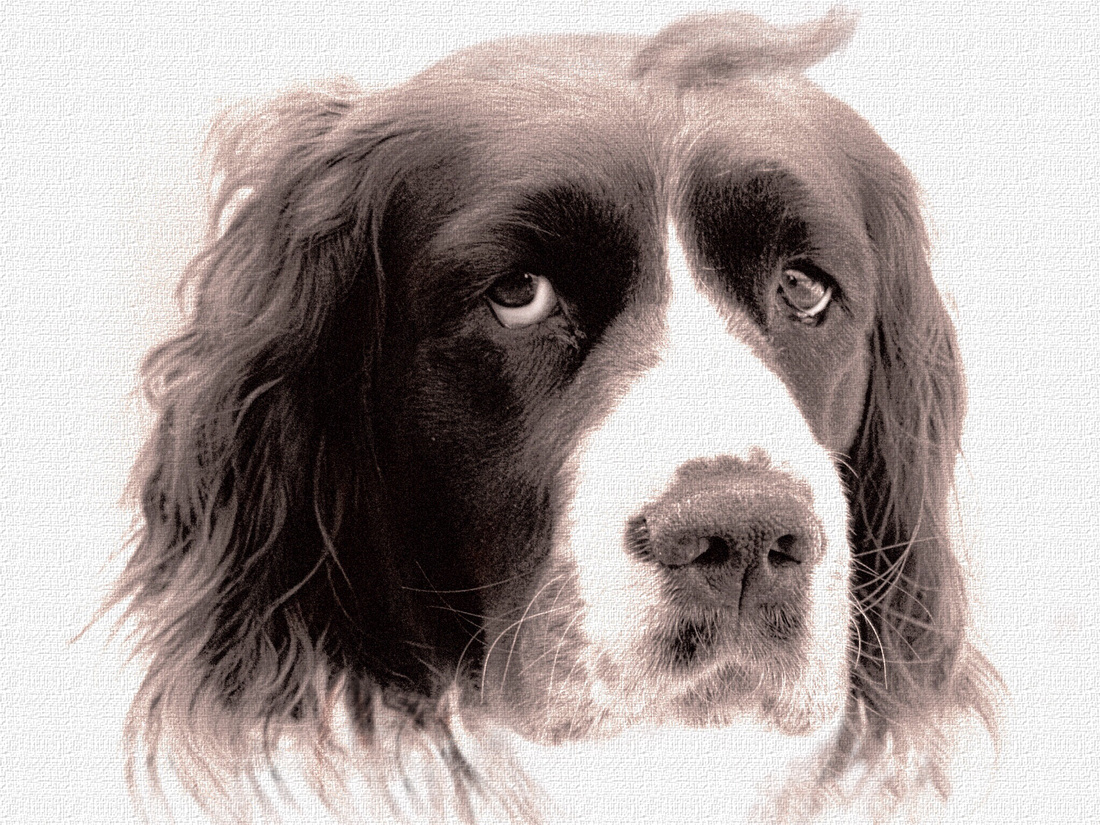 "Beloved Spaniel"
"Beloved Spaniel"

“When two forest fawns nuzzle,”
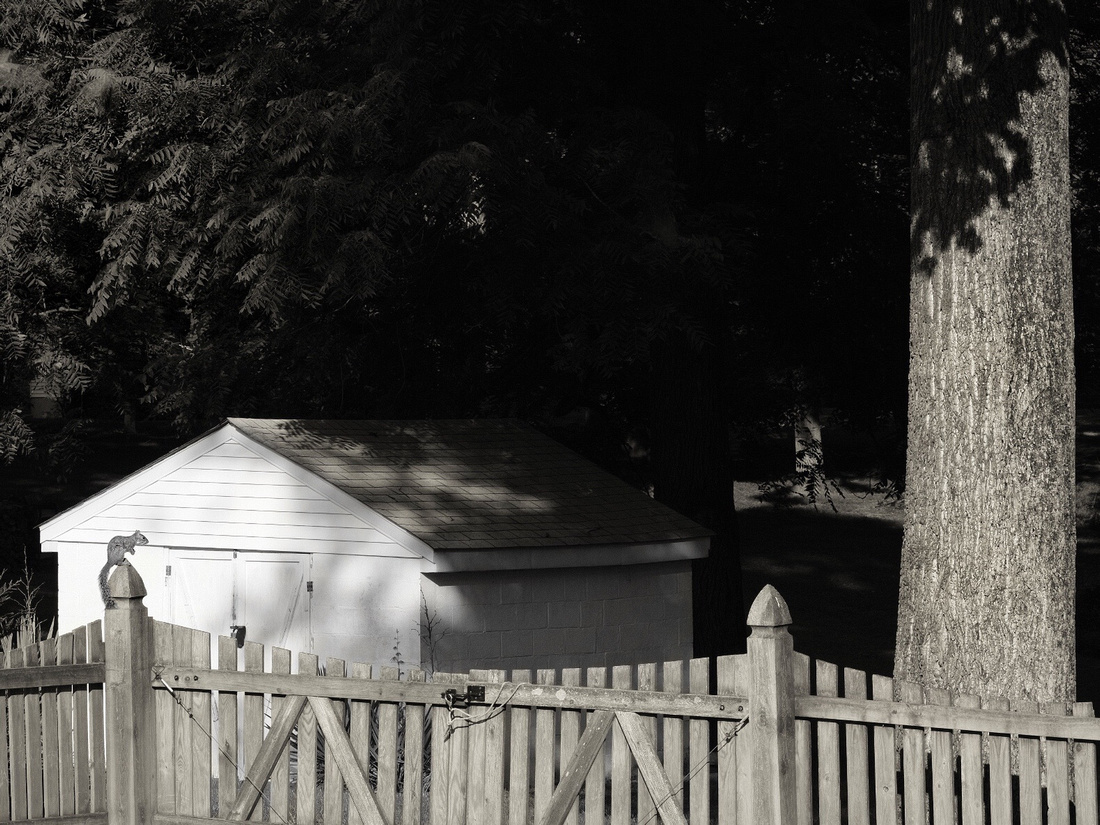
”And gray squirrels tread a picket puzzle, as they balance and flitter their way,
from fence post to fence post with gay”
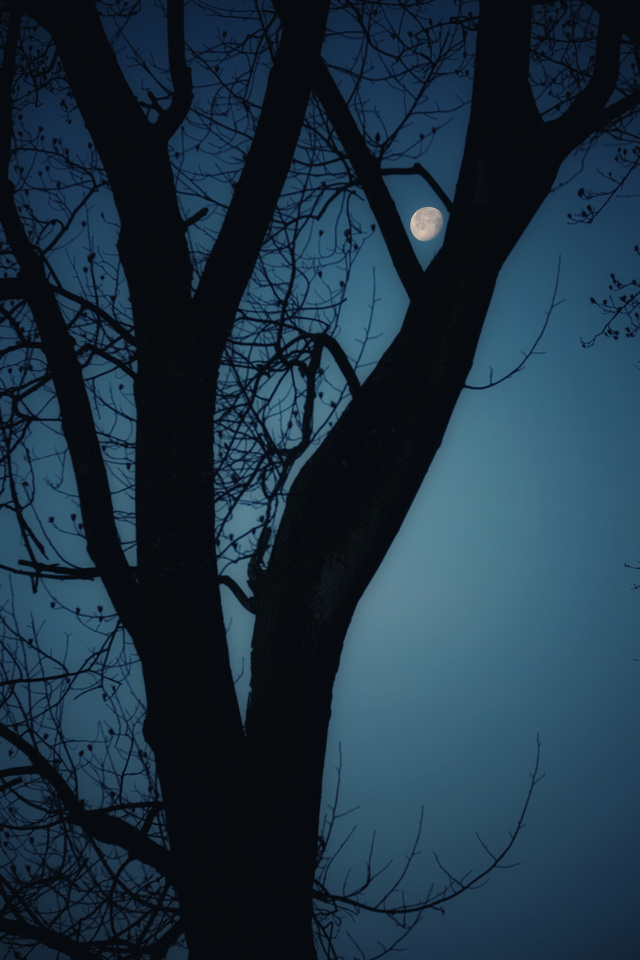
"Caressed a setting gibbous moon"
 “Welcomed the banded, turbulent Jupiter, with its own floating quad of Galilean moons”
“Welcomed the banded, turbulent Jupiter, with its own floating quad of Galilean moons”
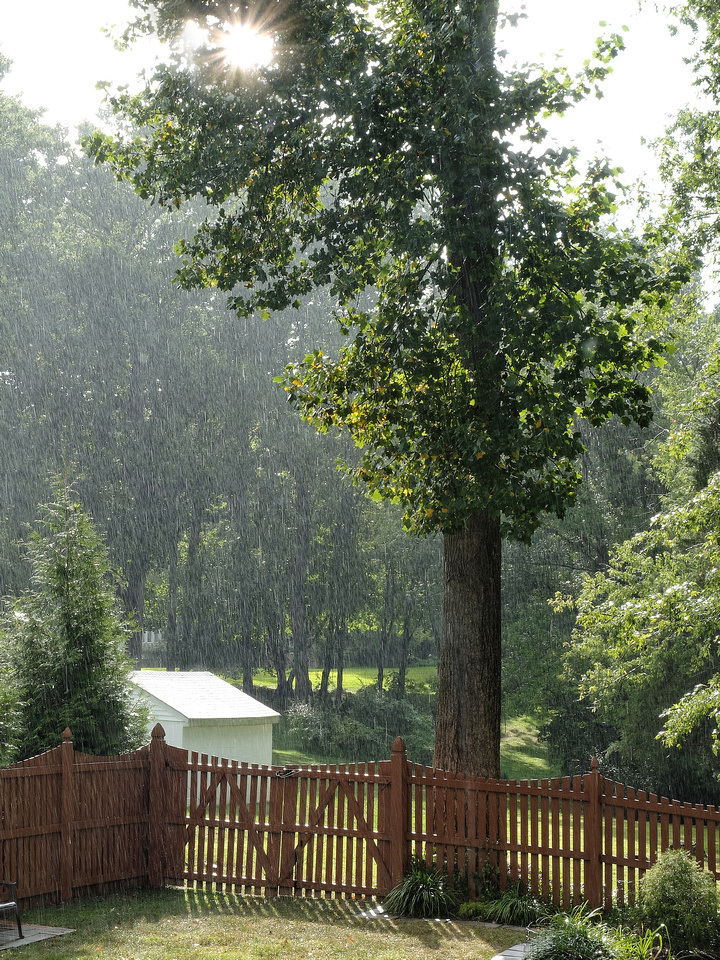
"Seduced a sun-lit August day with crystal clear rain showering the fresh air"
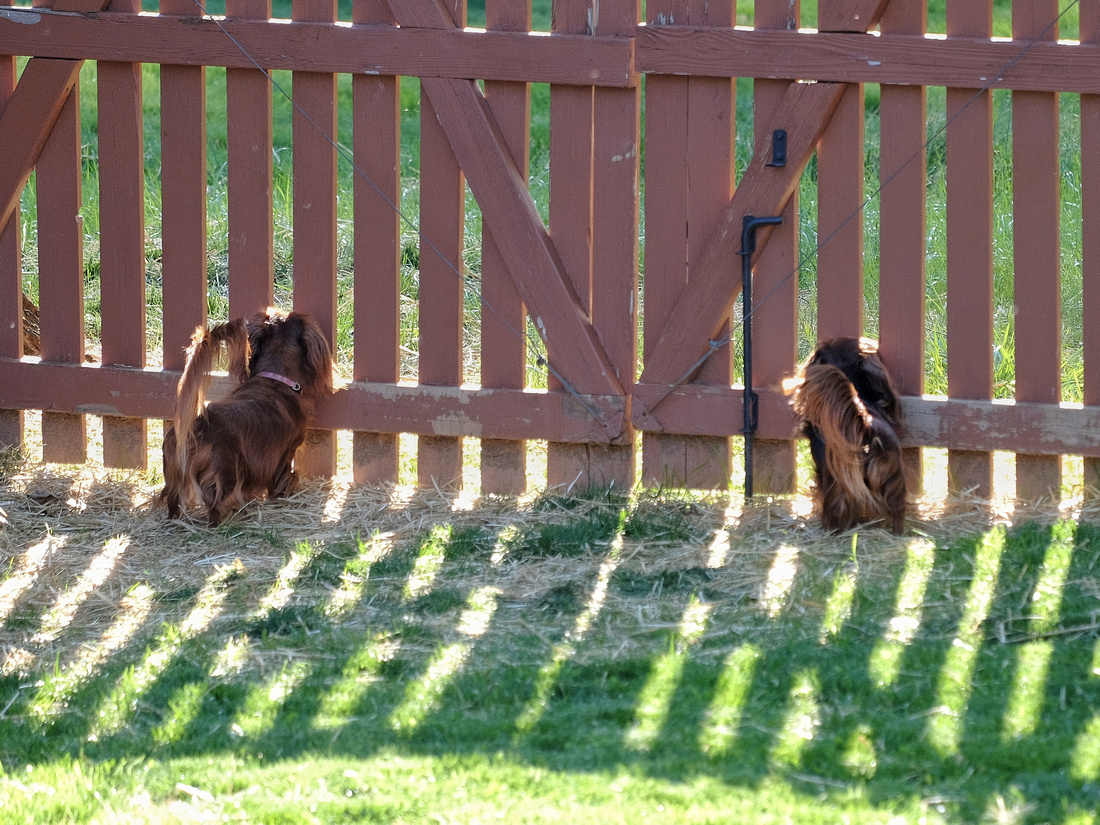
For now a pair of fearless, Teutonic Teckels stand, at the ready, as Sentries,
Behind the golden gates of entry to Castle of Orr.
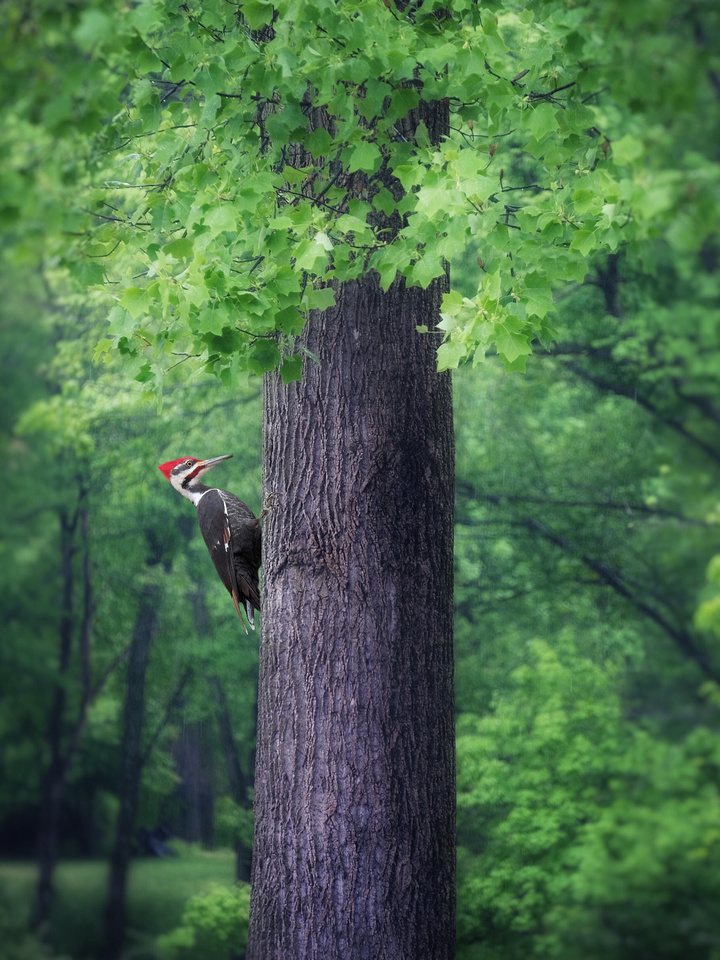
"Granted a Pileated Woodpecker, his right to drill, drill, drill"
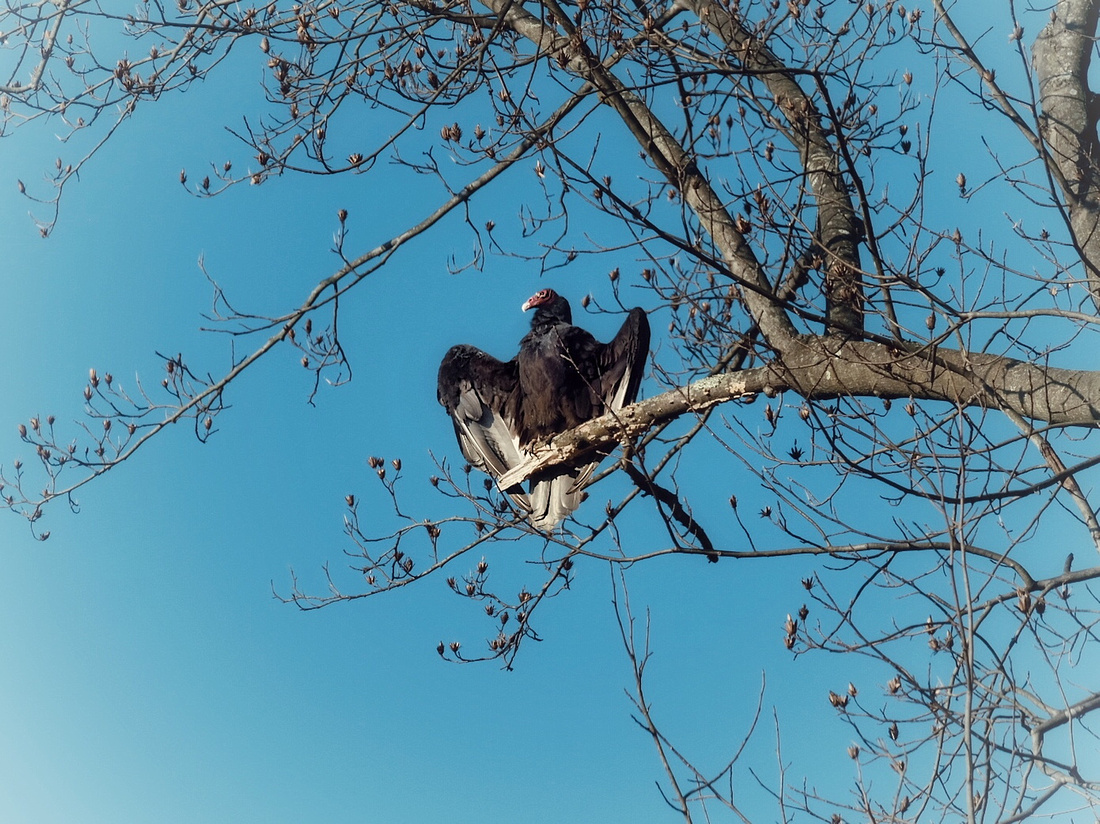 “Sun drying its soaring wings in a shield-like posture”
“Sun drying its soaring wings in a shield-like posture”
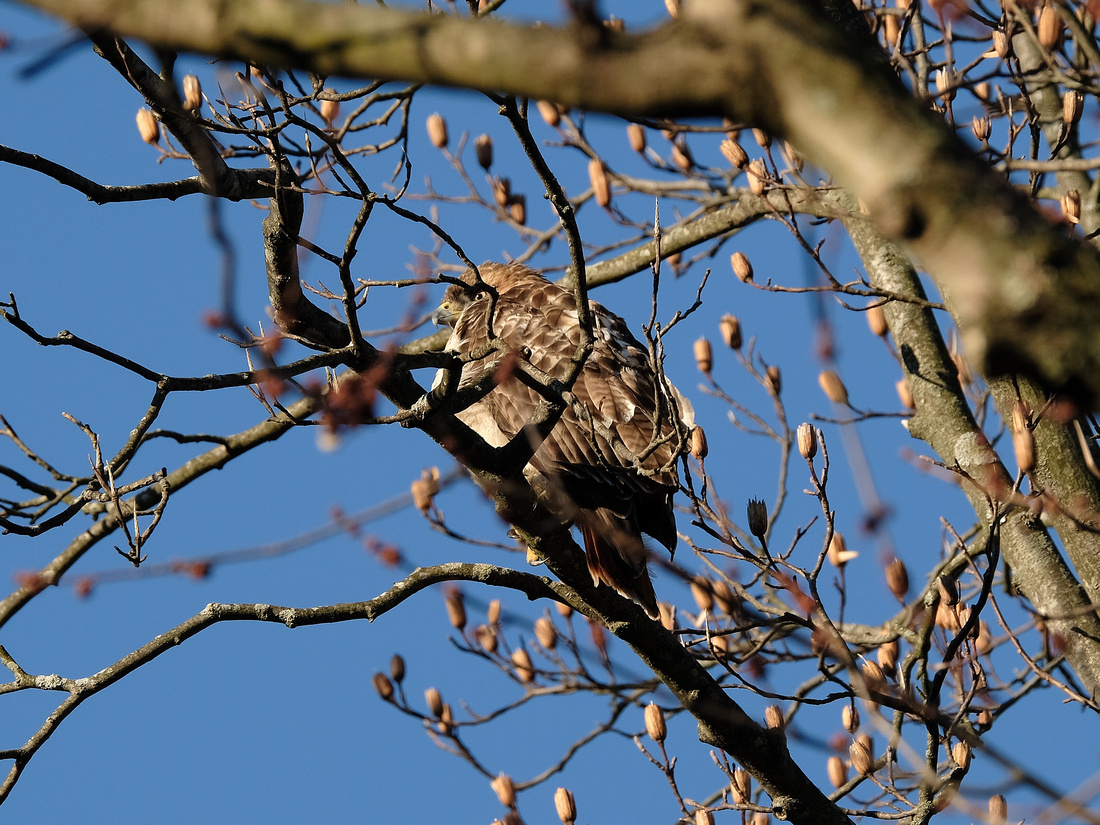 "Red-tailed Hawk defiantly roosts"
"Red-tailed Hawk defiantly roosts"
 "Classic Currier and Ives Christmas moment"
"Classic Currier and Ives Christmas moment"
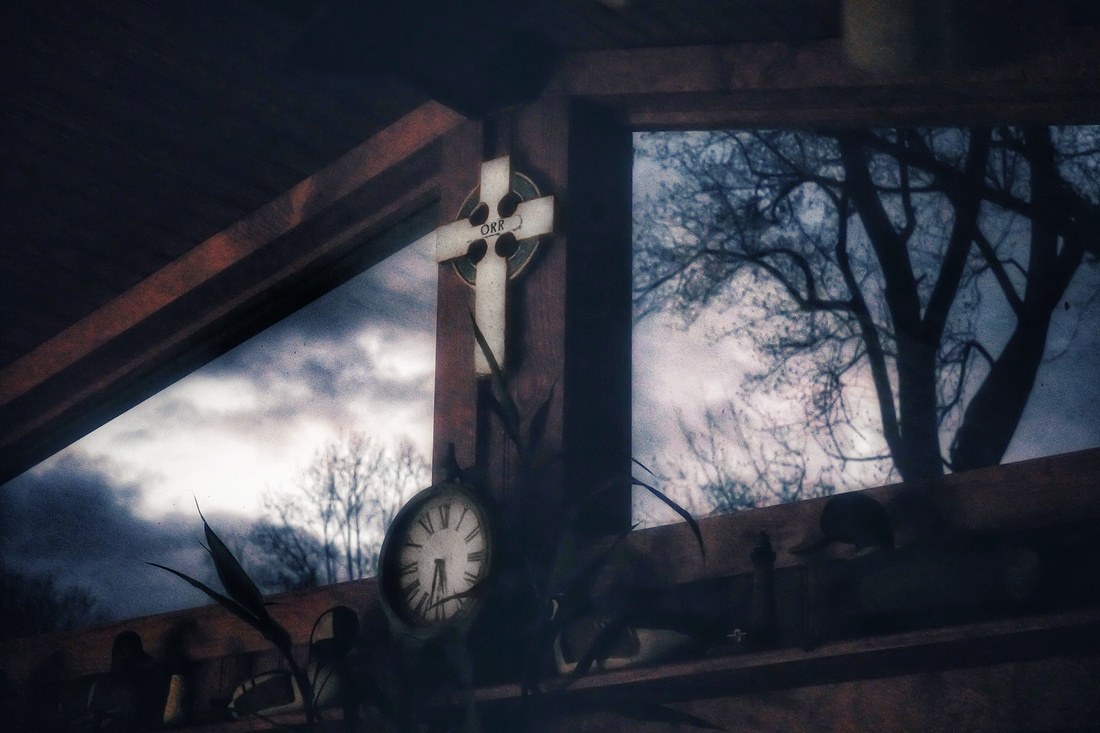 "Highlighted by a Celtic Cross, bearing the name of a German-blooded family,
"Highlighted by a Celtic Cross, bearing the name of a German-blooded family,
with a deeply infused ancestry of Irish Souls"
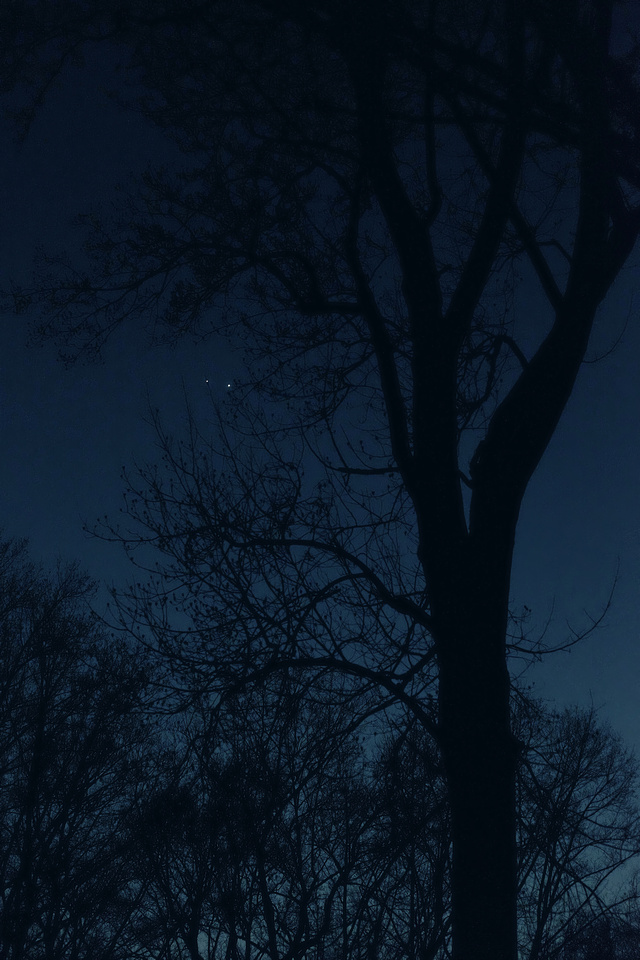
“Solar System Eyes peer back at us” - Jupiter and Venus: March 1, 2023.
The year 2040 will be the next time these two planets appear this close together.

“... The ghost of a young raccoon,
Lies with its body tightly curled,
Shivering through the end of
Another long, cold, starry night ...”
(Illustration by D. W. Orr from a stock image)
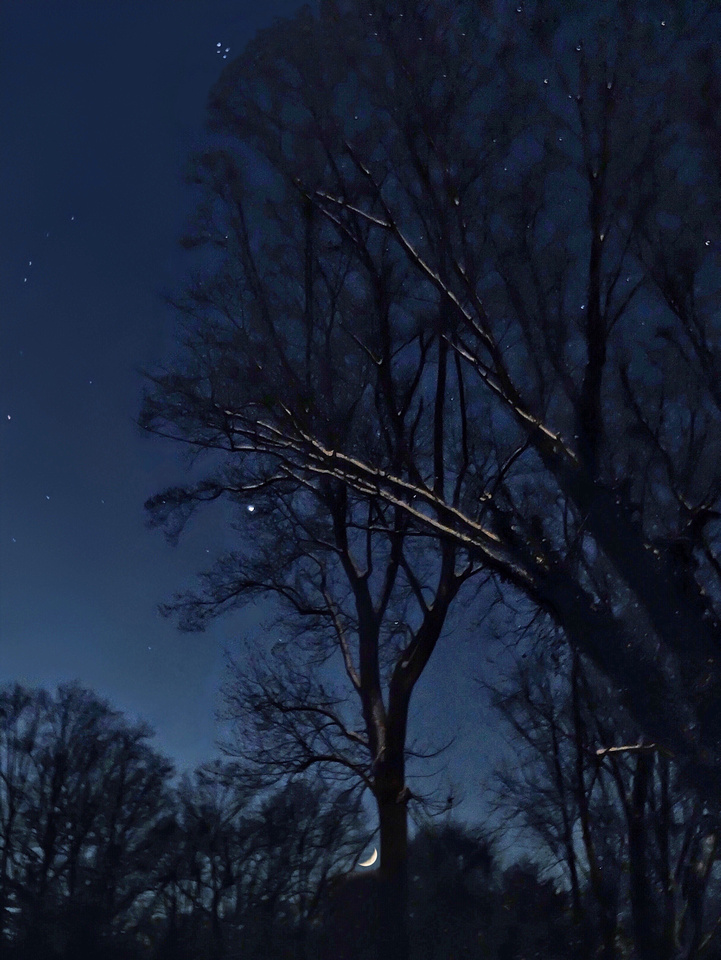
Pleiades, Jupiter, Moon Conjunction on a Snowy Evening, by D. W. Orr Photography & Poetry
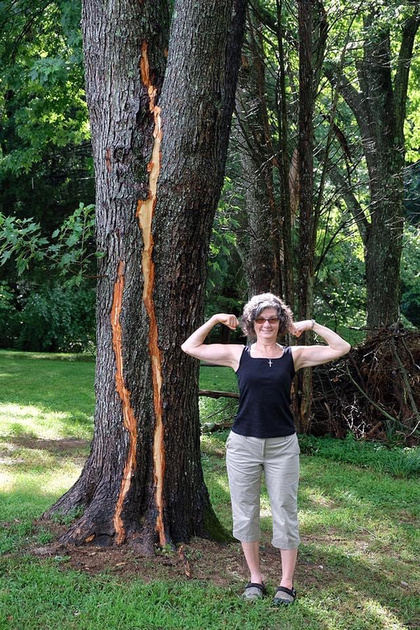
July 1, 2017: BREAKING NEWS: A REAL-LIFE WONDER WOMAN FROM FALLSTON SURVIVES A NEARBY LIGHTNING BOLT STRIKE IN HER BACK YARD!
With a storm thundering and rolling in from the west, Cynthia Orr of Fallston, Maryland, had to let her three dogs out to relieve themselves before the storm broke. Mrs. Orr said, "My two Weimaraners and Dachshund just had to finish their business before I could let them in". Mrs. Orr continues: "Just then, I could feel my hair start to crackle and BOOM!, a bolt came down close to me and lit the sky". That was more than enough incentive for the two Weims (the Doxie had already been taken inside) to skedaddle back into the house with Mrs. Orr following close behind in a duck and cover trot. Mr. Orr located the tree that the bolt had struck just outside the family's fenced in yard - a mere twenty yards from where Mrs. Orr stood as she tried to herd the Weims back into the house. We salute Mrs. Orr of Fallston for her heroic Wonder-Woman like encounter with nature's most striking thrust.
]]>
Something no longer of this time.
That has come, only to observe.
Far away in the distance,
Train carriage wheels,
Roll along steel tracks,
With their rhythmic, thumping cadence.
Overhead, geese in chevron flight,
Announce they are headed home,
As their honking melody fades into the twilight.
Soon, a canine howl penetrates a lunar-lit night.
It is a cry of universal loneliness.
Beckoning all to listen,
To understand their pleading, of …
Recognize me.
I exist.
Tell me,
These laws of physics,
that govern our universe,
How and Why did they come about?
Space, Time, Matter, and Energy.
Why Entropy, and not Forever?
From Absolute Nothing,
Came Absolute Everything,
All very Suddenly,
Ever expanding.
The Creation.
______________________________________________________________________________________________________
D W Orr
Environmentalist, Weimaraner/Dachshund Companion, Photographer, and Poet-Provocateur
Harford County, Maryland,
Here, where it all began, 255 years ago, in the USA
May 5, 2024
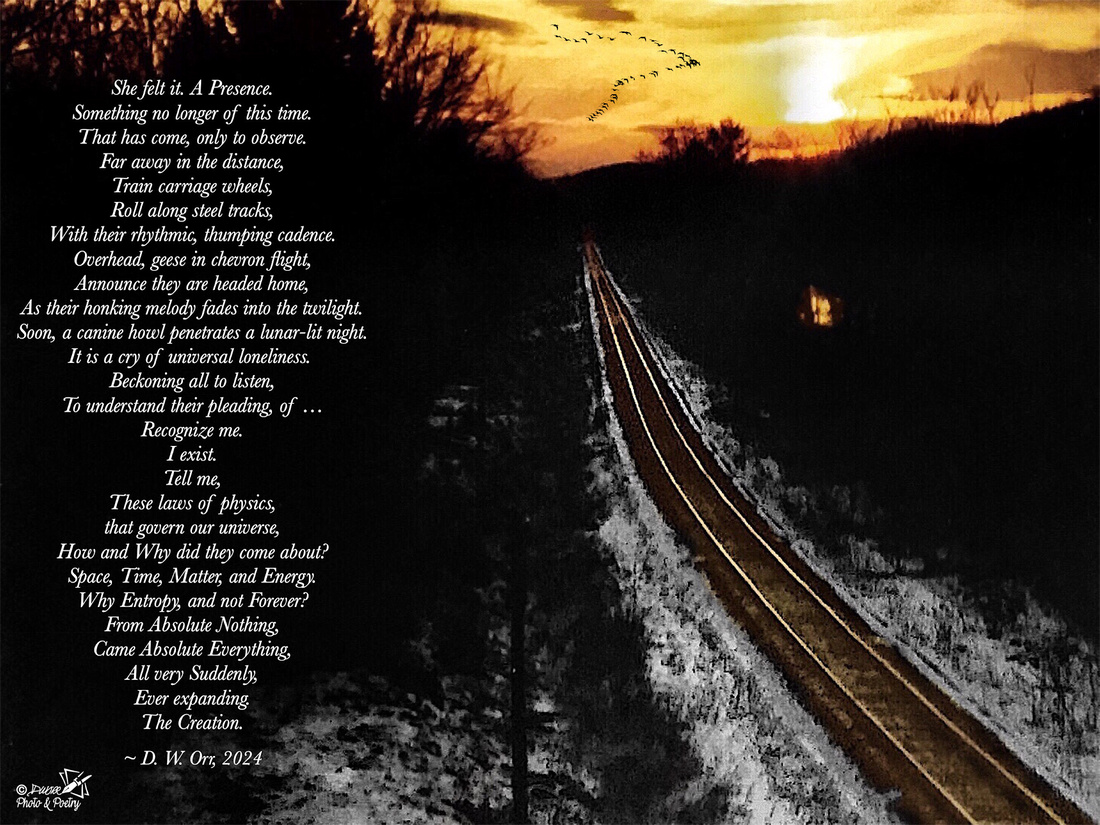
Image by D. W. Orr Photo & Poetry
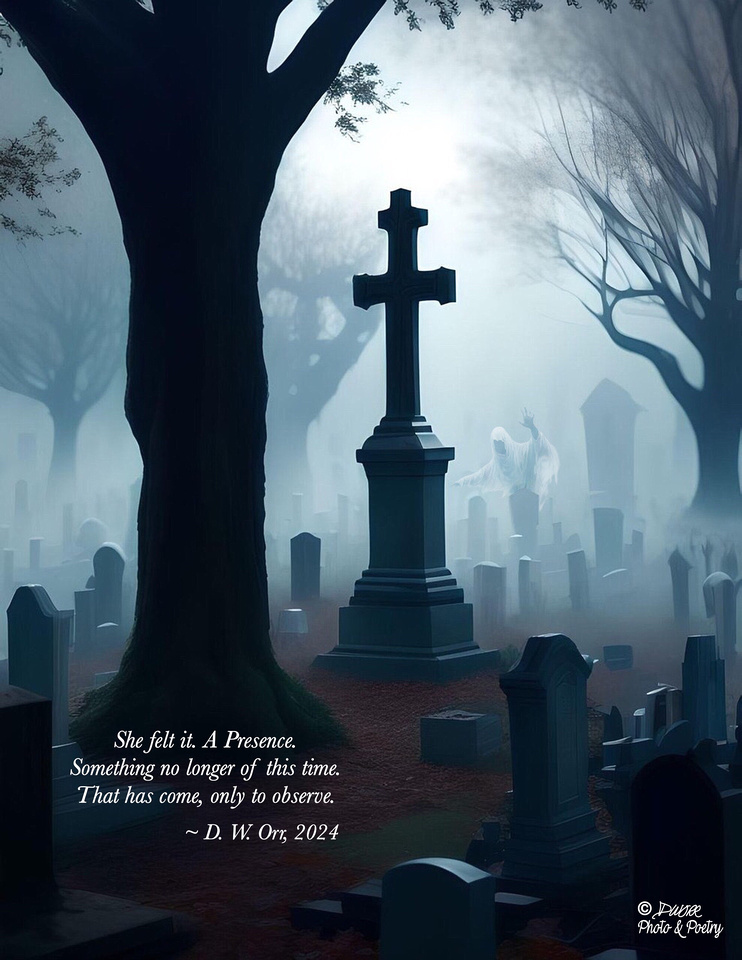
“The Restless Wanderer”, Modified Stock Image by D. W. Orr Photo & Poetry
 ”Cry of the Wolf”. Image capture from online video,
”Cry of the Wolf”. Image capture from online video,
Wolf Conservation Center, South Salem, NY
the legs of a butterfly
spread gently astride
a creature’s head as it
siphons turtle tears
for nourishment.
A symbiotic embrace,
accepted with grace,
and understanding,
by the ancient and
plodding reptile.
Fighter planes called Zeros,
With bright crimson-red
Circles on their fuselage,
Swoop down on an unsuspecting
Harbor with docked warships.
The Day of Infamy has begun.
A “Sleeping Giant”
Awakens and weeps.
Three days later, a
Mother and Father
Weep with Joy as a
Newborn with Smiley Eyes
Births with a World at War.
The Enola Gay drops its payload.
An enormous cloud of destruction arises.
Three days later, a mushroom-like
Blast will crush another city and end the War.
Massive civilian casualties result.
With the brilliant flash of Death-Light,
What remains are dark Human Shadows,
Etched in stone buildings and sidewalks,
For all whom follow to witness.
A 10-year old boy stands stoically,
At the Nagasaki crematory.
Head held high,
Staring straight ahead,
Barefoot and biting his lower lip,
He awaits patiently to deposit
The body of his baby brother,
Who lies limp, strapped to his back.
The World will never be the same,
As the Atomic Age commences.
Humanity Weeps.
On his USA stage debut,
A young singer,
Whose eyes smile large,
Sings warmly in his
home language, the
Land of the Rising Sun.
For three weeks his sweet song
Permeates and dominates
the Summer Air of ‘63.
Lyrics speak of a Man
who holds his head up high,
Whistles while he walks,
So that tears do not fall.
Five months pass, and
three rifle shots ring out
In Dealey Plaza.
The leader of the Free World
slumps in the limousine.
Camelot is dead.
The Land of Democracy
Grieves and weeps.
The Times They Are a-Changin’🎶,
And very rapidly.
Three months now pass.
The Fab Four arrive in the
Land of Milk and Honey,
At the ‘Big Apple’.
“She Loves You,
Yeah, Yeah, Yeah”
They sing,
And pop music will
Never be the same.
No more crying,
Optimism reigns.
Flight 123 departs from Tokyo,
In the Summer of ‘85,
Never to land safely,
In the deadliest air disaster ever.
Families grieve and weep for
Five hundred and twenty lost souls.
Including a mourning widow and
Two daughters of the
Man with Smiley Eyes.
On this very day,
A giant battleship of
the Second World War,
Rest it’s hull just below the
Calm waters of Pearl Harbor,
As it sadly leaks tears of oil,
Back to the surface,
As a continuing reminder of the
Twentieth Century Folly of Man.
__________________________________________________________________________
* This poem was published in the book, Maryland Bards Poetry Review 2024 *
D W Orr
Environmentalist, Weimaraner/Dachshund Companion, Photographer, and Poet-Provocateur
Harford County, Maryland,
Here, where it all began, 255 years ago, in the USA
February 4, 2024

“The Man with the Smiley Eyes” (Kyu Sakamoto, 1941-1985). Enhanced by D. W. Orr
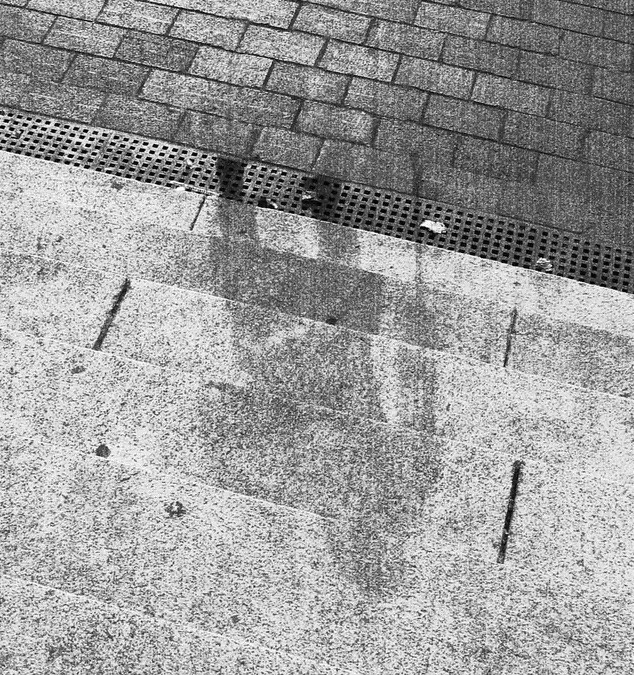
Hiroshima Shadow
(Image credit: Universal History Archive/Universal Images Group via Getty Images)
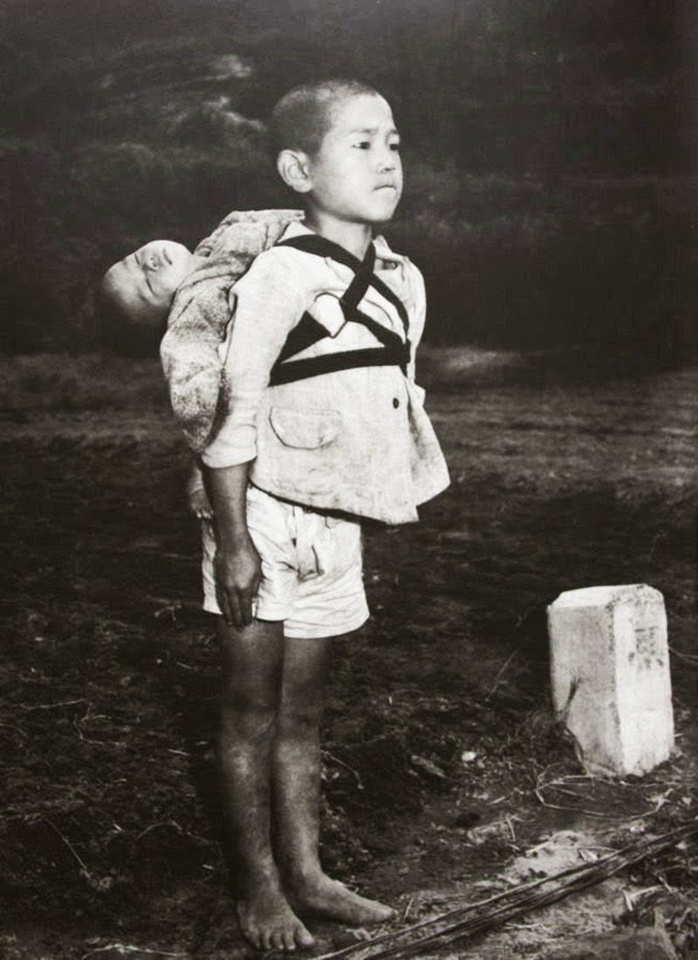
The Standing Boy of Nagasaki
(Image Credit: Joe O’Donell for the US Marine Corps, Sept 1945)
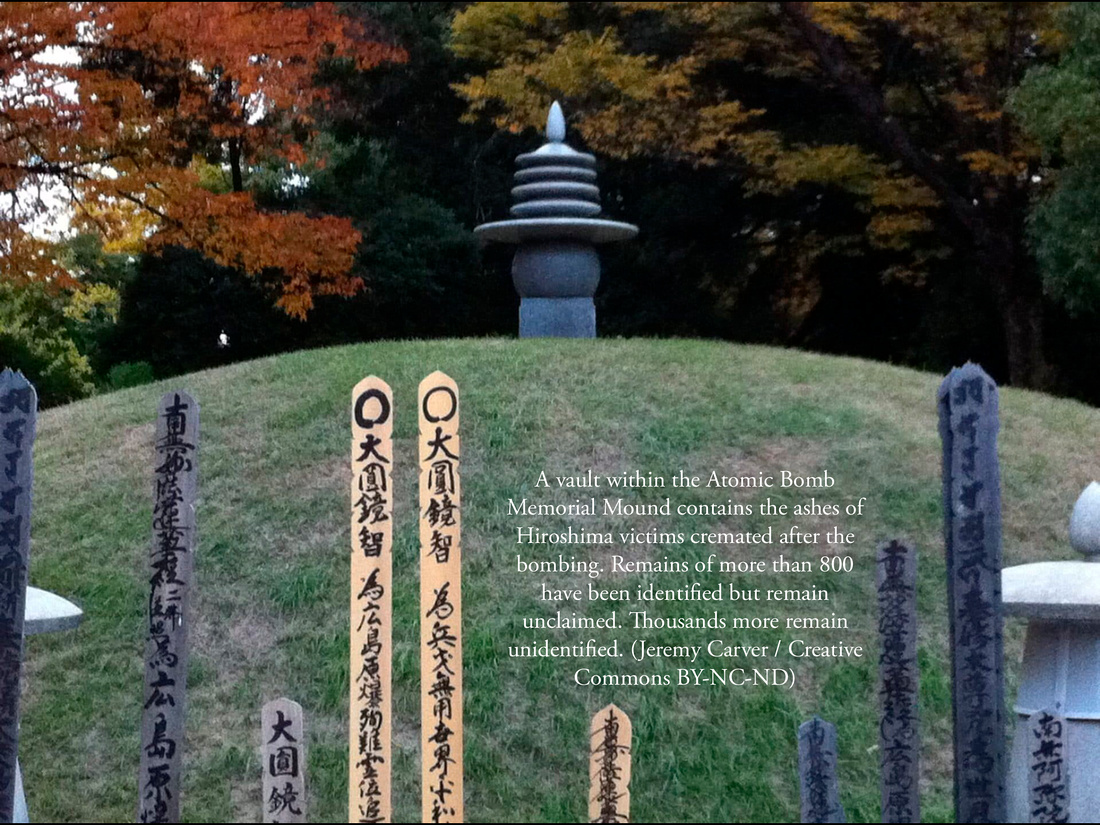
Atomic Bomb Memorial Mound at Hiroshima, by Jeremy Carver
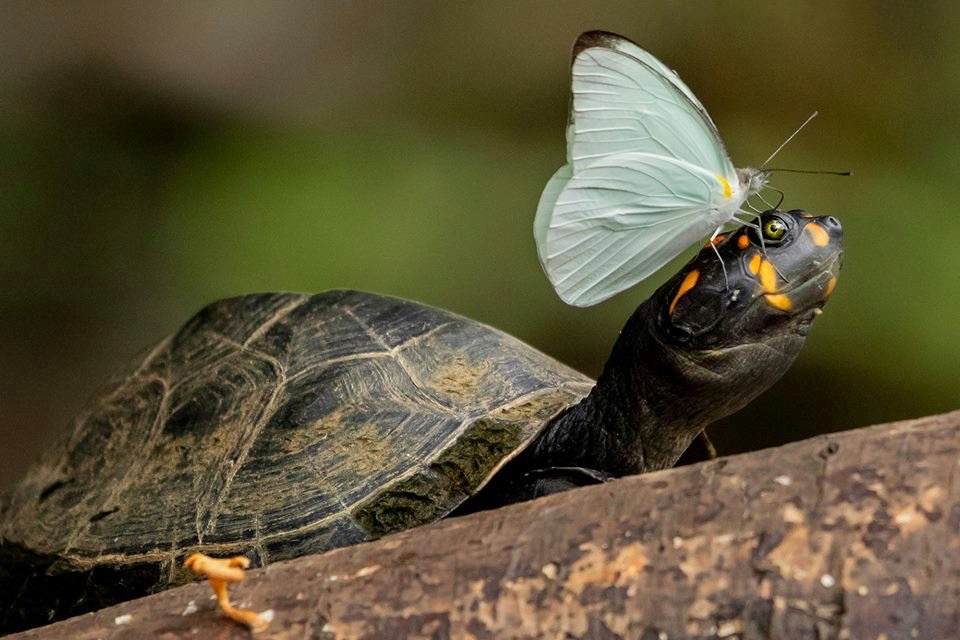 Image by Lucas Bustamante
Image by Lucas Bustamante
 “Tears of Oil”. Image by Mike Fitzpatrick.
“Tears of Oil”. Image by Mike Fitzpatrick.
]]>
(the grind)
There a vision of myself stood,
Pondering the ocean’s horizon,
My boot-heels sinking imperceptibly,
Into the soft sucking sand,
As the giant bladed machines,
Slowly whirled before me,
Generating energy for all the world
To grind through another day.
Senseless war continued to escalate,
Across this Atlantic Realm, for an
Egomaniac’s fantasy to expand a
Rusting Russian Empire, built itself,
On an ever sinking pile of ruins.
-Yesterday-
(the freeze)
Dark deep-set eyes,
Of a primitive ape-like being,
Peer across a grim, glaciated and
Ice-sheeted landscape.
This hominin, a planet population
Member of a remaining few thousand,
Will survive and breed through this
Harsh, Pleistocene Epoch.
Just an Ice Age, Thin Thread of Sentient-being Life,
Is all that bridges us back over 600,000
Years of Evolution as Homo Sapiens.
And below these upright beings lies the strata of
Giant Creatures that once roamed and dominated
This rocky planet for over millions of years.
Only to be wiped clean of their presence by an
Apocalyptic collision with another rocky sphere,
Hurled by chance through the vast
Expanse of our own Solar System.
-Tomorrow-
(the burn)
Through the Space Station Portal
Gazed a long term Time-Traveler.
Below floated the Blue-Marble planet, Earth.
The Traveler’s heart was heavy with grief,
Now knowing a rendezvous with home would not be.
For unfettered Power and Avarice would
Prevail during the preceding four-score years:
Worldwide food shortages, drought, epidemics, and
Northern-bound mass migrations had changed the
Geopolitical landscape -
Into one of Absolute, Final Despair.
Anthropogenic climate change had run its course,
Without appropriate intervention of mitigation policies.
A human-wave of Chinese incursion into Siberia,
Becomes the trigger point -
Artificially Intelligent Machines
Launch an irrevocable nuclear strike,
From the Perpetually-at-War, Russian Empire.
A post-holocaust population
crash was now emerging:
500 million hollow-eyed souls remained.
Living primitively and wandering aimlessly,
Further and further,
Into the far reaches of the Northern Hemisphere.
Now, a Hot-House Age, Tenuous Line of Life is
The New Bridge to Eternity.
But yet another species of Biodiversity
Extinction was near: Mankind.
However, the Rocky Planet, once known as Earth,
Would carry on for another 4.5 billion years,
Until its host star, once known as Sun, would
Extinguish its life sustaining Light and Energy.
____________________________________________________________________________________________________
* This poem was published in the book, Maryland Bards Poetry Review 2025 *
D W Orr
Environmentalist, Weimaraner/Dachshund Companion, Photographer, and Poet-Provocateur
Harford County, Maryland,
Here, where it all began, 254 years ago, in the USA
November 2, 2023
____________________________________________________________________________________________________
Afterthought: A Prophecy of Irony
— A Climate Change SeeSaw —
The irony of apocalyptic climate change:
It will lead to a hothouse earth environment,
Within the 21st century—
With initially unlivable areas in the south,
Which will lead to mass migration northward,
Which will cause major geopolitical disruption,
Which will lead to a worldwide nuclear war,
Which, after the immediate human die-off,
The onset of a decades-long nuclear winter,
Which will cause a reversal of any remaining
Humanity back to a mass migration southward.
__________________________________________________________________________________________________
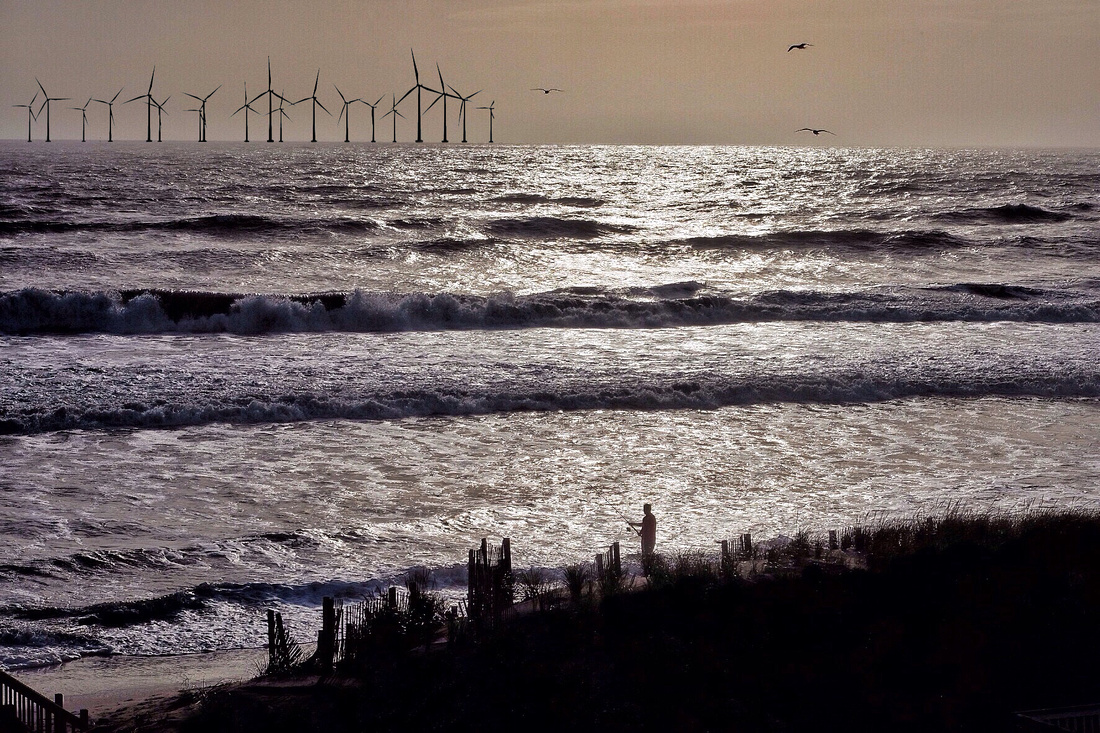 TODAY: "Offshore Wind Power" by D. W. Orr Photography
TODAY: "Offshore Wind Power" by D. W. Orr Photography
 YESTERDAY: "Fireball Over Stonehenge" by D. W. Orr Photography
YESTERDAY: "Fireball Over Stonehenge" by D. W. Orr Photography
 TOMORROW: "The Earth at Night". Image courtesy of NASA Earth Science.
TOMORROW: "The Earth at Night". Image courtesy of NASA Earth Science.
____________________________________________________________________________________________________
To learn more about the tenuous line of life:
Popular Science: “Ancestral Bottleneck”
Hothouse Earth, AI, and James Lovelock
]]>
What are you doing?
Why are you not celebrating the
Joy of all Life, including your own,
Each and every moment?
Instead, there you are, riding
On top of your lawn mower,
Powered by an internal combustion engine,
Sputtering out loud obnoxious exhaust fumes,
Cluttering the atmosphere with
More greenhouse gases,
For another wasted two hours.
All for that splendid lawn look?
Go pollinator wild, you fool!
Sit down outside,
Savior a cup of tea,
Pet your loyal dog,
Watch the faeries hover,
The butterflies flutter.
Listen for the chirping birds,
The buzz of the bumbler,
All inside your lush garden.
Be a wild nature-child,
Dress and live like the 1830’s.
‘F’ the news, partisan politics,
and the celebrity worshiping culture.
Regain your awe and wonder,
As it was as a wee-toddler,
So to be a Tasha Tudor.
In this Play called Life, the
Real You unmasks itself,
at the Beginning,
and at the End.
Everything in between is just
an Interlude of Confusion.
~ D. W. Orr, 2023
___________________________________________________________________________
🎶Blow up your TV,
Throw away your paper,
Go to the country,
Build you a home.
Plant a little garden,
Eat a lot of peaches,
Try an’ find Jesus,
On your own.🎶
~ “Spanish Pipedream”, John Prine, 1971
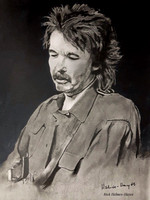
John Prine (1946-2020)
by Rick Helmes-Hayes
___________________________________________________________________________
D W Orr
Environmentalist, Weimaraner/Dachshund Companion, Photographer, and Poet-Provocateur
Harford County, Maryland,
Here, where it all began, 254 years ago, in the USA
August 2, 2023
 Tasha Tudor (1915-2008): Children's book author, illustrator, and naturalist.
Tasha Tudor (1915-2008): Children's book author, illustrator, and naturalist.
She was beloved by many for her love of flowers, trees, birds, and animals.
Image Credit: Unknown.
Came Little Walter.
To moon-dance among
The seeds of the sun,
Arranged by Big Walter,
So carefully as daylight begun.
The dawn of a new day and
Woodrow arrives all red-bellied,
His scarlet scalp gleaming,
A mosaic feathering of black & white.
Landing vertically to side-eye
For amber nuggets of suet.
Off he flies with his prize,
So gallantly streaming.
The springtime buds of magenta emerge
With the equinox arrival of a pair
Of rust-shouldered winged hunters of
Creatures that patter and slither on the ground.
Perched on a 20’ high observation limb,
They watch vigilantly for movement below -
Ready at the quick to dive and snatch
Their prey with one quiet strike.
As each passing Vernal day
Lengthens with dewy fringed light,
And the flora awakens,
With great anticipation,
Soon come the thick buzzing
Of skilled flying faeries.
They, with iridescent
Emerald green backs,
Glittering ruby throats,
Hover with hunting tongues,
Siphoning sweet golden nectar
From awaiting blooming beauty.
Thereafter,
Orange black-trimmed wings
Flutter their way back from
A long arduous journey.
Pollinating as they go,
They dutifully lay eggs
On toxic host plants to begin
A miraculous transformation,
From creeping larvae
To hanging pupae, and replicate
Back to their majestic selves.
Four generations of Monarchs
Complete the 4800 mile roundtrip
Voyage from Mexico and back.
A faithful avian caregiver,
Wings in from the blue sky above,
With the same color on his back,
And the ground’s soil tone on his chest.
He shows his impressionable youngster
The ways and means of feeding for herself.
The black, spot-chested invaders
Make their skyway descent and
Raucously, ravenously compete to
Consume community mealworms.
One of theirs, the Stoic Starling,
Over many summer weeks,
Makes due with a withered leg,
Only to succumb to a deadly dive
Attack from a watchful raptor.
Cheeks fully puckered,
Gorged with morsels of treasure,
A small striped burrower scampers away,
To stash the goods for winter store,
A bountiful harvest most galore,
For use yet, on another day.
As Mother Earth rotates
From Day into Night,
Its Creatures stir …
Blue Jays squawk,
Gold Finches sunflower sit,
Vultures hover above it,
Gray squirrels raid,
Catbirds bathe,
White-tails graze,
Starlings slovenly gobble.
…
Herons tip-toe about,
Crows gather about,
Swallowtails dance about,
Chipmunks scurry about,
Wrens skip & sing about,
Doves coo about.
…
The Pileated pecks & packs,
The Titmouse seed-cracks,
The Mockingbird bullies,
The Mantis preys,
The Red-tailed plunges,
The Robin berry-bobs.
How enchanting it is,
To end another day upon the
Timely dusk arrival sounds
Of the chipping Cardinal.
But then …
With the moon arising,
The Red Fox screams,
The Raccoon thieves,
The Flying Squirrel sails.
As for Me,
The Big Walter,
Like a creamy diminutive butterfly,
I flutter silently in and about,
My presence not discernible,
Nor remembered.
__________________________________________________________________________
D W Orr
Environmentalist, Weimaraner/Dachshund Companion, Photographer, and Poet-Provocateur
Harford County, Maryland,
Here, where it all began, 254 years ago, in the USA
May 11, 2023
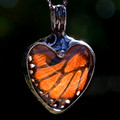
❤️Happy 50, My Sweet Darling❤️

“Deep dark gliding, came Little Walter,
To moon-dance among the seeds of the sun,
Arranged by Big Walter, so carefully as daylight begun”
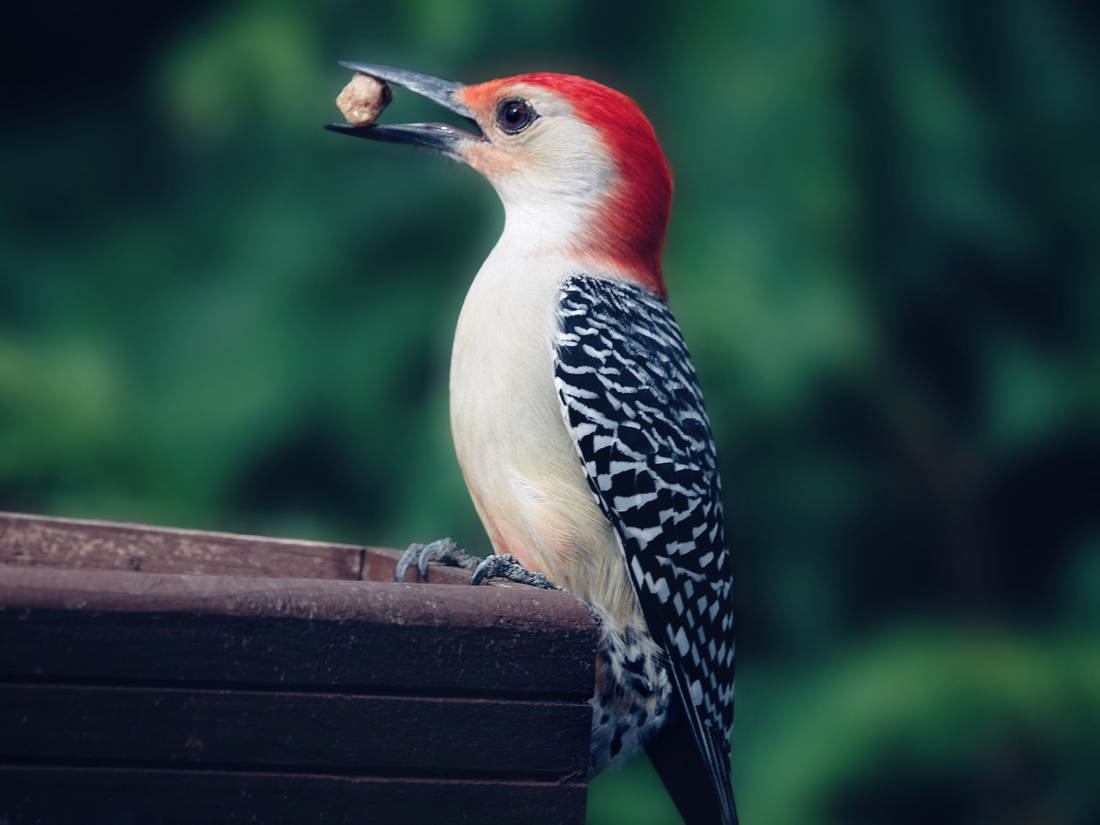 “The dawn of a new day and Woodrow arrives all red-bellied,
“The dawn of a new day and Woodrow arrives all red-bellied,
His scarlet scalp gleaming, a mosaic feathering of black & white.
Landing vertically to side-eye for amber nuggets of suet”
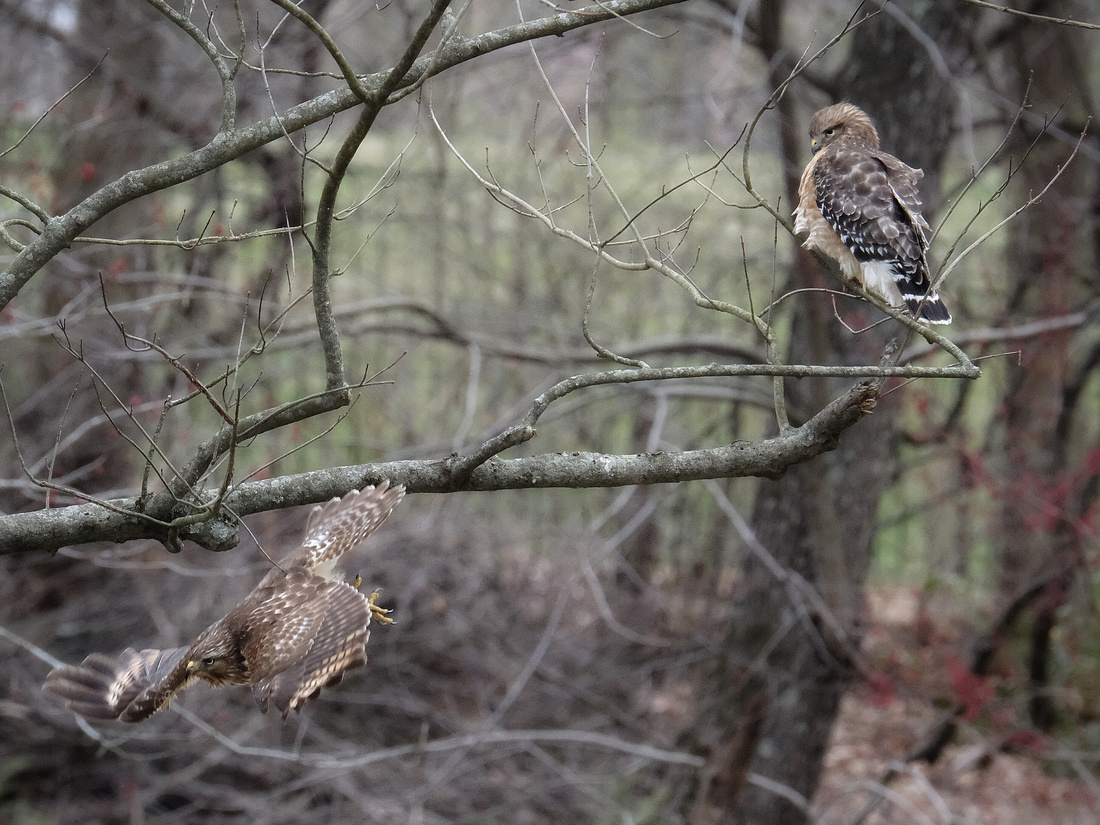 “Of rust-shouldered winged hunters of creatures that patter and slither on the ground”
“Of rust-shouldered winged hunters of creatures that patter and slither on the ground”
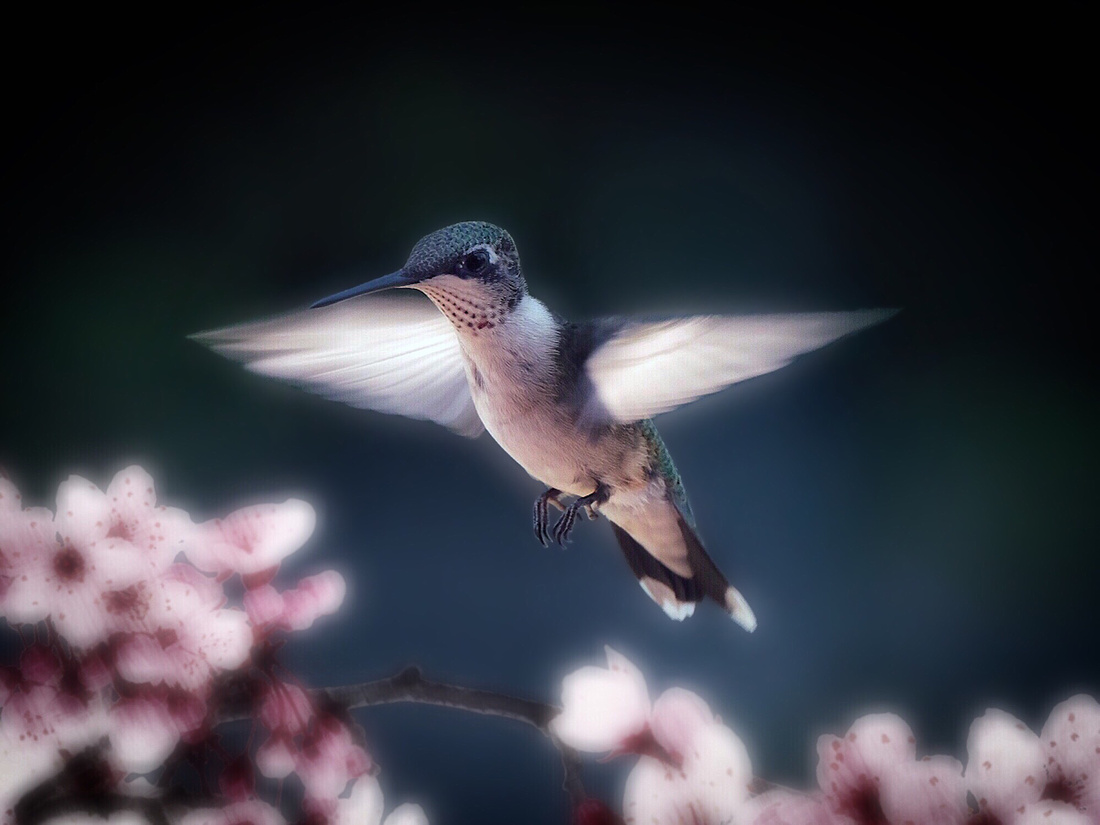 “They, with iridescent emerald green backs, glittering ruby throats, hover with hunting tongues,
“They, with iridescent emerald green backs, glittering ruby throats, hover with hunting tongues,
siphoning sweet golden nectar from awaiting blooming beauty”
 ”Orange black-trimmed wings flutter their way back from a long arduous journey”
”Orange black-trimmed wings flutter their way back from a long arduous journey”

“A faithful avian caregiver, wings in from the blue sky above,
With the same color on his back, and the ground’s soil tone on his chest.
He shows his impressionable youngster the ways and means of feeding for herself”
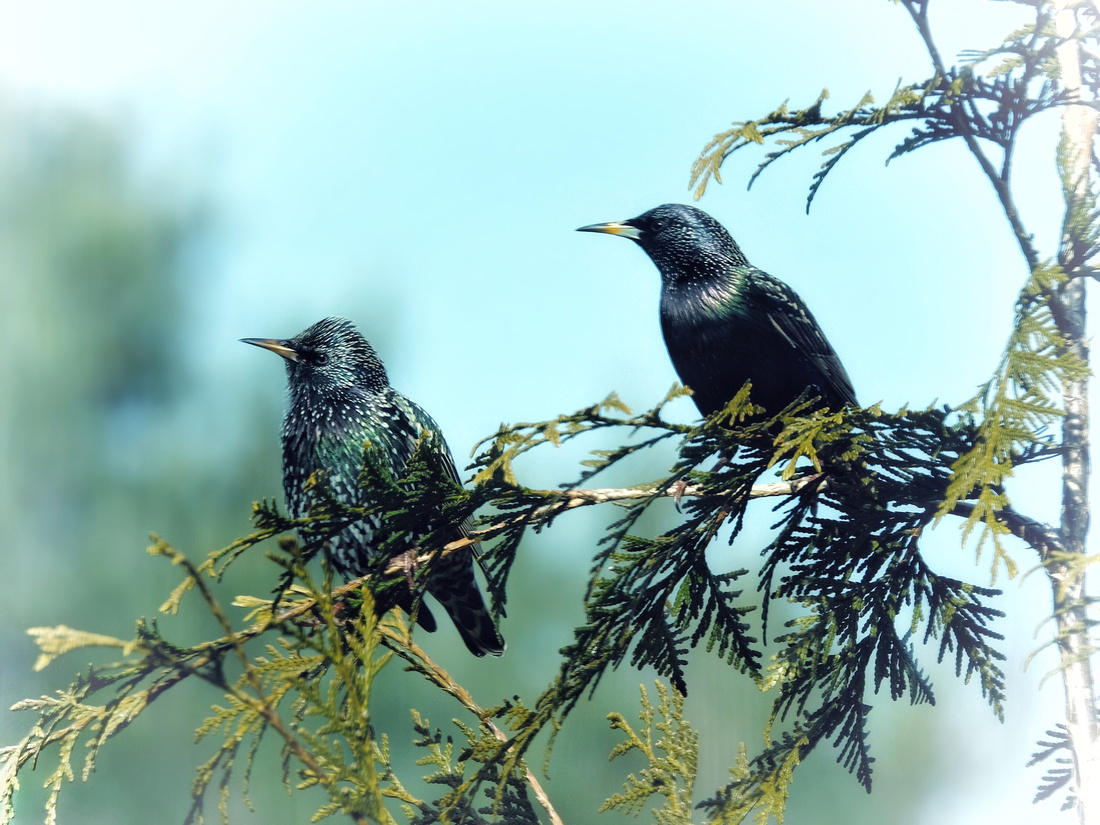
“The black, spot-chested invaders make their skyway descent and
Raucously, ravenously compete to consume community mealworms”
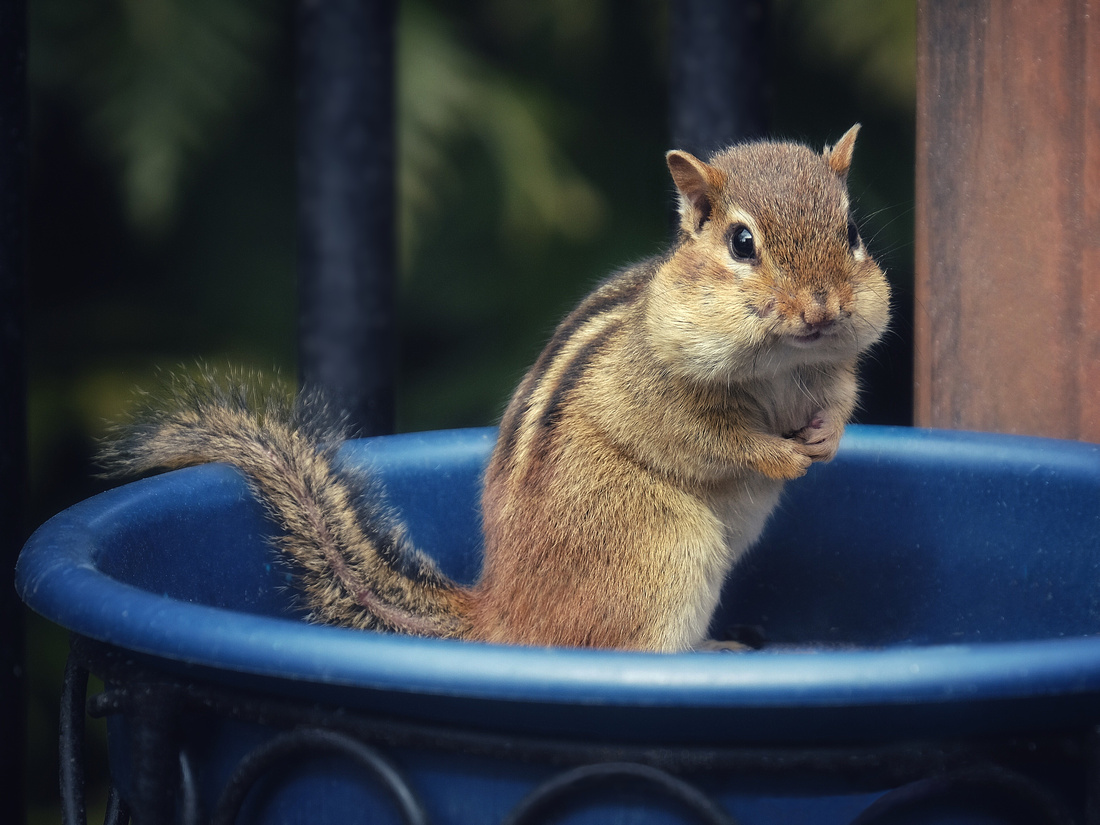
“Cheeks fully puckered, gorged with morsels of treasure, a small striped burrower scampers away”
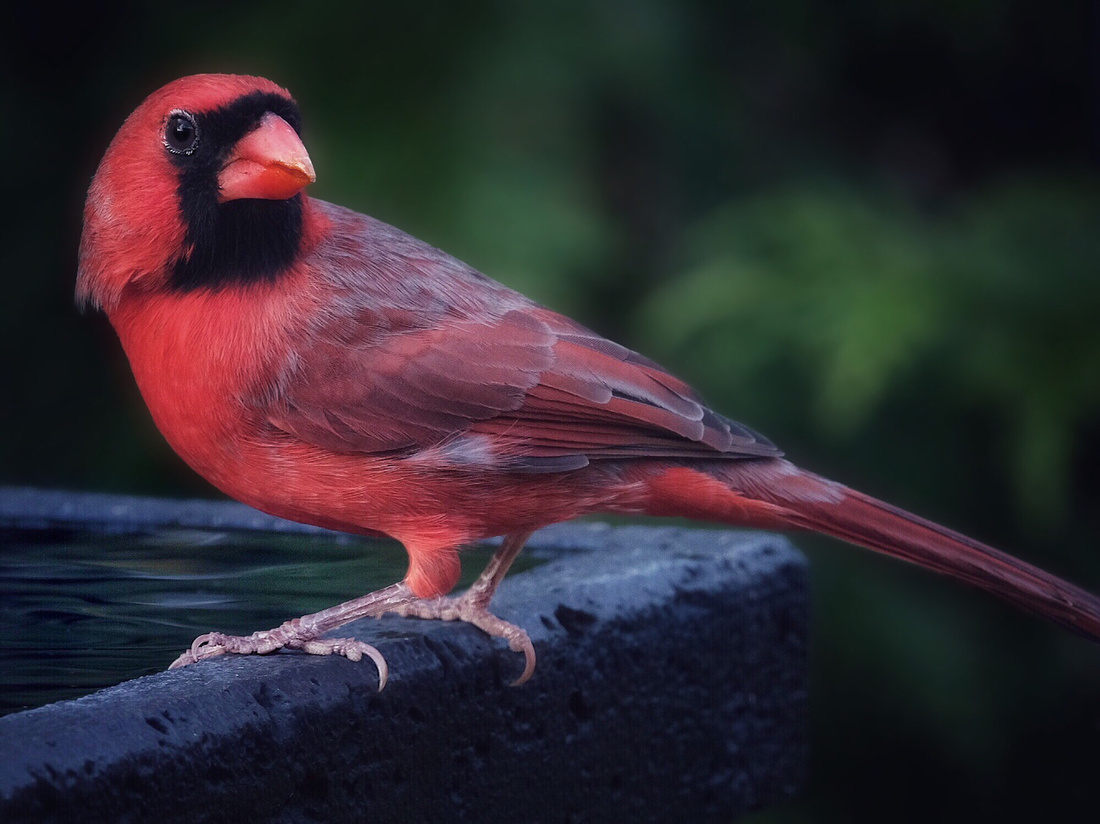 “How enchanting it is, to end another day upon the timely dusk arrival sounds of the chipping Cardinal”
“How enchanting it is, to end another day upon the timely dusk arrival sounds of the chipping Cardinal”
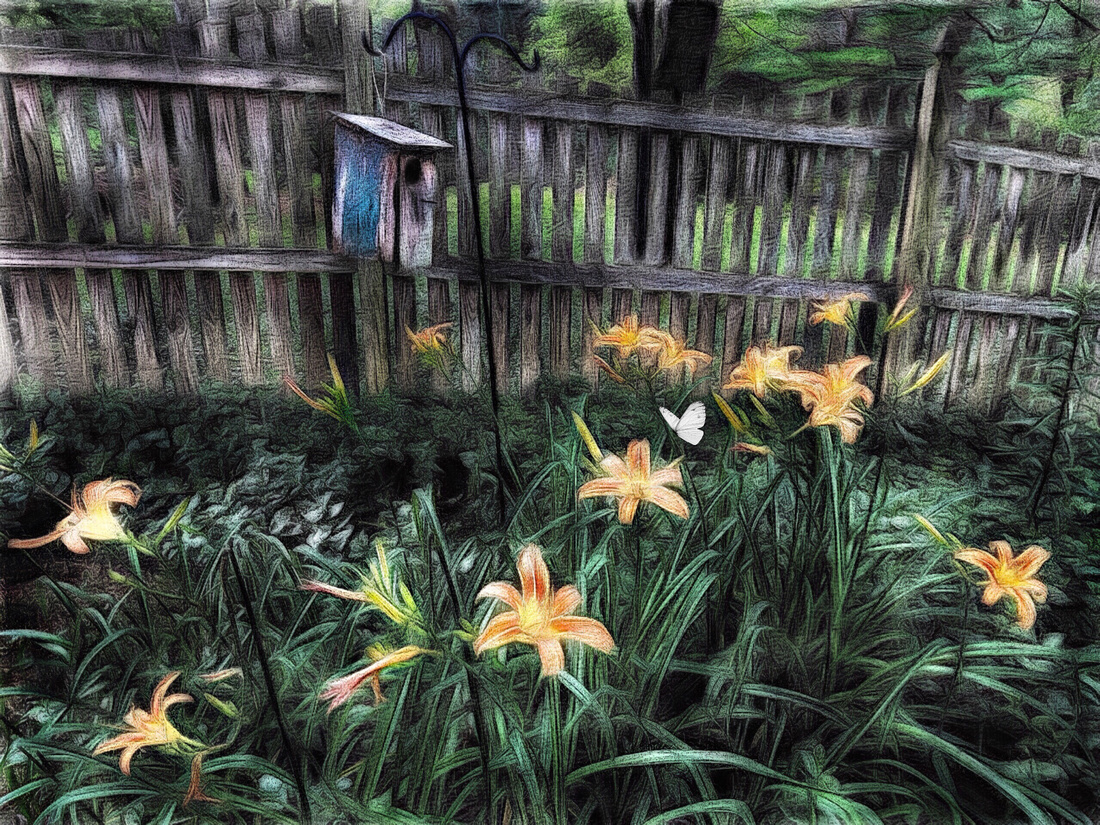
“Like a creamy diminutive butterfly,
I flutter silently in and about,
My presence not discernible,
Nor remembered“
A tale of life, worthy of telling,
of a troubled, humble, man.
Haunted by demons, of not quite his own devise.
Navigating a 65-year, eventful twentieth century life,
Beginning with a family devastating pandemic.
Falling ill as an infant to this third wave of
Deadly influenza but surviving.
Yet, to this same swiftly moving virus of black death,
Losing a cherished older sister of five years of age,
And a young father and doting grandmother,
All in a short span of two weeks,
one tragic January after the
Armistice of our first World War.
A closely knit family of three among 5,000
Lost souls to the flu in the streets of Baltimore.
A widow is left grieving for her
Departed daughter and husband of
Twelve years, with two remaining sons.
A talented illustrator, whose talent would go unfulfilled.
But while serving his nation in occupied Germany,
A WWII-acquired machinist trade would provide
Sufficient skill for a modest wage to support
a middle-class lifestyle for his family of four,
Including joyous Christmas mornings of gifts galore.
He, a man without a high-school education,
Yet followed by two Ivy League college bound sons.
With great pride, he wondered and pondered:
Where did this genetically derived intellect come from?
Later, the loss of a closely bonded brother,
and loving devoted wife, both in their mid-life,
drove him to further despair and desolation.
Now the fire water coursed through his veins,
Numbing the senses of all
Past and present external strife.
Years pass slowly for the lonely old widower.
Flashbacks of massive mounds of
Nazi death camp corpses,
With their decomposing flesh,
Horrify his already disturbed soul.
Humanity and fate had failed him.
Not even a newly arrived grandchild
Could change his outlook on life.
A self inflicted ending was contemplated.
A darkie awaits in the dark of night,
Watching in the alleyway for an easy mark.
From a corner liquor joint,
A walking, wobbling senior approaches.
The mugger strikes and aims for the moon-lit wristwatch.
The tumbling struggle ends quickly,
As the bourbon filled veteran arises in defensive victory,
His time piece dangling from his bruised arm.
Ditz would finally succumb to the
slings and arrows of outrageous fortune.
His ashes were laid to rest with the
remains of his German-rooted, red-headed love,
thirteen years after her passing.
A beautiful, fifteen foot, black marble, family obelisk
closely casts its dark shadow over their final resting place.
_________________________________________________________________________________
Note: The second husband of Ditz's grandmother also expired due to the flu pandemic of 1918-1919.
Thus a total of four family members were tragically lost during the same two-week period.
References: Baltimore Sun Newspaper, January 24, 1919 and February 9, 1919
Baltimore American Newspaper, February 9, 1919
_________________________________________________________________________________
D W Orr
Environmentalist, Weimaraner/Dachshund Companion, Photographer, and Poet-Provocateur
Harford County, Maryland,
Here, where it all began, 254 years ago, in the USA
January 06, 2023
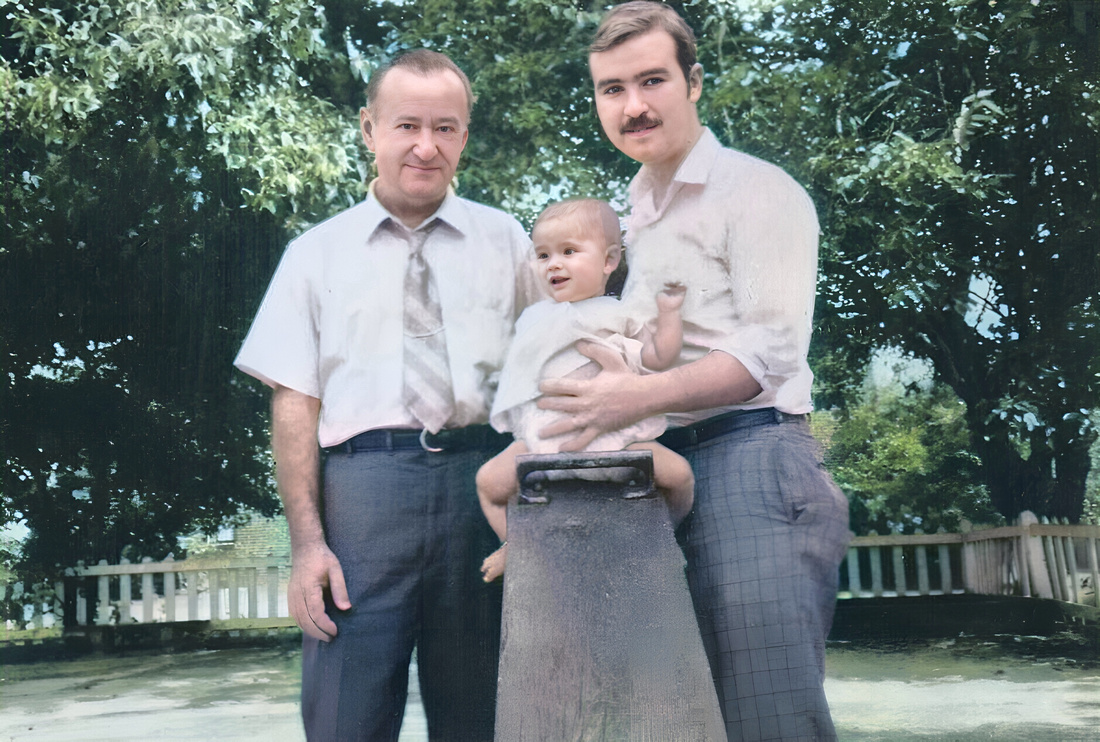
Ditz with his eldest son and grandchild (Colorized/Enhanced by D. W. Orr Photography)

Ditz and the Mrs. in happier times (Colorized/Enhanced by D. W. Orr Photography)
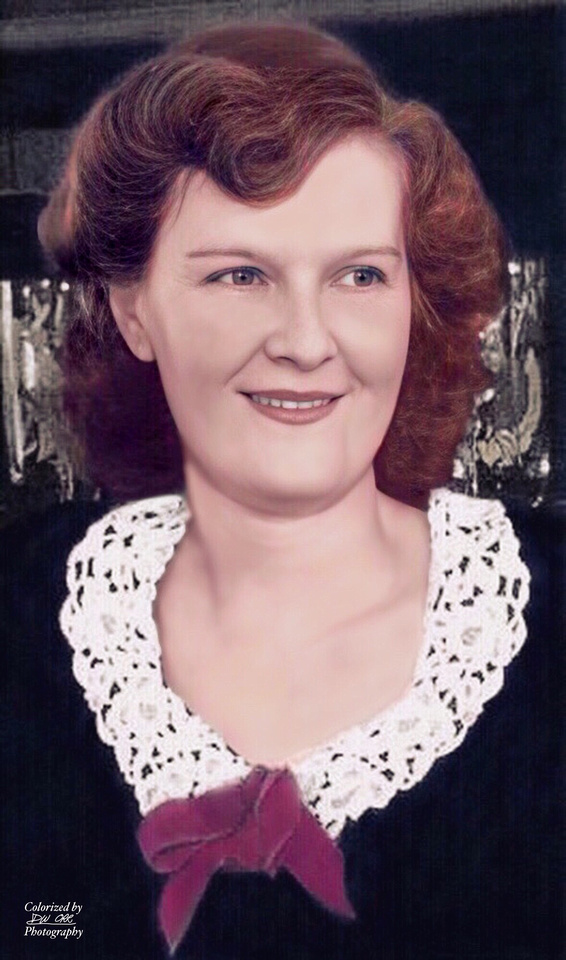
Ditz's Wife of 28 Years (Colorized/Enhanced by D. W. Orr Photography)

"Widow is left grieving for her departed daughter and husband"
(Colorized/Enhanced by D. W. Orr Photography)
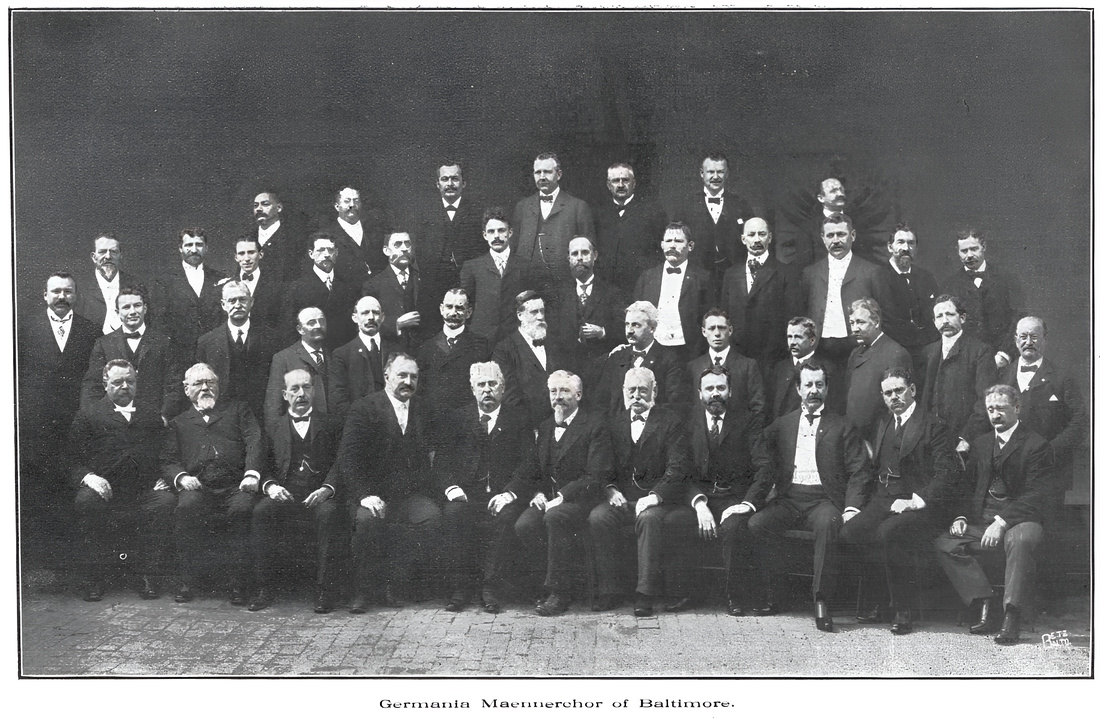
1903 German Men's Choir of Baltimore - Seated 2nd from the left, in the front row, is Ditz's Great Grandfather. Standing second from the left in the second row, is Ditz's father, who died in the 1919 flu pandemic along with his daughter and mother.
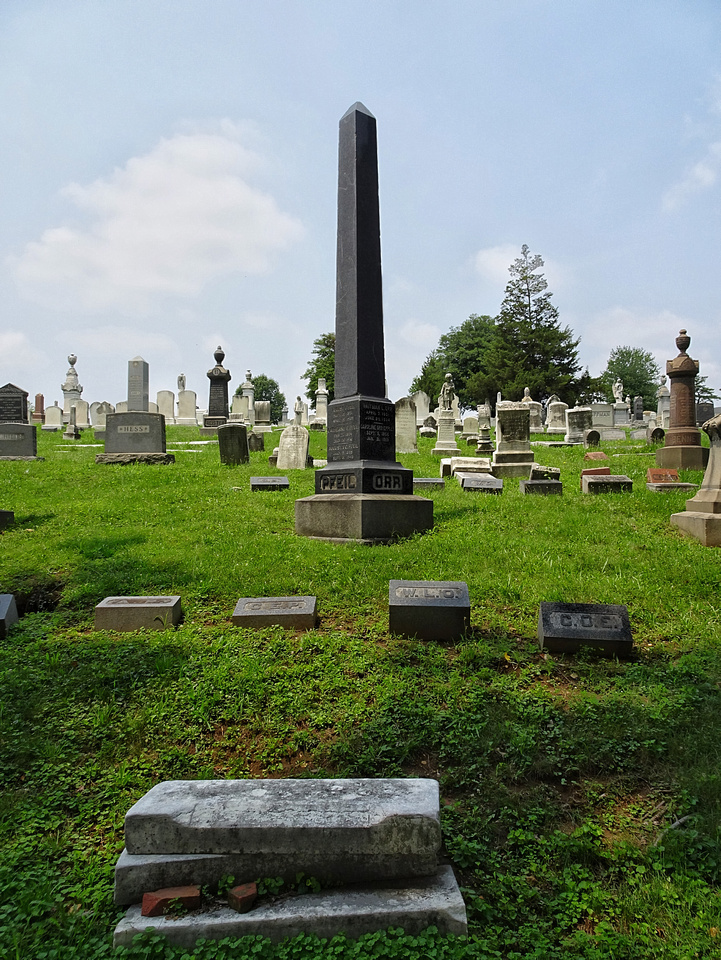
Final Resting Place of Ditz, his wife, and three of the four 1919 pandemic flu victims
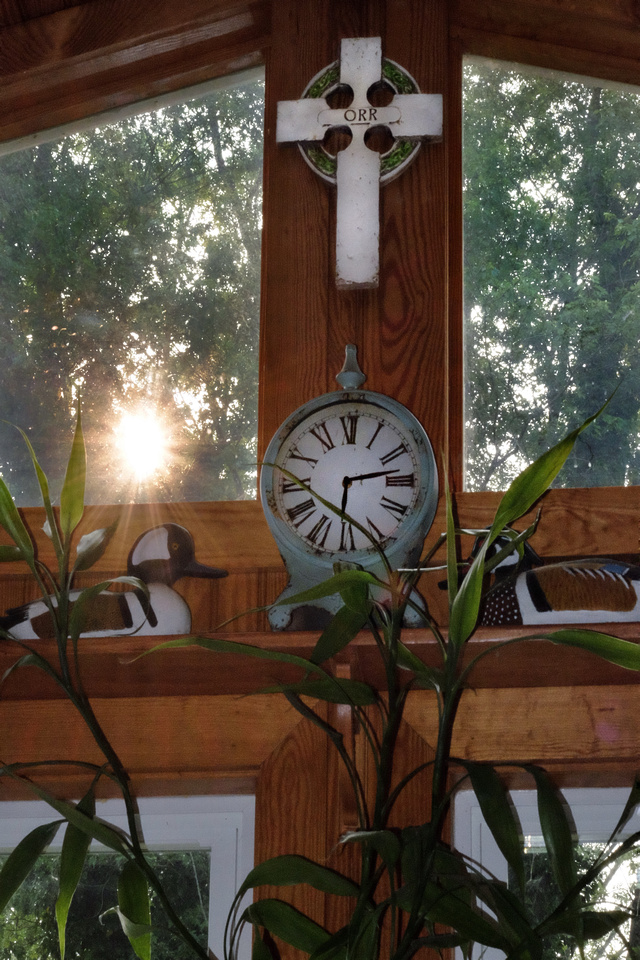
The Orr Family of Baltimore - "German Blood with Irish Soul",
~ D. W. Orr ~
A giant 256” Space Eye is launched into a
Cold, dark, vast, expanding, singular Universe,
To a suspended state a million miles
Away from its home of birth.
Its inner structure unfolds like a Monarch Chrysalis,
To Peer back in time, to lost, ancient beginnings.
A tired old astronomer is bemused by it all,
Reflecting on his own ancient past,
As he himself peers through a
Atavistic reflector telescope,
As old as he.
“Astro-Boy Pete”,
His father would crown him,
As the precocious Peter sat mesmerized by
glossy, cosmic, color images filling the
pages of monthly delivered Nat-Geo magazines.
His unbridled passion would lead to
a hard-earned, Golden-State doctorate degree,
And to a glory-bound assignment,
With its corresponding all consuming career,
At the Hale Telescope on Mt. Palomar.
How fortuitous it was,
That the newly graduated Peter would stand before
The “Big Eye” of Palomar,
She, whom after a 13-year gestation period of
grinding and polishing, would be born the
same year as the ambitious Peter.
Hale reigned supreme, as the largest such instrument
in the world for some 45 years after its completion.
Now, some seventy five years has past.
Here amongst the scientific community,
A Renowned Astrophysicist reigns supreme,
With a stellar worldwide reputation,
gained through sacrificial devotion to his career.
A childless widower,
Lonely “Old Man Pete” gazes into our solar system.
With its 200 inch reflex mirror,
The 20-ton piece of molten Pyrex swings into view of
Our sister, Goddess of Love planet, Venus.
He momentarily pauses and reflects
on those lost earlier times:
His heart swells with
Pride and Purpose,
as he reminisced and again
heard the applause that filled
the large conference center room after
his lecture on the expanding cosmos.
Back to the moment, he meditates on the heavy
atmosphere of carbon dioxide enveloping
The hothouse and lifeless Venus.
It is well, he muses, that he is one of the early adopters
Of the so called Green Electric Vehicle,
as it sits just outside the observatory,
parked in the most coveted VIP parking.
Greenhouse gas emissions on his host planet
have now reached a tipping point,
whereby all life forms are threatened
with a catastrophic sixth mass extinction.
Little to no time is left for humanity to
take effective mitigative action.
Two miles away, the dry and parched hills
surrounding Mt. Palomar smolder, and are
about to blaze into an inferno.
Peter pauses his Venus study,
as the audible alarms sound.
It is too late.
Evacuation is not plausible.
There is no escape.
The famed and acclaimed Dr. Pete has no fear or remorse.
As the flames lap nearby, his final thoughts are
Contrived rationalizations for the
Career-Dominated Life
He Chose to live:
It is well, he once more mused,
That he had no Descendants,
To face the Death and Destruction
of this Avoidable Climate Breakdown.
_________________________________________________________________________
Life is a tale,
Told by an idiot,
Full of sound and fury,
Signifying nothing.
- Macbeth, William Shakespeare, 1606
__________________________________________________________________________
D W Orr
Environmentalist, Weimaraner/Dachshund Companion, Photographer, and Poet-Provocateur
Harford County, Maryland,
Here, where it all began, 253 years ago, in the USA
October 5, 2022
 "Three That Float", by D. W. Orr Photography
"Three That Float", by D. W. Orr Photography
The James Webb Space Telescope arrives at Lagrange Point L2 on January 24, 2022
 The Big Eye of Palomar. Image composite by D. W. Orr.
The Big Eye of Palomar. Image composite by D. W. Orr.
that can be said,
Or done,
To save us, and our fellow creatures,
from ourselves, and our rendezvous with destiny.
We can only grieve, for a soon to be, lost world.
The quest for palm-oil plantations is relentless,
Beckoned onward, by cosmetics,
and processed food consumption.
The sound of heavy machinery permeates the Borneo air.
Anger, raw emotion, thrust the large primate forward.
Using long aggressive strides atop its felled tree trunk,
The orange, spindly-arm ape defiantly and determinately
approaches the blade of the big forest destroyer.
With a rapid blow to the blade it strikes and tumbles
Back down to the log-strewn debris of fallen timber.
It sullenly arises to its feet and stumbles defeatedly away.
Who cries for the Orangutan’s lost habitat?
Where is the sorrow of the grief stricken,
Who oppose these invaders and pervaders
of crimes against the web of life?
The quest for fossil fuel sources is relentless.
The seismic air gun blasts from exploratory ships,
penetrate the deepest seas of the Atlantic.
A mammoth sized, 100-year old creature
glides through the blue, migrating to polar seas.
Startled, stressed, and confused by these
ambient reverberations, that obliterate the
sweet songs of distant relations.
The deeply scarred mother and calf dodge an
array of fast moving commercial factory ships.
They pass a Right Whale as it struggles to
Free itself of entangled fishing net gear.
Where are the sea captains to be found,
who cry out to protest the treacherous habitat
Navigated daily by the Baleen Whales?
The quest for minerals and rare-earth elements is relentless.
Global technology is thirsty for new raw materials,
to build an emerging green-energy platform.
The blasting, scraping, and drilling sounds
of mining operations invades the bucolic,
lush land of southwestern China.
A herd of 15 giants begins a 300-mile trek northward,
to escape a land supposedly conserved for their well-being.
Led by “Broken Trunk”, and monitored by drones
circling above, they plod through orchards,
rubber plantations, tea fields and towns.
“Civilization” is awe-struck by the spectacle
of their incredible odyssey.
What restlessness motivates this extended family,
Including one newborn, forward, toward the unknown?
Fight of the great ape,
It is not.
But is it the flight of the giants?
Where is the tear shed for the Asian Elephant’s lost habitat?
Following the creed of Native Americans,
We must look and listen to wildlife in a
New, Reverent, and perhaps Mystical way.
Using senses we have long lost through atrophy,
They send us an urgent warning:
“Your rapacious appetites
to consume, must be quelled.”
Over eleven thousands of years,
Our Wild Planet achieved a delicate balance
For the complex web of all life forms,
Including a stable global climate for that life.
Man’s dominance has upended this harmonious balance
Of the Holocene Epoch in only a few hundred years,
A mere blink of geological time.
It cannot continue.
It must not continue.
We are the stewards of the Planet and of
All God’s Creatures, both Great and Small:
Tree Dwellers, Swimmers, Plodders, and Flyers.
Our Duty for their Survival and of Ourselves
is owed to the
Vast and Ancient Cosmos,
From which we arise.
The Second World War comes abruptly to an end,
And the Atomic Age begins with
The second ever nuclear blast,
used destructively by Man.
The bomb duo crushes two cities and 200,000 people.
One continent away from this radioactive fallout,
The last stand of oak trees are felled in the
swamps of the great bottomland forest.
All for elegant, sewing machine cabinetry.
And from this flattened primeval forest,
the very last Ivory Billed Woodpecker
calls out her final sad refrain for any
nearby soulmate who may be listening.
“Kent-kent” she cries.
The sound of silence is the reply.
“Kent-kent”, she cries again.
No other Lord God Bird is listening,
Nor Humanity.
__________________________________________________________________________
* This poem was published in Maryland Bards Poetry Review 2023 *
D W Orr
Environmentalist, Weimaraner/Dachshund Companion, Photographer, and Poet-Provocateur
Harford County, Maryland,
Here, where it all began, 253 years ago, in the USA
May 20, 2022
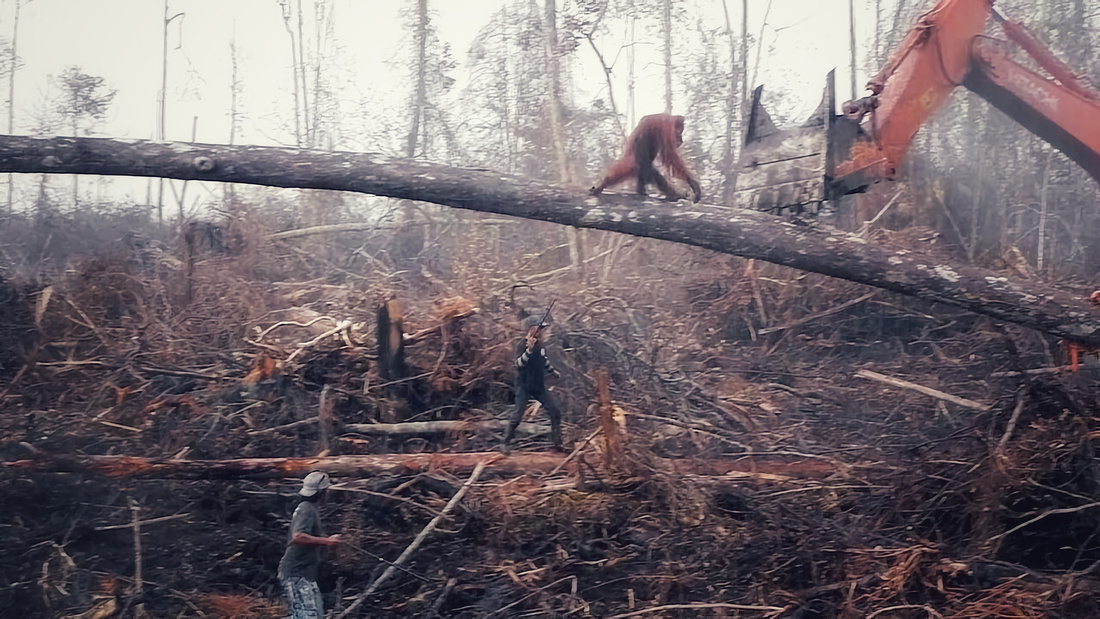 “Rage Against the Machine” - Orangutan attacks mechanical digger destroying its habitat in Borneo in 2018. Credit: International Animal Rescue.
“Rage Against the Machine” - Orangutan attacks mechanical digger destroying its habitat in Borneo in 2018. Credit: International Animal Rescue.
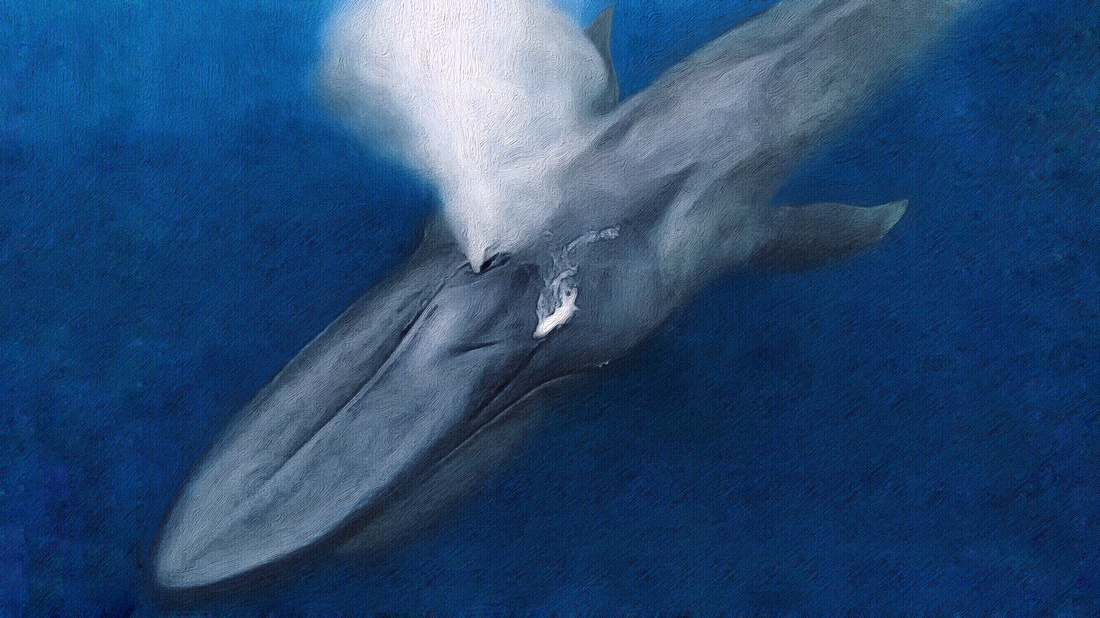 “Queen of the High Seas” by D. W. Orr Photography
“Queen of the High Seas” by D. W. Orr Photography
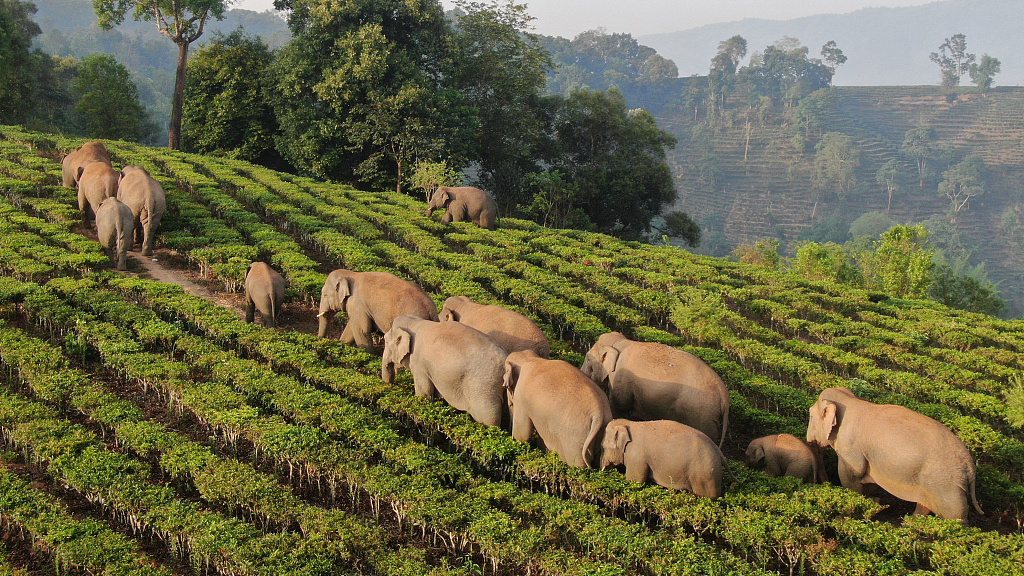 A herd of 14 elephants roaming around Manmai Village in Menghai County, southwest China's Yunnan Province, May 6, 2019.
A herd of 14 elephants roaming around Manmai Village in Menghai County, southwest China's Yunnan Province, May 6, 2019.
Credit: Photo by Wen Huan/Southern Weekly/VCG via Getty Images.
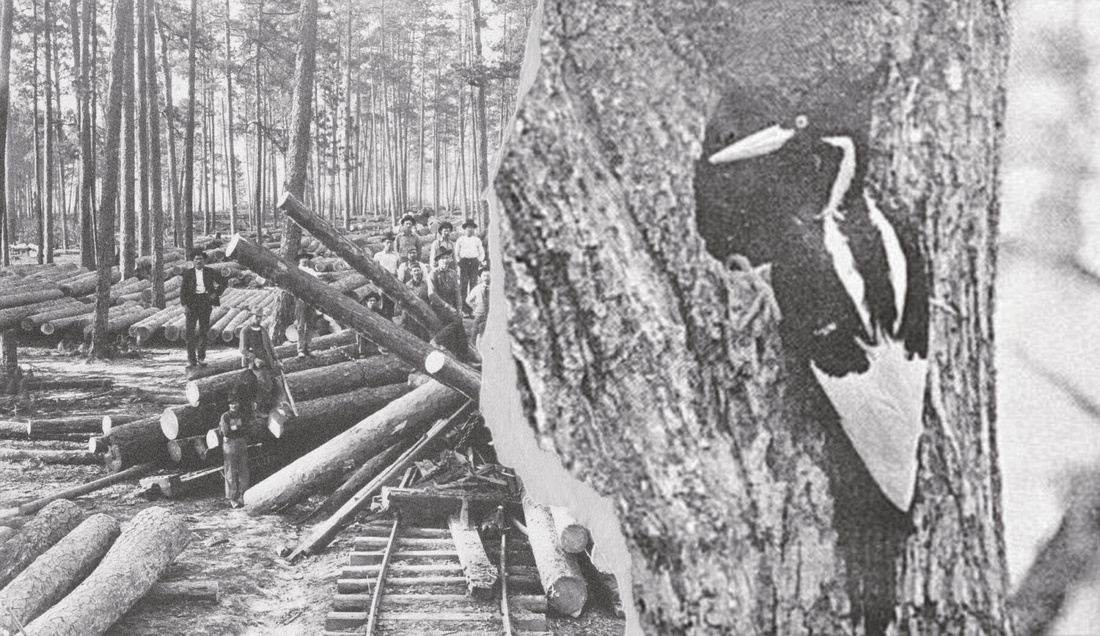 Composite Image: Left - Early logging days in Louisiana. Right - Female Ivory-Bill returning to nest, 1935.
Composite Image: Left - Early logging days in Louisiana. Right - Female Ivory-Bill returning to nest, 1935.
Left: Corbis Historical via Getty Images / Right: Photo by Arthur A. Allen
 “Sonny Boy”. The only Ivory-billed Woodpecker (not fledged) ever banded. Image by James Tanner. March 6, 1938.
“Sonny Boy”. The only Ivory-billed Woodpecker (not fledged) ever banded. Image by James Tanner. March 6, 1938.
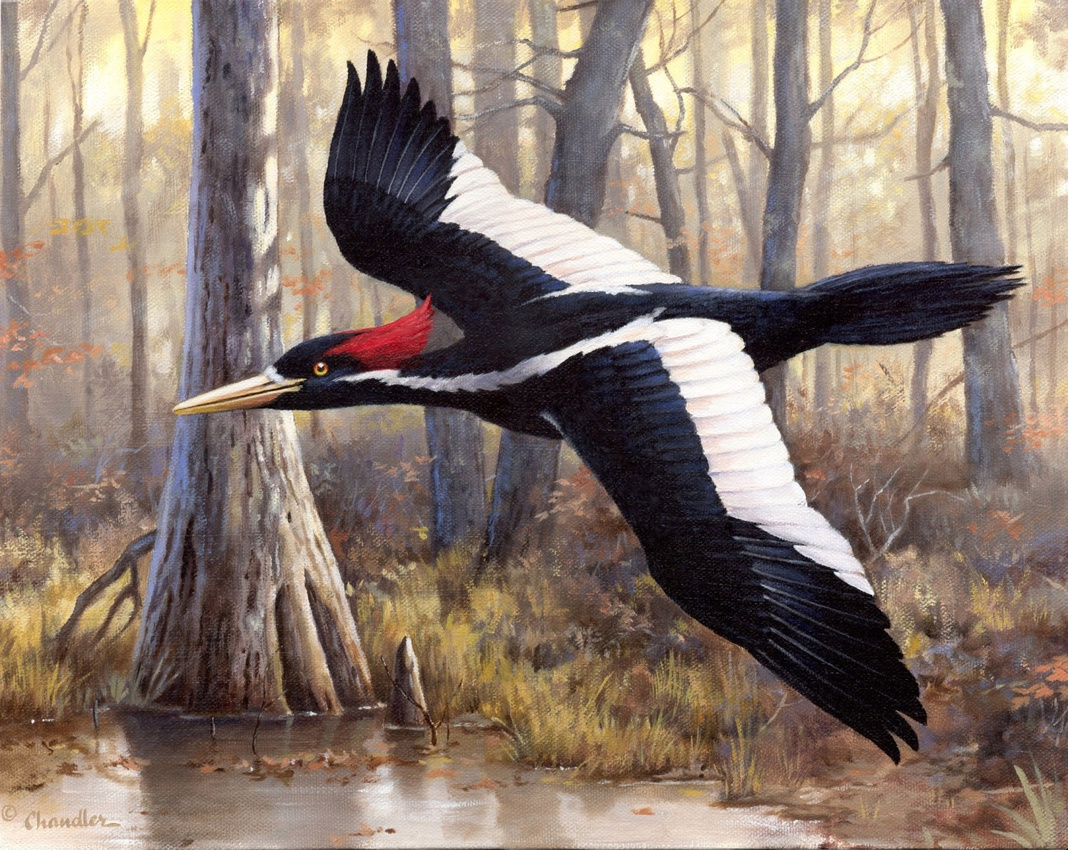 A male Ivory-billed Woodpecker flying across the swamp in search of beetle grubs for food in large old dead trees.
A male Ivory-billed Woodpecker flying across the swamp in search of beetle grubs for food in large old dead trees.
Known as the "Lord God Bird".
Painting by Larry Chandler.
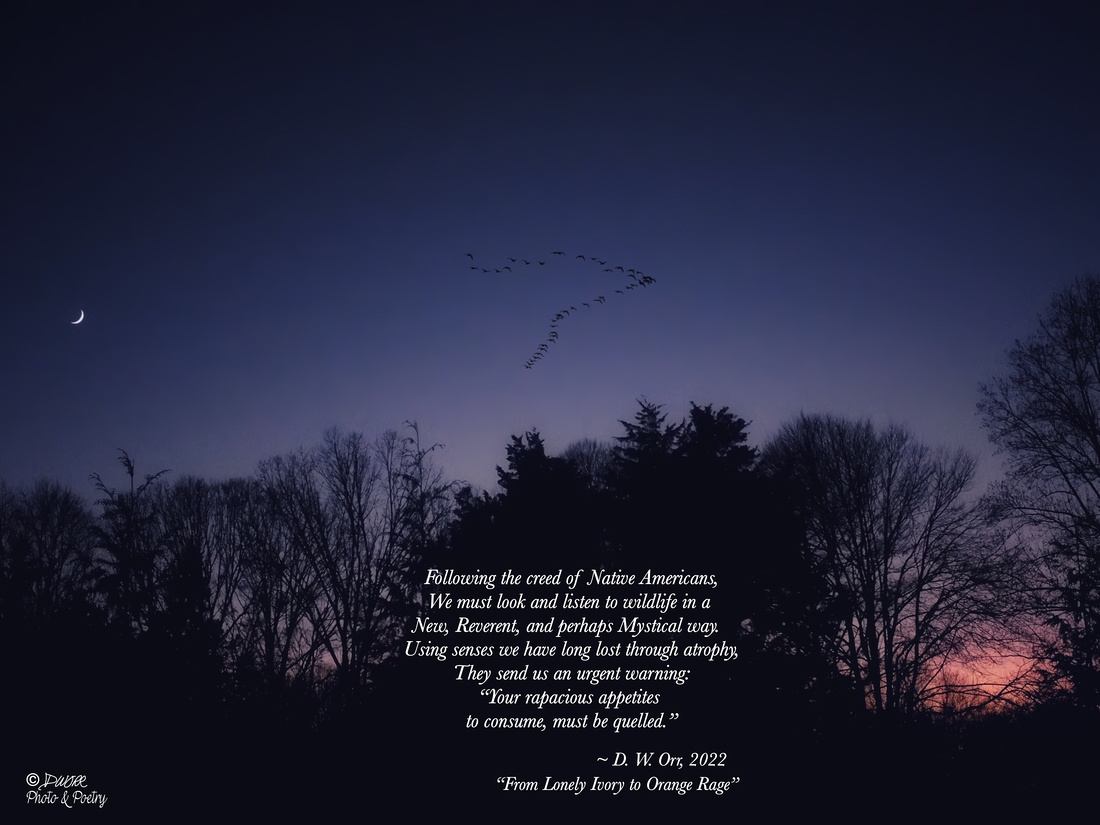 “Listen to the Wildlife” by D. W. Orr Photography
“Listen to the Wildlife” by D. W. Orr Photography
]]>
But, he carried on as best he could,
Almost cheerfully with his life.
Eating, Drinking, and Bathing
Enthusiastically in a splashy pool of water.
A daily visitor, he hobbled on each step,
Balancing on one healthy right leg,
The other lifted and withered.
Flapping his wings awkwardly to steady himself,
On the flat feeder of mealworms,
On the stone-bath rim of cool, clear water.
He came for many weeks for steady nourishment,
And was witnessed by the “image maker”.
The white-spotted, iridescent bird elicited empathy
From the old man, for the stout, stoicism observed.
Then, one afternoon, the Starling drank
From the trough, sensed imminent danger,
and frantically flew into the adjacent,
thick evergreens - Lost and Hidden,
Presumably protected from all threats.
Suddenly, a swift gray-brown mass plunged from the sky,
Buried itself into the same evergreens, the Hawk reemerged
And flew with a short U-turn back into the emerald ferns.
Obscured, it completed its deadly work and flew back out
With its limp, midnight-black prey clutched in its claws.
To the grim-faced, Gray-Beard, it was all too surreal.
Others, unbeknownst to him, also had their keen amber
Eyes a-fixed on this demonstratively handicapped bird.
It was just another normal day’s routine, a wildlife
Dance of Death to Mother Nature’s Tunes.
Done silently and undercover with tragic swiftness,
One moment the disabled bird Lived the Good Life,
Then the next moment it perished,
on a somber, overcast September day.
The following bright morning,
A male Successor Starling arrives,
Healthy and unencumbered to assume the lost territory
Of the once Stoic Starling.
The Life and Death Cycle begins anew.
Reflections ...
What happened to you Stoic Starling,
While hidden under cover of those dense ferns?
Why did you not escape out the back door,
When terror approached the front door?
You were so strong in facing the
hardships that Life unfairly dealt to you,
Why were you not equally strong when faced
With the Prospect of Death?
__________________________________________________________________________
D W Orr
Environmentalist, Weimaraner/Dachshund Companion, Photographer, and Poet-Provocateur
Harford County, Maryland,
Here, where it all began, 252 years ago, in the USA
September 10, 2021

The Stoic Starling: One of many daily baths enjoyed by our visitor.
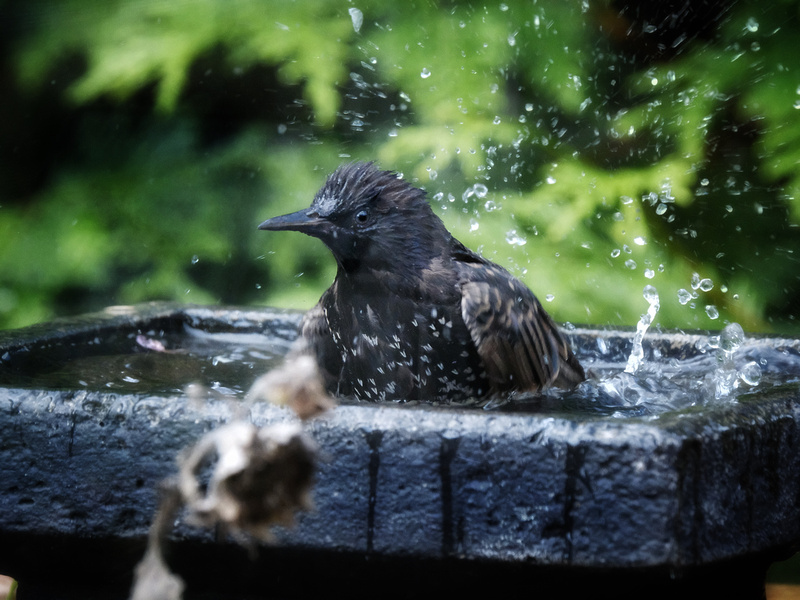
The Stoic Starling: Our visitor delightfully splashes while bathing.
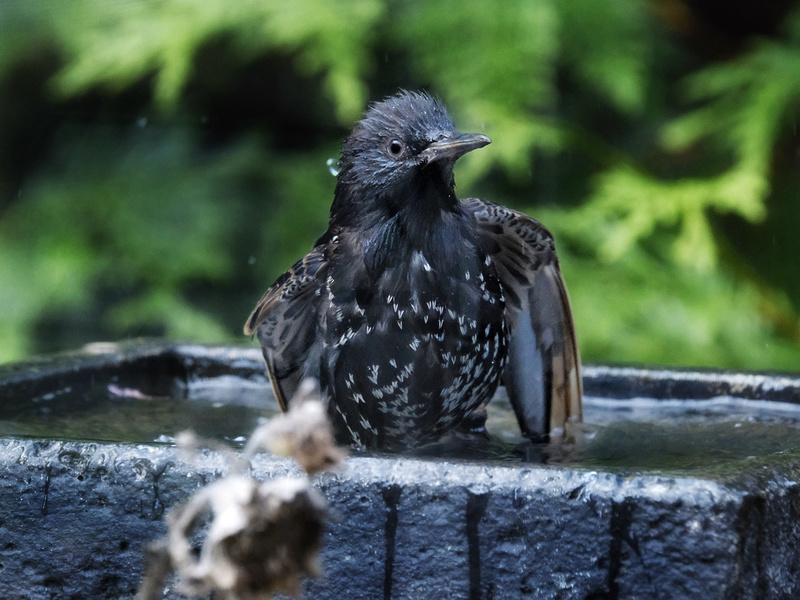
The Stoic Starling: Our friend emerges from his bath. His left wing also appeared to be in a weakened state.
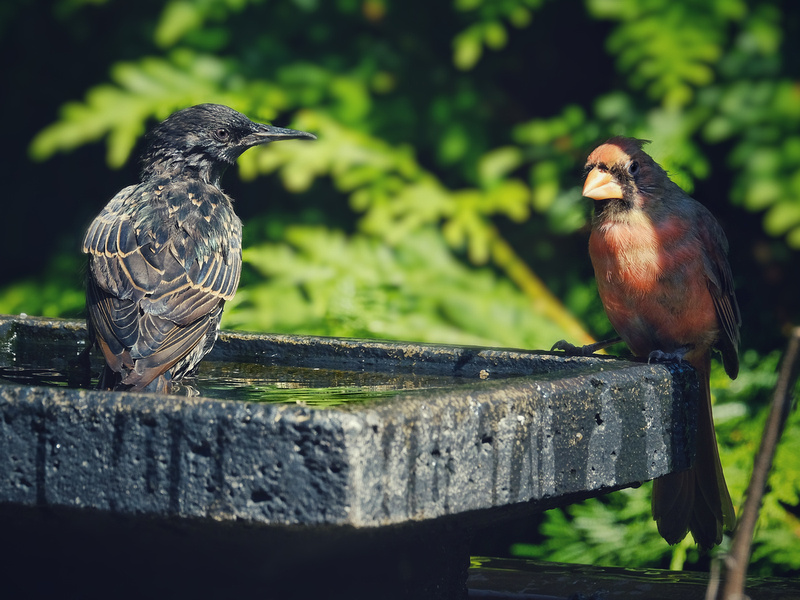
The Stoic Starling: Greets an unexpected guest.
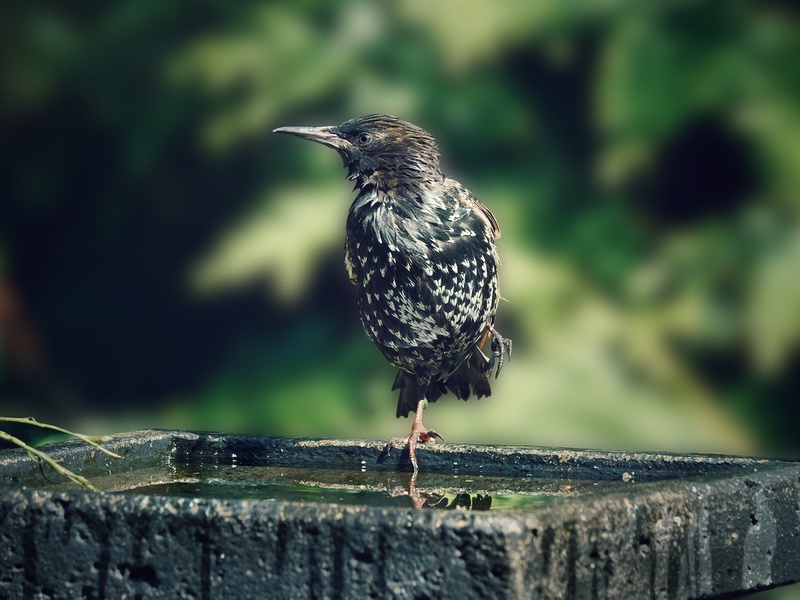
The Stoic Starling: The withered and useless left leg.
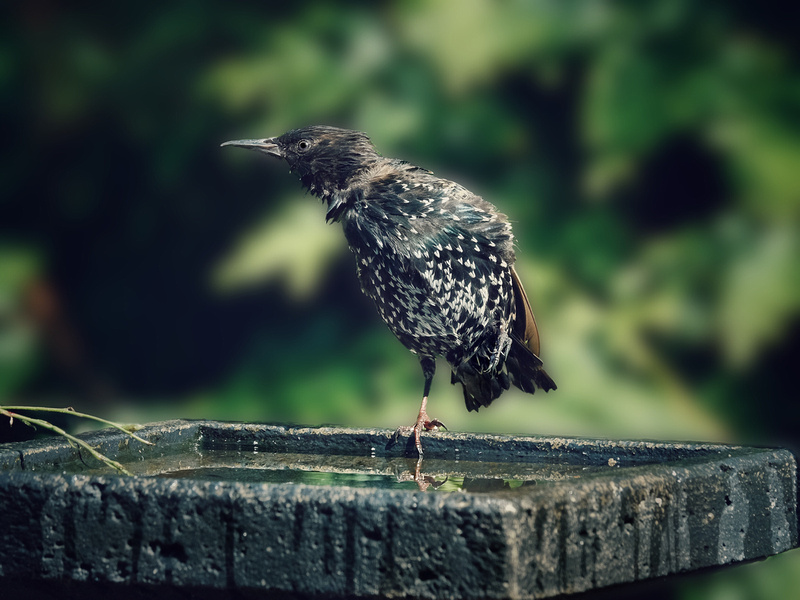
The Stoic Starling: A balanced pose.
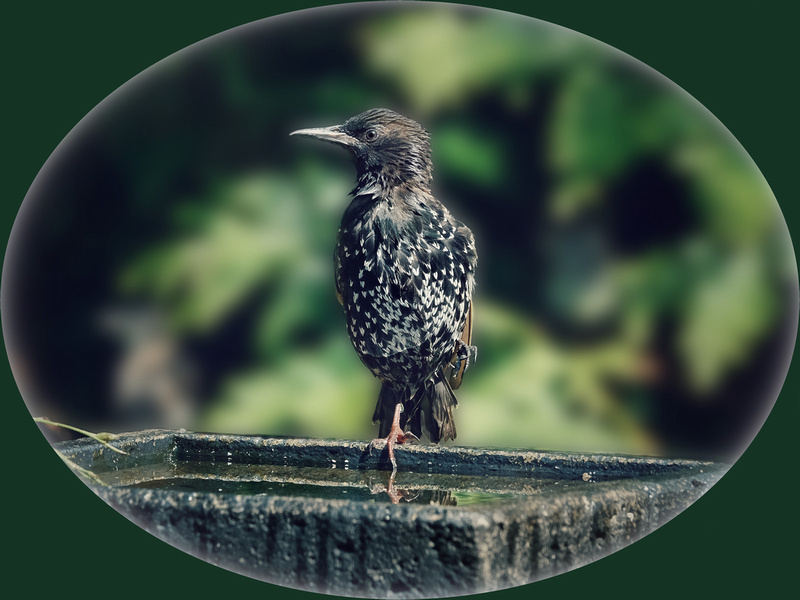
The Stoic Starling: RIP (died 9/9/2021). You lived a full life, even though being disadvantaged.
What was that woodland sound?
Simply, ... the Sound of Freedom,
To explore the forest floor,
To drift amongst the fallen timber,
To climb the low hanging branches,
To practice the art of flying.
A Primordial Calling, an irresistible force,
that pulls all creatures toward their destiny,
has driven a juvenile owlet out from the
security of her nest, in an old hollowed-out
tree snag, rising twenty feet above terra firma.
The young wings hurriedly flap,
But do not lift, as the gray mass
Plunges downward and ground debris
Explodes skyward at the hard landing.
The bird slowly arises, as it shakes off
The stunning after effects of the sudden stop.
In two hours, our life sustaining home star will
Set below the deep green, tree-topped horizon.
There is not much vernal daylight left, for a
Four-week old, Great Gray Owl to settle into
A new life, on a safe, and secure perching spot.
Here is to you, Little One:
May you soar freely,
With the wind beneath your wings.
May your hunts be plentiful.
May your life be fruitful and long lived,
To a grand old age of one score years,
At which time, Mother Earth will have reached a point
Where its fate, and that of all mankind,
And our wonderful creatures,
Will be more clearly known.
__________________________________________________________________________
D W Orr
Environmentalist, Weimaraner/Dachshund Companion, Photographer, and Poet-Provocateur
Harford County, Maryland,
Here, where it all began, 252 years ago, in the USA
May 15, 2021
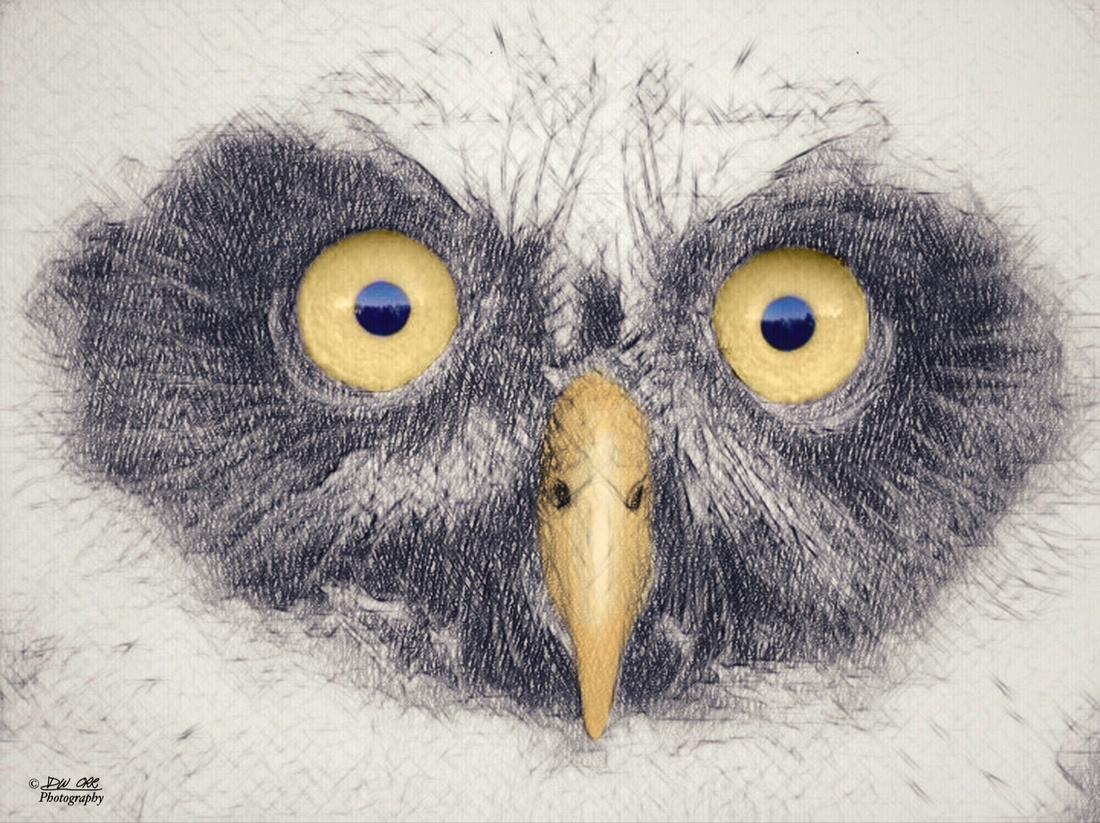 D. W. Orr Illustration: The face of a Great Gray Owlet at 4-weeks of age (ready to fledge)
D. W. Orr Illustration: The face of a Great Gray Owlet at 4-weeks of age (ready to fledge)
 D. W. Orr Illustration: Great Gray Owlet at the end of the first day of fledging.
D. W. Orr Illustration: Great Gray Owlet at the end of the first day of fledging.
 Great Gray Owl feeding a vole to her two owlets
Great Gray Owl feeding a vole to her two owlets

Two Great Gray Owlets

A proud Great Gray Owl momma with her one day-old owlet (May 6, 2025)
]]>
In the chilled dawn air,
The sun arises,
And with it,
The autumnal equinox arrives.
The juvenile bluebirds come
Early for their morning meal,
As their parents did months before.
The last of the ruby throats buzz through,
Before their long journey southward.
As time drifts onward,
And the observer observes,
The natural cycle of Life has reached
A somnolent, steady state.
The Heaven Beckons,
Nothing of Significance will happen
Henceforth until ...
The End is Nigh.
__________________________________________________________________________
D W Orr
Environmentalist, Weimaraner/Dachshund Companion, Photographer, and Poet-Provocateur
Harford County, Maryland,
Here, where it all began, 251 years ago, in the USA
September 22, 2020, 9:31am, EDT
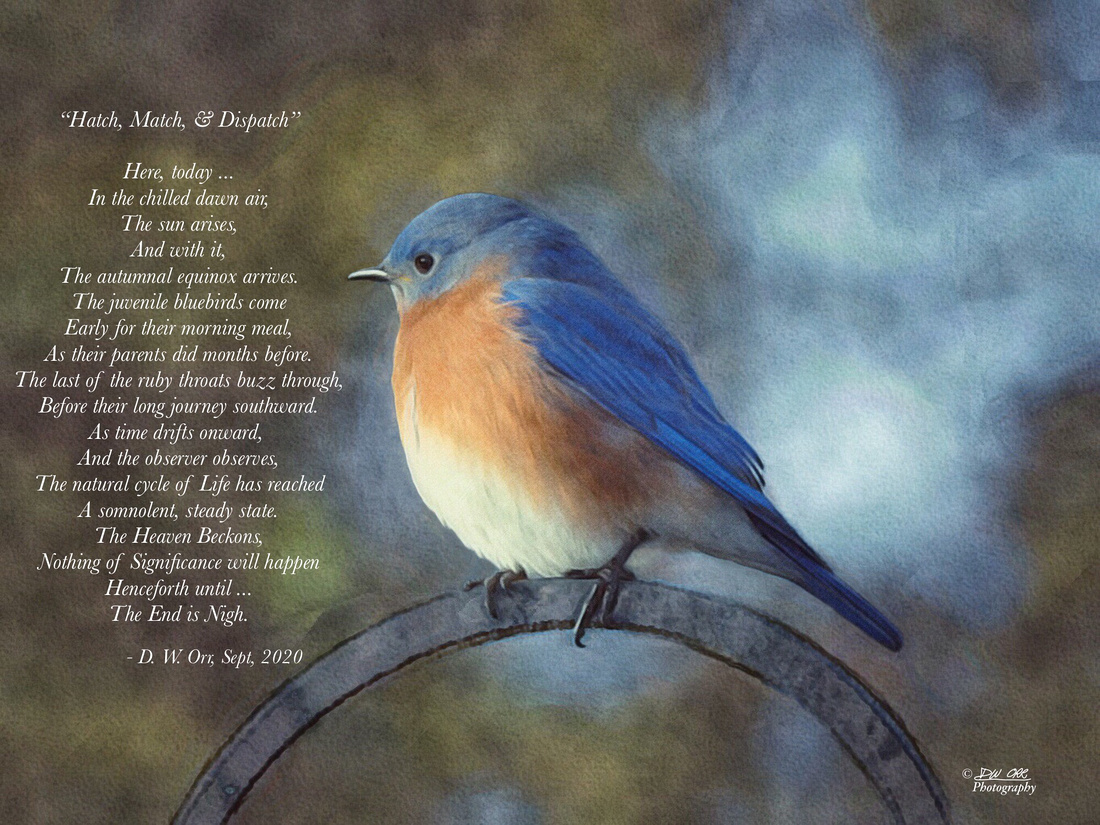
]]>
Colonel Joshua Chamberlain: Jeff Daniels
Lieutenant Tom Chamberlain: C. Thomas Howell
Colonel Strong Vincent: Maxwell Caulfield
Capt. Ellis Spear: Donal Logue
Buster Killrain: Kevin Conway (recently passed on Feb. 5, 2020).
Note-Buster is the only Mythological Character in the Little Round Top scenes.
First Assistant Director: Skip Cosper
Neal: The class clown of our regiment, United States Sharpshooters (USSS)
Roy: Roy Hodges
Doug: Douglas Orr, aka, D. W. Orr Photography & Poetry
_____________________________________________________________________________________________
I can remember it as though it were yesterday. But it truly was as far ago as September 1992.........
Approximately 15 Sharpshooters from Connecticut, New York, and Maryland converge on a location a few miles west of the Gettysburg National Battlefield Park. For four days we break from camp at dawn and ride the "cattle car" over to the set. Getting ready for the next "film-shoot" with the invasion of the "goo-gals"; the "dust dollies"; to be followed by the gabby guy in the black jumpsuit who blackens our faces. Then you wait, and wait, and wait. We figure out ways to entertain ourselves as we form up and wait our call to the set. Thank goodness we have Neil on our side - the reincarnation of Jonathan Winters. On one particular morning: Look, who is that up there on the hill all by his lonesome and vulnerable to a USSS setup ?? Why it's the Little Round Top commander himself, Strong Vincent. What can we do to him ?? We know. "Hey you, Strong Vincent !!" He looks over to the men in green. The green guys in unison give Strong the secret sign and countersign of the USSS. Strong's body language and facial expression acknowledges that he's been had. We revel in our chicanery.
On Thursday the 17th we participate with the bluecoats in the mass Union firing at the rebels charging up Little Round Top. We are on the far right of the line and we all know there is little chance of being framed by the camera. None the less, it is refreshing to burn some powder. We do get closer to camera range when Chamberlain orders the line extended and the far left is refused. Our big moment comes on the morning of Saturday the 19th (henceforth to be known as the USSS Goes Up Scene). Only the Sharpshooters form in columns of four and march up a slight grade through the woods. Shell blasts go off left & right and up in the trees. We repeat this several times to get it right. In between takes one of the ladies from TNT blackens my frockcoat buttons.
In the afternoon, the call goes out to the USSS again. This time more physical demands are made of us. We must run single file and downhill through the woods as shell bursts go off (henceforth to be known as the USSS Goes Down Scene). We repeat this many times. Once, one of our members ran straight into a tree and "fall down and go boom". Neil recited the memorable "Ode to a Tree" to recognize the event. Each time we repeated the run, we waited many minutes as the commanders up front exchanged their spoken lines. We were never close enough to hear them. But alas, ISO of USSS on Video would disclose what we all fortunately missed - more on this later. To our chagrin, we repeated the downhill runs first thing the next morning on arrival at the set. Late in the day we do a brief fire fight in the woods - it turns out this is the only USSS effort that does not make it to celluloid/video.
Readers, I transcribed for you below the USSS scenes that made it into the final 4-1/2 hour movie and video versions of Gettysburg :
THE USSS GOES UP SCENE
The scene opens up with the Sharpshooters marching in columns of four up through the woods.
BOOM & SMOKE !!
Joshua Chamberlain -
"They are over-shooting again"
Unidentified soldier -
"Hey fellows, you notice how that Reb Artillery always overshoot."
BOOM & FLASH !!
J. Chamberlain -
"Tom..."
Tom Chamberlain -
"Yes sir."
J. Chamberlain -
"Yes. If another one a bit closer, it could be a hard day for mother. I want you to go back to the rear and watch out for the stragglers. Keep your distance from me."
T. Chamberlain -
"Lawrence, I, I, I .....
BOOM & FLASH !!
The camera pulls in closely to Tom. The individually recognizable Sharpshooters march behind Tom.
END OF USSS GOES UP SCENE.
THE USSS GOES DOWN SCENE:
The scene opens with the sub-title, Below the Summit. Ellis Spear, Joshua Chamberlain, and Strong Vincent appear on the screen from left to right and start the dialogue.
Vincent (excitedly) -
"The whole damn Reb Army is down there ... (puff of shell bursts appear around a view of South Mountain) ... and coming up around our flanks. They could be here any minute. (Pause - Vincent takes his hat off & on during this whole scene) Well, all right. I place you here. Put your colors here. Set your regiment to the left of this line. The rest of the brigade will form on your right. Understand ?"
Chamberlain responds soberly with unconcern and directs Spear-
"Yes Ellis, this is the point."
Ellis -
"Yes sir."
Vincent -
"Now your regiment is to the left of this point. Colonel sir, you are the end of the line."
Chamberlain (again low keyed) -
"Yes."
Vincent -
"You are the extreme left of the Union Army. Understand? The line runs all the way from here back to Cemetery Hill. But it ends here."
Chamberlain (ready now for NoDoze) -
"Understood."
Vincent -
"You cannot withdraw under any circumstances. If you go this line will be flanked. If you go, the enemy will sweep up over the hillside and take this entire Army from the rear. You must defend this place to the last." (Author's note: At this point in the dialogue I realize that I am no longer sorry for what the USSS contingent did to Vincent that morning prior to filming).
Chamberlain (with eyes as droopy as his mustache) -
"Yes sir".
Vincent cracks a sound with his glove. Chamberlain and him handshake.
Vincent -
"Now we will see how professors fight"
Chamberlain and Vincent exchange salutes and Vincent departs.
Chamberlain -
"Ellis, position the regiment. All company commanders here."
Ellis -
"Yes sir." (He now barks out the commands) "Sharpshooters to the left !! (Author's note: Oh my, movie goers now know who we are !!) Battalion on the right by files into line !! March !! "
BOOM DOWN-TREE !!! (This scene dramatically shows the top of a tree being blown off by the blast of a shell)
The scene now changes to Sharpshooters running downhill through the woods.
BOOM !!!
BOOM-FLASH !!! Roy & Doug run-away. (Author's note: I must confess that like a fanatical student of the Zapruder film, I have religiously studied this video frame at the precise moment of the flash. I am frozen in time to the left of the frame and Roy is to the right at the peak of the blast.
Ellis blares out -
"Bugler, sound the officers call."
BOOM!! Leaves fall on Ellis, Chamberlain, and Killrain. They all flinch. The bugler beckons and Chamberlain thinks.....
"Oh to the last. To the last what. Exercise in rhetoric. The last shell. The last man. The last foot aground. The last breath."
END OF USSS GOES DOWN SCENE
The image of blowing smoke and Skip Cosper's exhortation of "Rol-Ling --- Back-Ground --- AcK-TION" still lingers in my mind. I remember clearly Skip reminding the Union infantry during the 20th Maine bayonet charge scene: "Gentleman, remember where you died". On the way back to camp after a long day on the set, we are all grateful that as 20th century Civil War soldiers that we have the luxury to get up after taking a lethal hit.
_____________________________________________________________________________________________
D W Orr
Environmentalist, Weimaraner/Dachshund Companion, Photographer, and Poet-Provocateur
Harford County, Maryland,
Here, where it all began, 251 years ago, in the USA
September 17, 2020
********** In Memory Of: Roy Lee Hodges, Lt. Colonel, USAF (1942 – 2018) **********
***************** RIP, My Fellow Comrade-In-Arms (2USSS, Co. F) ****************
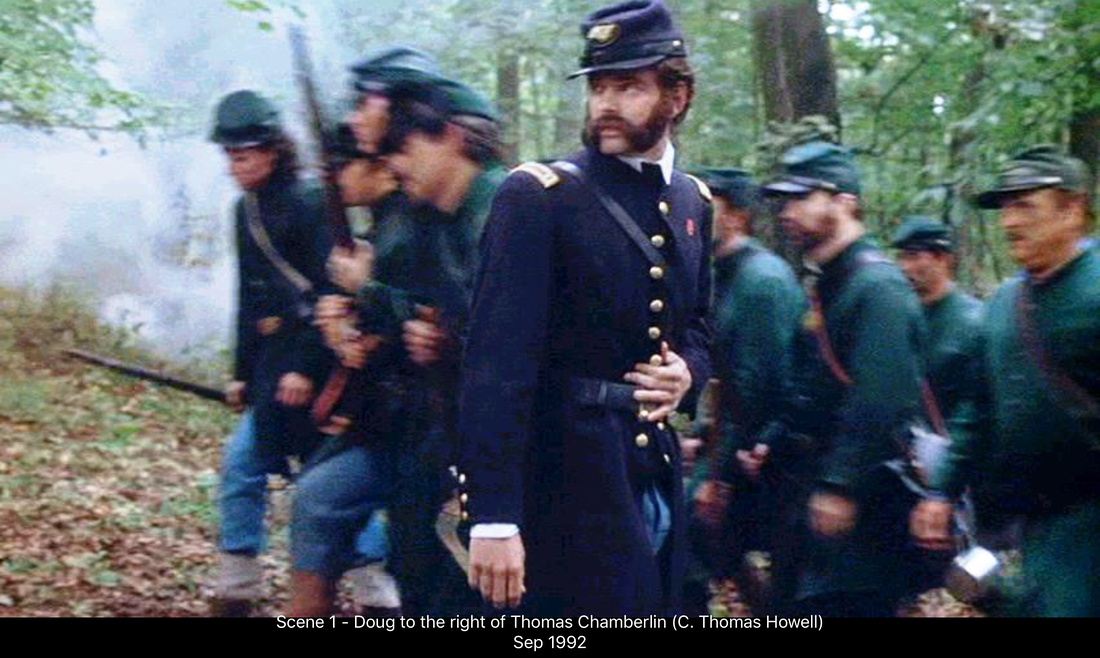 The USSS Goes Up Scene
The USSS Goes Up Scene
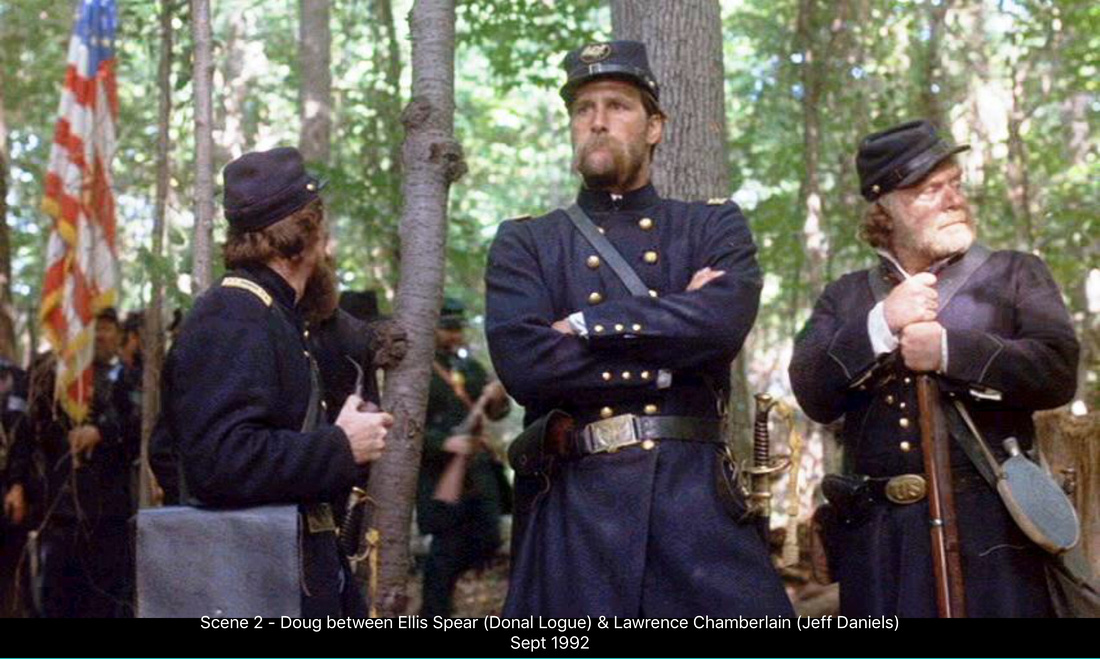 The USSS Goes Down Scene - Buster Killrain (Kevin Conway) on far right
The USSS Goes Down Scene - Buster Killrain (Kevin Conway) on far right
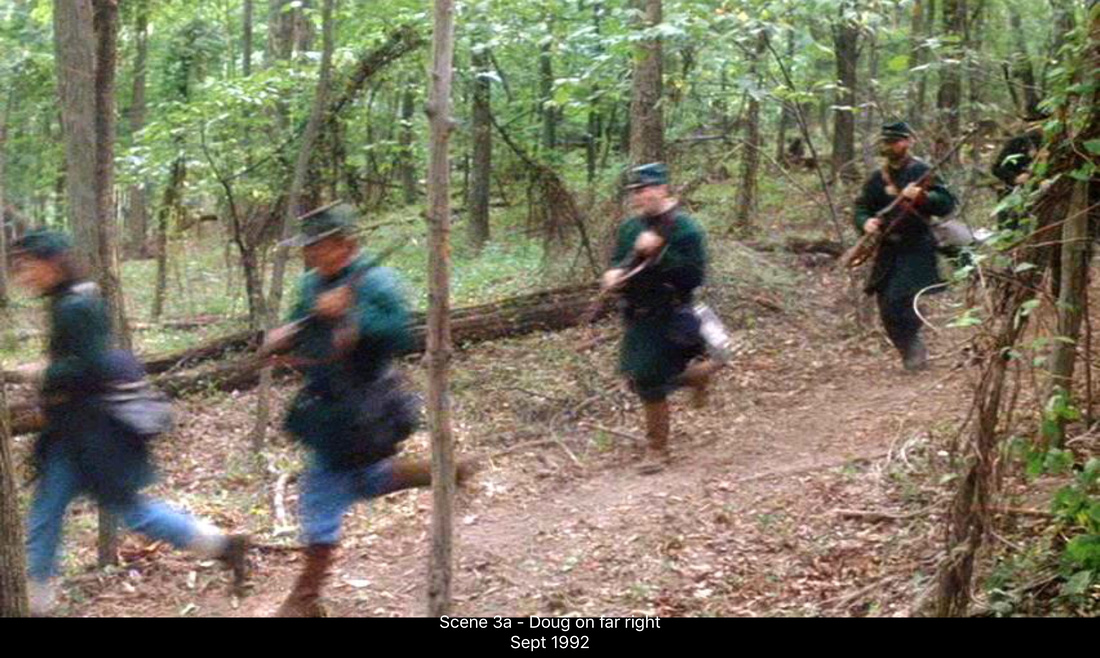 The USSS Goes Down Scene
The USSS Goes Down Scene
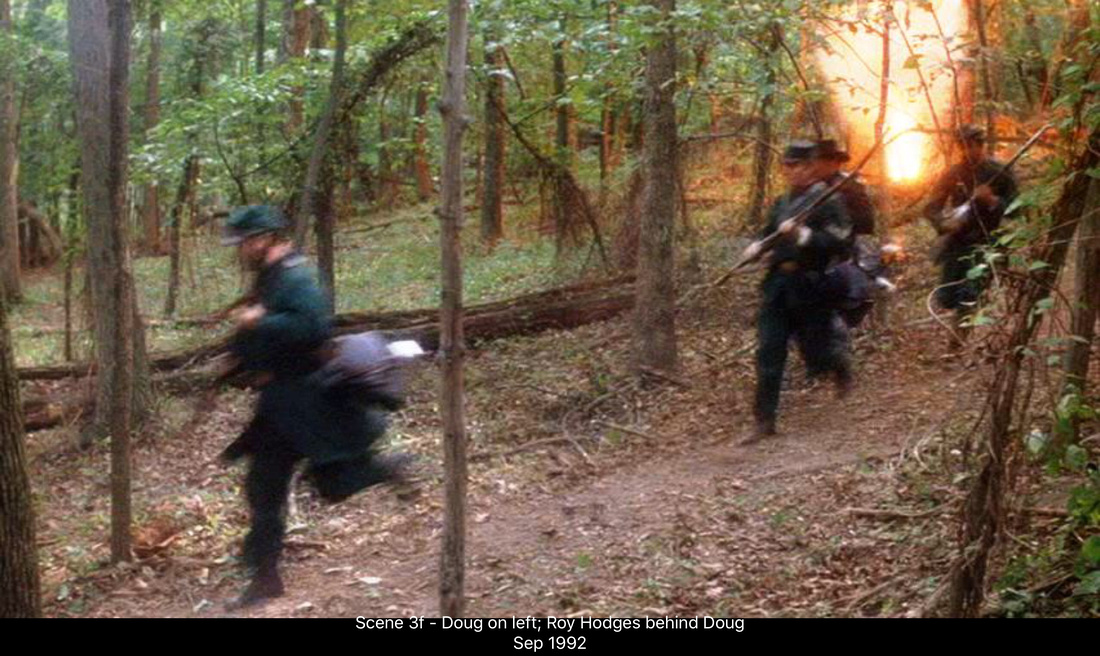
The USSS Goes Down Scene - BOOM-FLASH !!!
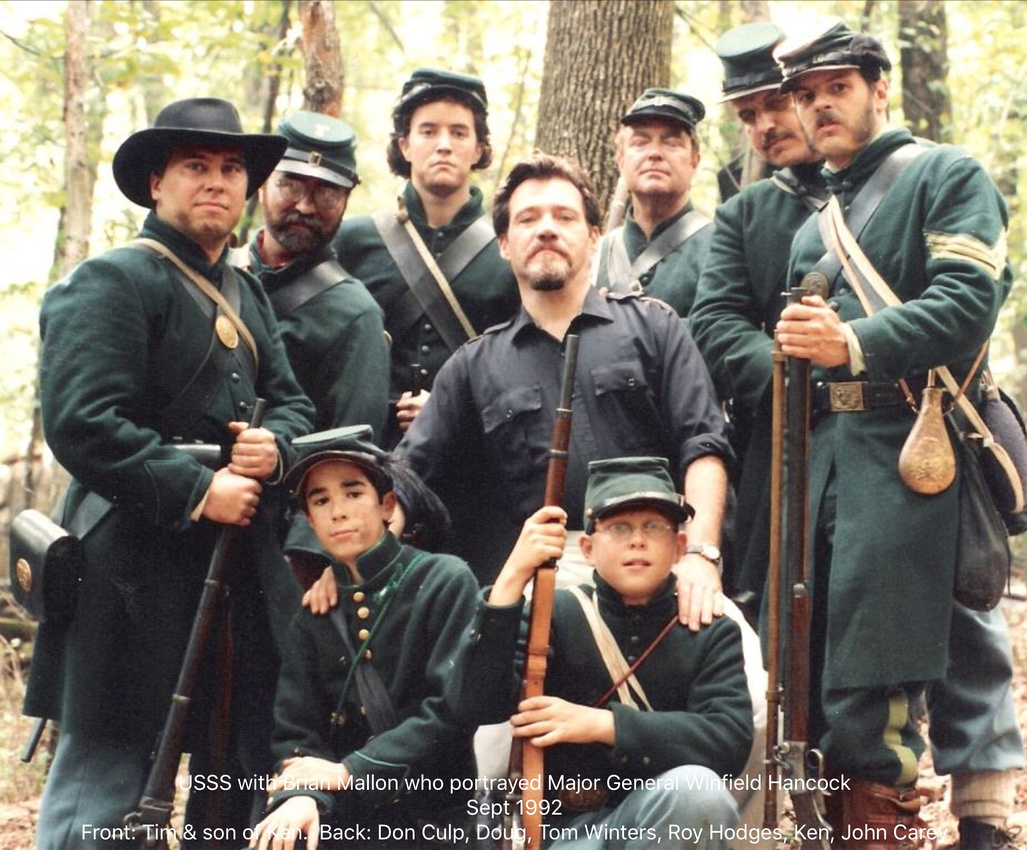 The USSS Regiment
The USSS Regiment
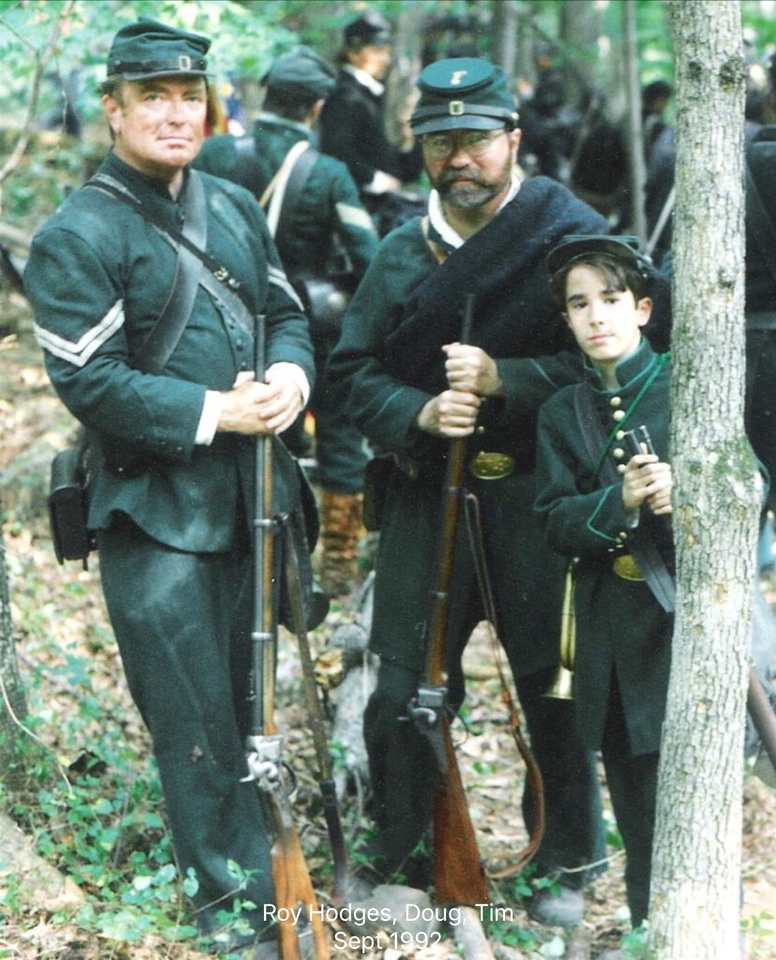
Roy Hodges (1942 - 2018), Doug Orr, Tim Orr
 Roy Lee Hodges. A Comrade in Arms (2nd USSS, Co. F)
Roy Lee Hodges. A Comrade in Arms (2nd USSS, Co. F)
of The War Between the States.
And a white clapboard house sits on a wide flat hill,
With a budding oak tree firmly rooted nearby.
The hilltop overlooks the Gwynns Falls,
Just a bit out of range,
for a heavy artillery shot from the Baltimore harbor.
Strategically situated a half mile away from the house,
Sits a large camp of rear-guard soldiers,
‘Tween a federal arsenal and the Jamison Gunpowder Mill.
A military aide-de-camp hurriedly gallops his
frothing horse along a well worn dirt trail,
Passing the two-story, pale-colored structure.
He carrys an important message concerning
enemy troops forming for battle,
just north across the Mason-Dixon
boundary line of the Old Line State.
She with the Divided Loyalties,
Brother Against Brother.
Soon blue-coated troops would be marching
northwestward up the Old Liberty Road.
It is Christmas Eve, 1900, and a tired, old veteran,
Of the Mexican, Civil, and Indian Wars,
Sits down peacefully on the railroad tracks,
Just a few minutes by horse
from his white clapboard house.
Benjamin F. Childs, a carpenter,
waited to end his life of 71 years.
Now, a century and twenty later,
another septuagenarian man,
reflects on his youthful time spent in that old house,
and all that has passed in between.
How as a young boy,
With summer second floor windows wide open,
he recalls falling asleep to
the rolling cadence of railway cars,
softly thumping in the night,
along those same tracks where Ben gave it all up.
He remembers the great-grandson of General Meade,
The supreme Union commander at the Battle of Gettysburg,
Visiting his grandmother’s partner,
Telling tall tales in the pipe-smoke filled air
of the northeast wing of the old home.
Then there was the Sunday morning horror,
of a boy age five being awakened
by a sweeping fire enveloping
the entire Emroy Dog Kennels,
owned and operated by the house patriarch.
The stiff-charred remains and the smoky aftermath
long lingers in the mind as it did for days
following the inferno.
But ..., there was the card playing with childhood friends,
under the ample shade of the now huge-trunked
oak tree during the hot and humid summer season.
The young lad witnessed his older brother hug the
Wide girth of that giant oak and shimmy on up to
the nearest ten foot high branch.
All this, while listening to burgeoning rock&roll music
on portable, battery operated, transistor radios,
via the help of post-WWII technology.
And, just watching and identifying
the colorful, two-toned and finned 1950’s
automobiles traveling on the now paved, dirt trail
once galloped upon by soldiers of the 1860’s.
And then there were those surreptitious, summery
midnight swims with cohorts in the outdoor community pool,
located on the grounds of the once Civil War gunpowder mill.
For the Aware,
Everything is connected,
Yes, Everything,
by people, place, and through time.
Oh, only if this old house could tell tales,
What a story it would tell.
_____________________________________________________________________________
* This poem was published in Maryland Bards Poetry Review 2022 *
D W Orr
Environmentalist, Weimaraner/Dachshund Companion, Photographer, and Poet-Provocateur
Harford County, Maryland,
Here, where it all began, 251 years ago, in the USA
July 16, 2020

“The Old House on the Hill”, by D. W. Orr Photo & Poetry
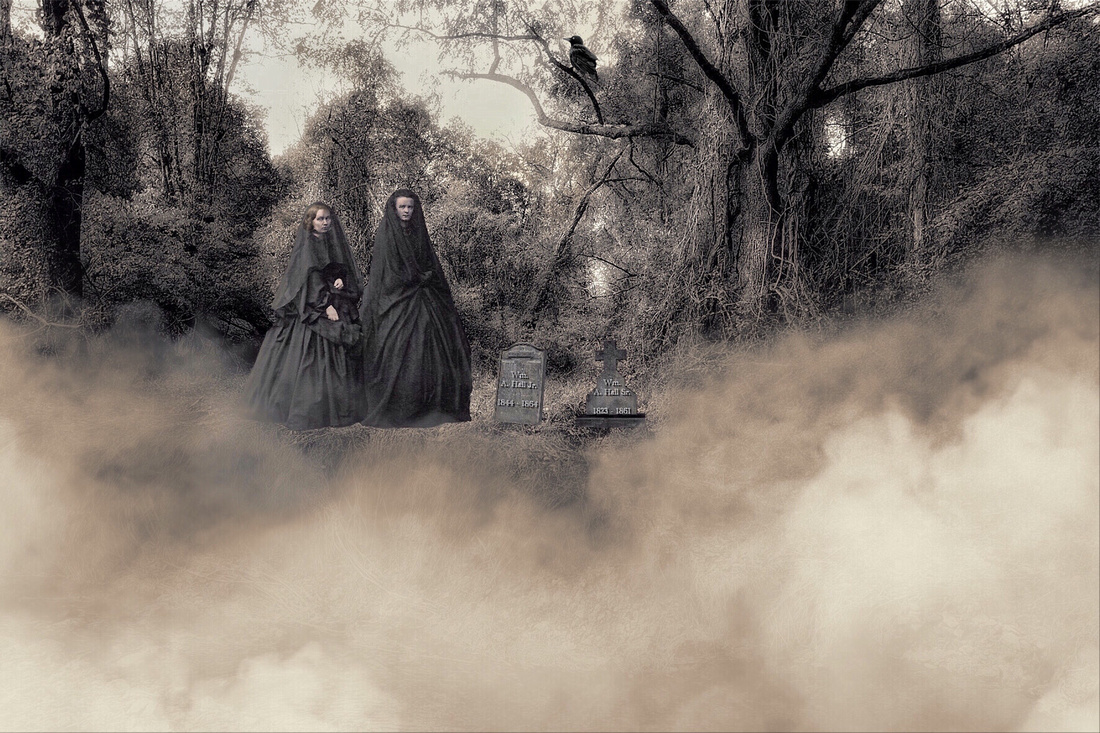
“Two Civil War Widows”, by D. W. Orr Photo & Poetry
with an assortment of nature’s callings.
The Lonely Loon beckons with a haunting wail,
Mourning doves coo,
Canadian geese honk,
And the Ring-neck Pheasants squawk.
Off in the distance, Mr. Hootie Calls: Wha-hoo, hoo-hoo.
Nearby, Momma Wonky Answers: Hoo-hoo-wha-hoo, hoo-hoo.
These are the sounds of mated, Great Horned Owls.
Meanwhile, left alone, while their providers provide,
Three white, balls of fluffy fur, fidget in their inclined nest.
One owlet, with eyes wide open, elongates his neck,
Bobs and weaves his head up, down, and around,
Seemingly in rhythm to the musical
beat of the cadenced calls of the wild.
Another stands and stretches her legs,
Flaps and flight tests her two-week old, muffled wings.
She leans precariously at the edge of her
Carefully crafted, confined home of sticks,
Almost toppling over from her high perch.
The smallest of the trio finds her pile place,
And rests her contented head atop her sibling,
Peacefully awaiting the return of mom and dad
With their tasteful morsels of fresh meat.
Momma silently arrives with a vole,
secured and dangling from her beak.
Mrs. Wonky had left the nest at sunset,
Which she has done faithfully for prior nights.
She is often prodded away from her
Daycare duties by a distant Mr. Hootie call,
Urging her to come begin the nightly hunt.
With a throaty sound pulsating as
The opening movement to her sonata,
She answers back, her mouth puckered,
As her white banded neck inflates,
And undulates with a raspy hoot back,
To her princely partner for the night.
Now, one-half hour later,
The feeding frenzy begins, with Momma,
Gazing down attentively at her nestlings with her
characteristic, chronically dilated, right pupil.
She carefully rips her prey apart and apportions it
among her triplets, now of 14, 16, and 18 days of age.
Ten minutes after her arrival,
She will once again leave for the hunt,
One of several runs throughout the night,
Staying in place only after her final run,
just prior to sunrise.
A sudden cold snap descends
upon and grips the land.
Light snow begins at dawn
and blankets the evergreens.
Momma spreads her wings,
Politely sits over and covers her tightly
bundled, puff pile of chicks.
She holds this protection throughout,
Until, as twilight arrives, she carefully
Arises, tiptoes over her progeny,
then with a short hop off to a supportive branch,
Begins takeoff for her first nightly hunt.
With readings now in the teens,
she returns quickly, feeds her little ones,
and resumes her warm blanket protection of them.
Alas! Hoo, Hoo arrives shortly to the rescue?
But Mr. Hootie, with a deceased Mr. Vole!
A quick hand-off is made to the Mrs.,
And stealthily he adjourns back into the darkness.
Mr. Vole is now consumed quite whole,
gulped down head-first with control,
by a hungry young one who sat,
As their growing size begat,
A most crowded nest room stroll.
Three weeks have passed since,
The last of the three chicks emerged.
They have bulked up with bulging stomachs,
Their body in white down,
Now laced with mottled brown,
With wings tipped in midnight black.
Characteristic “ear tufts” sprout like
Blooming crocuses, in the vernal, valley breeze.
The napping nestlings now spend their
days sharing snacks with Mom,
Punctuated with morning yawns
And hot afternoon panting,
With preening sessions in between.
They stretch their bodies from head to talon,
While “Wingersizing” their flight-feathers of propulsion.
Momma's imprinting on her proteges is strong,
For the kids practice triangulation of prey with head
bobs on nearby geese as the honkers saunter about,
Dreaming, someday, that they too shall hunt.
Capable of self-feeding in gulps,
The young ones know to trust a
Steady delivery of delicious voles.
Long into the early evening hours,
They sit alert, fixed at attention,
peering into the night,
with those big, bright, amber eyes.
On the lookout, for any signs
of Momma’s or Papa’s arrival,
including listening for any “home-soon” hooting.
They stir with anticipation when Mom strolls
Through her entranceway, bountiful prey in hand.
While Pop, pops in, makes his delivery, turns,
And takes off, back into the pitch-black hunting grounds.
Like the owls, Bitterroot Salish once hunted this valley,
led by Chief Charlot, or “Claw of the Little Grizzly”.
To these Native Americans, the horned owl
was a sacred and respected ceremonial spirit,
Worthy of an evening “Owl Dance”.
The Mr. and Mrs. danced each night away with
carefully choreographed evening hunts,
counted by Momma to insure that each
chick is handed their fair share of whole voles.
As darkness advances, dropped-off,
Unconsumed voles in the nest
Are indications of leftovers,
Pleasing Momma that stomachs are full,
And are stored away in the Owlet Pantry.
One windy and rainy spring night reigns supreme,
In the tales of raptor folklore when the industrious
Wonky departed her nest precisely at sunset,
And two hours later the paired couple
Had delivered a dozen voles to the homestead!
A more contented trio of fluff balls
could not be found that slept as dry and
soundly as they, on that stormy valley evening.
The owlets have rapidly matured,
With Momma taking perch breaks aside the nest.
Like a synchronized swim team, when Wonky
Faces front towards the rising sun, three heads face front.
When afternoon approaches, Wonky turns back,
Into the sun's glow, the owlets in unison follow suit.
Two score and two days have elapsed since
the youngest one took her first breath.
Oh, but what courage she now has!
She puffs up her body, spreads her wings,
And gives the eagle eye to flying intruders
As they dare invade too closely to her beloved nest!
Now in these passing days and nights,
The two oldest gain confidence to explore
Outside the confines of their comfort zone.
They hop to nearby branches of their home tree,
With the elder even flap-hopping to an adjacent tree,
Returning and greeted with celebratory
Kisses from his excited siblings!
Momma supplies a new smorgasbord of meat:
Squirrel, snake, and fresh gosling.
Their girth has grown, and they stand tall,
Ready to begin their next big adventure.
Who can forget that tempestuous windstorm,
That blew in with such ferocity,
Only three days after brood delivery?
Swaying the trunk of their nest-supporting tree,
Violently, back and forth, to and fro,
Hootie, gripping on for dear life,
Momma, shielding her newborn.
What force is it that drives this mother of
Three to be so protective, resourceful,
Sacrificial, impartial, devoted, and tender?
How does a bird of prey know to preserve
Its own species through unrelenting care
of those so dependent on her for their survival?
Nestled in this valley of steep mountain ranges,
The ebb and flow of life goes on,
unfettered in the protected Wildlife Refuge,
Ostensibly isolated, from the fast-paced, civilized world.
As the twilight fades into dusk,
A high altitude, Seattle-bound jet cruises,
And as its silver skin glimmers above the clouds,
Its engine roars and the rush of air along its wings
swoosh with a crescendo echo of invasive sound.
Truck tires rumble along Highway 93 and utter
their steady drone of rolling and tumbling treads.
As the sounds of man commingle with wildlife calls,
Something troubling enters the consciousness.
Can the calls of man and calls of nature ever truly coexist,
Without the destruction of the natural environment
And the unraveling of the web of life?
The answer my friends, lies within ourselves.
For over the many millennium, archaeological digs
show that almost every species,
that ever existed,
is now Extinct.
Extinction is the norm, survival the exception.
Where Our Loyalties need to lie is clear.
Like the Devoted Wonky,
Protect and Love Mother Earth
and all its Life Forms,
or Perish.
At Sunset, Wonky is always ready.
At Sunrise, will Man be ready to
Even Witness the next Sunset?
__________________________________________________________________________
*Inspired by the Great Horned Owl nest adjacent to the Ninepipe National Wildlife Refuge,
near Charlo, Montana, USA of March-May, 2020. Thank you, Owl Research Institute.*
“[The whiteman] has filled graves with our bones...His course is destruction. He spoils
what the Spirit who gave us this country made beautiful and clean...You know that he
comes as long as he lives, and takes more and more, and dirties what he leaves”.
- Chief Charlot, 1876 Speech, (Chief Charlot Artwork below by Edgar S. Paxson).

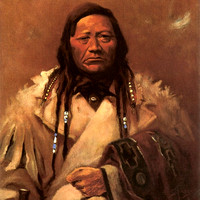
D W Orr
Environmentalist, Weimaraner/Dachshund Companion, Photographer, and Poet-Provocateur
Harford County, Maryland,
Here, where it all began, 251 years ago, in the USA
May 9, 2020
May 11, 2020 Update: All three owlets are now branching to pine trees adjacent to their nest tree. Two returned home for the day, but the whereabouts of one is uncertain at the moment. Wonky has brought a coot into the nest for owlet feasting. Near sundown, the oldest owlet at 49 days, flew a good distance from one tree to another tree! A verified fledgling! A new illustration of his sequenced maiden flight is shown below, next to last.
May 12, 2020 Update: The youngest owlet occupies the nest alone; to us humans, this is somewhat sad to witness. The other two are out and about, roosting together nearby in adjacent trees, with occasional flight practicing. Their parents will continue to bring them prey, wherever they are, located through begging calls from the chicks.
May 13, 2020 Update: After spending most of the day perched in one spot and pondering her fate, the youngest owlet started to fidget amongst the branches of her nest tree. Then suddenly, she leaped away from the tree and plunged/flew downward to freedom! As someone else who witnessed the moment and so aptly described, "off the spring board into the pool of this great big world". The sun will set in an hour and a half, and our little one will now begin a new era with her two siblings, having taken the bold first step toward independence at age 47 days. That primordial drive is just too strong, an irresistible force that pulls all creatures and man forward to their destiny. Goodbye my three amigos, it has been a pleasure watching you grow up and being nourished and guided by your devoted Momma. May you soar freely with the wind beneath your wings. May your lives be fruitful and long lived - to a grand old age of 30 some years, at which time Mother Earth will have reached a point where its fate, and that of all mankind, and our wonderful creatures, will be more clearly known.
May 20, 2020 Update: All five members of the Wonky family are doing well, with the three owlets exploring near the nest tree. They are practicing flying and climbing. The two youngest are hanging together perched on a nearby tree. Their plumage is a more noticeable brown in color, and the oldest is taking on the appearance of an adult GHO. The parents continue bringing prey to wherever the owlets may be found.
April 17, 2022 Update: Wonky and Hootie were once again the proud parents of three owlets born during the first week of April, 2022 (#1 on 4/1/22, #2 on 4/3/22, #3 on 4/6/22) in Charlo, Montana, USA. Congratulations to our devoted couple!
April 13, 2025 Update: Wonky and Hootie are the parents of three owlets born this month (#1 on 4/1/25, #2 on 4/3/25, #3 on 4/5/25), again in Charlo, Montana. They have been having a trio of little ones every year, consecutively since 2019, making them a most prolific GHO couple for the past seven years! See the last two illustrations below.
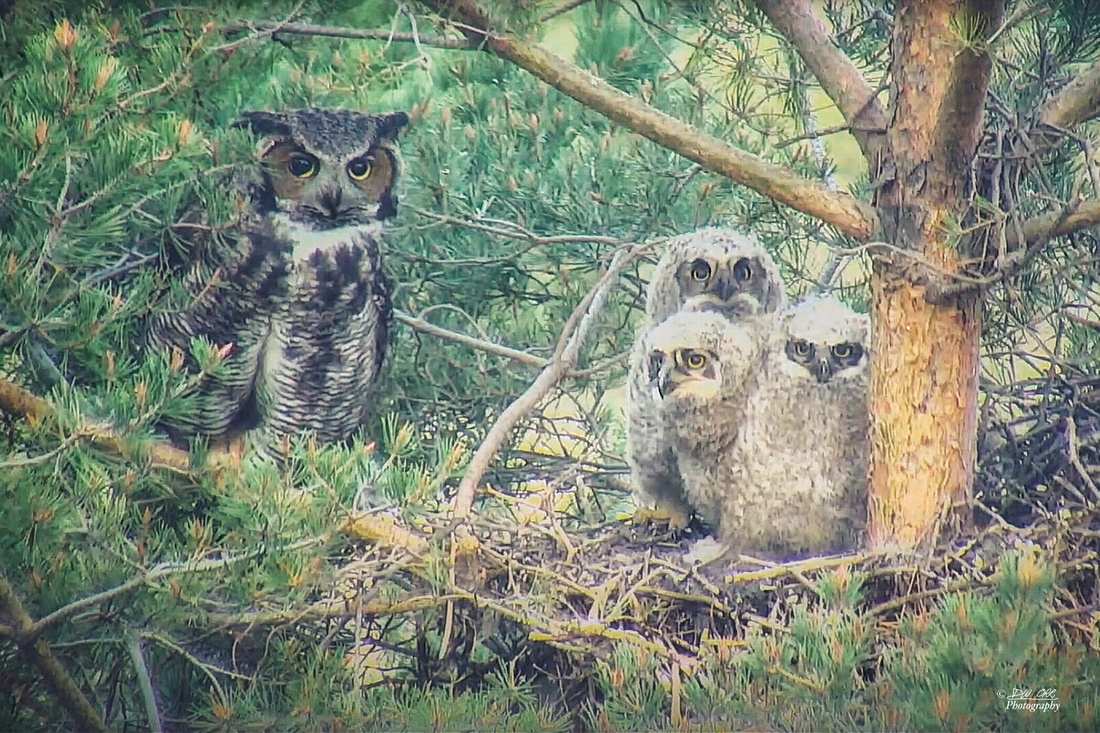
From F to B, the nestlings are 26-28-30 days old here.
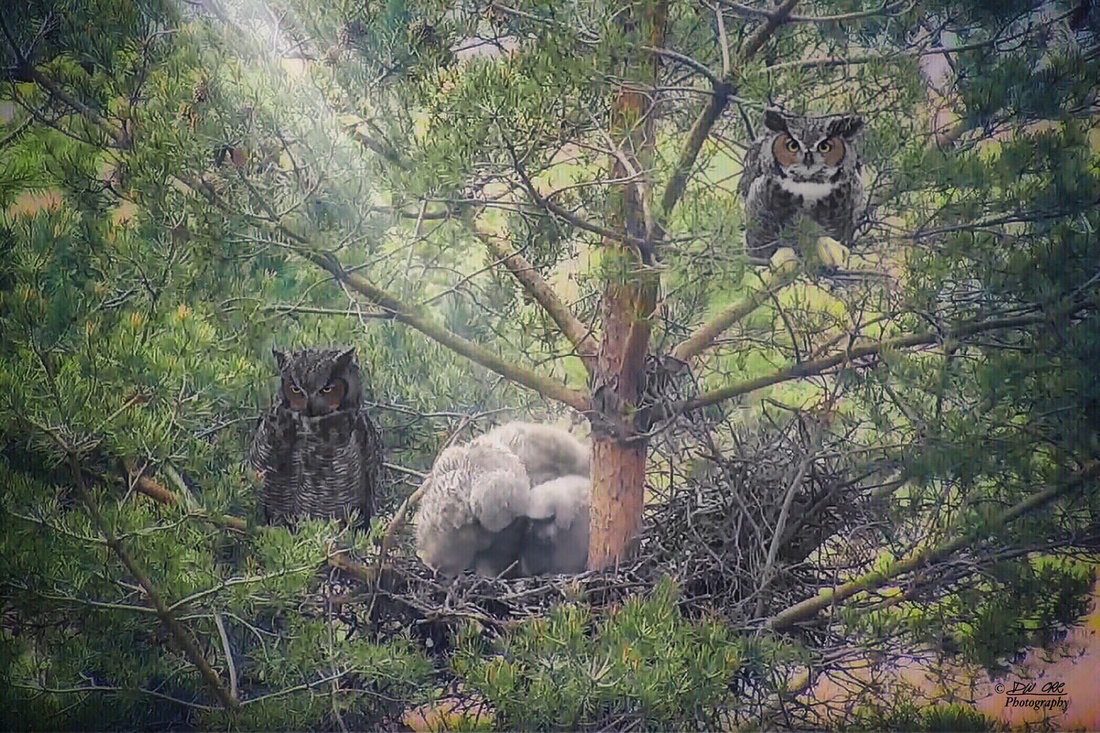
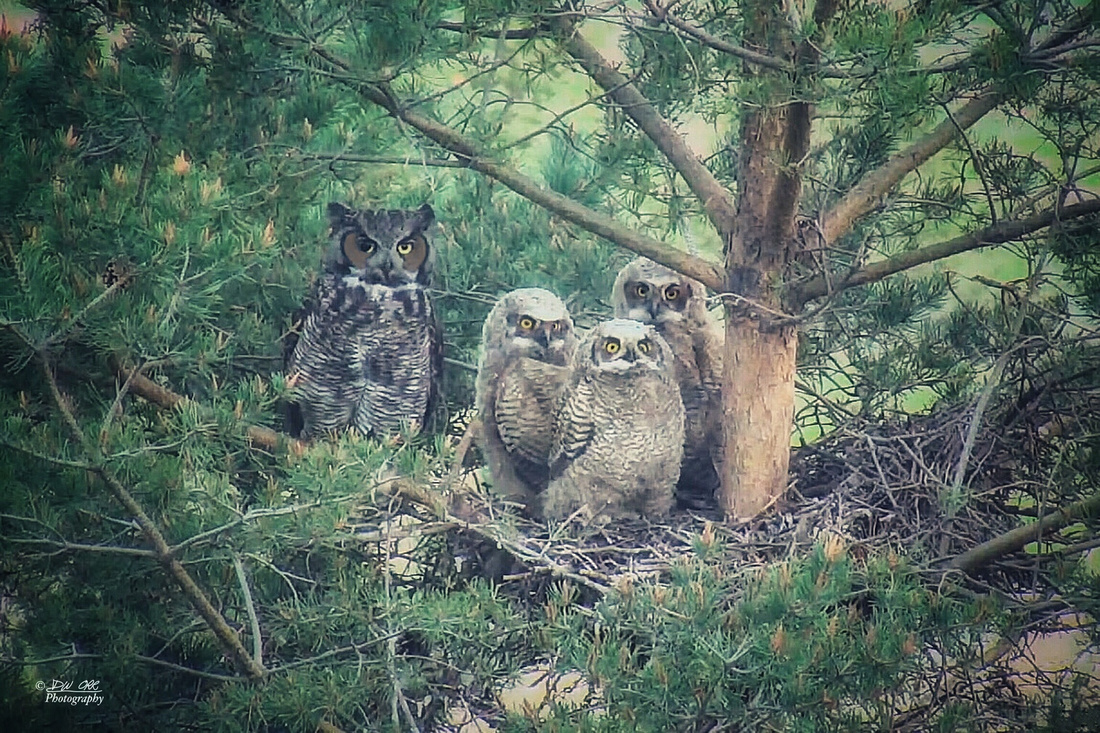
From L to R, the nestlings are 38-36-40 days old here.

From L to R, the nestlings are 35-31-33 days old here.

From L to R, the nestlings are 36-34-38 days old here.
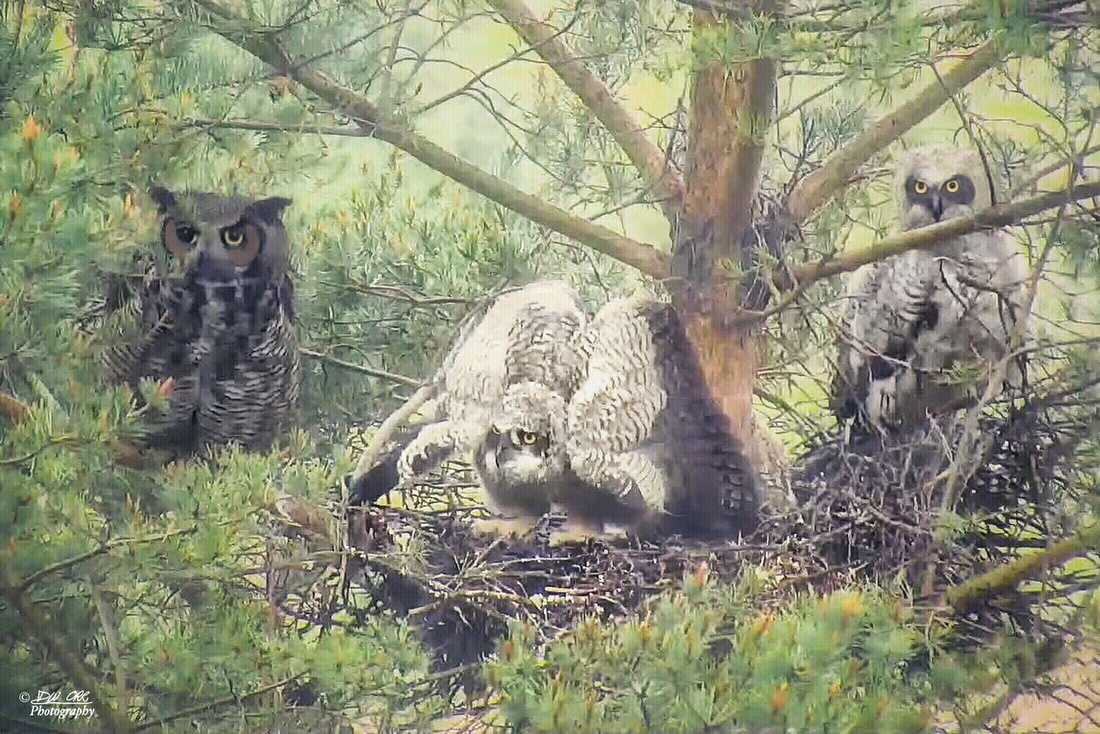
Oldest chick is to the right and youngest behind the trunk.
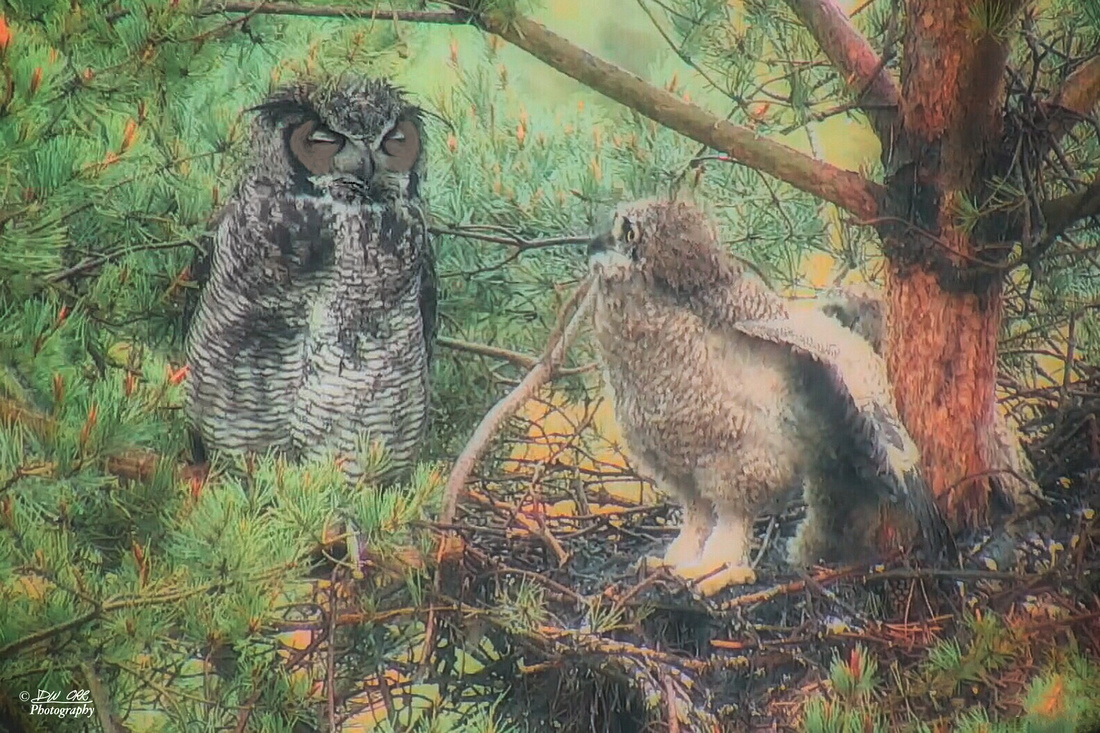

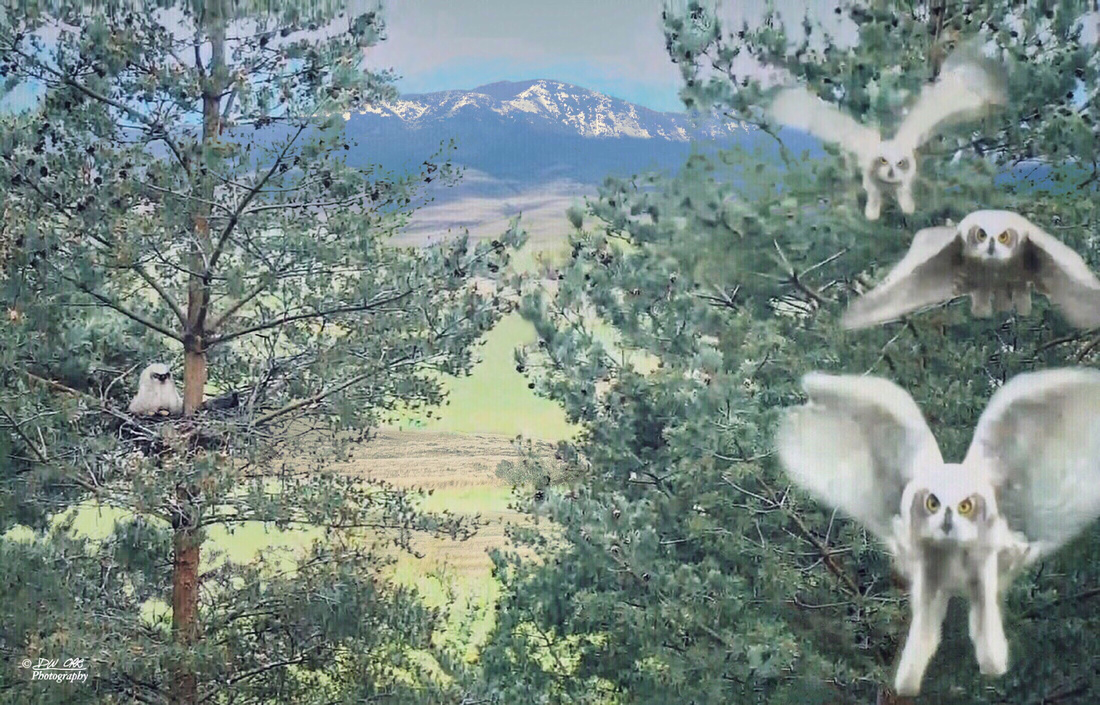
Youngest sits in the nest at left while middle sibling roosts in a nearby tree.
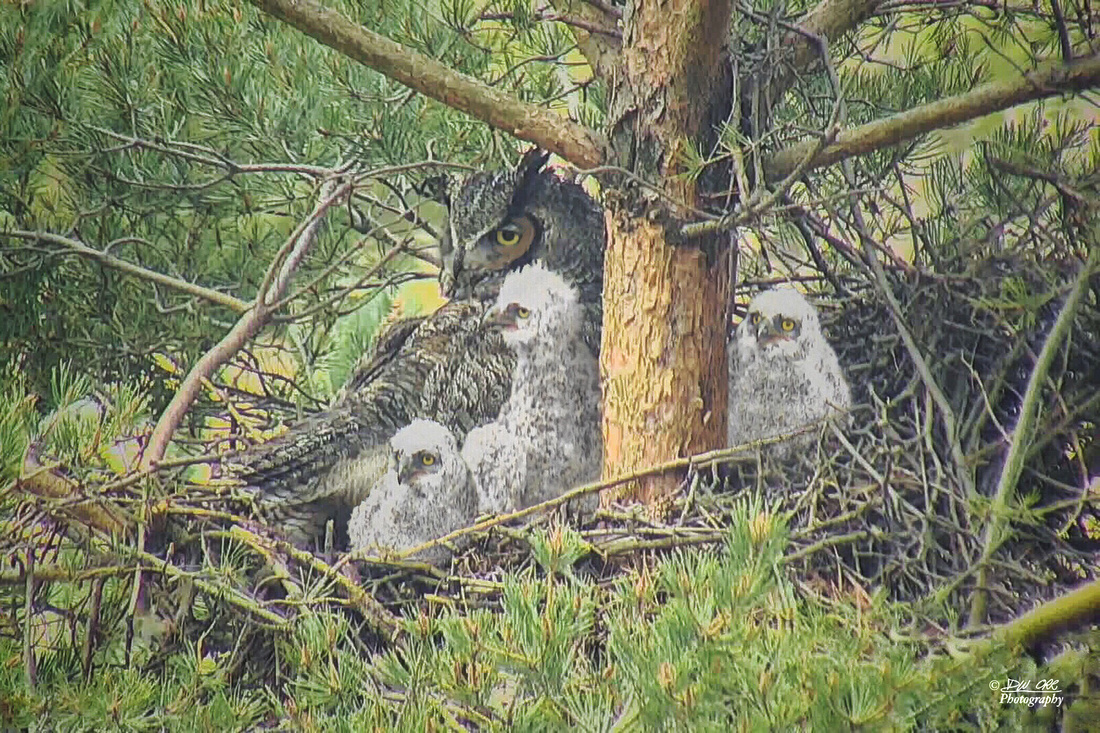
From L to R, the nestlings are 14-18-16 days old here.
 Wonky and her brood of three (2025). The owlets are 23-27 days old in this image.
Wonky and her brood of three (2025). The owlets are 23-27 days old in this image. Wonky’s Three Owlets: 38 - 42 days old (2025)
Wonky’s Three Owlets: 38 - 42 days old (2025)]]>
And two months later,
Little Dolly plays with her little dollies,
serving them pretend tea in the family dining area.
Oh, how she was born to care for her little ones!
Her older brother would tease her.
Her younger brother would gaze
with wonder at the teatime ritual.
But the ghostly presence of a black carriage
awaits ominously outside.
For the deathly Spanish Flu is about to strike,
Indiscriminately and shamelessly.
First the father,
Then the next day,
the mother of the father,
And then, after eleven days of family anguish,
Poor Dolly of six years is gone.
The recent widow now grieves over a lost daughter.
Her two boys survive the infection,
And she carries on with life,
Raising her boys,
Never to remarry.
She often pondered through
that broken-hearted journey,
What kind of mother, aunt,
and provider would Dolly have been?
One hundred and one years have now passed,
Since those dark days of the passing of Dolly.
The dutiful Dr. Molly, born to care for others,
Makes her rounds at the large urban hospital.
Now, a new deadly virus takes aim,
Striking victims in its path.
Many nations are unprepared.
Health care workers must defend,
Under great stress,
Lacking the necessities,
Through government failings,
To honor their Hippocratic Oath.
The devoted Molly, unprotected,
In treating her patients,
Is herself exposed and stricken.
Under a mandate of social isolation,
There is no family grieving over her lifeless body.
Like Dolly’s father before her,
Dr. Molly’s legacy ends at thirty plus three years.
__________________________________________________________________________________________________________________________
D W Orr
Environmentalist, Weimaraner/Dachshund Companion, Photographer, and Poet-Provocateur
Harford County, Maryland,
Here, where it all began, 251 years ago, in the USA
April 1, 2020

sucking the life from everything we cherish.
And they are our children, parents, and siblings.
Driven by greed, careers, and vanity, they rape Mother Earth,
like locusts on a binge, devouring all on its pathway to hell.
Drugged with entertainment and unenlightened, they shuffle on,
unaware of the gifted Beauty that glows before them.
The sea swells, and the air thirsts.
The trickling cadence of fire-scarred
woodland creeks are silenced.
Pollinators drop.
Flora shrivels.
Pastoral grounds flood.
The species called Man roams inland and northward.
Only the fittest can carry on.
As these nomads wander polar-bound,
a once coastal stone tower,
crafted by the weathered-worn hands of a gifted poet,
peeks through the surface of the acidic, crashing waves.
Now, with the fish long extinct,
microscopic beads of plastic swim
through the lookout porthole of the stone edifice.
As flight feathers whistle and orbit above them,
The Last Vulture slyly inspects the slow line of humanity
trod up the receded coastline beyond the lost tower by the shore.
Carmel-by-the-Sea is Nevermore,
and the submerged Hawk Tower broods blue-gray as an
eternal monument to Truth and Beauty.
_________________________________________________________________________________________________________________________
D W Orr
Environmentalist, Weimaraner/Dachshund Companion, Photographer, and Poet-Provocateur
Harford County, Maryland,
Here, where it all began, 251 years ago, in the USA
February 22, 2020
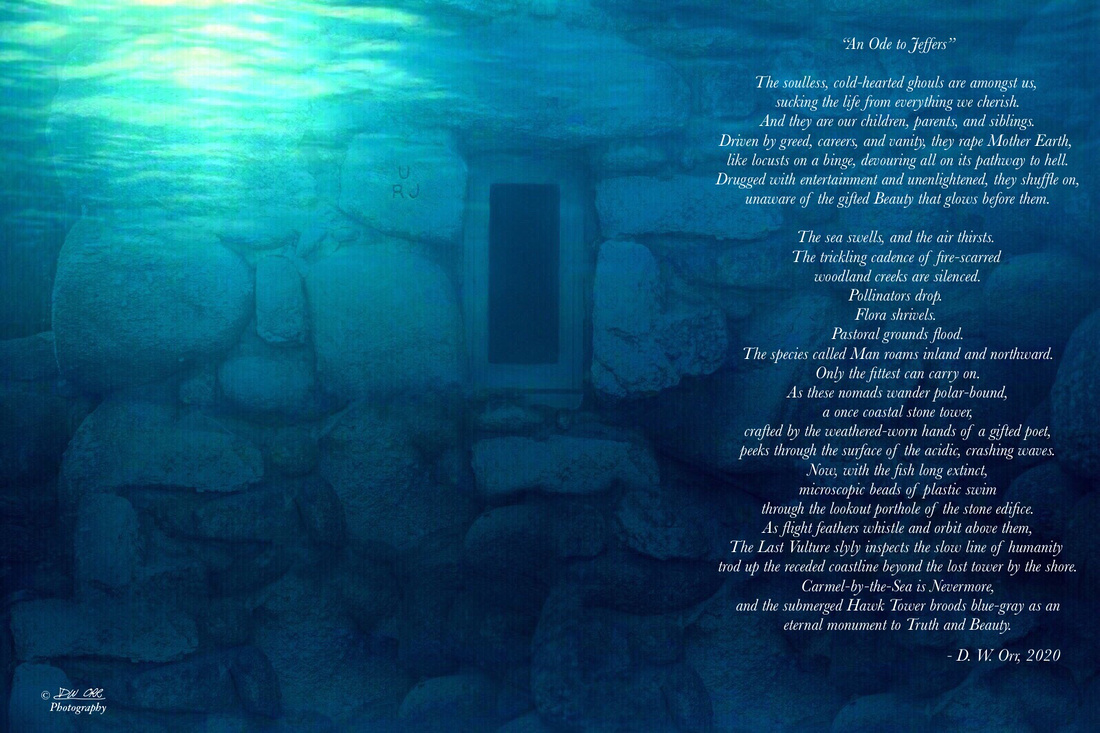
]]>
A Man is born.
A Buddhist monk is ablaze from self immolation.
Western eyes are stunned and aghast.
Must he do this to protest persecution?
Can he not fight back with all his might?
It is 1941.
A Child is born.
The infirmed, afflicted, and those contrary
to status quo beliefs are led naked
to death pits to be executed in mass.
They know the end is nigh.
Can they not fight back with all their might?
These Innocents never gave up on hope.
Even with a world seemingly gone mad.
They continued to have faith, to love, to procreate.
For it is better to live than not, even if it means to struggle.
It is 2015.
A Mother has died.
No great-grandchildren are born.
The Man looked down and heard the lies.
They said they fear caring for the afflicted.
So they said.
The only Duty they really feared was caring for anyone at all.
The Inconvenience to their lifestyle, their fame and fortune.
So who is the coward?
The Monk? The Innocent?
Or is it You?
__________________________________________________________________________
D W Orr
Environmentalist, Weimaraner/Dachshund Companion, Photographer, and Poet-Provocateur
Harford County, Maryland,
Here, where it all began, 251 years ago, in the USA
January 28, 2020

life and after their death,
bring life back to many.
As a steady stream of autumn rain
descends from the sky,
A crashing sound suddenly permeates the
stillness of the early evening air.
A grand senior tree has fallen.
Not just any tree, but one with
special meaning to a father and son.
On a sloping hill,
reaching toward the heavens,
stood this old tree,
On a lot, nestled among other
lots with similar trees.
In this special tree,
stood a wooden house,
replete with a ten foot ladder,
Tenderly crafted by the
hands of a devoted father,
As a gift to his son,
Admired by others for the joy
and comfort it brings to the beloved.
Over the long passages of time
and through many seasons,
the house started to crumble,
like fallen pieces of an
erected house of dominoes.
No longer maintained,
this play area of pretend was abandoned.
Somehow, unbeknownst to neighbors,
the father’s life had also fallen and
crumbled at a tender young age.
Now, mixed in with the fallen timbers,
were the boards of the playhouse,
Cut and split as firewood by neighbors.
With fiery hearths aglow,
Families bathe in warm comfort.
With autumn leaves ablaze,
Chimney smoke arises,
Stored carbon life releases
back into the heavens.
The soul of a father awaits there,
Whose own time with the
trees was cut way too short.
The son also vanishes over time,
somehow fleetingly
moved on with his life,
perhaps to someday build a
sylvan palace for his own offspring.
____________________________________________________________________________________
D W Orr
Environmentalist, Weimaraner/Dachshund Companion, Photographer, and Poet-Provocateur
Harford County, Maryland,
Here, where it all began, 250 years ago, in the USA
December 27, 2019

A Stately Tree
be the last of his kind.
He had traced his German and Irish
heritage back several centuries.
He even knew of their life’s
trials, misfortunes, and pandemics.
He had walked in their battlefield footsteps,
and stood beneath their Presbyterian altar.
His father did not know.
His mother did not know, nor his brother.
No bloodline of his was left,
nor would be left, who would care,
to share faithfully, and eternally pass
onto his discoveries of the very
nature of their being, their very soul.
Such was his fate,
the last berry of the fruited tree.
Doomed to be conflicted
with the eye of an artist,
the mind of a scientist,
and the heart of a poet.
Offering charitable wisdom,
but yet not welcomed by those
blinded by petty and selfish distractions.
Now, in his autumn years,
he only watched, and captured the
beauty of life surrounding him.
Firmly knowing, that man’s greed,
would end all that beauty,
not in millions of years,
but scores of years.
As he continued to watch,
displayed behind him, on the wall,
was that captured beauty:
sunrises, waterfalls, oceanic waves,
mountains, skies, heavens, woodland,
wildlife, and canine companions.
Ah, the canine companions.
Spanning decades,
he would love his German breeds,
big and small,
and they would love him back.
Now, three remained.
Someday, he would be joining the
other eight into the infinite,
expanding cosmos.
Kindred spirits,
intertwined in play,
as though it never ended to begin with.
He would then await for the
most precious love of his life.
The wife who was always there for him.
Her glowing inner and outer beauty omnipresent,
filling him with joy forever, and ever.
In that afterlife,
even if only like a dream,
let our eternal consciousness
dance to the joy of life.
With our Mothers, Fathers,
Brothers, Sisters,
Husbands, Wives, and Children,
And with our beloved and devoted dogs,
who departed us with so much sorrow in our heart.
_________________________________________________________________________________
D W Orr
Environmentalist, Weimaraner/Dachshund Companion, Photographer, and Poet-Provocateur
Harford County, Maryland,
Here, where it all began, 250 years ago, in the USA
August 31, 2019
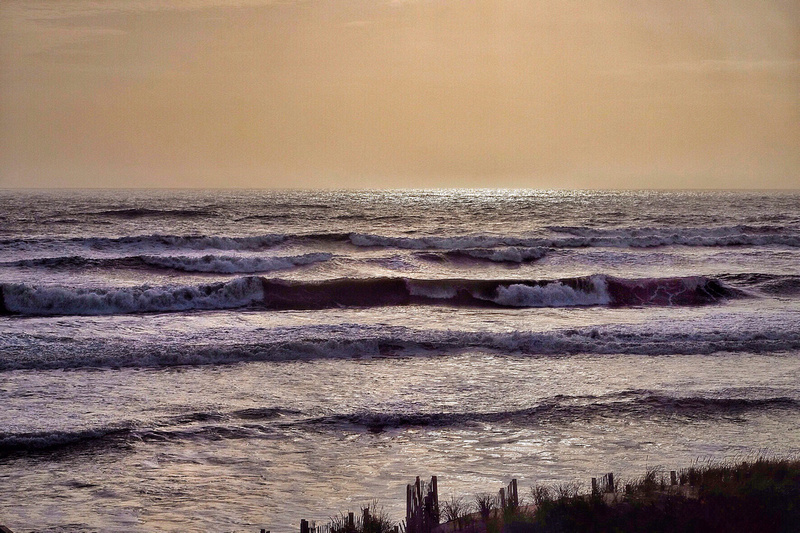
The Ebb and Flow of Life, and the Light
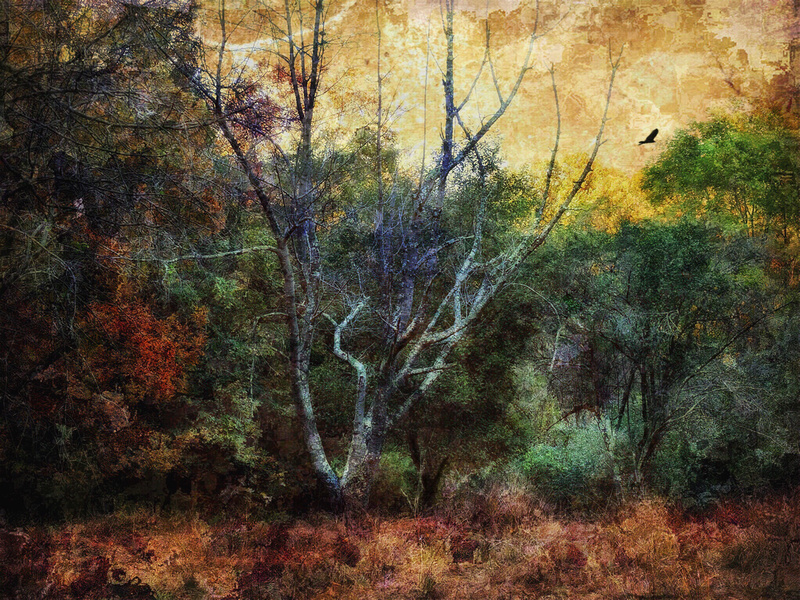
The Autumn of Our Years
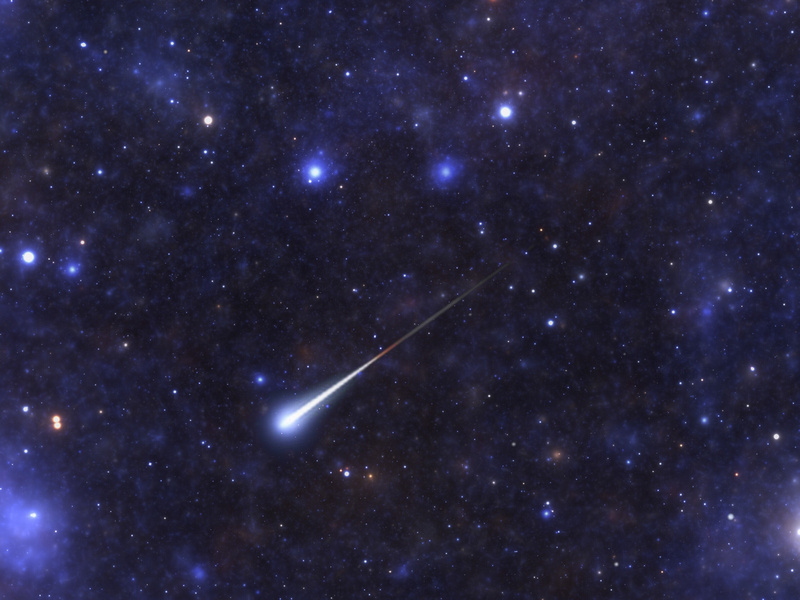
The Infinite
]]>I will miss her morning wakeup kisses and hugs. Each morning, when I would arise, she would enter the bedroom, jump on the bed, lavish me with kisses, and wave her leg at me to solicit a giant hug from me.
... Her evening appreciation kisses and hugs - usually right after our dinner and with me seated at the table, she would stand with her front paws in my lap and shower my face and the top of my head with wet kisses. The same ritual was done with me right before bedtime with me seated on the couch.
... Petting her head as she sat down next to me and smiled back at me as I sat at the sunroom table. That contented, broad smile will always stay with me.
... Sharing my morning bagel with her and her licking the peanut butter spreader.
... Licking out my yogurt container and spoon after dinner.
... Playing ball catching with her in the early evening. She would catch my high tosses while springing off her rear legs. Sometimes, she would miss it and catch it on the first bounce off of her nose before hitting the ground. After each catch, she would always bring it back to me by dropping it at my feet for the next round of tossing. She was so graceful at this ball playing and beautiful to watch, even after gaining weight in her last years. When she was ready to stop playing our game, on her final catch, she would trot pass me, with the ball in her mouth, and head straight for the door. She was the best ball catching and ball retrieving Weimaraner to ever grace the Orr Family.
... Watching her trot through the same trace of worn down grass when positioning herself for my next ball toss.
... Watching her crunch on the flexible balls.
... Lying down in the hallway, waiting patiently, while we washed the dinner dishes, just prior to play-ball time in the backyard.
... Witnessing how gentle she was around our two Miniature Dachshunds. The doxies could sleep on top of her without her stirring. The doxies loved and trusted her so much that they often tried to jump up and kiss her on her mouth while she was standing next to them.
... Showing our little Dachshund how to defend the fence-line from any encroachment by the neighbor’s dog.
... Barking her alert signal at the sound of the mailman’s truck arrival.
... Starting the chorus off of four dogs barking and howling in unison upon my wife’s home arrival. Who will lead the choir now?
... Spending quality time with my daughter on her weekend stays at the house.
... Watching Millie receive a good toothbrushing from my loving and caring daughter. Millie was not only the first of our Weimaraners to readily accept this hygiene, but she seemed to get great pleasure from receiving this kind of attention.
... Watching her effortless, flowing, and graceful swimming in the pool during vacations down at the beach. She was the best swimming Weimaraner companion ever to join the Orr Family.
... Watching her swim alongside my son in the pool.
... Me smiling as she entered the vacation hot tub on her own volition with the rest of the family.
... Recalling on how as a youngster she would grab multiple personal items in her mouth all at once (socks, balls, oven mitts, sweaters, shoes, placemats, etc.)
... Recalling on how with conviction she coerced her other Weimaraner companion, Maddie, to accept her into the household.
... Watching her lie on the floor and bask in the sunlight streaming through the front window of the living room on such a winter’s day. All of our Weimaraners enjoyed sunbathing that way.
... Being a mentor for our “Big Boy” Weimaraner by showing him how to behave himself both indoors and outdoors.
... Recalling the Dinner Show Ritual that she and Maddie invented and performed prior to alerting me that dinner time had arrived (see the tribute to Maddie blog entry, here.)
... Leading the procession of her and Toby as they strolled into the sunroom to inform me it was their dinnertime. Millie was the heir apparent of this leadership role once Maddie crossed over the rainbow bridge.
... Pointing to the leftover dinner rolls sitting on the counter to let us know that she was ready to consume them.
... Recalling how she was not fond of the presence of thunderstorms with the loud booms and electrical power interruptions. She would often seek shelter in one of the bathrooms or head for the basement level. I would console her not to be fearful.
... Taking photographs of her elegance, grace, and goofiness; and her interactions with my other three canines.
... Recalling how proud she was when she captured her first squirrel at 5 years of age.
... Gazing at her sprawled across my wife’s lap as she watched television on the couch.
... Recalling the years when she would sit down and lean next to me in my chair by squeezing herself into a tight place. She would do the same with my wife.
... Rubbing her chest and belly after she would roll over on her back seeking such affection
... Plowing herself under the bed covers when joining us at bedtime.
... Her warm body next to mine on a cold winter night.
... Her loyalty, devotion, tenderness, bravery, and zest for life.
Early evening, on the second night before she passed, as usual, I was playing ball toss with her with no signs of any troubles ahead. Later that evening, instead of her usual kissing routine, she walked up to me by the couch and through her body language told me she was feeling ill and asked if I could help her. I knew immediately that something was gravely wrong. A great dog wanting to let me know but not wanting to bother me too much. God knows that my wife and I gave her the best care money could buy, but she was suddenly called to the rainbow bridge on the second day at the somewhat young age of 8 1/2 years. Millie will live on forever within our mortal souls until we too are called to the promise land. We hope upon our arrival there that we will be able to play ball toss not only with Millie, but with her former close buddy Maddie, Macie, Markie, Mollie, Maggie, and Hildy I and II. Meanwhile, we will continue to share comfort and joy with our remaining male Weimaraner and two Kaninchen Miniature Dachshunds.
I have taken so many images of Millie that have captured her personality and zest for life that it was difficult to limit them to only a few as seen here. I invite you to visit her life recorded in the first sixty-nine photos and some of the latter fifty-six images at my Weimaraner Gallery. I believe that all these images of Millie, Maddie, and Toby capture the day-to-day spirit of the Weimaraner.
Also, see my blog post from September 2015: Canines, Weimaraners, and Me
Post Script: Millie will be the last of 60 years of female Weimaraner companionship in the Orr Family. A very sad day indeed and the end of an era.
D W Orr
Environmentalist, Weimaraner/Dachshund Companion, Blogger, and Photographer
Harford County, Maryland
August 23, 2019

Millie at 6 Months

Millie the Pup, Resting on her Mentor, Maddie

Millie on the Double Retreive

Millie, The Champion Swimmer

Millie in the Hot Tub

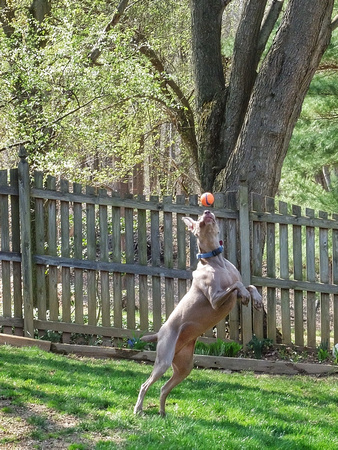
Millie, the Champion Ball Catcher
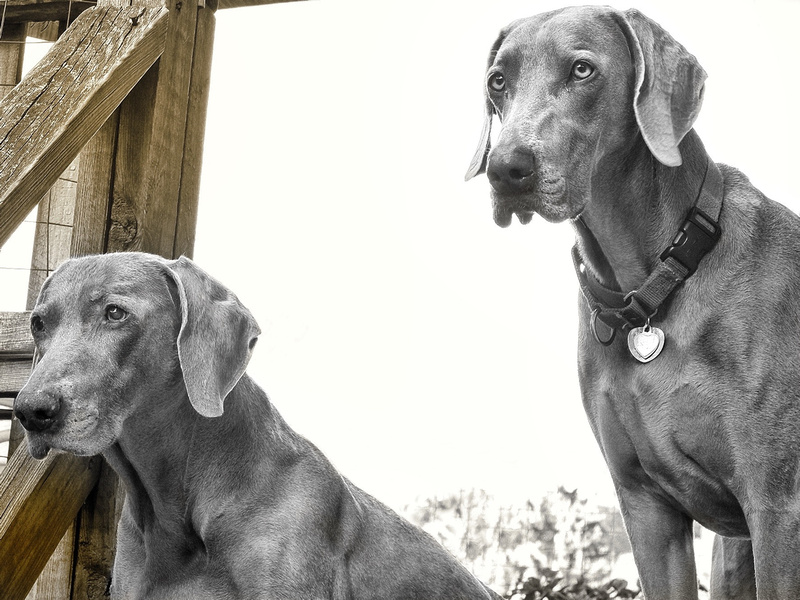
Maddie & Millie, Best Friends Forever

Millie the Wise Girl

Millie With Mom

Me and Millie Squeezed In On the Chair

Millie Showing the Way to Puppy Toby

Millie The Magnificent
]]>
The first three pictures below were created in our back yard at different seasons of the year and under different weather conditions. I was motivated to capture the beauty of this scene by the natural rich colors, black and white tonal range of light, and the harmony of the very weathered, wooden structures situated peacefully amongst the undisturbed vegetation, and foliage of the trees.
These scenes will never be captured and interpreted again by photographer or painter. For a larger, more obtrusive, modern style, synthetic outbuilding has been erected nearby the long standing white shed. More disturbingly, some of the background trees have been removed and cleared for the construction of a new home in an area once inhabited by deer and foxes (see last two images), an outcome of the continued greed by local politicians and land developers to destroy our natural environment. This unique scene of "divine beauty" shall be, Nevermore.
- Still grieving over the Lost Woodland of the Bread & Cheese Branch.
D W Orr
Environmentalist, Historic Preservationist, Weimaraner/Dachshund Companion, Blogger, and Photographer
Harford County, Maryland
February 1, 2018, Birthday of Maddie
Summertime
Foggy Morning
Autumn
]]>The sunroom motif is Coastal Cottage, to which much folk art has been added. Our home is located not too far from where the Susquehanna River empties into the Chesapeake Bay. At that point lies the town of Havre de Grace, the self-proclaimed Decoy Capital of the World and where a museum was founded in 1986 for exhibiting the works of the region's master decoy carvers and to tell the history of water fowling. One of the founding fathers of that museum was Jim Pierce, himself a master decoy carver who studied and apprenticed under the renowned R. Madison Mitchell. Another celebrated carver from the bay region was Charlie Bryan, from Wilson Point on the Middle River, whose likeness is portrayed through a wax figure at the museum. Charlie was a protege under Charles "Speed" Joiner, who lived across the bay in Betterton. Mr. Bryan was a close friend of George Schaub, my father-in-law, who was a master decoy maker in his own right. Samples of Jim, Charlie, and George's folk art can be found throughout the shelves and tables of the Orr sunroom. All the pieces are made to be used as working decoys for hunting ducks and geese, but have so much appeal as works of art that they now have become sought after collector items.
Chain saw produced art pieces have recently become popular and prevalent around homes. The artist, Todd Lynd of South Carolina, focuses on marine mammals and fish. A three dimensional relief of a mother Humpback Whale and her calf rise gracefully in unison toward the ocean's surface on our tongue and groove pine wall. Canadian cement sculptor, Gordon Hare, has created detailed reliefs of mammals including one of a Humpback Whale also adorning our sunroom wall.
Through my walls of screen and glass, I watch the day unfold as the cumulus clouds glide, the Ruby Throated Hummingbirds hover, and the vultures soar. I observe the Nuthatch feeding, listen as the Cardinal chirps, and feel the cool northerly breeze. The natural light in August bathes the room. Surrounded by and inspired by oceanic and bay wildlife artwork, my spirit is lifted as I tune out the man-made distractions of the year 2017 and commune as one with my natural environment.
Jim Pierce and the HdG Decoy Museum
Havre de Grace Images by D. W. Orr Photo & Poetry
D W Orr
Environmentalist, Historic Preservationist, Weimaraner/Dachshund Companion, Blogger, and Photographer
Harford County, Maryland
August 26, 2017
Photo from Upper Chesapeake Bay Decoys And Their Makers by David and Joan Hagan
A rare feeding goose decoy by Jim Pierce
Mallard Decoy (center) body by Charlie Bryan, paint by G. Schaub. All other decoys and birds by George Schaub.
George Schaub (Photo by the Baltimore Sun)
Mother Humpback Whale and Calf, by Todd Lynd
Humpback Whale Cement Relief by Gordon Hare
]]>This past September, while I was preparing to capture (what Adams termed as pre-visualization) the image shown below, "Moonrise Over Corolla", I was immediately struck by some similarities to Adams iconic photo. Motivated by the beauty of the Hernandez photo, I carefully set the exposure so that the gibbous moon's detail would be in proper luminescent harmony with both the low level clouds forming over the ocean and the setting sun-lit seaside homes. I hope that you find as much enjoyment from viewing my image as I had in taking it.
I have also included two other well known photos by Adams. "Winter Sunrise" was taken in the Lone Pine Valley and shows the daunting peak of Mt. Whitney (highest mountain in the continental USA) in the background. To understand what it is like to hike up to the peak of Mt. Whitney at 14,505 feet, read my blog here. For scale, take note of the horse on the valley floor in the foreground. "Clearing Winter Storm" captures the wonder of the beautiful Yosemite Valley with its El Capitan granite monolith and Bridalveil Falls.
D W Orr
Environmentalist, Historic Preservationist, Weimaraner/Dachshund Companion, Blogger, and Photographer
Harford County, Maryland
October 23, 2016
"Moonrise Over Hernandez", 1941, by Ansel Adams
"Moonrise Over Corolla", 2016, by D W Orr
"Winter Sunrise", 1944, by Ansel Adams. See Mt. Whitney in far right background. Refer to my Mt. Whitney Blog.
 "Clearing Winter Storm", 1937, by Ansel Adams
"Clearing Winter Storm", 1937, by Ansel Adams
Ansel Adams, taken between 1947-1950, and colorized by Loredana Crupi
 Mt. Whitney (Source cannot be attributed)
Mt. Whitney (Source cannot be attributed)This is no easy hiking excursion. Of the tens of thousands of hikers who yearly plan the adventure, only about one-third actually make it to the peak. Many succumb to altitude sickness, to which I can attest is quite overcoming to even a healthy and fit 23-year old man. Somewhere around the 13,700 foot altitude, I was struck with the sickness and could barely shuffle my feet up the sloping pathway to achievement. There was I, plodding along as though I was a very old man, one slow agonizing step at a time. Right foot forward ... then the slow and deliberate advancement of the left foot. Repeat. One foot ... at ... a ... time. And hallucinating through it all like it was an out-of-body experience. I'm thinking of telling my hiking companion, Ed Wetzel, that I can't make it; go on without me. Damn it! I've come this far. I must find a way to continue! It was only through the encouraging words of Ed, that I was able to overcome the pain and press onward. When Ed exclaimed, "I can see the top!",
 View of Summit from Trail Crest - Ed: "I can see the top!"
View of Summit from Trail Crest - Ed: "I can see the top!"I was motivated to carry on at a much faster clip through probably a sudden rush of adrenalin. And to the top Ed and I made our way, and landed our tired aching bodies.
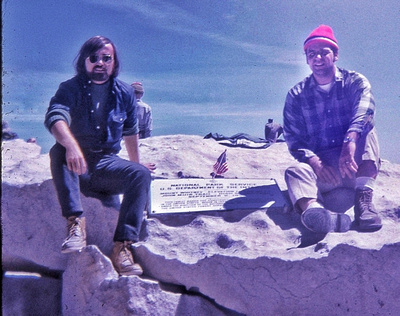 Doug & Ed Celebrate Their Achievement
Doug & Ed Celebrate Their AchievementThis adventure all began on our arrival Friday evening at Whitney Portal, a 8,360 foot elevated base camp where we spent the night trying to get acclimated to the high altitude. Up early the next morning, bright-eyed and bushy-tailed, we registered our names as hikers who intended to camp overnight at 12,000 feet, make our way to the peak by lunchtime the following day, and return to base camp by dusk on Sunday.
 Ed & Doug Registering Hike at 8,360 Feet - Photo Bombed!
Ed & Doug Registering Hike at 8,360 Feet - Photo Bombed!Before us lay a 22-mile round trip excursion up and down the side of a mountain flush with the beautiful scenery of the Sierra Nevada's. We would be traversing a trail with an elevation gain of over 6,100 feet. The route crosses the west side of the eastern Sierras at 8.2 miles, displaying endless peaks and a lake-strewn granite basin to the west, and then traverses the remaining 2.5 miles along the mountain crest to the summit, with stunning views all the way.
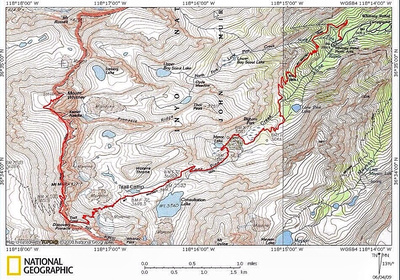 The Route to the Top
The Route to the TopI was outfitted with a loaded backpack provided by Ed and an old summer sleeping bag that I used back in my days of outdoor camping with my buddies from Junior High School. That bag would prove to be totally inadequate for what would lie ahead that night at 12,000 feet.
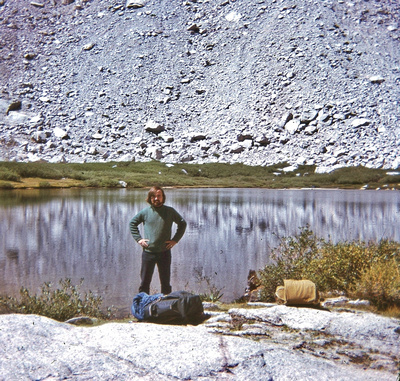 Doug arrives at high camp with his totally inadequate sleeping bag, 12,000 Feet
Doug arrives at high camp with his totally inadequate sleeping bag, 12,000 FeetEd and I constructed a lean-to with a tarp anchored against a boulder that lay along flat ground adjacent to a mountain lake.
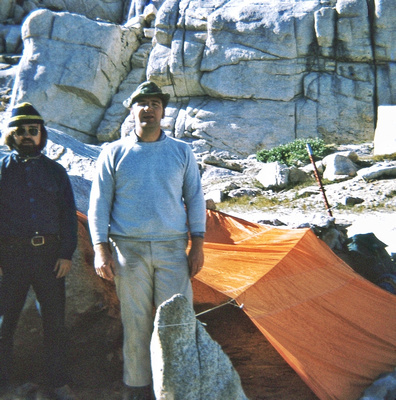 Doug & Ed Stand Proudly Before Their High Camp
Doug & Ed Stand Proudly Before Their High CampWe ate dinner, and as the sun settled and the wind kicked up, we hunkered down for a long night bundled side by side to gather some rest before departing to the summit in the morning. Oh my, what a cold, bone-chilling night it was. Using a layered approach, I still was not prepared with proper clothing gear to weather the wintry-like, high altitude temperatures. I remember having a long sleeve undershirt, sweater and thin windbreaker to wear, plus a heavy wool green-plaid shirt with me. Of course the sleeping bag was not down filled. I shivered through the entire night and needless to say did not gather any sleep. This would not help me the next day when I hit the proverbial wall of thin air at 13,700 feet as I described earlier.
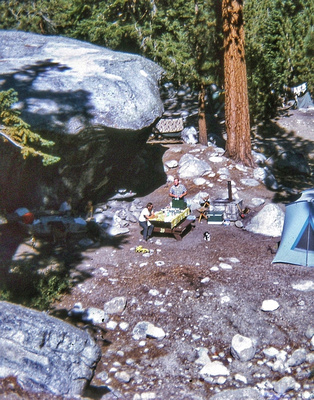 Ed & Doug Return to Base Camp where the Ladies, Charlie, and Scamp the Cat greet them
Ed & Doug Return to Base Camp where the Ladies, Charlie, and Scamp the Cat greet themThe pictures below document our excursion up to and through the mountainside tree line, along the rocky switchback trail, and up the long, challenging summit crest trail to the mountain peak. Ed was the photographer with his Kodak five-and-dime camera. He loaded it with one roll of slide film and took a total of 34 images including one by his wife Diane. It is astonishing what a somewhat primitive 70's film camera can deliver with a little help from modern day post processing applications. Yes, the images are grainy, have streaks and other strange artifacts visible in the shots. But 46 years later, the images bring Ed and I much joy and fond memories of a different time and place where we decided to test our manhood up the slopes of the California Sierra's.
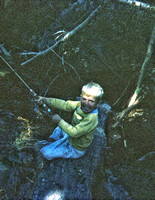
Ed & Diane's son, Charlie, fishing at base camp.
Update (Sept 18, 2016): My fellow Mt. Whitney companion, Ed Wetzel, reminded me of an amusing anecdote associated with the ascent of this remarkable mountain. While Ed and I were slumped over with nausea from altitude sickness, an elderly trekker clad in shorts and a red plaid shirt trotted passed us (yes, trotted). We both cursed him under our reduced and heavy breath, and in a fit of schadenfreude, we vowed to uncaringly pass by his prone body on the way up to the peak. About an hour later, as we were still ascending and wrestling with sickness, as Ed describes it, the fellow passed by us again "skipping down the trail". With a proud smirk on his face, the fit old man says to us, "Hang in there boys, it's not much further". At that moment, I think if either one of us had an ounce of energy, we would have extended our leg before his "skipping" gait and watched in amusement as he tumbled down the trail. :-)
D W Orr
Environmentalist, Historic Preservationist, Weimaraner/Dachshund Companion, Blogger, and Photographer
Harford County, Maryland
September 3, 2016
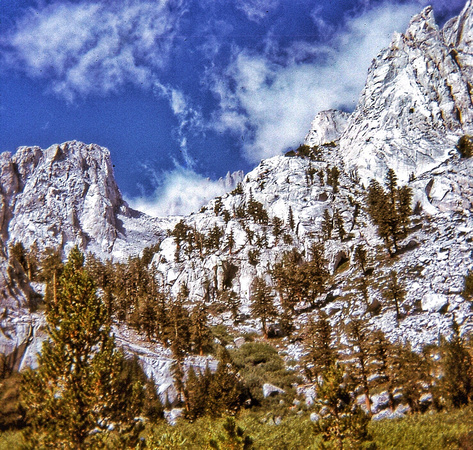 First view of Mt. Whitney hiding among the clouds along the tree line trail
First view of Mt. Whitney hiding among the clouds along the tree line trail
Doug at Tree Line - About 10,000 Feet
Doug Above Tree Line
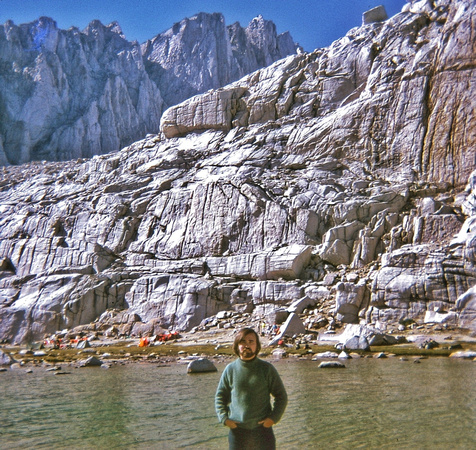 Doug at High Camp With Summit in Background
Doug at High Camp With Summit in Background
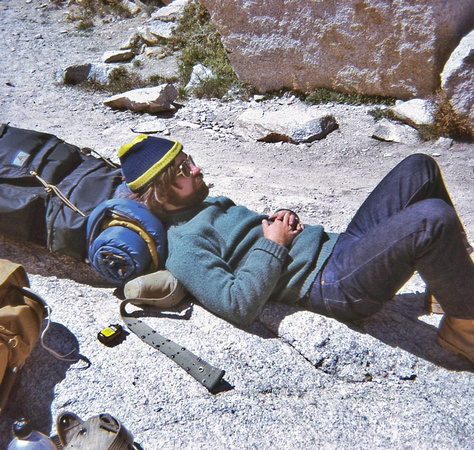 Doug resting on his cheap sleeping bag roll before setting up high camp
Doug resting on his cheap sleeping bag roll before setting up high camp
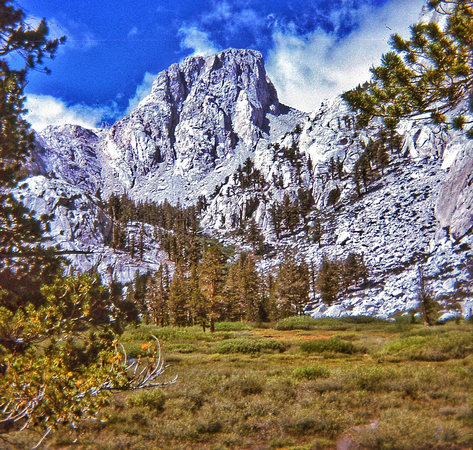 View of Wotan's Throne from High Camp
View of Wotan's Throne from High Camp
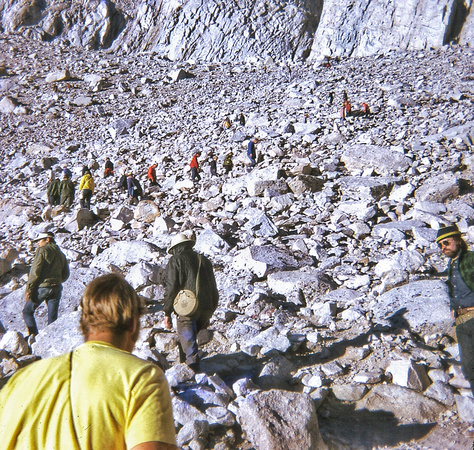 From high camp, Doug looks on incredulously at hikers along switchback trail. Where did all these people materialize from overnight?
From high camp, Doug looks on incredulously at hikers along switchback trail. Where did all these people materialize from overnight?
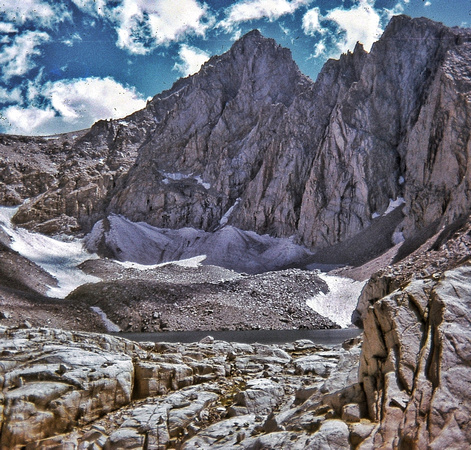 Next Day, Sunday, On the Way to the Summit - Snowfields!
Next Day, Sunday, On the Way to the Summit - Snowfields!
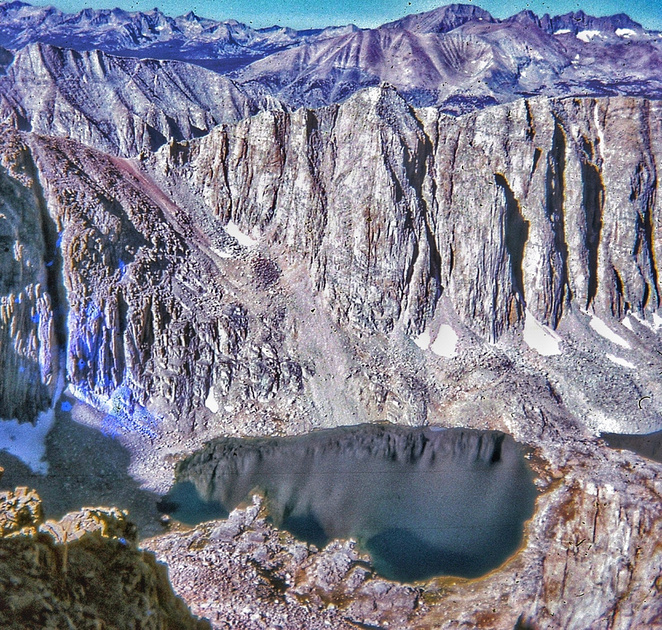 On the Way to the Summit a Snowmelt Pond - View from Switchback Trail
On the Way to the Summit a Snowmelt Pond - View from Switchback Trail
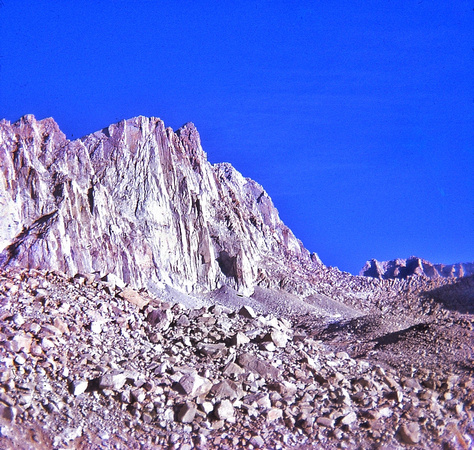 View of Summit from Switchback Trail
View of Summit from Switchback Trail
Doug At The Peak - Between my feet is the round USGS brass elevation benchmark disk. I am drinking a canned Mai-Tai cocktail mix and flashing the victory/peace sign. On my left hip, a box of crackers; right hip, sunglass case holder. About 11,000 feet below me is the flat, arid Owens Valley.
The USGS Elevation Benchmark Disk (Source cannot be attributed)
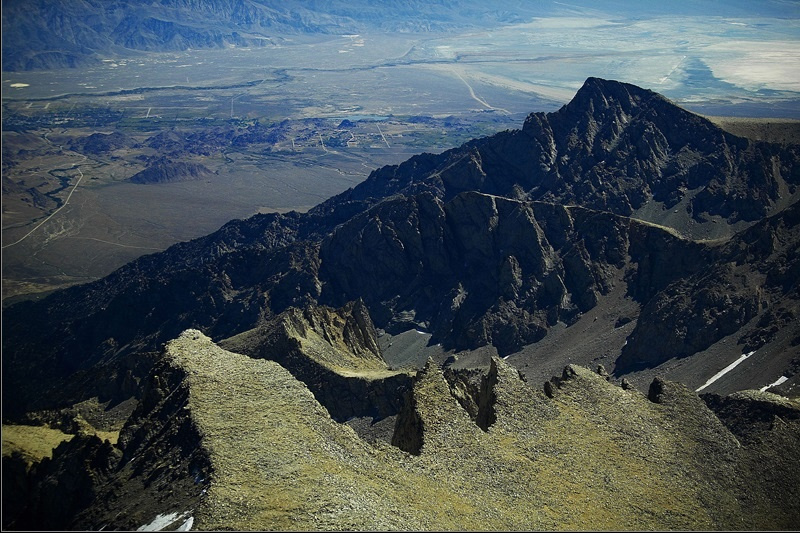 Aerial View of Mt. Whitney - Far Left Pinnacle (Source cannot be attributed)
Aerial View of Mt. Whitney - Far Left Pinnacle (Source cannot be attributed)
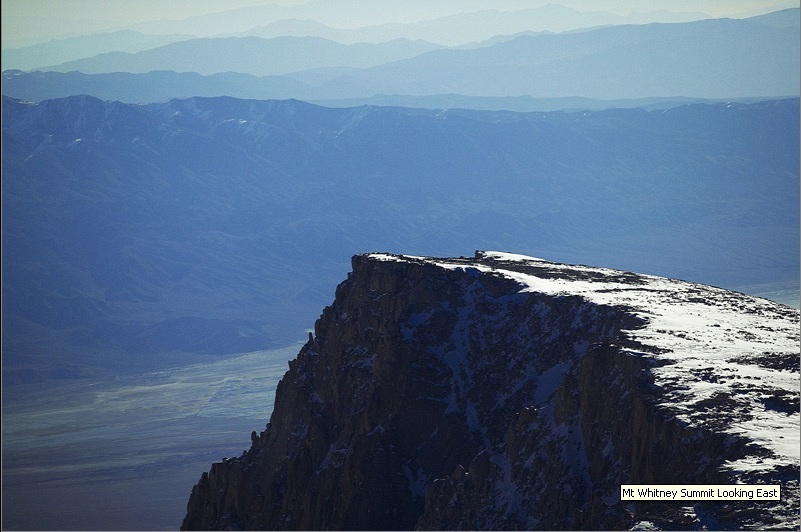 Aerial View of the Peak at Mt. Whitney (Source cannot be attributed)
Aerial View of the Peak at Mt. Whitney (Source cannot be attributed)
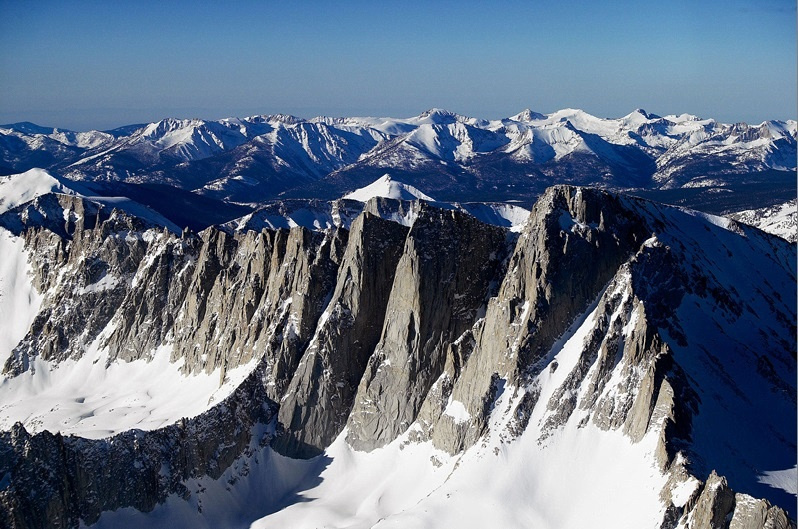 Aerial View of Mt. Whitney, Second Peak from Right (Source cannot be attributed)
Aerial View of Mt. Whitney, Second Peak from Right (Source cannot be attributed)
WARNING: The following is a loving tribute to a very special dog, from a human companion who intensely appreciates the individuality, character, and soul of Weimaraners. Many readers may find this tribute too tedious. Weim lovers perhaps, not so much.
This girl, who we named Maddie, would be easy going - quite unlike your typical Weimaraner. Shortly after arriving at her newly chosen household (for she chose me), she developed a debilitating disease diagnosed as HOD - a type of intense inflammation of the joints that some believe is related to vaccinations. She could not stand or walk. We were very concerned that she would not make it to her 3-month birthday. My darling wife and I nursed her back to health through this very trying period. This nurturing resulted in a lifelong, intense devotion from Maddie to my wife. Miraculously, she ended up living the longest of any of our Weims - almost 14 1/2 years. In that lifetime, she was pals with a English Springer Spaniel for 9 years and another Weim for 5 years. She got along with both of her household buddies.
When the Spaniel needed to serve a timeout in her crate, Maddie would often come over to the crate and express her sympathies and concern for her buddy. Particularly when "Mom" (my wife) was heard to come home (giveaway - garage door opening), the Spaniel and Maddie would begin their howling routine. Maddie would jump on top of the dining room table, and the Spaniel would begin the chorus standing on the floor. The Spaniel was the first to start the practice of howling on Mom's arrival. Maddie joined in some months later and the two continued it together from that point forward. A more domesticated primordial sound has never been heard.
After family supper, Maddie and the Spaniel together were usually given "flip" chips (named in honor of the Spaniel flipping her chips in the air upon receiving). Maddie would consume her treat well in advance of the Spaniel. Of course, in her greed Maddie would then want to finish off her buddy's treat. The Spaniel was the ever vigilant dog. She would react to outside "disturbances" by barking incessantly and sometimes rushing the front window by jumping on the adjacent couch. In fact, on one occasion a joint rush by Maddie led to a broken window that needed replacement. Fortunately, no dog was injured. Like most Weimaraners, Maddie's power of observation was keen, and she would soon use this skill to her tactical advantage. After many observations of this behavioral reaction from the Spaniel, Maddie knew that the Spaniel's dedication to home vigilance dominated her desire for treats. With this knowledge in hand, Maddie would stand near her buddy while she was chewing her gummy flip chip and then use her "be on the alert" bark to agitate and distract her friend to react. On queue, the Spaniel would immediately begin barking and leave her flip chip unguarded to investigate the unknown, feigned intrusion. Maddie would then grab the unprotected possession and finish it off during her rival's absence. After investigating the false alarm, the Spaniel would return to discover that her treat had been stolen. She would look up at me with those sad eyes and bark, "Dad, I have been had!" Feeling sorry but amused, I would always succumb to her plea and go get a new flip chip for my "Little Buddy". Maddie used this ruse many times on the gullible Spaniel. I feel that it was probably the most intelligent preconceived scheme ever witnessed by me from my many loyal canines.
Like most Weims, Maddie would move in a tight circle two times before plopping down to rest; she would rub her front shoulder in a odorous substance when discovered outside; she would steal away my wife's shoes as comfort toys to take and hide in her crate; a chronic warm seat stealer, while you were away to the bathroom, you found that she had furtively repositioned herself from one side of the room to your favorite spot on the couch; during neighborhood walks, she would periodically sniff out and retrieve dead birds which she would carry back to the house - usually much effort was required to coerce her to give up such a prize. Maddie liked to give me multiple kisses on the face before settling into bed. Especially in her early years, she would sit her 65-pound body in my lap while waiting for my wife to complete her Saturday shopping. For some reason, female Weims seem to limit this honor to the alpha male person of the family.
But Maddie had many unique traits to call all her own. Those baby blue eyes would turn an amber color by nine months of age (typical), but by her senior years her pupils would enlarge, giving her a pleasant, soulful look. When outside, she liked to sit her haunch on the high back-porch deck with her front feet on the top step, and watch the world go by while gazing between the deck rails (see image below). She was very regimented in her family routines and somehow was accurately aware of what time it was. She expected her dinner to be served on time. If it was getting past that time, she would approach you, sit, and begin the stare-down. If that got no reaction from you, she began to bark at you. If that failed, she would begin jumping on you as you sat there unresponsive with your lazy butt on the couch. Commanding her away to the other room to be patient was to no avail. For I could see out of the corner of my eye that she would return and begin to stalk me like a bird of prey. I could not help but smile and to let her stealthily approach me. Finally, after arising and giving in submissively to her desires, she would do her happy 360 degree dance spin on the floor. After I retired, I witnessed how she expected my wife to arrive home from work on time. She expected us to go to bed on time; and if late for any of these milestones, she would sit down and stare at you and began a series of barks. I suppose that this trait is all about the stereotypical Weimaraner stubbornness. But Maddie had a unique slant to this whole intensity of focus.
With that internal clock of hers indicating a 15-minute countdown, Maddie would begin the lookout for the Mom watch by sitting on one of the chairs and gazing out the front window for the arrival of the blue van. When my wife did arrive home from work, Maddie would usually retrieve one of her cached shoes, and approach her with it in her mouth, tail wagging, and with what one can best describe as "boner ears", that is with her floppy ears almost sticking straight out from the side. I have never seen any Weim do this before or since the arrival of Maddie. Another unique physical trait was the sound of her teeth chattering in the anticipation of receiving a wonderful morsel of food. This would sometimes occur during the dinner badgering routine described in the previous paragraph. It was with the hearing of this chattering that you knew it was getting serious and you owed the poor dog her dinner now and then.
Maddie had this prim and proper attitude about her. The family sometimes referred to her as "Princess Maddie". To her, things must be done a certain way and you just did not deviate from these highest standards of protocol. She liked her water bowl to be fresh from the tap. Yogurt, especially vanilla, was a delicacy not to be shared with her buddies. It was only proper that a dog of her character start her day with a small treat from the "goodie drawer". And when camped beside said drawer, with nose pointed to contents inside, you, her servant are expected to reward this distinguished behavior with further treats throughout the day. In her mind, a fine dog of her social standing was not bred to be wet, even though the Weimaraner breed is a sporting dog that can instinctively swim. To relieve herself even in a fine rain drizzle was a total indignity. If you insist on this mockery of civil behavior, then you must provide the humiliated girl a raincoat for her troubles. And this is what my wife and daughter did for her on such weather events. When she was nine years of age, we introduced her to a swimming pool while on vacation. By then she was too set in her ways - she was not agreeable to learn how to swim. But she trusted Mom enough to let her hold her head and half her body above the water. There is an image below that captures this tender moment. The image exemplifies the loving trust between a dog and its human. Look at that sweetness in Maddie's face. I love this image. But even the Princess has her moments. Stuffed toys and boxes are fair game for shredding. Sloppy dinner manners are acceptable - canned dog food and leftovers should be scarfed down hastily and food spillage from the plate to the floor and adjacent water bowl is tolerated.
Then there was the flap ear, semaphore signaling. At nightime, Maddie used the flapping ears as her wakeup signal. It told us that one of us needed to wakeup and let her out to do her business. She would kindly give us about three to four flapping sequences to respond. If this had no effect, then it was time to escalate to barking, which usually did the trick. After being let out to relieve herself, Maddie enjoyed taking long midnight strolls around the fenced-in yard. During these early and mid-summer evening strolls, she would search out toads (she would never bother them, seemingly to know better) and sometimes would disappointingly eat dirt. When Maddie reached the age of nine, a new canine buddy arrived to fill the void after the loss of our beloved Spaniel. Our new Junior Weimaraner puppy pestered Maddie to accept her into the family. At first, Maddie would hardly look at her new partner. But that quickly faded when Junior insisted that Maddie acquiesce. Maddie was very tolerant of Junior's high energy and shenanigans. Maddie led by example to help Junior settle down and become a good house dog. At some point after Junior's arrival, a new dinner ritual was born. Maddie was now spending more time relaxing in her open crate, no doubt to get some uninterrupted rest from the ever spirited Junior. As the dinner hour approached, Maddie would arise and emerge from her girl-cave, flap her ears, and begin the badgering routine. On hearing the ear flap semaphore, Junior would reply with her own ear flap as acknowledgement of message received, rush into our bedroom, retrieve my pillow, and begin her happy showing off waltz around the house, tail wagging, large fluffy pillow drooping from her mouth, with eyes uplifted. This Big Dinner Show occurred till the very end, and how or why it ever began is beyond me. It just happened. With Maddie's passing, Junior does not have a start-the-big-show signal to trigger off of anymore and now just patiently lies and waits for me, whenever I am ready to serve her dinner. No longer are there Big Dinner Shows for me to enjoy. On June 20th, the first morning of this 2016 Summer, my beloved sweet girl crossed the rainbow bridge. Oh how I, the family, and Junior miss her.
Afterthought: The full moon was visible low in the southwestern night sky as Cindy and I left the house that morning to go say our tearful goodbyes to our dear friend. The moon set shortly later at approximately the exact time that Maddie crossed the rainbow bridge. I will forever remember it as Maddie's Summer Moon.
Many images of this wonderful soul can be found in the first seven photos and later half of the gallery at http://dworr.zenfolio.com/weimaraner.
See my blog post from September 2015: Canines, Weimaraners, and Me
D W Orr
Environmentalist, Historic Preservationist, Weimaraner Companion, Blogger, and Photographer
Harford County, Maryland
June 21, 2016
Maddie at Age 13
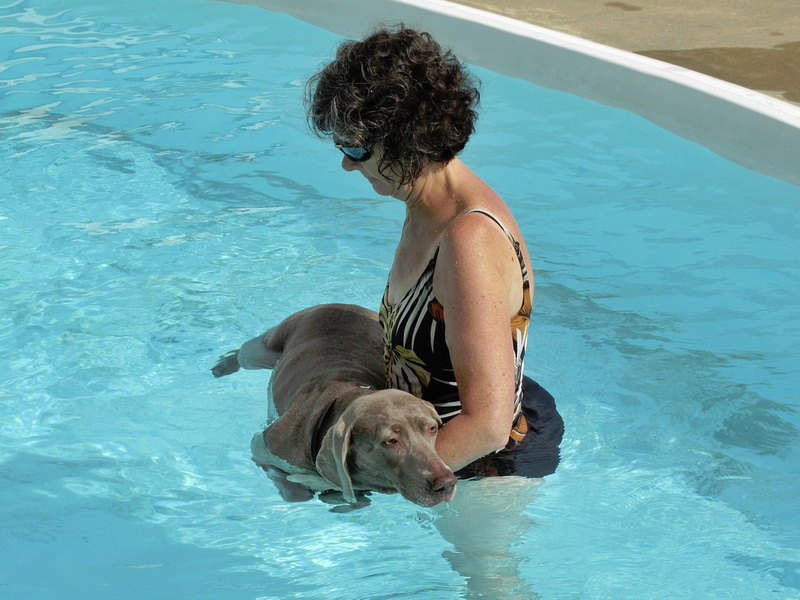 Maddie at age 9 learning to swim with Mom
Maddie at age 9 learning to swim with Mom
 Maddie teaching Junior how to behave
Maddie teaching Junior how to behave
 Maddie with Dad's shoes and "Boner Ears"
Maddie with Dad's shoes and "Boner Ears"
 Junior (kissing Dad) and Maddie one week before crossing the Rainbow Bridge
Junior (kissing Dad) and Maddie one week before crossing the Rainbow Bridge
Although inferred, Lincoln's famous address did not directly indicate that only the Union dead consecrated the Gettysburg battleground. I therefore am comfortable to take the liberty to discuss momentarily the memory of the "Confederate Dead" from Semmes' Brigade, as photographed by Gardner. Semmes' Georgia Brigade had counterattacked Union troops from Caldwell's Division in the famous Wheatfield fighting late in the day of July 2nd. Brooke's Brigade of that Division inflicted some heavy casualties to the Georgians just west of the woods on the Rose Farm. Some visitors comment on the Gettysburg National Military Park (GNMP) setting as not inducing a solemn feeling while walking the grounds, due to the pristine, nature park-like atmosphere. I have found that the only way to circumvent this recreational reaction is to utilize Frassanito's 1975 seminal book, "Gettysburg: A Journey In Time", as a conduit to transcend time and space. His "then and now" shots facilitate the visitor's ability to evoke an emotional connection to the carnage that actually took place in the spot in which they stand and ponder that moment over 150 years ago. Using an artistic rendering of a recent photograph of the split rock that I captured near Rose Woods, I have super imposed the 1863 corpse photo taken by Alexander Gardner at the same location a few days after the battle [see image below]. This image is located at a spot seldom visited by tourists. Knowing its significance will elicit eerie inner feelings and awaken your spirituality when you are standing at that isolated spot adjacent to the Rose Woods. You too can locate this secluded area by watching this four minute video, "Exploring the Rose Woods in Gettysburg", or reviewing the two aerial maps that I have constructed below.
You will note that one of the corpses in the Gardner image has his knee bent in rigor mortis. The only Gettysburg battlefield monument that depicts a corpse is the one dedicated to the 116th Pennsylvania, located on the Stony Hill near the Wheatfield. The 116th was part of the Irish Brigade, discussed in length in my blog, "The Devotion At Gettysburg". During a bloody struggle, the Irish Brigade swept three South Carolina regiments off the Stony Hill during a critical phase of the Wheatfield battle. Shortly thereafter, in the same general vicinity, a series of ferocious attacks and counterattacks would take place between the troops of Semmes' and Brooke's Brigades. The corpse in the 116th monument has both his knees bent, just like the one Rebel corpse in the Rose Woods image taken by Alexander Gardner. The design of the monument for the 116th Pennsylvania Infantry Regiment came about from the following incident told by Major St. Clair Mulholland ("Story of the 116th Regiment Pennsylvania Volunteers", pages 126-127) after the Irish had driven the Confederates from the top of the Stony Hill: “... and so, on this occasion the fire of the Regiment was terrible in its effect, while the small rifle balls of the South Carolina men went whistling over the heads of the men of the One Hundred and Sixteenth. In front, and a little to the right, stood the Rose farm house and barn. Over the little valley in the immediate front one could see the enemy massed and preparing for another attack. The dead of the One Hundred and Tenth Pennsylvania Volunteers lay directly in front, on the ground which that command had vacated but a half hour before, and one young boy lay outstretched on a large rock with his musket still grasped in his hand, his pale, calm face upturned to the sunny sky, the warm blood still flowing from a hole in his forehead and running in a red stream over the gray stone. The young hero had just given his life for his country. A sweet, childish face it was, lips parted in a smile - those still lips on which the mother’s kisses had so lately fallen, warm and tender. The writer never looked on a soldier slain without feeling that he gazed upon the relics of a saint; but the little boy lying there with his blood coloring the soil of his own State, and his young heart stilled forever, seemed more like an angel form than any of the others.” The scene witnessed by Mulholland was the inspiration for the prone figure on the monument to the 116th Pennsylvania. It is the only monument on the battlefield that with each and every drive-by pass, I am filled with great solemnity.
It is significant to note that Frassanito's "then and now" photos from Journey also exposed how overgrown the landscape was at the time of his revelations when compared to immediate post battlefield images. The sight lines of the mid-20th century hid many important terrain features critical during the battle and compounded the difficulty of Frassanito's investigative quest. Gardner's photos showed the split rock residing just outside the Rose Woods. When Frassanito made his discovery in 1967, the rock was now part of the extended woods and remained that way well into the early part of the 21st century. These paired century photo comparisons arranged by Frassanito inspired the GNMP to expedite their plans to restore and preserve the park back to forest and vegetation conditions as they existed at the time of the battle. After much work spanning many years, the military park restoration effort was basically completed a few years back and one can now view the Rose Woods as it was on a hot July day in 1863 when the bodies of half a dozen Georgian soldiers laid in rest prior to burial.
Another wonderful read is Frassanito's followup book to Journey: "Early Photography at Gettysburg".
Refer to this 6-part Gettysburg Daily video on "A Journey in Time, The Story Behind the Book". Part 4 is about the important discovery of the split rock.
This concludes my 5-part series on the "Gettysburg Address Preserved" of which I started on November 19, 2015. I intend to publish three more blog posts covering the second day of the three-day Battle of Gettysburg with photos of the associated battlefield monuments (see Notes 1-3 below). Please stay tuned in to my blog posts by subscribing to the RSS feed (see button below). If you enjoyed my series on "Gettysburg Address Preserved", a like or share on Facebook is always appreciated. Thank you.
Note1: Be sure to watch out for my upcoming blog post on The Sound and the Fury at Gettysburg (The Cannoneers at Trostle Farm).
Note2: Be sure to watch out for my upcoming blog post on The Wounded at Gettysburg (The Extraordinary Charles A. Fuller and the 61st NY at the Wheatfield).
Note3: Be sure to watch out for my upcoming blog post on The Sacrifice at Gettysburg (The 4th Michigan Seizes the Colors in the Wheatfield).
For some absorbing anecdotes concerning the Army of the Potomac, see Dr. Timothy Orr's blog: Tales from the Army of the Potomac.
My full Gettysburg gallery of photographs can be found at D.W. Orr Gettysburg Gallery.
D W Orr
Environmentalist, Historic Preservationist, Weimaraner Companion, Blogger, and Photographer
Harford County, Maryland
June 18, 2016
The 116th Pennsylvania Monument - Is that a shadow of a cross projecting across the base of the monument?
The 116th Pennsylvania Monument - "and one young boy lay outstretched on a large rock"
The 116th Pennsylvania Monument - "with his musket still grasped in his hand, his pale, calm face upturned to the sunny sky"
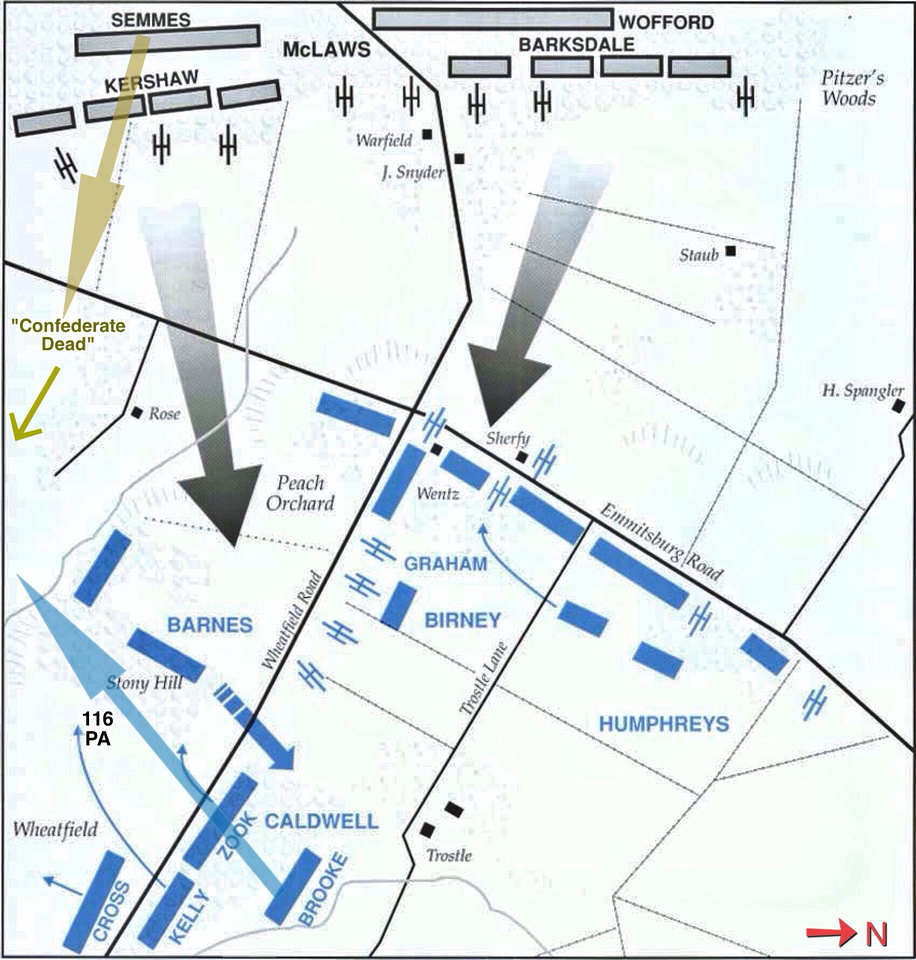 116th PA in the Wheatfield and Advance to the Stony Hill; Brooke's Brigade Clears the Wheatfield; Semmes Counterattack; Location of Gardner's "Confederate Dead" of Semmes Georgia Brigade (Map courtesy of the NPS)
116th PA in the Wheatfield and Advance to the Stony Hill; Brooke's Brigade Clears the Wheatfield; Semmes Counterattack; Location of Gardner's "Confederate Dead" of Semmes Georgia Brigade (Map courtesy of the NPS)
"Confederate Dead" from Semmes Brigade and Split Rock at Rose Farm (Photo by Alexander Gardner and courtesy of the LOC). Note the bent knee of the last corpse in the back - similar to the 116th PA monument.
"The Ghosts of Semmes' Brigade" (Artistic rendering by D. W. Orr). Using a recent photograph I captured near Rose Woods, I have super imposed a contemporary corpse photo taken at the same location a few days after the battle by Alexander Gardner. This image is located at a spot seldom visited by tourists. Knowing its significance will elicit eerie inner feelings and awaken your spirituality when you are standing there.
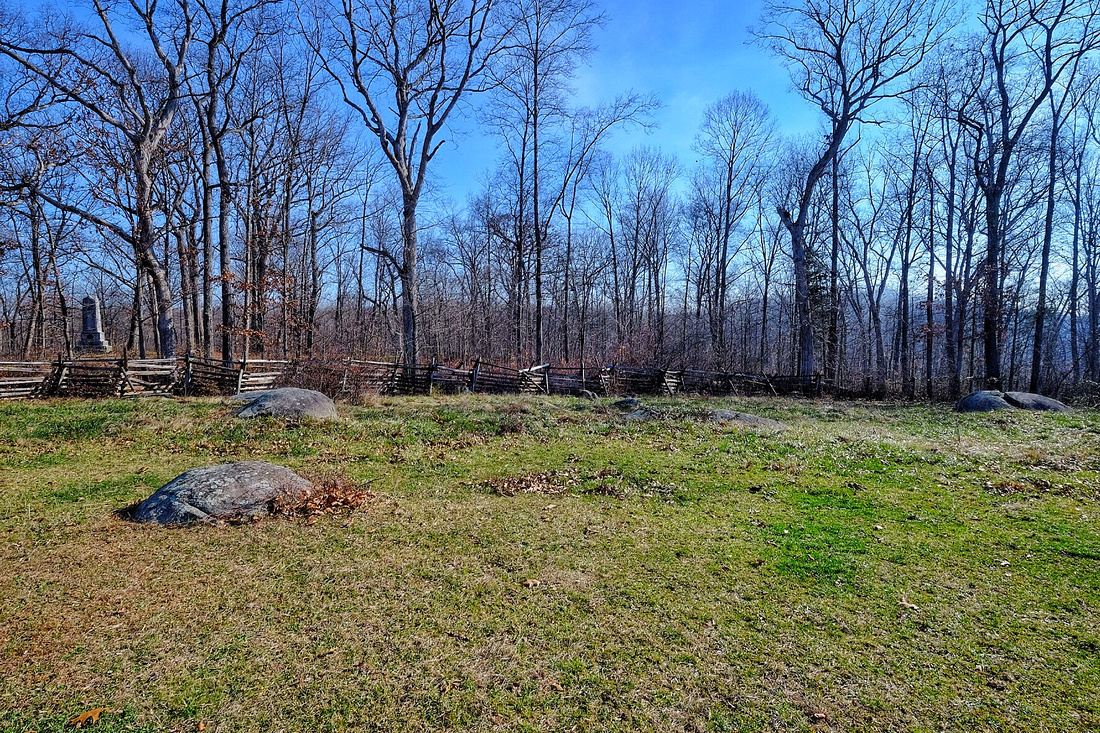 Wider View Showing 64th NY Infantry Monument in Background; Big Roundtop can be seen in right background behind trees
Wider View Showing 64th NY Infantry Monument in Background; Big Roundtop can be seen in right background behind trees
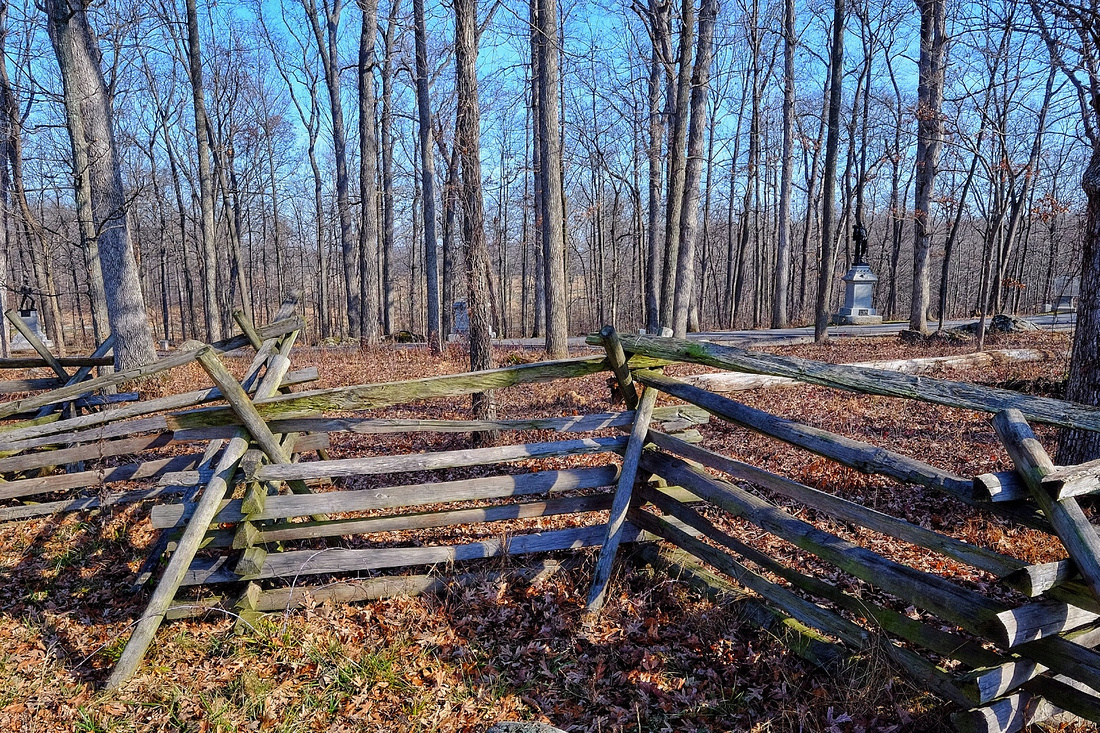 View from Rose Farm Depicting Brooke's Battle Line on Stony Hill: L-R, 145 PA, 27 Conn (behind tree), 53 PA, 4th Brigade Tablet
View from Rose Farm Depicting Brooke's Battle Line on Stony Hill: L-R, 145 PA, 27 Conn (behind tree), 53 PA, 4th Brigade Tablet
 Confederate Dead Area - Rose Farm Looking South
Confederate Dead Area - Rose Farm Looking South
 Confederate Dead Area - Rose Farm Looking North
Confederate Dead Area - Rose Farm Looking North
Location of "Confederate Dead"
Aerial Landscape of Day Two
See my Woodland Image Gallery here.
D W Orr
Environmentalist, Historic Preservationist, Weimaraner Companion, Blogger, and Photographer
Harford County, Maryland
April 27, 2016
]]>
"Back over the plain they came, slowly, not faster than a walk, loading as they came and every now and then turning and pouring a deadly volley into the foe. The Rebs came in two splendid lines, firing as they advanced ... The plain was strewed with dead and wounded. The Rebs had advanced their batteries and were hurling death and destruction into the ranks of our retreating men ... The stragglers came rushing through the lines, whom we in vain tried to stop and at last gave it up entirely, believing they were more injury than help to us. Now and then shells fell uncomfortably near us."
At this critical and pivotal moment of the day two Battle of Gettysburg, Hancock rode up to the Minnesotans, the only available nearby troops2, and asked Colonel William Colvill, "My God, are these all the men we have here?". After Colvill identified his command, Hancock then pointed to the rapidly approaching Rebels and ordered Colvill to "Advance Colonel, and take those colors!". Hancock later recalled: "I saw that in some way five minutes must be gained or we were lost." Lieutenant William Lochran, later wrote that,
"Every man realized in an instant what that order meant -- death or wounds to us all; the sacrifice of the regiment to gain a few minutes' time and save the position, and probably the battlefield."
Colvill then commanded, "Attention, First Minnesota, right shoulder shift; Arms. Forward, double quick march!" The eight companies of the 1st Minnesota regiment immediately marched down the Cemetery Hill slope and then gallantly charged over about 350 yards through a wheat field stubble to Plum Run, where outnumbered by about 5 to 1, they encountered the heavy fire of Wilcox's 1,500 Alabamans. Sergeant Alfred Carpenter wrote later that:
"Bullets whistled past us, shells screeched over us; canister and grape fell about us........Comrade after comrade dropped from the ranks; but on the line went. No one took a second look at his fallen companion. We had no time to weep."
Another regimental soldier recalled:
"It seemed as if every step was over some fallen comrade. Yet no man wavers, every gap is closed up ... bringing down their bayonets, the boys press forward in unbroken line. Men stumbled and fell. Some stayed down but others got up and continued."
As Wilcox's men crossed the dry creek bed and started up the victory slope to Cemetery Hill, Corvill ordered a volley fire 30 paces from the faces of the Rebels. Corvill then yelled "Charge!" and his men leveled their bayonets at the first line of Wilcox which recoiled back into the rear line with much confusion and disorder.3 The sudden attack by the First shocked the two lines of Alabamans and caused them to fall back across Plum Run and back some distance up the opposite slope. One officer from the First said that "men were never made who will stand against leveled bayonets coming with such momentum and evident desperation." Colvill, expecting a counterattack, ordered his men to take cover along the shallow banks of Plum Run. Continuous and heavy gunfire was exchanged with the Rebs at a respectful distance for many minutes from both the front line and flanks of the First. But the now cautious Wilcox had not yet ordered a counterattack. The First could not hold its position much longer, but at this point, the Minnesotans had bought the AOP not only the five minutes Hancock needed, but an additional ten minutes beyond that. With only moments to spare, the First was reinforced on the left flank with troops from the 111th NY regiment (Willard's Brigade) that were ordered in by General Hancock. Wilcox was forced to break off any planned attack and return to the Emmitsburg Road. The day was saved, but just barely.
This charge of "forlorn hope" bought the time needed for Hancock to send in the brigade of Colonel Willard4 to subdue the advance of Wilcox's Brigade and Barksdale's Charge. Of the 262 Minnesotans who made this brave charge, 215 soldiers became casualties in fifteen minutes, including all of the regiment's field officers and the regimental commander, Colonel Colvill, when a bullet tore through his right foot. The unit's regimental colors fell five times and each time were raised again. Forty-seven survivors were able to rally back to General Hancock under the senior surviving officer, Captain Nathan Messick. This 82% casualty rate stands to this day as the largest loss by any surviving military unit in U.S. history during a single day's engagement. This action by the 1st Minnesota is recognized as significantly contributing to the preservation of the Union defensive position on the heights of Cemetery Ridge, and possibly saving the AOP from a second day defeat.
After the war, both General Hancock and President Calvin Coolidge praised the heroics of the First. Hancock went as far to say that their heroism was the highest in the annals of war while Coolidge ascribed "Colonel Colvill and those eight companies of the First Minnesota are entitled to rank as the saviors of their country."
The regimental monument was erected in 1893 nearby to the Pennsylvania Memorial. The right side panel of the base unit reads: "...... In self-sacrificing desperate valor this charge has no parallel in any war. The next day the regiment participated in repelling Pickett’s charge losing 17 more men killed and wounded".
Note1: For more, see my previous blog post on The Struggle at Gettysburg (The 114th Pennsylvania and Barksdale's Charge through Mr. Sherfy's Peach Orchard).
Note2: The 1st Minnesota at this moment occupied the former position of Caldwell's Division, now fighting in the Wheatfield. See my prior blog post on The Devotion at Gettysburg (A Nation of Immigrants - The Irish Brigade at Gettysburg).
Note3: See below the print - The First Minnesota by Don Troiani, depicting the 1st Minnesota's bayonet charge at Plum Run
Note4: The marker to where Willard fell can be seen in the photo below. See The Struggle at Gettysburg.
For some absorbing anecdotes concerning the Army of the Potomac, see Dr. Timothy Orr's blog: Tales from the Army of the Potomac.
My full Gettysburg gallery of photographs can be found at D.W. Orr Gettysburg Gallery.
D W Orr
Environmentalist, Historic Preservationist, Weimaraner Companion, Blogger, and Photographer
Harford County, Maryland
April 17, 2016
1st Minnesota Monument in Early Evening - Background: George Weikert Farm, Little Roundtop, Big Roundtop.
"The Stormy Charge" (Artist Rendering by D. W. Orr)
1st Minnesota Monument
1st Minnesota Monument at Mid Day - Background: George Weikert Farm, Little Roundtop
 Plum Run - middle foreground. To the right is where the 1st Minn charged. Left middle is marker to where Willard fell (at the base of the second tree from the left)
Plum Run - middle foreground. To the right is where the 1st Minn charged. Left middle is marker to where Willard fell (at the base of the second tree from the left)
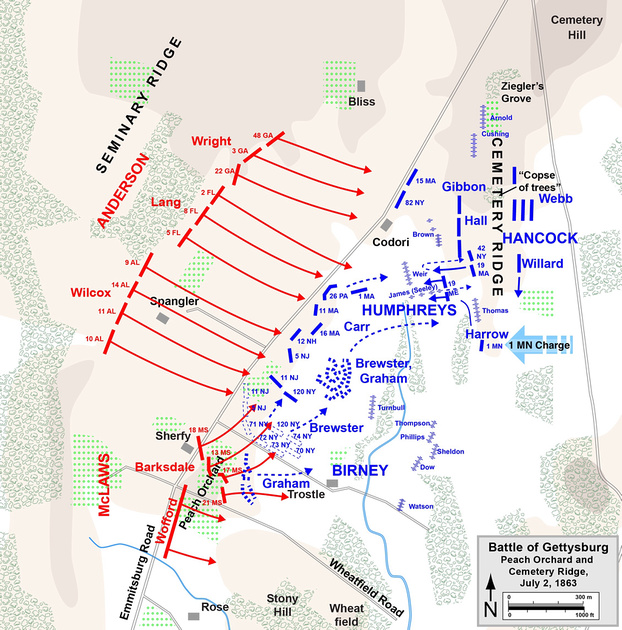 As regiments from the Union Third Corps fall back from the Emmitsburg Road, the 1st Minnesota is ordered by General Hancock to stem the tide of the Rebel advance so as to bide time for the deployment of Willard's Brigade and other Union troops (Map courtesy of Wikipedia)
As regiments from the Union Third Corps fall back from the Emmitsburg Road, the 1st Minnesota is ordered by General Hancock to stem the tide of the Rebel advance so as to bide time for the deployment of Willard's Brigade and other Union troops (Map courtesy of Wikipedia)
General Hancock Wounded Monument
The small white building in the distant background is the Phillip Snyder farmhouse. At 3:00 pm on July 2, 1863, this farm area would serve as the launching point for General Longstreet's 1st Corps attack on the Union left. Later that day these troops would be fighting the 1st Minnesota at Plum Run near Cemetery Ridge.
Center: General Hancock Wounded Monument
Right Center: 14th Vermont Monument
Middle Background: Cordori Farm
Left Background: Virginia Monument with General Robert E. Lee Equestrian Statue - Approximate center point for Day 3 "Pickett's Charge"
Left Foreground: 2nd USSS Monument - Unit in which I spent 10 years doing Civil War Reenactment & Preservation Work
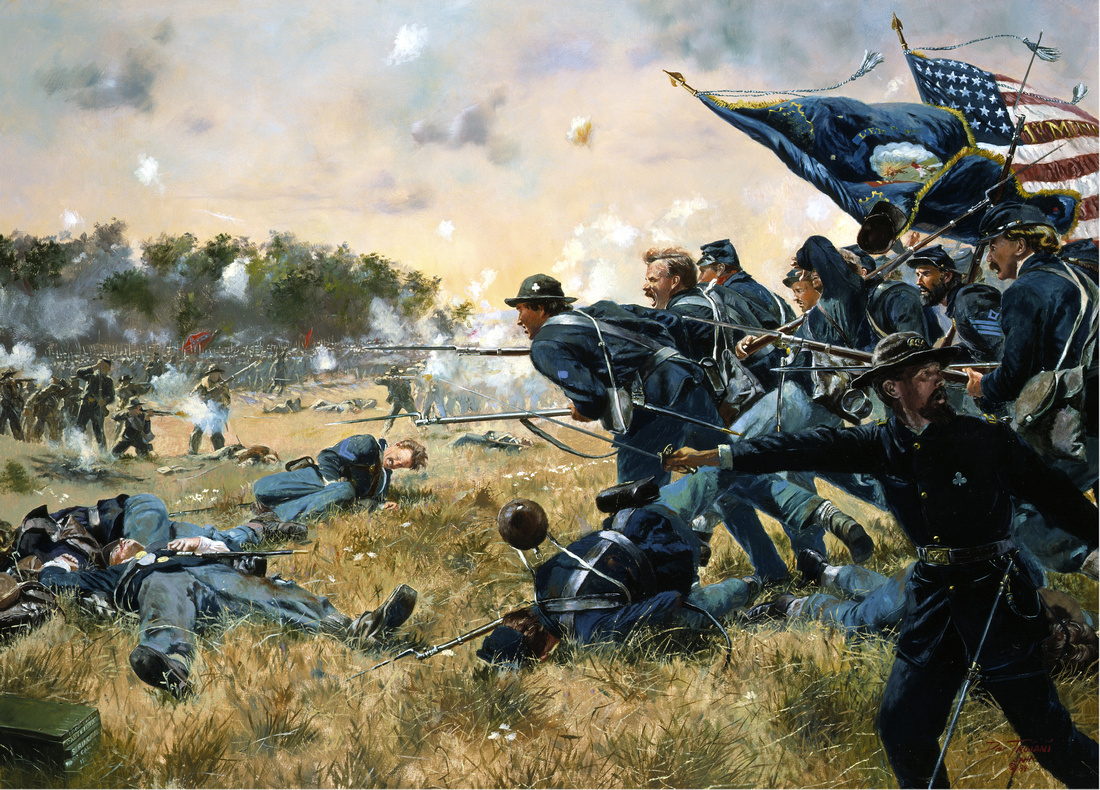 The First Minnesota by Don Troiani depicting the famous charge at the Battle of Gettysburg
The First Minnesota by Don Troiani depicting the famous charge at the Battle of Gettysburg
The 114th PA had one of the best regimental bands in the AOP; for this reason and due to their reduced size from war casualties both before and during Gettysburg, and because AOP Commander George Meade was a Philadelphian, he made the regiment his provost guard of field headquarters for the last two years of the war. At this time, I now introduce you to Thomas M. Hoyle, a Sergeant in the 114th PA and the great-great-grandfather of my second cousin. Hoyle was listed as a "Musician" in the company band for the First Delaware prior to joining the Zouaves. He most probably was a talented musician in the renowned Zouave band. I have included a daguerreotype photo of him standing at attention and outfitted in his colorful Zouave uniform consisting of white gaiters, baggy red pants, blue sash, short blue jacket with red trim, and topped off with a white turban and red fez. Quite a handsome fellow. He was present for duty at the now famous "Peach Orchard" during the Battle of Gettysburg. He saw and felt the full fury of one of the most fierce Confederate charges executed during the entire Civil War and lived to tell about it. It has been passed down through the ages as "Barksdale's Charge".
As General Barksdale readied his men and peered through the trees at Pitzer's Woods, he could see that the Peach Orchard was occupied by artillery and the Pennsylvanian infantry from Graham's brigade. This was the weakest point of Major General Sickles' unauthorized salient line of battle, now vulnerable to a flank attack. At 5:30 pm, Barksdale received orders to begin the attack. Barksdale shouted, "Attention, Mississippians! Battalions, Forward! Dress to the colors and Forward to the foe! Onward, Brave Mississippians, for Glory!", and in a fashion bordering a spectacle, the brigade was launched with the Rebel Yell echoing from within the woods. One Union colonel who witnessed it described it as "the grandest charge ever made by mortal man". At the head of the Mississippi troops rode General Barksdale, his hat off with his long gray-white hair streaming from behind.2 The irresistible tide of the South's finest fighters rolled forward, past the Sherfy property, and crushed the Peach Orchard salient as Yankee muskets and cannon tore away at the steamrolling butternut line. One Union soldier noted, "Nothing we could do seemed to confuse or halt Barksdale's veterans ... nothing daunted Barksdale and his men ... [they] just came on, and on, and on." The 114th PA, positioned between the Sherfy barn and farmhouse, felt the full impact of the charge, and after fierce fighting, fell back north up the Emmitsburg Road and then east to a field just north of the Trostle Farm Lane and headed for Cemetery Ridge. Even during this orderly retreat there was no respite. While crossing the open field, an exploding shell landed nearby two Zouaves assisting a wounded comrade. All three were killed instantly. Other red and blue uniformed Zouaves fled to the barn and lost their lives during close-range fighting inside and later during the conflagration of that structure. As Barksdale's charge surged, three of the four Mississippian regiments wheeled left to the northeast and pushed a Union division further back across Plum Run. "Will nothing stop them?" one Union soldier asked himself. Another confessed that, "For the moment, I thought the day was lost." The 21st Mississippi regiment, on Barksdale's right flank, angled off from the rest of the brigade and rampaged several Union batteries, including Bigelow's 9th Massachusetts Battery at the Trostle farm.3
"Advance, advance! Brave Mississippians, one more charge and the day is ours", Barksdale barked to his three regiments advancing toward Plum Run. But the attack slowed as the shredded, disordered lines began to fatigue. A southern soldier recalled that his comrades in arms were "now covered with dust and blackened with the smoke of battle, with ranks depleted by shot and shell, and faint from exhaustion." After advancing almost a mile to Plum Run, Wilcox's Brigade on Barksdale's left flank, were counterattacked by the "forlorn hope" of the 1st Minnesota.4 As Major General Hancock viewed his ordered delaying action by the Minnesotans from atop Cemetery Ridge, he ordered Colonel Willard's Brigade forward to stem the seemingly inexorable tide of the Mississippi Brigade commanded by the fiery William Barksdale. In 1862, Willard's New Yorkers had been captured at Harpers Ferry and later paroled. They were now eager to atone for their humiliation and restore their honor. And this they did with heavy musketry fire and the point of the bayonet as they drove the Rebels back away from Plum Run. Colonel Willard was killed during this ferocious fighting.5 As a conspicuous target mounted on his horse, Barksdale suffered a bullet hit above the left knee followed by a cannonball shot that nearly took off his left foot. Then another musket ball struck the left side of his chest which knocked him off his horse. Left for dead by his men, he was later carried on a litter to a Union hospital, where he died before dawn the next morning. Fiery to the bitter end, as he lay dying in a field hospital, he boasted to the Union surgeons caring for him, "Hancock had better watch his back, Old Peter (Longstreet) has a surprise for you in the morning!". As for the 114th PA, many Zouaves had been captured during the melee at the Sherfy farm and the adjacent Peach Orchard. Out of 312 engaged Zouave combatants, nearly one hundred men had been killed or wounded in action with sixty missing in action. In the battle's aftermath, members of the 20th Maine found charred bodies and skeletons in the ruins of the burned-out Sherfy barn. Also found on the grounds surrounding the farm were many corpses, both blue and gray. But scattered in between, were the bright red hats and trousers of the fallen 114th. On July 3rd, following the battle at the Peach Orchard, the 114th was deployed along side of the "Philadelphia Brigade", under command of Brigadier General Alexander Webb, at the "Angle" to help thwart the advance of another famous charge at Gettysburg - Pickett's Charge.
The 114th Pennsylvania monument, located between the Sherfy barn and farmhouse on Emmitsburg Road, depicts a bronze statue of a Zouave loading his rifle atop a seven foot tall granite base. General Sickles' Third Army Corps diamond badge is at the foot of the statue. The base of the monument was dedicated on July 2nd, 1886 by the State of Pennsylvania and the statue was dedicated on November 11, 1888, after its addition to the base. The north side of the base reads: Erected by the surviving members of 114 Regt. Penna. Vols. to mark the position held by that organization on the second day of the memorable battle fought on this field .... and in memory of that command, who here laid down their lives in defense of their country’s flag. An epic Struggle indeed on July 2, 1863, at Mr. Sherfy's Peach Orchard, by some patriots from Philadelphia and some gallant men from Mississippi.
Note1: On December 13, 1862 at the Battle of Fredericksburg, Colonel Collis rallied his 114th PA troops by grabbing the colors at a critical moment as the Union artillery on Prospect Hill was about to be overtaken. This action saved the guns and also won Collis the Medal of Honor. Years later Collis commissioned the German painter Carl Röchling to depict this scene in a painting.
Note2: See below the Don Trioani print, Barksdale's Charge
Note3: Be sure to watch out for my upcoming blog post on The Sound and the Fury at Gettysburg (The Cannoneers at Trostle Farm).
Note4: Be sure to watch out for my next and fourth of five blog posts on The Bravery at Gettysburg (The Gallant Charge of the 1st Minnesota at Gettysburg).
Note5: The marker to where Willard fell can be seen in the photo below.
For some absorbing anecdotes concerning the Army of the Potomac, see Dr. Timothy Orr's blog: Tales from the Army of the Potomac.
My full Gettysburg gallery of photographs can be found at D.W. Orr Gettysburg Gallery.
D W Orr
Environmentalist, Historic Preservationist, Weimaraner Companion, Blogger, and Photographer
Harford County, Maryland
February 13, 2016
114th Pennsylvania Infantry Monument - Background: Sherfy Farm House
114th Pennsylvania Infantry Monument
114th Pennsylvania Infantry Monument
The Zouave Uniform worn by Thomas M. Hoyle - Corporal, Company E, 114 PA Infantry - Present and on duty at Gettysburg, July 1-3, 1863
 Pennsylvania Memorial - "Thos M Hoyle" name engraved as Corporal under Co. E on plaque on exterior north facing wall of memorial
Pennsylvania Memorial - "Thos M Hoyle" name engraved as Corporal under Co. E on plaque on exterior north facing wall of memorial
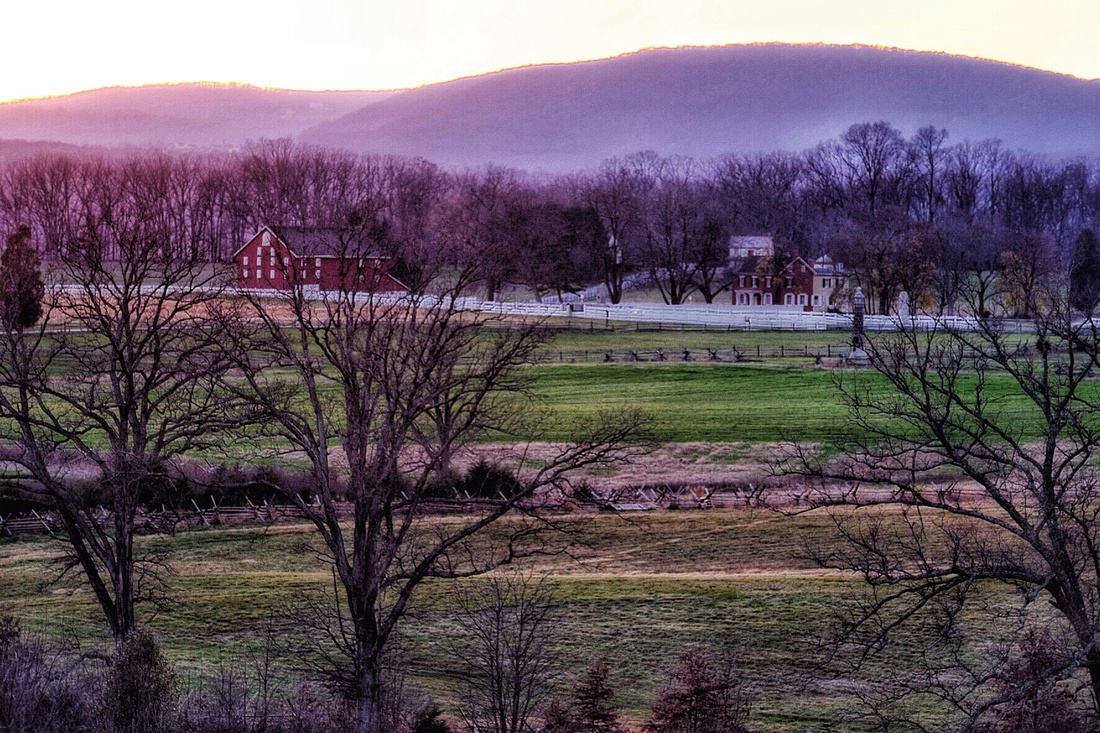 Sherfy Farm: Barn and House - 114th Pennsylvania Monument is located in left center between the barn and house - Barksdale's Charge was over these grounds
Sherfy Farm: Barn and House - 114th Pennsylvania Monument is located in left center between the barn and house - Barksdale's Charge was over these grounds
Horizon showing Barksdale's Charge: L-R, Sherfy Barn, Fire Zouaves, 15 NY Battery (foreground), Excelsior Brigade, Penn Memorial, Clark's Battery, Trostle Farm
Sherfy Barn
 Plum Run - middle foreground. To the right is where the 1st Minn charged. Left middle is marker to where Willard fell (at the base of the second tree from the left)
Plum Run - middle foreground. To the right is where the 1st Minn charged. Left middle is marker to where Willard fell (at the base of the second tree from the left)
Pennsylvania Memorial honoring those state natives who fought at the Battle of Gettysburg
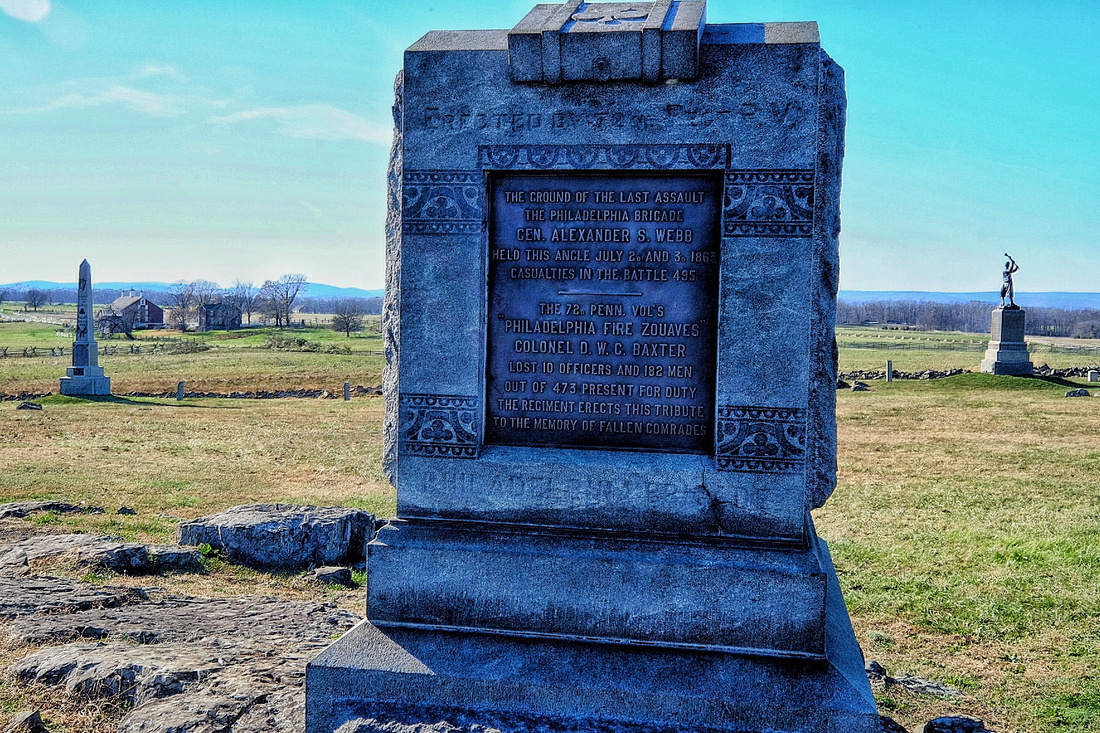 The Philadelphia Brigade's Position on Day 3 during Pickett's Charge
The Philadelphia Brigade's Position on Day 3 during Pickett's Charge
72nd Pennsylvania Monument - Philadelphia Brigade - Located near "The Angle" on Day 3 during Pickett's Charge
71st Pennsylvania Monument - Philadelphia Brigade - Located at "The Angle" on Day 3 during Pickett's Charge
Barksdale's Brigade Advances - The 114 PA at Sherfy Farm (Map courtesy of NPS)
Painting of Barksdale's Charge by Don Troiani - Left Background: Sherfy's Barn; Right Background: Sherfy's Farmhouse
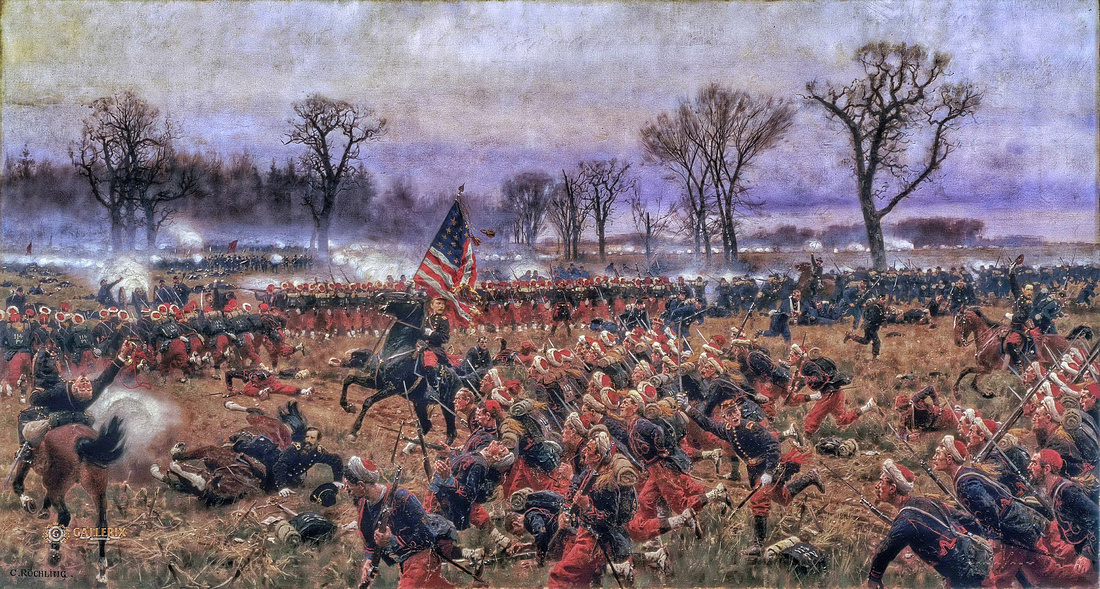 114th PA at the Battle of Fredericksburg. Shows Colonel Collis rallying the troops with colors in hand. Painting by Carl Rochling.
114th PA at the Battle of Fredericksburg. Shows Colonel Collis rallying the troops with colors in hand. Painting by Carl Rochling.
Cross crammed much 19th century adventure in a short time span. He was well traveled for his young age. Early on he was a newspaper reporter and editor in Cincinnati. Then he moved out West and worked in the mining business, became a trapper, buffalo hunter, explorer, and part-time Indian scout and fighter. He fought two duels, one involving rifles and the other with swords, with people who had differences with some of his editorial opinions. All of this accomplished before the age of 27. He was 31 years old while leading an Army of the Potomac brigade at Gettysburg.
At 6'3" tall, he projected a commanding presence. He was energetic, tenacious, outspoken, demanding, abrupt, impulsive, non-conforming, possessed a quick temper and showed favoritism. What's not to like about this guy? These traits resulted in many of his soldiers abhorring him and probably affected his absence of a military promotion. As evidence, prior to Chancellorsville, he was appointed to command the First Brigade of Winfield Scott Hancock's old division , but he was not honored with a brigadier general's star. And the soldiers of the 148th PA considered him a tyrant when he sacked their regiment's Colonel a day prior to the battle.
Cross was at one time a member of the anti-immigration American Party (formerly the Know-Nothing Party). He believed in the superiority of the white Protestants over Irish Catholics, Mexicans, and American Indians. He loathed abolitionists and blacks alike. At some point however, he must have gotten past his prejudices when ordered to advance his brigade behind the Irish Brigade (see my blog on The Devotion at Gettysburg) up the hill to the formidably held stone wall at Marye's Heights, during the Battle of Fredericksburg. One Second Corps biographer stated "that the bodies found nearest at the stone wall were those of the Sixty-ninth New York, Fifth New Hampshire, and Fifty-third Pennsylvania."
Cross was known by his men as a grim warrior who was brave and cool under fire. He was wounded thirteen times during the regiment's heavy campaigning from 1861-1863. His first wound at the Battle of Fair Oaks kept him out of action for two months in 1862. After suffering wound numbers 6-11 at the Battle of Fredericksburg, Cross was laid low for three months prior to returning to the fight at Chancellorsville. "If all the colonels in the army had been like him we should never have lost a battle," said one of his men. By the end of the war, the New Hampshire regiment had more battle deaths than any of the other 2,000 some Union Army regiments.
In the feverish climax at the Bloody Lane fighting at Antietam, Cross, recalling his Indian fighting days, exhorted his men to "Put on the war paint!". With his red bandana customarily affixed to his head (evidently for easy identification of the commander during the heat of battle), the wounded Cross then smeared his bloody face with gunpowder from a nearby torn cartridge. "Give 'em the war whoop boys!" Cross exclaimed. His men obediently smeared black powder on their own sweaty faces, gave out an Apache war cry and defiantly stood their ground in the face of an attempted Rebel flanking maneuver. From that moment onward, they became known as the Fighting Fifth. Oh my, you just can't make this stuff up. With all of his character faults, this man was a born warrior and leader of men. Prior to his mortal wounding at the Bloody Lane at Antietam, Major General Israel Richardson is quoted as saying, "If I was going to take Hell, I should want the 5th for skirmishers".
On June 28th, preceding the Battle of Gettysburg, Cross told his aide, Major Charles A Hale, "It will be my last battle". Per Hale, later in the day of June 28 - "At last he said to me; "Mr. Hale, I wish you to attend to my books and papers; that private box of mine in the headquarters wagon; you helped me re-pack it the other day. After the campaign is over, get it at once, dry the contents if damp, and then turn it over to my brother Richard." At 3pm on July 2nd, Cross's premonition of death carried over to his selection of the color of his normally worn battle bandana. Per Hale: "The Colonel had for some time been walking back and forth in his quick nervous way, his hands clasped behind his back, a habit that was usual with him. Presently, stopping short where I was standing, he drew out from an inside pocket a large new black silk handkerchief; arranging it in folds on his lifted knee, then handing me his hat to hold, he quickly swathed his head with it in turban fashion, tying the two ends behind. We had seen him do this on other fields with a red bandanna and it then amused me somewhat, but under the peculiar circumstances of the few days previous that black handkerchief was appalling. Again he took off his hat, saying "please tie it tighter Mr. Hale"; my hands were trembling as I picked at the knot; "draw it tighter still" he said impatiently, and finally I adjusted it to suit him. By this time the firing was working up towards the right from the Peach Orchard1 while south by the Round tops there was a struggle going on that seemed to be working to our rear." Shortly thereafter, per Hale: "About this time General Hancock came riding up from the left accompanied by his staff, and for a moment he drew up where Colonel Cross was standing at his horse's head. "Colonel Cross, this day will bring you a star," he said in his measured suave manner but the Colonel gravely shook his head as he replied, "No General, this is my last battle;" he spoke calmly, with no apparent emotion, and as the General rode on, turned his attention out in the direction of the Peach Orchard, where the battle was now raging at a white heat." The four regimental units of the First Brigade led by Cross departed the Trostle Woods and advanced though the Wheatfield and the eastern woods bordering the field. After dismounting from his horse near the right flank of the 148th PA, Cross stood in the wheatfield, looked ahead into the tree canopy of the Rose Woods and Stony Hill, and gave his final instructions to his officers "to be ready to charge when the order is given". He then made his way to his left into the trees where the remainder of the Fifth NH was positioned so that he could lead the First Brigade attack. As he neared his old regiment, he was shot through the lower abdomen. A sniper located in a boulder cleft some forty yards southwest from Cross’s position brought him down. Lt. Colonel Hapgood, who witnessed the shooting, ordered Sergeant Charles Phelps to kill the Confederate sniper. Phelps provides retribution by taking down the sniper with a crack first shot as ordered by the regimental commander. Phelps was later felled with a mortal wound to the back. As Cross lay dying in the woods, Frank Butler, a captain in the 5th, stated in a July 5th letter that "Cross begged for chloroform". Per Butler, “Blow my brains out,” Cross screamed. “Shoot me. How long must I live in such pain?”. Caldwell is aware that the First Brigade is under heavy fire and relieves most of the brigade (the Fifth holds their position until Brooke's Brigade retreats) by committing the reserve troops under Brooke, which eventually sweeps across the Wheatfield maelstrom and momentarily drives the Rebels off the Stony Hill. The First Brigade retires to Cemetery Hill under their succeeding commander, Colonel McKeen.
Cross was taken to a field hospital, very likely the William Patterson Farm (about a mile northeast of the Wheatfield) where he died the next day about six hours after being struck in the gut by a minie ball. His last words were, "I think the boys will miss me." From a local New Hampshire Newspaper Obituary: "As an officer, he was a strict and unswerving disciplinarian, punishing with severity any shirking or neglect of duty....He never asked his men to go where he would not go, and they did well if they followed closely where he led......He was a kind friend, a good son and brother, a brave and chivalric soldier. Devoting his life to his country, he yielded it up in its prime, and passed away while the nation is yet convoluted with the throes of rebellion." In 1866, Winfield Scott Hancock said, "What a magnificent fighter Cross was." Known by his Army colleagues as Hancock "the Superb", that is quite a complement to receive.
The monument to the 5th New Hampshire regiment was dedicated on July 2nd, 1886, 23 years to the day after the noted struggle in the Wheatfield. It is one of the most unassuming structures at the Gettysburg National Military Park (GNMP) but yet probably the most unique. Three field boulders from Gettysburg form the base of the unit with an octagonal shaped white Concord, New Hampshire granite sandwiched between another field boulder on top. With the Colonel's name being engraved on one of the plaques, 30 additional "honored dead" (Lincoln) names are listed as having given their "last full measure of devotion" (Lincoln). This monument is one of the few at the GNMP which identify the names of those soldiers who were killed or mortally wounded during battle. The six and a half-foot tall monument symbolizes the “hard, enduring, patient, and unmovable” men of the Granite State. Originally the large monument to the 5th New Hampshire did not have any bronze plaques around the side, which were added in 1901. At the monument's dedication in 1886, we can see below a view of it with its light-colored Concord granite octagon. It is worthy to note that although Cross may have ruffled the feathers of many a soldier who had to answer to him, these war-tested veterans respected him enough to erect a monument at the spot where he fell and to dedicate his memory solely to one of the eight plaques surrounding the structure. His portrait hangs prominently on the first floor of the Statehouse of New Hampshire as one of the finest heroes in the history of that state.
Note1: Be sure to watch out for my next blog post on The Struggle at Gettysburg (The 114th Pennsylvania and Barksdale's Charge through Mr. Sherfy's Peach Orchard).
Note2: Recommended reading, My Brave Boys, by Mike Pride and Mark Travis
Note3: For more about Colonel Cross, see, Mike Pride - Our War Blog
Note4: For more about Colonel Cross and the 5th New Hampshire at Gettysburg, see, Gettysburg Daily
Note5: Be sure to watch out for my upcoming blog post on The Wounded at Gettysburg (The Extraordinary Charles A. Fuller and the 61st NY at the Wheatfield).
Note6: Be sure to watch out for my upcoming blog post on The Sacrifice at Gettysburg (The 4th Michigan Seizes the Colors in the Wheatfield).
For some absorbing anecdotes concerning the Army of the Potomac, see Dr. Timothy Orr's blog: Tales from the Army of the Potomac.
My full Gettysburg gallery of photographs can be found at D.W. Orr Gettysburg Gallery.
D W Orr
Environmentalist, Historic Preservationist, Weimaraner Companion, Blogger, and Photographer
Harford County, Maryland
January 9, 2016
Colonel Edward E. Cross (Courtesy of the Lancaster Historical Society)
Colonel Edward E. Cross (Courtesy of the Lancaster Historical Society)
Charles A. Hale, as a Corporal in the 5th; Later aide to Cross; provided memoirs of time with Cross (Courtesy Mike Pride)
Charles A. Hale, as a Captain in the 5th (Courtesy Mike Pride)
Lt. Colonel Hapgood - Commander of 5th NH at Gettysburg and who ordered Phelps to shoot the Rebel sniper (Courtesy Mike Pride)
Charles Phelps, the soldier who took down the Rebel sniper who mortally wounded Cross (Courtesy Mike Pride)
 Sergeant Charles H. Phelps - A Fallen Soldier
Sergeant Charles H. Phelps - A Fallen Soldier
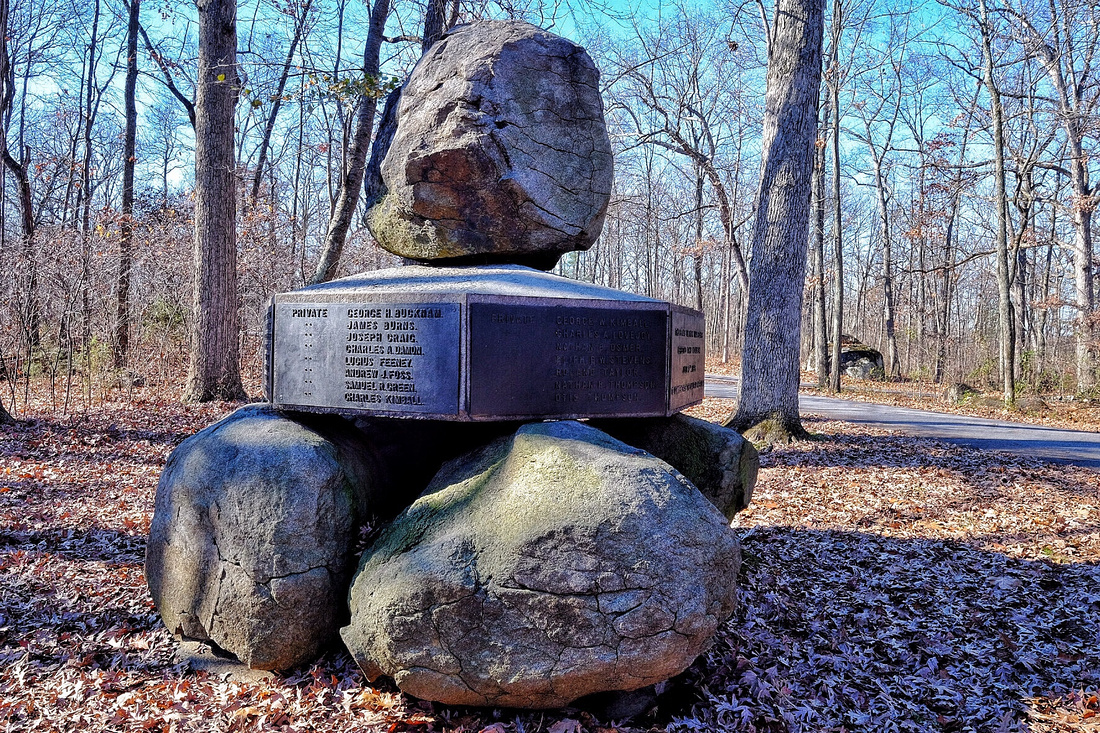 Foreground - The 5th New Hampshire Monument and location where Colonel Cross was shot in the abdomen; Background - Boulder from which a Rebel sniper fired and mortally wounded Colonel Cross
Foreground - The 5th New Hampshire Monument and location where Colonel Cross was shot in the abdomen; Background - Boulder from which a Rebel sniper fired and mortally wounded Colonel Cross
The 5th New Hampshire Monument - Cross Plaque
The 5th New Hampshire Monument - The Honored Dead Plaques
The 5th New Hampshire Monument - Commemoration Plaque
The 5th New Hampshire Monument - Regiment Plaque
1886 View of 5th NH Monument - Note absence of bronze plaques later installed in 1901 (courtesy of Gettysburg Daily)
Monument Dedication in 1886 - Charles Hapgood, Commander of the 5th at Gettysburg is on the far left (Courtesy Mike Pride)
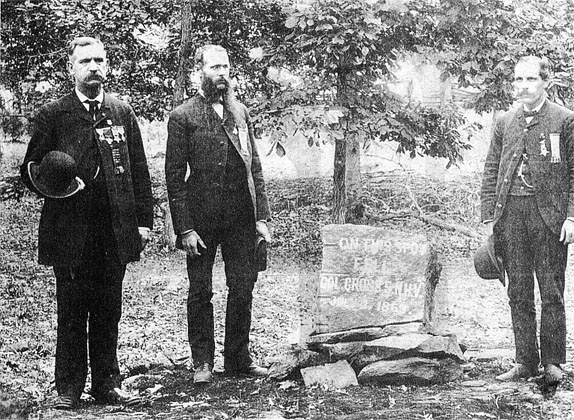 5th NH veterans (L-to-R, Charles Hapgood, Isaac Hammond, Augustus Sanborn) at the original marker where Cross fell - A few yards behind (east) existing monument (courtesy of Gettysburg Daily)
5th NH veterans (L-to-R, Charles Hapgood, Isaac Hammond, Augustus Sanborn) at the original marker where Cross fell - A few yards behind (east) existing monument (courtesy of Gettysburg Daily)
Modern view showing location of original marker relative to the monument. Four notches on stone match above photo
The Omnipresent General Hancock at Cemetery Hill - "Colonel Cross, this day will bring you a star"
Cross's Brigade Battle Line - Modern View
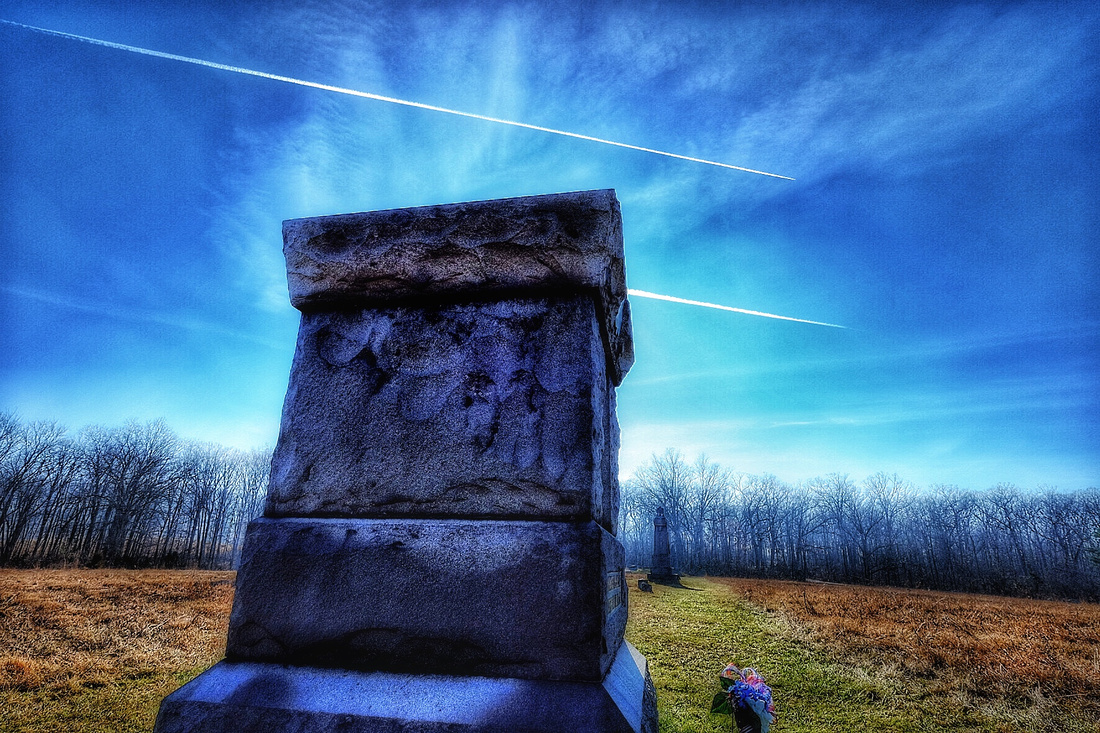 The Gleam of Bayonets - 61st NY Point of View of Cross Brigade Battle Line
The Gleam of Bayonets - 61st NY Point of View of Cross Brigade Battle Line
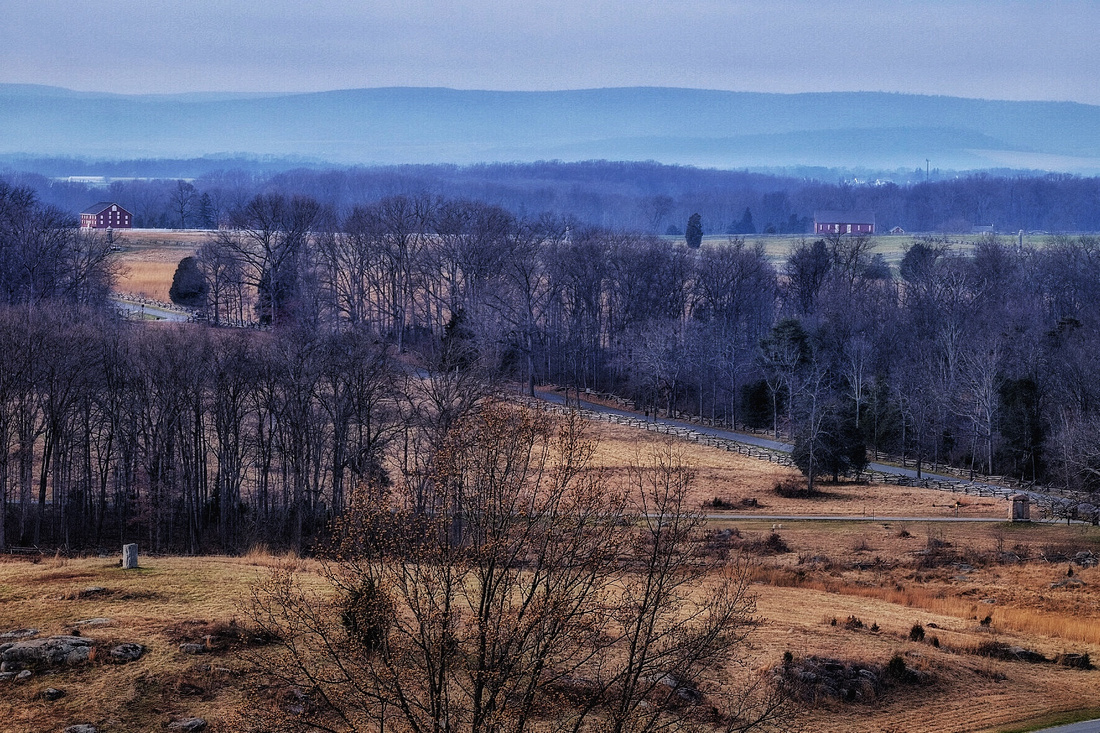 Middle area is the northern part of the Wheatfield. Stony Hill is off view to the left.
Middle area is the northern part of the Wheatfield. Stony Hill is off view to the left.
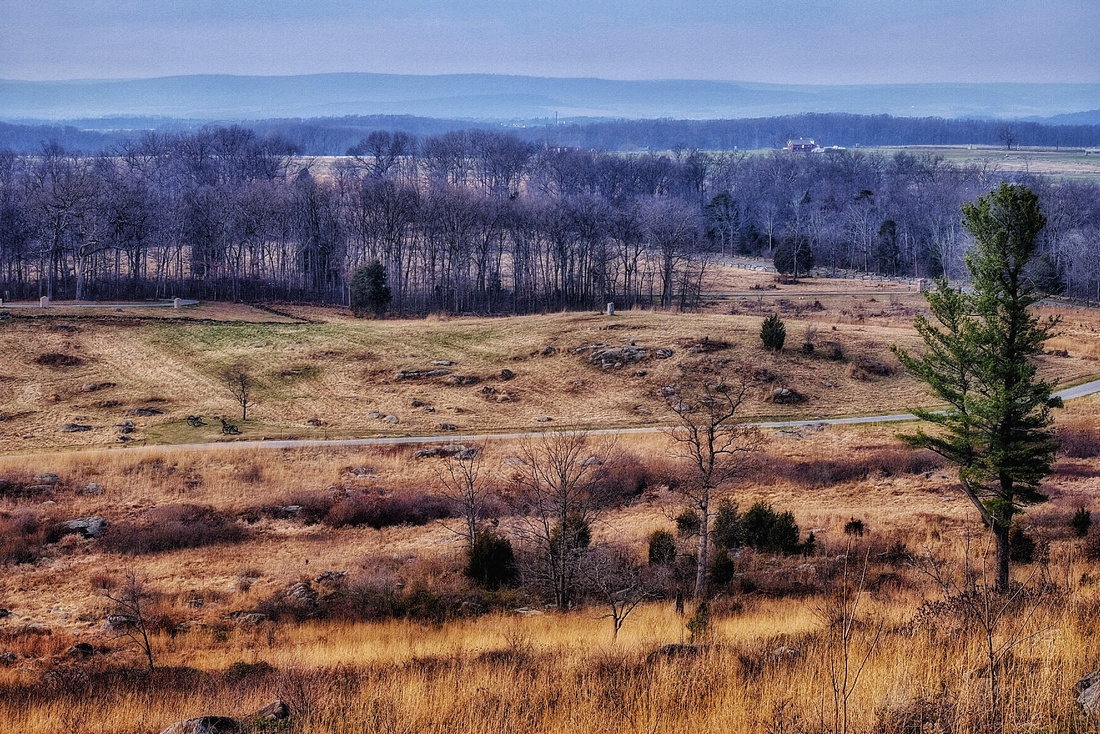 Behind the middle row of trees is most of the Wheatfield. Stony Hill is behind the loop road on the left - 5th NH monument is in the trees at the very edge of frame.
Behind the middle row of trees is most of the Wheatfield. Stony Hill is behind the loop road on the left - 5th NH monument is in the trees at the very edge of frame.
The 5th NH in the Wheatfield Protecting the Left Flank of Caldwell's Division (map courtesy of the NPS)
There are by current count 1,328 monuments/memorials/tablets/markers at Gettysburg National Military Park (GNMP). Of these, the Irish Brigade monument is arguably the most beautiful one at the GNMP. It was erected on the Stony Hill in 1888 to commemorate only the three NY regiments1. The monument consists of a polished granite shaft which top has been carved into a Celtic Cross, the iconic symbol of Ireland. It has a bronze inset of five medallions: the three regimental numbers, New York state seal, and the seal of Ireland. At the base of the shaft lies a life-size bronze sculpture of a Irish Wolf Hound. It is one of only two Gettysburg monuments depicting a dog. The Wolf Hound represents faith, devotion, and loyalty. In Lincoln's Gettysburg address, he refers to the battlefield dead as giving their "last full measure of devotion". Is there any living creature that is more devoted to its master than a dog?
The founder of the brigade, Thomas Meagher, was a steadfast Irish Nationalist. Consequently, most of the brigade's leadership were known fellow Irish revolutionaries. Meagher believed it was important for the Irish-born to fight for the Union. Even with its influence dwindling since 1855, the anti-immigrant policies of the Know-Nothing party were still a powerful political force, with some former party members having infiltrated Lincoln's Republican Party. Meagher promoted military service as a way for Irishmen to overcome the Nativist indoctrination and to demonstrate their loyalty to the nation. In addition, Meagher was convinced that British sympathy lay with the Secessionists, which much evidence suggests to be true.
Why did the Northern Irish fight? This is a complex question with a complex answer. Foremost, one cannot understand the answer unless one has an understanding of mid-nineteenth western European history2. My own opinion is that a display of loyalty on the part of the northern Irish was driven by both the need to gain ethnic acceptance from the majority status quo and their disenchantment with previous European strife in the early and mid-nineteenth century. These immigrants not only wanted to belong to this young nation, but they wanted to settle this division between the North and South once and for all so that their descendants and future immigrants could live in both peace and harmony in a United States. However, there is another angle. In 1861, James McKay Rorty, of the 69th New York regiment, wrote to his father that he enlisted for the sake of his homeland, saying that he hoped “that the military knowledge or skill that I acquire might thereafter be turned to account in the sacred cause of my native land.” Rorty also said he fought for future immigrants, writing that a Southern victory would “close forever the wide portals through which the pilgrims of liberty from every European clime have sought and found it. Why, because at the North the prejudice springing from the hateful and dominant spirit of Puritanism, and at the South, the haughty exclusiveness of an Oligarchy would be equally repulsive and despotic…Our only guarantee is the Constitution, our only safety is the Union.”
In summary, the Irish did not want war, and favored the cause of neither side, North or South. Their cause was primarily driven by their love of their native motherland. As an oppressed minority, they may have had some empathy for the slave only due to their hatred of the South's slaveholding oligarchy, which reminded them of the privileged Protestant landowners that they had fled from in Ireland3. And they resented the Puritanical bigotry of the Northern status quo against their ethnic group. Thus they had no shared interest with either the abolitionists nor the secessionists. But as a refuge for fellow future Irish immigrants, a free, undivided America offered hope, and as both Rorty and Meagher documented, a future for the next fight against the British Empire. Consequently, some will question whether the Irish Brigade's devotion was to the Union, or toward the overthrow of British rule in Ireland (Some of these soldiers were in fact members of the Fenian Brotherhood, an organization committed to securing Ireland's freedom). Some Irish-American soldiers no doubt may have thus seen the Union Army as a necessary evil to another end, and viewed himself as more of an ally of the Army of the Potomac rather than as a member of it. But far more Irish-American volunteers likely wished to preserve the union as an end to itself. Playing on themes of gratitude and obligation, Irish-born recruitment methods stressed to the immigrant that it was the United States that gave the nation-less Irish “liberty, a shelter and a home."4
After the devastating Battle of Fredericksburg in December of 1862, General Meagher requested the government to recruit the brigade back to full strength, to which his request was denied. Five months later, when the brigade sustained further casualties at the Battle of Chancellorsville, Meagher repeated his request to recruit replacements and was denied. In protest he resigned his commission as leader over the Irish Brigade and was replaced by Colonel Patrick Kelly. Prior to the Battle of Gettysburg, the brigade was able to field about 530 men under the Division command of John Caldwell. This brigade number is a foretelling war casualty rate in that it represents about a normal half-strength regiment. Days prior to the battle, a soldier asked a fellow soldier the name of the regiment marching past. The soldier replied, “that’s not a regiment, that’s the Irish Brigade.”
Late afternoon on July 2nd, 1863, day two of the Battle of Gettysburg, General Winfield Scott Hancock, the charismatic field general on day one of the battle, and who had resumed Second Corps leadership, ordered Caldwell's division to relieve Sickles' troops at the Wheatfield. Prior to the orders, Caldwell's troops had been waiting for ten hours at a reserve position behind Cemetery Ridge. The brigade head chaplain was Father Corby, who offered a prayer for the many soon to be troop casualties, prior to their deployment. He reminded the men that the "Catholic church refuses Christian burial to the soldier who turns his back upon the foe or deserts his flag." He then raised his right hand and pronounced the Latin words of general absolution. Per Corby's memoirs, even the cantankerous and profane Second Corps commander exhibited piety: "Even Major-General Hancock removed his hat, and, as far as compatible with this situation, bowed in reverential devotion." Colonel Mulholland of the 116th Pennsylvania wrote, "I do not think there was a man who did not offer up a heartfelt prayer. For some, it was their last; they knelt in their grave clothes." See more about Father Corby's absolution and monument at the GNMP here.
The Wheatfield battle ground covers the Rose family owned 20-acre wheatfield plus an adjacent wooded, rocky knoll, now known as the Stony Hill. The Wheatfield fighting was intense, chaotic, close range, and included hand-to-hand combat. The Irish Brigade fought mostly on the Stony Hill west of the Wheatfield. There were several attacks and counterattacks by thirteen brigades in a 3-hour period of which field control changed hands at least a half dozen times. At about 5:30 p.m., Caldwell's division arrived for the fight and three of his four brigades, under Colonels Kelly (the Irish Brigade), Zook, and Cross5 moved forward. Zook and Kelly drove the Confederates off of Stony Hill while Cross cleared the Wheatfield. Both Zook and Cross were mortally wounded in leading their brigades through these assaults. Described as a whirlpool by some veterans of the conflict, one Union soldier recalled "how the ears of wheat flew in the air all over the field as they were cut off by the enemy's bullets". At one point, the two sides blazed away at each other at less than 30 paces for about ten minutes. Then Colonel Kelly ordered his brigade to charge three South Carolina regiments and swept them off the hill. Later, surrounded by new advancing Rebel troops at the nearby Peach Orchard6, Kelly ordered his five regiments to fall back to Cemetery Ridge. Brooke's Brigade, held in reserve, was ordered by Caldwell to sweep the Rebels clear of the Wheatfield, which they accomplished, but Semmes' Georgia Brigade7 counterattacked and regained possession of the field. US Regular troops and the Pennsylvania Reserves (Bucktails) were called in to relieve Caldwell's Division. Prior to sunset, after more heavy Wheatfield fighting, the Pennsylvania Reserves drove out the Confederates and took control of the eastern stone wall of this hotly contested land of wheat. For the rest of the second day battle, the bloody Wheatfield would remain relatively quiet, but not so for Cemetery Ridge8. A heavy toll was paid by both sides for the back-and-forth trading of field possession. The Confederates had fought four brigades against nine smaller Federal brigades, and of the 20,000 men engaged, there were about 30% casualties. For the Irish Brigade, the Wheatfield Battle cost the brigade 214 casualties out of 530 men9.
The Irish Brigade will be remembered as having made some of the most gallant charges of the Civil War: The Bloody Lane at Antietam, Marye's Heights at Fredericksburg10, and the Wheatfield at Gettysburg. Per a well referenced book by the author William F. Fox, Regimental Losses in the American Civil War, of all Union army brigades, only the 1st Vermont Brigade and the Iron Brigade suffered more combat dead than the Irish Brigade during America's Civil War. Eleven of the brigade's soldiers were awarded the prestigious Medal of Honor.
Note1: Father Corby was present at this dedication.
Note2: Refer to this excellent series, The Immigrants' Civil War
Note3: Although labor competition complicated that viewpoint, see the New York City Draft Riots of 1863
Note4: There were about 40,000 Irish soldiers fighting for the Confederacy, including the famous Major General Patrick Cleburne and his brigades. Significantly fewer Irish-Americans lived in the southern states. The Union’s Irish Brigade was unique in that it was composed of mostly Irish recruits. The Confederacy was not able to consolidate its southern Irish into large military units. The Irish were distributed throughout the South’s regionally raised regiments, where some company-sized units were formed from mainly Irish volunteers. Companies with mostly Irish recruits came from South Carolina, Georgia, Tennessee, Missouri, Alabama, and Louisiana.
There are some who would claim that the Confederate Irish supported the South's cause since they could identify with the desire for self-determination and the right to secede from what was perceived as a repressive government. I am not convinced of this argument at this time. More valid research is required to support such stated claims.
Note5: More to come on the Warrior Edward E. Cross and his Fighting 5th New Hampshire Regiment in my next and second of five blog posts, The Honored Dead at Gettysburg.
Note6: Be sure to watch out for my upcoming third of five blog posts on The Struggle at Gettysburg (The 114 Pennsylvania and Barksdale's Charge through Mr. Sherfy's Peach Orchard).
Note7: Be sure to watch out for my upcoming fifth of five blog posts on The Consecration at Gettysburg (The 116th Pennsylvania and Semmes Brigade at Gettysburg).
Note8: Be sure to watch out for my upcoming fourth of five blog posts on The Bravery at Gettysburg (The Gallant Charge of the 1st Minnesota at Gettysburg).
Note9: For more detail on the Irish Brigade at Gettysburg, see the 12-part series at Gettysburg Daily.
Note10: See below the Don Trioani print, Clear the Way, depicting the famous Irish Brigade charge at Marye's Heights on December 13, 1862.
For some absorbing anecdotes concerning the Army of the Potomac, see Dr. Timothy Orr's blog: Tales from the Army of the Potomac.
My full Gettysburg gallery of photographs can be found at D.W. Orr Gettysburg Gallery.
D W Orr
Environmentalist, Historic Preservationist, Weimaraner Companion, Blogger, and Photographer
Harford County, Maryland
December 5, 2015
Irish Brigade Monument
Irish Brigade Monument - Wolf Hound
Irish Brigade Monument - 63rd, 69th, 88th New York Regiments
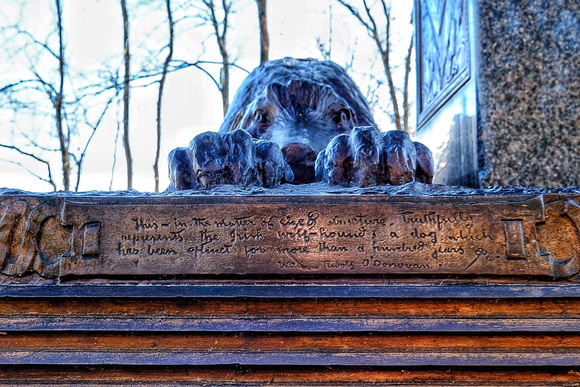 Irish Brigade Monument - Wolf Hound: "This - in the matter of size & structure, truthfully represents the Irish Wolf-hound, a dog which has been extinct for more than a hundred years." - William Rudolf O'Donovan (Sculptor)
Irish Brigade Monument - Wolf Hound: "This - in the matter of size & structure, truthfully represents the Irish Wolf-hound, a dog which has been extinct for more than a hundred years." - William Rudolf O'Donovan (Sculptor)
Irish Brigade Monument - Celtic Cross
Irish Brigade Monument - Back View
Irish Brigade Monument - The Wheatfield is in the left background
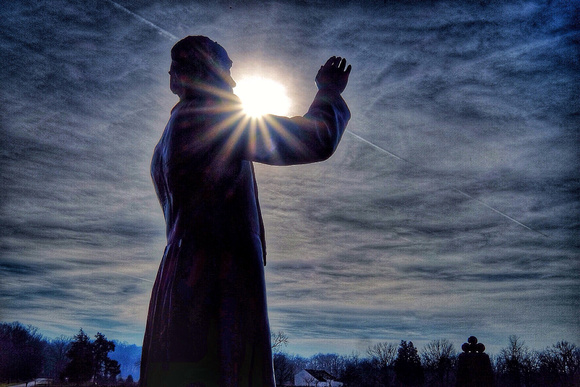 Father Corby Monument at Gettysburg
Father Corby Monument at Gettysburg
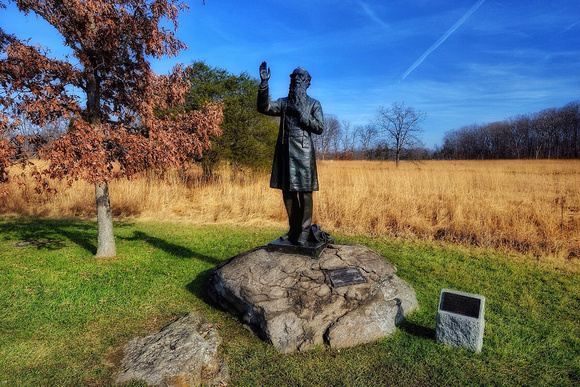 Father Corby Monument at Gettysburg
Father Corby Monument at Gettysburg
Irish Brigade charges the stone wall at Marye's Heights - Battle of Fredericksburg (Clear the Way by Don Trioani courtesy of Gettysburg Daily)
Caldwell's Division Advances into The Wheatfield (Map courtesy of NPS)
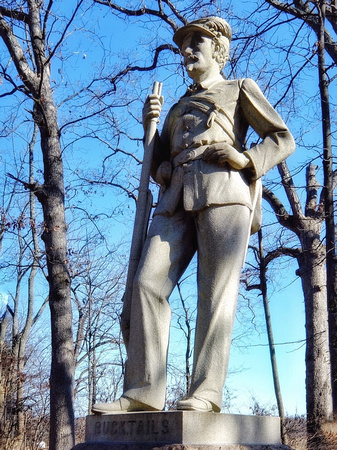 42nd Pennsylvania Infantry Monument on the Stony Hill (13th Pennsylvania Reserves or "The Bucktails") - Relieved Caldwell in The Wheatfield
42nd Pennsylvania Infantry Monument on the Stony Hill (13th Pennsylvania Reserves or "The Bucktails") - Relieved Caldwell in The Wheatfield
I have recently returned from a journey to that most famous of all American Civil War battlefields. Reflecting on Lincoln's words from that address, I directed my photography on those monuments and regions of the battlefield that best exemplify the true meaning behind the key terms and phrases from his address. Over the next several months I will be constructing a five part blog essay on Lincoln's eloquence that have been captured in the preservation of the Gettysburg National Military Park. My focus will be on day two of the three day battle. Pickett's Charge on day three gets most of the attention from park visitors, for it perhaps being the most easily understood tactically. But it was day two on which the Union tide of battle was in most jeopardy. It was none other than the well respected Confederate general James Longstreet who stated that mid-day two was "the best three hours of fighting ever done by any troops on any battlefield". The consequence was that many thousands of men from both sides lost their lives and were seriously wounded as night fell on July 2nd, 1863.
My upcoming serial blog will evaluate the following concepts/terms from Lincoln's address: The Devotion, The Honored Dead, The Bravery, The Struggle, and The Consecration. For over 30 years, I have researched and studied American Civil War history and visited numerous Eastern USA battlefields. My great grandfather served three years for the Union as a private and later as a Sergeant in the 4th Maryland Infantry. He experienced the hard fighting during Grant's Overland Campaign of 1864, which yielded over 50,000 casualties for that summer. I have stood the same ground on where he fought during the Battle of the Wilderness. That was a memorable and moving moment. I have also felt his presence as I walked the same path that he marched across in front of the Bloody Angle at the Battle of Spotsylvania.
I hope that you will stay tuned to my upcoming thoughts on this epic nineteenth century battle in the little hamlet of Gettysburg. The town was never the same afterward and neither was America which reemerged with "a new birth of freedom".
See my image gallery at http://dworr.zenfolio.com/gettysburg
D W Orr
Environmentalist, Historic Preservationist, and Photographer
Harford County, Maryland
November 19, 2015
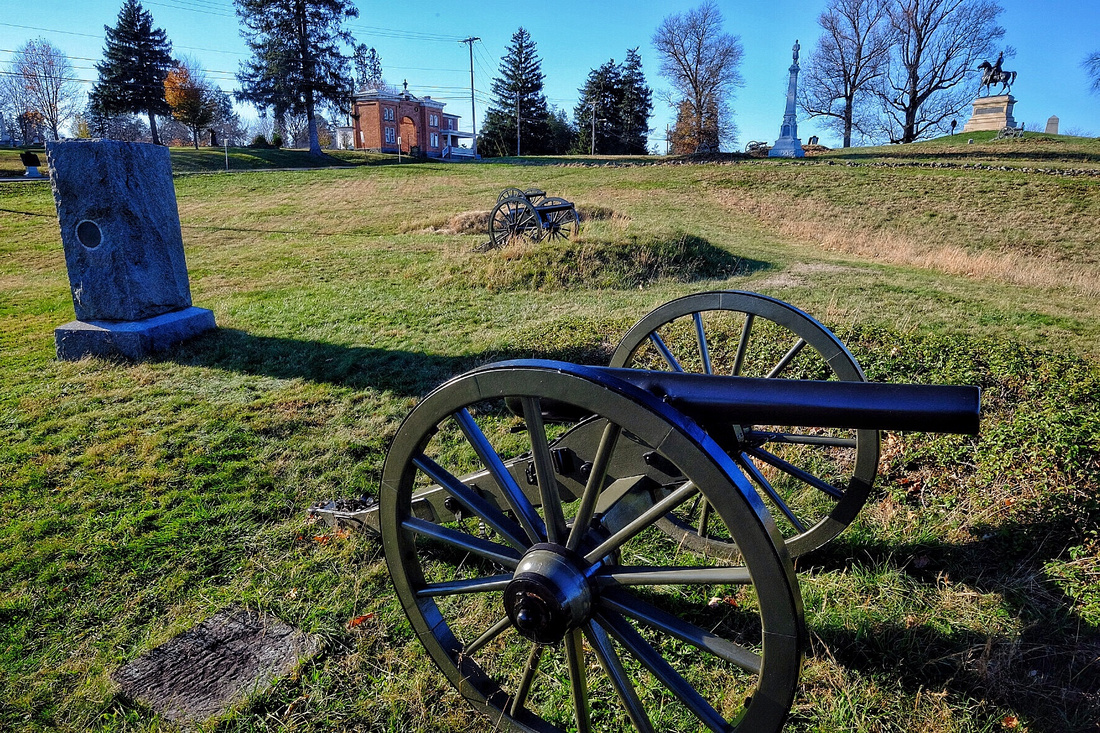 Cemetery Hill - In the left middle background is the Cemetery Gatehouse whose grounds upon which Lincoln gave his famous address.
Cemetery Hill - In the left middle background is the Cemetery Gatehouse whose grounds upon which Lincoln gave his famous address.
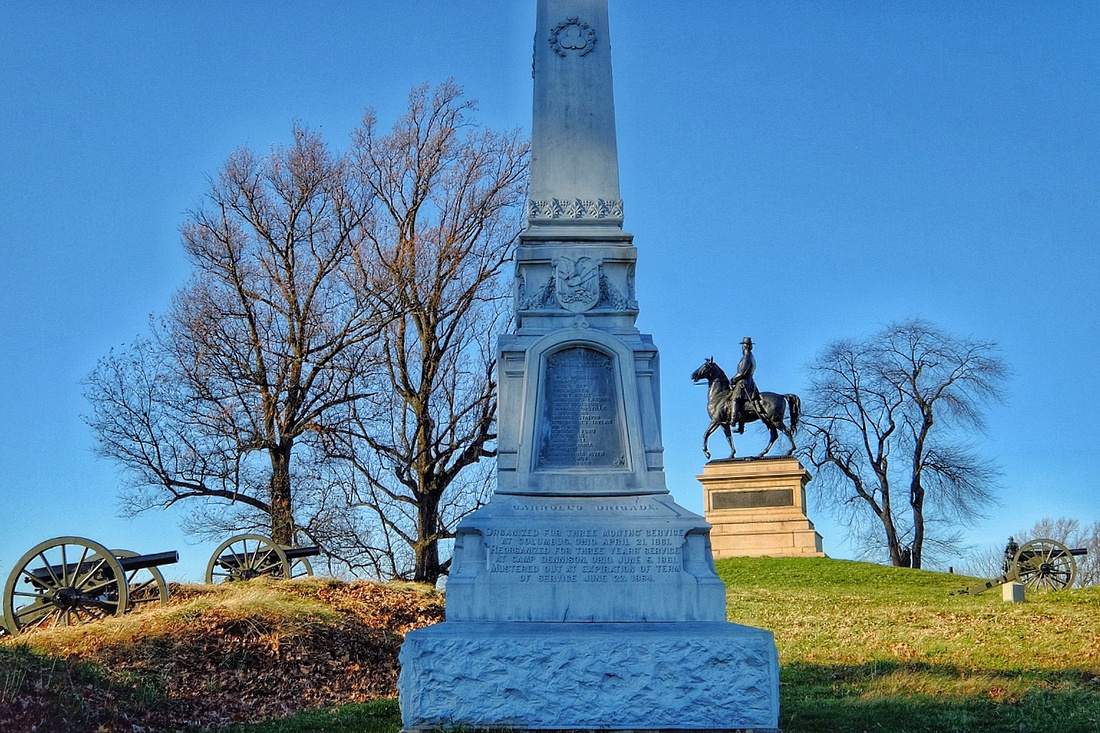 Cemetery Hill - Foreground is the 4th Ohio Infantry Monument; Background is the General Hancock Monument. Hancock figures predominately in my forthcoming Gettysburg Essay Blog.
Cemetery Hill - Foreground is the 4th Ohio Infantry Monument; Background is the General Hancock Monument. Hancock figures predominately in my forthcoming Gettysburg Essay Blog.
In the Folly blog, I encountered and photographed the "Mushroom Tree". A new icon now emerges from the Bread and Cheese: The Whale Rock. Appearing like a Sperm Whale breeching from the deep sea, a boulder the size of a young whale has planted itself in the middle of the B&C. During this journey, I felt challenged on how to adequately capture the beautiful fall foliage of the deciduous trees and the slow moving water of the creek bed. I wanted to capture the serene beauty of this deep woodland that is seldom visited by humans. So I experimented with different photographic techniques and settled on a new photographic process to capture the mood and colorization of this eastern woodland region. I am pleased with the results and I hope you will be too. See the tail end images in http://dworr.zenfolio.com/p359124334. I am dedicating these eighty some images to my late mother-in-law, Regina Schaub, who just recently passed away at the age of 97 years. She was a Grand Lady, just like her daughter is.
D W Orr
Environmentalist, Historic Preservationist, and Photographer
Harford County, Maryland
October 29, 2015
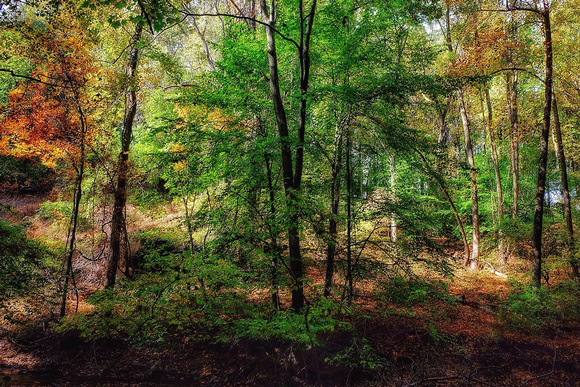 The Banks of the Bread and Cheese Branch
The Banks of the Bread and Cheese Branch
Note that there are only a handful of obvious Milky Way galaxy stars (bright points of light with cross hair lines called diffraction spikes) in this image. This was with deliberate intention by the cosmologists to peer into the darkest zones of the universe, unobstructed by the clutter of the Milky Way. Many of the galaxies in this picture are over 12.7 billion light years away from our planet. Our solar system had not yet formed when the light we see now had left most of these galaxies. And this image only represents one narrow, deep slice of the cosmos located in the constellation Fornax. The patch of sky in which these galaxies reside in the UDF photo is just one-tenth the diameter of the full Moon as seen from the ground. There are actually about 500 faint red points in the UDF of young, distant galaxies that were formed less than one billion years after the Big Bang. These dwarf galaxies, ablaze with star birth, appear red due to the galaxies’ tremendous distance from Earth. The blue light from their young stars was shifted to red light due to the expansion of space. Twenty-eight of those 500 are isolated in the second UDF image shown below.
During Hubble's 2009 servicing mission, a new infrared instrument was installed, enhancing its capability for even deeper space photography. An image (not shown), dubbed the eXtreme Deep Field (XDF), was assembled in 2012 by combining 10 years of Hubble photographs taken of a smaller patch of sky embedded in the center of the original UDF field of view. An additional 5,500 galaxies were located beyond what UDF indicated. The XDF field of view relative to the size of the moon is shown in the photo below.
Whereas the UDF goes back to about 12.7 billion years, the XDF image reveals galaxies that span back as far as 13.2 billion years in time. For a universe that is 13.7 billion years old, the depth of field for the XDF view is to the outer fringes of the universe. For the first time, we can now view the actual forms and shapes of galaxies when they were young and impetuous. The XDF image is like a time tunnel into the past with the light from colliding galaxies just now arriving here on Earth. Yes, that's right. You are viewing galaxies and stars as they existed and looked eons ago. One of the galaxies on the XDF image existed just 450 million years after the Big Bang's creation of the universe.
But Wait! There's more! NASA/ESA already have plans to penetrate deeper into space. After its launch in 2018, the James Webb Space Telescope will be aimed at the XDF to locate even fainter galaxies, a couple of hundred million years old after Big Bang. See the photo below, Hubble Probes the Early Universe. This will takes us back into a time shortly after the Big Bang, when the first stars and nascent galaxies were formed to finally light up and reheat the dark age period of the cold, dim universe's evolution. This reheating period evidently took place over a few hundred million years. Refer to the photo below, Age of the Universe.
The area of the sky observed in the UDF has been compared to the view you would see through an eight foot long soda straw. So imagine for a moment that you possess super visionary power, one with extreme magnification and light sensitivity levels. You peer through this straw and count over 15,000 galaxies, each one containing over tens to hundreds of billions of stars, planets, gas clouds, and space dust. Now move the straw the distance of one straw diameter and count the next 15,000 celestial wonders. Now repeat your super power skills 30 million more times until you have completed your sweep of the sky. You, with your super-vision powers, just viewed over 450 billion galaxies of our universe.
A deeper cut of pizza slice, deeper than XDF is awaiting our viewing in three years. Unfolding before our eyes, like a time machine, we will witness the evolution of the universe. Think about it. And to blow your minds even further, the universe is expanding, in some cases, faster than the speed of light, ultimately to a distance of 47 billion light years. From the immortal words of Winston in the movie, Ghostbusters, "That's a big Twinkie".
The most important photographic image ever, indeed.
For more incredible deep space images, see:
http://www.spacetelescope.org
D W Orr
Environmentalist, Historic Preservationist, and Photographer
Harford County, Maryland
October 14, 2015
 Ultra Deep Field Photo of Cosmos, courtesy of NASA/ESA
Ultra Deep Field Photo of Cosmos, courtesy of NASA/ESA
Ultra Deep Field Photo of Cosmos with 28 Isolated Young Galaxies, courtesy of NASA/ESA
XDF Field of View Relative to the Size of the Moon, courtesy of NASA/ESA
Hubble Space Telescope Penetrates Deep Space, courtesy of NASA/ESA
 Age of the Universe, courtesy of NASA/ESA
Age of the Universe, courtesy of NASA/ESA
Note: For the image directly above, the reference HDF = My Blog's UDF, and HUDF = XDF. Unfortunately, NASA has interchanged their language over time.
I have always believed that the most compelling images are those in which the composition provides context. A closeup photo of a wild animal is usually uninspiring. But an image of wildlife in the context of its natural environment can invoke curiosity and wonder. The same holds true for celestial bodies. To avoid the equivalent of a tired cliche, I realized that an image of an early evening moonlit ocean in combination with a supermoon would provide a better chance for compositional success than just an isolated shot of a lunar eclipse. This would not only be a more interesting contextual image, but the narrow dynamic range of light would yield a pleasing light exposure across the entire frame of the photograph.
But the coup-de-grace for that evening would be the remnants of a near tropical storm depression that was churning large oceanic waves off of most of the USA east coast. This powerful storm hovered over the coast for many days, being stalled by a dominant high pressure system up north off the New England coastline. High winds were additionally fed by hurricane Joaquin, further east in the Atlantic ocean. How epic a storm was all this? Parts of the state of South Carolina suffered through two feet of rainfall in several days, causing catastrophic flooding conditions, and purportedly the most continual rainfall in that state since a thousand years.
The winning compositional formula in this dire situation was Large Waves + Supermoon + Early Moonrise (7:00pm, EST) = Photogenic Opportunity. I took advantage of this rare natural phenomenon through systematic preparation and by snapping off many images to capture the unusual wave action, cloud cover, moon phasing, and dramatic lighting conditions. I believe I was successful.
Ten oceanic, moonlit images are available for your review at the tail end of my Sky Gallery, one of which was taken during the early phase of the lunar eclipse at 9:12pm, EST, September 27th. I have also included an image taken on the following evening, of the supermoon juxtapositioned with the brightly lit beacon from the nearby Currituck lighthouse. Enjoy.
See my image gallery at http://dworr.zenfolio.com/sky
D W Orr
Environmentalist, Historic Preservationist, and Photographer
Harford County, Maryland
October 7, 2015
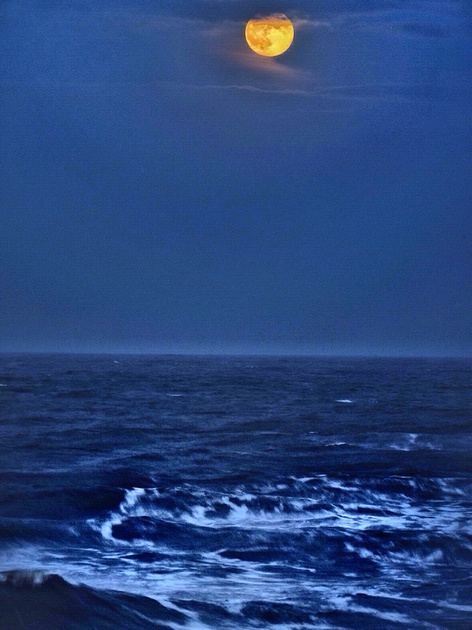 Supermoon at 7:07 pm, September 27, 2015, Corolla, NC
Supermoon at 7:07 pm, September 27, 2015, Corolla, NC
 Supermoon at 7:19 pm, September 27, 2015, Corolla, NC
Supermoon at 7:19 pm, September 27, 2015, Corolla, NC
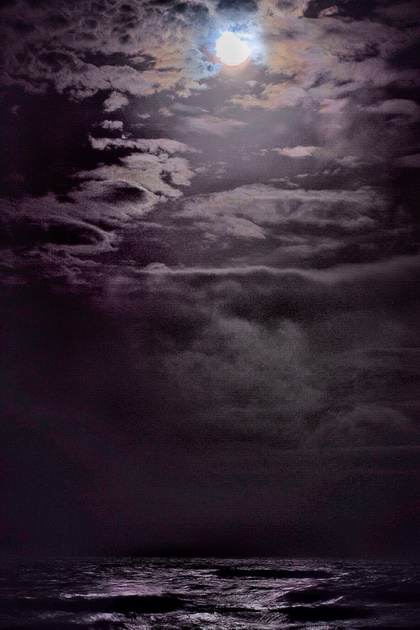 Supermoon at 8:24 pm, September 27, 2015, Corolla, NC
Supermoon at 8:24 pm, September 27, 2015, Corolla, NC
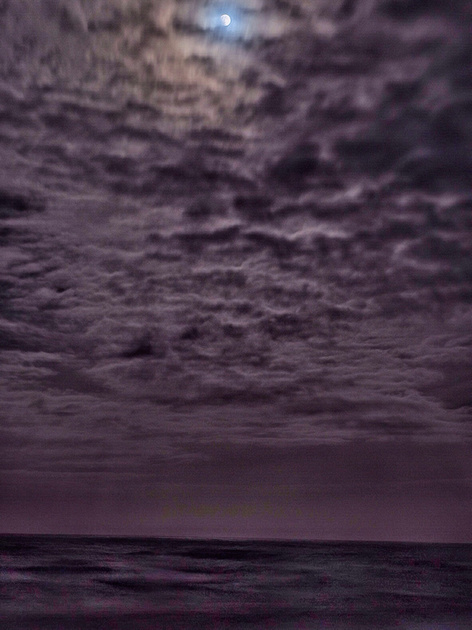 Supermoon at 9:12 pm, September 27, 2015, Corolla, NC - Partial Eclipse
Supermoon at 9:12 pm, September 27, 2015, Corolla, NC - Partial Eclipse
I have had the privilege to live with Weimaraners for most of my life, since the age of twelve. That is when I became a devotee of the breed. I have lived with seven different Weims (all females) in my 68 years. Each has had a unique personality but each also shares many of the same characteristic behaviors. You may know them already - circle twice before lying down, rub shoulder on any discovered odorous substance, lie their 70+ pounds of dog in your lap, jump on you on your arrival home, don't dare trim their nails, very stubborn, very observant, yawning (gosh, this repetitive trick request is boring), very expressive of their feelings, lick your face, etc. My youngest Weim is very engaging with all family members - more so than any other that I can recall. My senior Weim is now over thirteen and half years old. God bless her. What a sweetie. Don't be late one minute in serving her dinner though, or you will be badgered into final submission.
Weims will bring out the mother instinct in any woman. They are so expressive of their feelings that you just naturally want to caress them. They were originally bred to sleep side by side with their master and to share your domicile. As the master of the household, to do otherwise is tantamount to sin. They want to be with you always and share your ups and downs. They suffer from separation anxiety. Be careful leaving them alone. They can totally destroy your home. But do not berate them afterwards, they are highly sensitive to scolding. You do not want to break their spirit. That is what makes them so special. Lose that from your Weim, and it will break your heart. On your deathbed, you will not remember that destroyed couch. But you will remember that devoted, spirited Weim.
I suppose you could iterate much of what I have said above about any canine breed. For what do I know? I have only been a companion to one other dog breed - an English Springer Spaniel. But some things you just know, and that is the Weimaraner is a special kind of dog. In their presence, you do not feel that you are with just a dog. Known as the velcro dog, they follow you everywhere. I share a small bathroom with junior many times. No, they are not human-like as once touted in the 1950's. In fact, they are somewhat schizophrentic. Indoors, yeah, maybe somewhat human-like. But outdoors, the hunter instinct kicks in, and watch out all you varmints and critters.
The Weimaraner: Full of devotion, love, energy, zest for life, and intelligence. They are athletic, engaging, and wear their heart and soul on their face. Watch their ears - they tell you everything about how they feel at the moment. If you had the time, I could tell you so many stories about each one of my Weims that would amuse you to no end. But I will not linger on how much that they have enriched my life. They have been my companions for over 55 years. They are special.
See my image gallery at http://dworr.zenfolio.com/weimaraner.
Update, June 21, 2016: "Maddie, Sweet and Loyal Companion"
Update, Aug. 24, 2019: "What I Will Miss" (Junior)
D W Orr
Environmentalist, Historic Preservationist, Photographer, and Weimaraner Companion
Harford County, Maryland
September 19, 2015
Certainly the most memorable moment of our recent excursion was the dramatic and sudden entryway from the woodland into the Upper Glen of Robert H. Treman Park, with its tunnel view toward a beautiful stone bridge archway. Carving its way down through the glen corridor is the powerful Enfield Creek, as it meanders onward to the impressive Lucifer Falls. As we headed downward, we exited the corridor into a wide amphitheater with an eye catching mini-falls, before the steep decline down toward Lucifer Falls. And oh my, what a decline! You become one with the falls as the trail immerses you only yards away from the 115' vertical drop of Lucifer Falls.
We trekked the ever popular Watkins Glen Park, with its narrow, winding gorge of 19 waterfalls, including the impressive Cavern Cascade, Rainbow Falls, Triple Cascade, Pluto Falls, and Central Cascade. Although lesser known, we followed the gorge trail along Buttermilk Falls Park, which has many small, secluded falls emptying into colorful pools of water. While in town, the roaring and partially sunlit Ithaca Falls greeted us with a fortuitous photogenic moment. The towering Taughannock Falls impressed us once again with its chiseled sandstone and shale side walls and the steep 215' waterfall drop (tallest single-drop waterfall east of the Rocky Mountains). Finally a short, casual, level walk took us through tranquil Sapsucker Woods, a Cornell wildlife bird sanctuary of 230 acres, with a spacious pond and expansive wetlands (images at the end of the "Trees" gallery), providing a stark contrast to the steep gorge trekking experienced earlier.
Three decades may have passed, but the peacefulness still lingers along the shores of Cayuga Lake, as evidenced by the witnessing of the Kayaking German Shepherd (see below).
I invite you to view all the images from our return visit to the Finger Lakes region at my photo gallery titled, "Gorges and Waterfalls". I can assure you that it will be well worth your time. Enjoy.
See my image gallery at http://dworr.zenfolio.com/p862779778
D W Orr
Environmentalist, Historic Preservationist, and Photographer
Harford County, Maryland
September 6, 2015
 Cindy & Doug at Cayuga Lake
Cindy & Doug at Cayuga Lake
]]>
Notes:
1) DSLR - Digital Single Lens Reflex
2) mp - mega pixels; the resolution of digital cameras is measured in mega (million) pixels; images are made up of these tiny picture elements.
3) A cropped sensor is smaller than what use to be known as 35mm sized film, now referred to as a "full frame sensor". A full frame is about 2.5 times larger in area than an APSC, cropped sensor. See Sensor Size Comparison below for more detail.

Relative Sensor Size Comparison (dimensions in mm) with Crop Factor Conversions.
Later, advanced mirrorless cameras appeared around 2009. Olympus introduced their well received EP1 model and, along with Panasonic, led the way with their micro 4/3 sensors. These two manufacturers demonstrated that reduced camera system size and weight could be achieved with the removal of the mirror mechanism and pentaprism, found in DSLR cameras, while retaining good image quality at low light levels.
Fujifilm went even further in 2010 and achieved excellent image quality combined with small body size, tactile controls, classic design, and superb lenses using a slightly larger, cropped APSC, 12mp sensor. They listened to their customers and released free, recurring, camera body and lens firmware updates, employing the practice of Kaizen, continuous product improvement.
After using digital camera technology now for at least the past 11 years, I can fairly say that I sure wish this had been available 40 years ago when I discovered my passion for creating images. Darkroom processing with the handling of nasty chemicals has now been replaced by the digital darkroom on a computer or tablet. Days of waiting for film and print processing has been replaced with instantaneous results providing real-time feedback on what you did wrong, or sometimes, what you did right.
I am what is known today in photographic forum parlance as a dedicated Fujifilm "fanboy". I now use a rangefinder body style camera from Fujifilm, the X-E2, with three different zoom lenses that cover focal lengths ranging from extreme wide angle to telephoto. The sensor is a 16mp, cropped APSC format. See below.

My Camera: Fujifilm X-E2, 18-55mm lens. Outfitted with an original Fujifilm handgrip, Mr. Tay soft release shutter button, Lensmate thumb rest, and a Gordy's leather wrist strap.
At this time, I do not shoot raw image files that require more extensive "developing" time and the resultant desktop computer processing. I shoot exclusively high resolution "jpg" files with post processing done on a tablet using a device app called Snapseed. This post process methodology gets the job done just right for me. It allows for fine tuning of images along with creative control. I find that I enjoy working on a tablet much more than at a desktop computer.
D W Orr
Environmentalist, Historic Preservationist, and Photographer
Harford County, Maryland
August 19, 2015
But all was not lost! That earlier evening of partly cloudy coverage did avail itself for an interesting photogenic opportunity. The upper atmosphere of a black starry night juxtaposition against a lower atmosphere of dimly lit, drifting clouds, framed by a horizon of tall hardwoods was just the right compositional arrangement for a pleasing image. To illustrate this, of the several test shots taken, I have included two that are shown below. The first image is perhaps the more satisfying of the two. It reveals a dark sky peppered with a myriad of stars, orange glowing wispy clouds, barely detailed tree tops, and the passing of two streaking aircraft, wing lights blinking.
But here is the revelation. The second image, similar in composition, has one solid bold streak of light across the lower horizon. It is not an aircraft - the streak does not indicate intermittent blinking. Could it be that I fortuitously captured a meteor streak during my setup of test shooting? Oh, hallelujah! But wait, this is not a characteristic meteor streak. So what is it? Well I will cut the suspense and get to the conclusion. With the help of some ingenious tablet device apps, and good detective work by yours truly days later, that UFO is none other than the International Space Station! That little bugger station completes 15.7 orbits during a twenty-four hour period and lasts for the most, ten minutes above the horizon, night or day. So there you have it. No meteor streaks. Just aircraft and ISS image streaks captured on a partly cloudy, starry night. I think the "test" images are more aesthetically pleasing than whatever I may have captured with a meteor on a cloudless backdrop. You never know what you may uncover .......
D W Orr
Environmentalist, Historic Preservationist, and Photographer
Harford County, Maryland
August 15, 2015
Two Aircraft at Night (8/12/15, 9:59pm) - Exposure Info: FL18mm, 20 secs, f2.8, ISO 800
International Space Station at Night (8/12/15, 10:09pm) - Exposure Info: FL18mm, 20 secs, f2.8, ISO 400
Now for some very abbreviated history and background of Corolla, NC. Native Americans from the mainland used the northern area of the barrier island as their hunting and fishing grounds. They gave it the moniker Currituck, meaning "land of the wild goose". Europeans settled into the area during the 17th century. On the first of December, 1875, the beacon from the red-bricked tower known as the Currituck Beach Lighthouse made its debut and filled the night skies of Corolla. By 1890, some 200 self-reliant people lived in the Corolla village. It was in the roaring 1920's that wealthy industrialist Edward Knight and his wife Marie-Louise had an expansive home (known later in 1940 and now as the Whalehead Club) built on the man-made island on the sound side near Corolla Village. During that first year of construction of the 5-chimney, sunshine-yellow home, the couple invited wealthy friends from the Northeast for sumptuous evening dinner parties followed by a morning of waterfowl hunting. Visions of The Great Gatsby abound. As an indication of the horn of plenty, by the end of that first season, the Knights and their guests had bagged 751 waterfowl. This level of waterfowl hunting continued at the estate for at least the next nine years until Mr. Knight's health decline in 1934 and eventual demise in 1936. In the 1940s, the village population had swelled to almost one thousand year-round residents. After the war, the population dwindled to only three families during the 1950's (when electric power first became available to the village commoners - the Knights had their private generator) and peaked to fifteen people as late as the 1970's! Since then, the village and the club have been faithfully and wonderfully restored, vacation homes built, and infrastructure developed. So where does that bring us today and was it worth the trip?
Well first off, let me personally attest that the restored village, Knight home, and Currituck Beach lighthouse are very serene, quaint, authentic, and photogenic. The Corolla beaches are pristine, well maintained, and void of crowds in the early fall. Our canine companions are welcomed at many rental properties and on the beach. There very well might not be any beach area in the world quite like Corolla with its historic village, lighthouse, Art Nouveau style mansion, estuarine nature preserve, and nearby wild horse refuge. Not much to complain about here. So I won't. Yes, from the air, I am sure that the northern OBX looks way overdeveloped. But relative to other eastern USA beach resorts, it feels on the ground to be just right. Although, the loss of the blackened sky is most regrettable. But I am certain that more than just a gaggle of privileged guest hunters at the Knight estate decimated the waterfowl along the Atlantic Flyway. Hopefully (there's that word again), lesson learned.
See OBX image gallery at http://dworr.zenfolio.com/corolla
D W Orr
Environmentalist, Historic Preservationist, and Photographer
Harford County, Maryland
August 12, 2015 (night of the Perseid Meteor Shower)
Currituck Lighthouse and Whalehead Club
Knight Mansion (The Whalehead Club)
Whalehead Marshland
 Lighthouse, Boathouse, Mansion
Lighthouse, Boathouse, Mansion
]]>
This virtually untouched and seldom visited woodland will not remain so for much longer. Thirteen acres of this watershed has been acquired by a developer and five expensive homes are planned to be built on 1-2 acre lots. Water wells have already been drilled for the home sites. For some reason there has been a delay, and no further progress has been made at this time. This has offered me the opportunity to capture more images of this woodland before it is completely lost to posterity. Such is the result of the greedy county officials' motive to capture more tax revenue by rezoning the area for developmental use two years ago. I personally made my wildlife impact statement to the county commissioners at that time when citizens were invited to speak at a meeting about their concerns on going forward with the planned development.
At this point, nothing further can be done by me to stop this "progress". Over the past 40 years, I have been an observer of this loss of natural resources for development at other domiciles when we lived in both Pennsylvania and New York state. The wheels of natural resource exploitation just keeps churning along. Let us hope and pray that some day elected leaders at the local, state, and federal level will see the folly of their decisions that destroy the natural beauty of our God given ecosystems and that they have the backbone to take the necessary action to stop it from continuing. Meanwhile, I will continue to explore this woodland for new scenes to make photographic images from. I still need to reveal this natural beauty during the fall and winter seasons. Long live the mushroom tree!
See my Woodland image gallery at http://dworr.zenfolio.com/p359124334
D W Orr
Environmentalist, Historic Preservationist, and Photographer
Harford County, Maryland
July 23, 2015
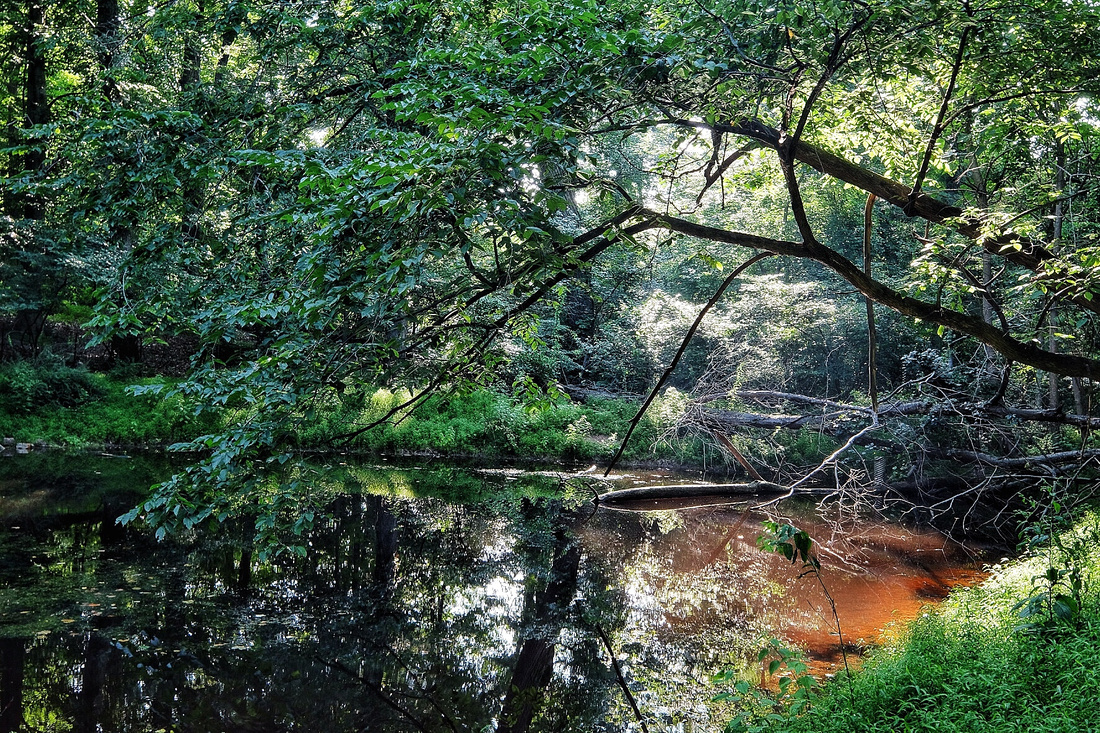
The Woodland Pond


